
Table of Content
Summary of Content
Introduction
- Differences from 5E..................................................................3
- Spellcasting Classes..................................................................3
- Role of the DM............................................................................3
- Leveling Guide............................................................................3
Character Creation
CHAPTER 1: HOUSES............................................................4
Hogwarts Houses......................................................................4 Beauxbatons...................................................................................8 Durmstrang.....................................................................................9 Ilvermorny Houses.........................................................................10
CHAPTER 2: CASTING TYPES...........................................................14
Base Sorcerer Features...........................................................15 The Willpower Caster..................................................................16 The Technique Caster..................................................................18 The Intellect Caster......................................................................20
CHAPTER 3: MAGIC SCHOOLS
Charms........................................................................................22 Jinxes, Hexes, and Curses...........................................................23 Transfiguration..............................................................................24 Healing............................................................................................27 Divination.......................................................................................28 Magizoology...................................................................................30
CHAPTER 4: WANDS
Wands..........................................................................................32 Backgrounds..................................................................................33
CHAPTER 5: Wizarding EQUIPMENT
Wealth..........................................................................................44 Clothes.............................................................................................44 Gear..................................................................................................45 Familiars..........................................................................................54
CHAPTER 6: FEATS
Innate feats..................................................................................58 Basic Feats......................................................................................59
CHAPTER 7: WIZARDING SKILLS
New Skills...........................................................................................61
CHAPTER 8: Wizarding Alignment
Good Vs Dark................................................................................62
Dark Magic Corruption................................................................................63
CHAPTER 9: Spells
Spellcasting................................................................................65
Unique Spells................................................................................67
Spell Conversion................................................................................69
Spell List................................................................................71
Spell Descriptions................................................................................73
APPENDIX
Appendix A: Potion Making..................................................95
Potion Recipes................................................................................97
Appendix B: Patronus Table.....................................................99
Appendix C: Chocolate.....................................................99
Credits - Created by FR0D0FR4GGINS in reference of u/Murphen44 W.W
Version 1.0, published on 94/24/2022
Excerpts from
- Writings by J.K. Rowling
- Sorting Hat Chats
- Harry Potter Fandom Wiki
- Bloomsbury Harry Potter Glossary
- Aughts / u/aughts for wand backgrounds
- Blake / u/Rain-Junkie for dragon stat blocks
- CaelReader / u/CaelReader for Houses as Races
- Carric#4730 for animagus forms
- DCixen / u/tharian83 for Ilvermorny Houses
- Entrench / u/devikyn for Adaptive Ranger's beast companion rules
- Jared Ondricek / u/flamableconcrete for image watercolor stains
- Jeff Venancio / u/Hageshii01 for apparition, expecto patronum and more spells
- Matt Mercer for Corruption Rules (Dark Magic)
Introduction:
Preface:
Dungeons and Dragons has captivated the minds of thousands of its players worldwide by transporting us into these created made up worlds with its own lore, creatures, races, and more. This will be no exception and I hope you find this PHB as a useful tool for understanding and playing in the realm of the Harry Potter Universe. Within this book you will find many similar elements that you will be used to as a Dungeons and Dragons player including Races, Classes, Monsters, and more. We will go in depths into spells, potion making, living within the world. This adventure begins a few years (approximately 5) after the Second Wizarding War.
Differences from 5E:
You will find that while the main rules and aspects of the game remain the same, some aspects have changed including the Race and Class system along with some spells. No races, classes, backgrounds, feats, or equipment are compatible (unless specifically noted, like a handful of feats). Character creation remains unchanged, so you need only progress through the W.I.Z.A.R.D.S Rulebook sequentially, just like you would with the PHB. Below is a table that converts the 5e terminology into W.I.Z.A.R.D.S terminology.
| 5E | W.I.Z.A.R.D.S. |
|---|---|
| Race | House |
| Class | Casting Style |
| Subclass | School of Magic |
| Background | Wand Type or Background |
Besides the changes listed above, there have been some other modifications to skills to better represent skills found within the wizarding world. The skill conversion table which will be found later in this book better represents which of the usual 5E skills are replaced and how they will fit within your world. Please be sure to read over them carefully to better understand and comprehend what the skills are and how to use them. Most Importantly, you will no longer be using spells found within the PHB for Dungeons and Dragons 5E.
Spellcasting Classes:
For character classes, you'll see three different casting styles. Although these represent three different classes, all three are built on the chassis of the 5e Sorcerer. Additionally, because they're all the same class at their core, they all have the same spell list. In W.I.Z.A.R.D.S., everyone has access to the same spells (with some clear exceptions).
Role of the DM:
In this style, the Dungeon Master or DM will be referred to HM, HM stands for Headmaster or Headmistress, That abbreviation is used throughout the document to refer to this person, whereas the term "headmaster" will mean the head professor of Hogwarts or whatever school you decide to role play in.
Leveling Guide:
A character’s early levels can be associated with the magical
abilities acquired through different years of schooling. Levels 1-2
correspond to average first year students, just being
introduced to schools of magic. Level 3 is second year and
Level 4 is third year, and at this point, they have learned to
exercise some control over their magic. The threats they face
are relatively minor in difficulty, usually only posing a danger to other
children or small villages.
Level 5 will typically be covered in the fourth year. Fifth
year students are Levels 6-7 , while sixth year students are Levels 8-9.
This is when witches and wizards really come into their own, learning powerful spells and abilities
from their school of magic and becoming capable of facing dangers that threaten adult wizards.
Seventh year students are Level 10, while Hogwarts graduates and the majority of adult wizards are Levels 11-12.
Only well practiced wizards reach Levels 13-16, like Aurors,
Hogwarts teachers and members of the Order of the Phoenix (back in the Second Wizarding War). These characters have reached a level of power that makes them special even among wizards, confronting threats to whole regions or
wizard academics. At Levels 17-20, characters achieve the pinnacle of their
school of magic’s features, becoming heroes (or villain) archetypes in their own way. The fate of magical
world or even the entire muggle world might hang in the balance during their adventure
CHAPTER 1: HOUSES
Picking A House
Hogwarts students are divided up into four Houses by the Sorting Hat when they first arrive at Hogwarts. Houses at Hogwarts are both the living and learning communities for students. Each year's group of students in the same House share the same dormitory and many classes, acting as a sort of family. The Houses compete by earning points for the House Cup and playing for the Inter-House Quidditch Cup. Each House has traits that are grounded in reality, but students are quite diverse. Some young witches and wizards share traits with another House, like Hermione Granger's Ravenclaw-like brilliance. Others might appear the exact opposite of their House, like Neville Longbottom's lack of confidence (needing time to grow into bravery) or Luna Lovegood's ostensible disconnection from facts (keeping a creative, open mind and being perceptive). The Sorting Hat places students in the House that will benefit them the most. The way you decide your character's House is not always by what they do, but what they would become if given the chance. Your sorting is very important so please choose carefully.
Gryffindor
"While the bravest and the boldest went to daring Gryffindor."
— The Sorting Hat regarding Gryffindors
Gryffindor is the house which most values the virtues of determination, courage, and chivalry. Some call these traits recklessness or "pointless heroics," but a Gryffindor is sure to take action. Gryffindor's house colors are red and gold.
Champions of Justice
Gryffindors trust their moral intuitions and have a need and a drive to live by them. They feel what’s right in their gut, and that matters and guides them. If they don’t listen to and act on that, it feels immoral. However, just because they operate on what “feels right,” that doesn’t mean Gryffindors are all impetuous, emotional hellions. Gryffindors can still be intelligent and deliberate, weighing their decisions and moralities carefully.
Lion's Spirit
Gryffindor's Bravery. Most Gryffindor's never shy away from battle and they tend to meet the world head on. Gryffindor's embody honesty, bravery, boldness, and brashness.
Gryffindor's Traits
Through their camaraderie, Gryffindors bolster each other's confidence and endeavors.
-
Ability Score Increase. Your Constitution score increases by 2 & pick another to gain 1.
-
Bravehearted. You have advantage on saving throws against being frightened from any source other than a Dementor.
-
True Gryffindor. In times of dire need, the Sword of Gryffindor may present itself to you.
-
Feat. You gain one feat of your choice.
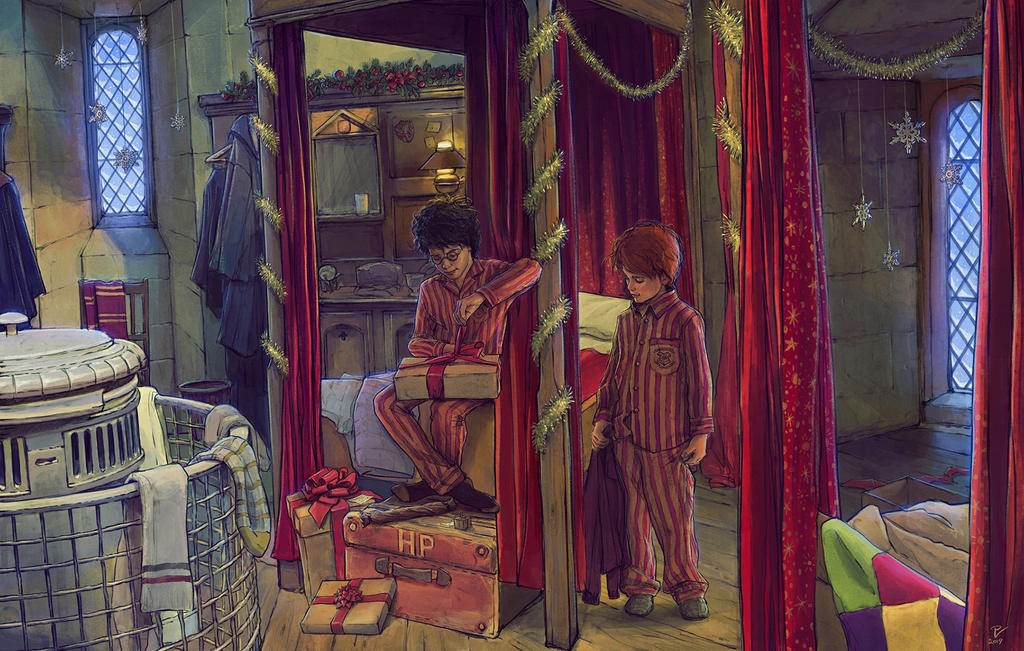
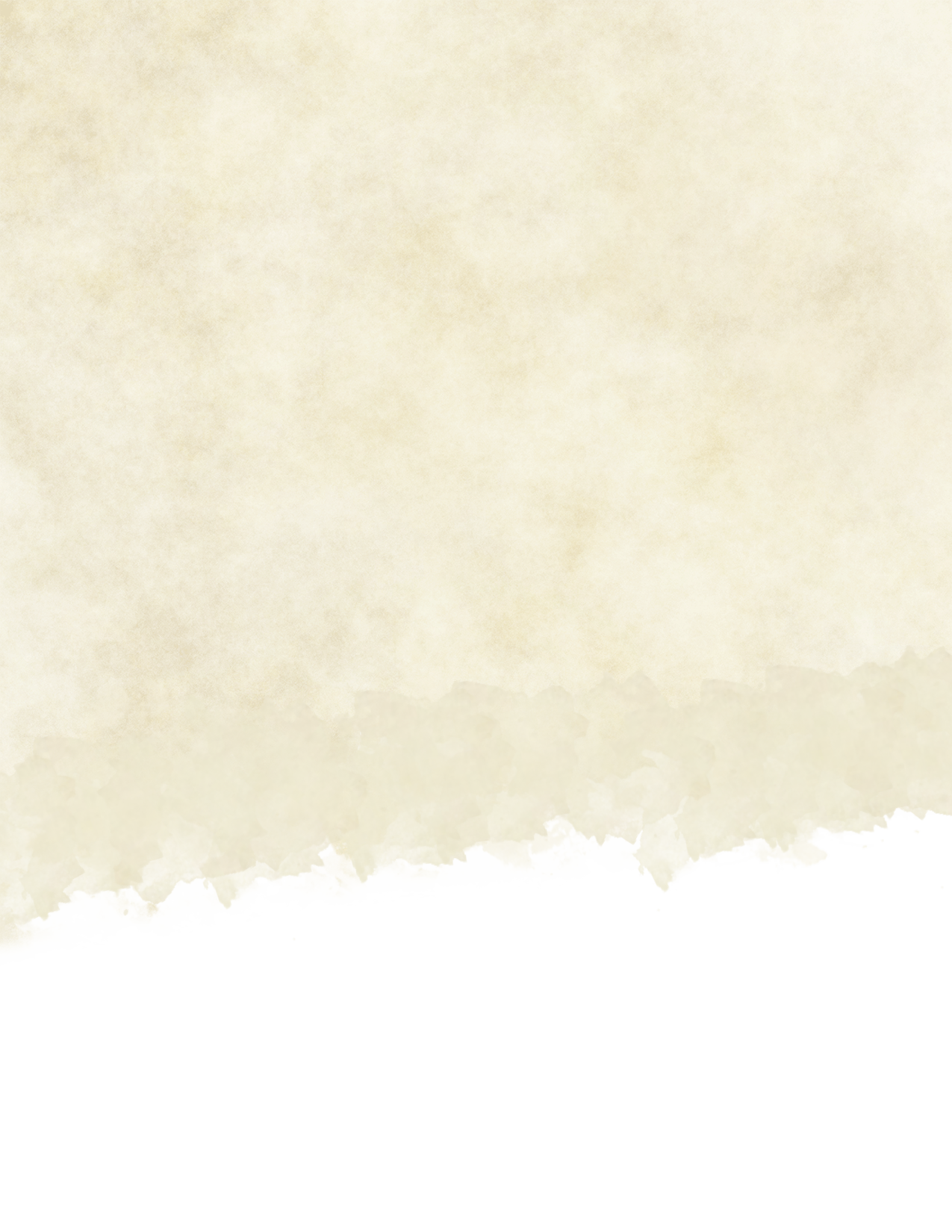
CHAPTER 1 CONT...
Hufflepuff
"You might belong in Hufflepuff, Where they are just and loyal, Those patient Hufflepuffs are true, And unafraid of toil."
— The Sorting Hat regarding Hufflepuffs
Students belonging to this house were known to be hard-working, friendly, loyal, honest and rather impartial. It might be that due to their values, Hufflepuffs were not as competitive as the other houses, and were more modest about their accomplishments. Hufflepuff was the most inclusive among the four houses; valuing hard work, dedication, patience, loyalty, and fair play rather than a particular aptitude in its students. Hufflepuffs house colors are yellow and black
Compassion and Empathy
Hufflepuffs were known to have a strong moral code, and a sense of right and wrong. Hufflepuffs were usually accepting of everyone. Students in Hufflepuff were known to value everyone and treat them as equal.
Hard Work
Hufflepuff's affinity. Their strength comes from consistency and the integrity of their method. They have a certain steadiness, naturally becoming the pioneers of their community. While stereotyped as being social, a Hufflepuff might also be an introverted misanthrope who runs on hard work alone.
Hufflepuff Traits:
You can rely on them to have certain attributes in common.
-
Ability Score Increase. Your Wisdom score increases by 2 & pick another to gain 1
-
Steadfast Loyalty. You have advantage on saving throws against any effect that would make you attack or work against a creature you would normally consider an ally.
-
Kitchen Trips. Your experience with the Hogwarts house elves has taught you how to politely address and interact with magical beings. You are regarded as a friend by the house elves at Hogwarts.
-
Feat. You gain one feat of your choice.

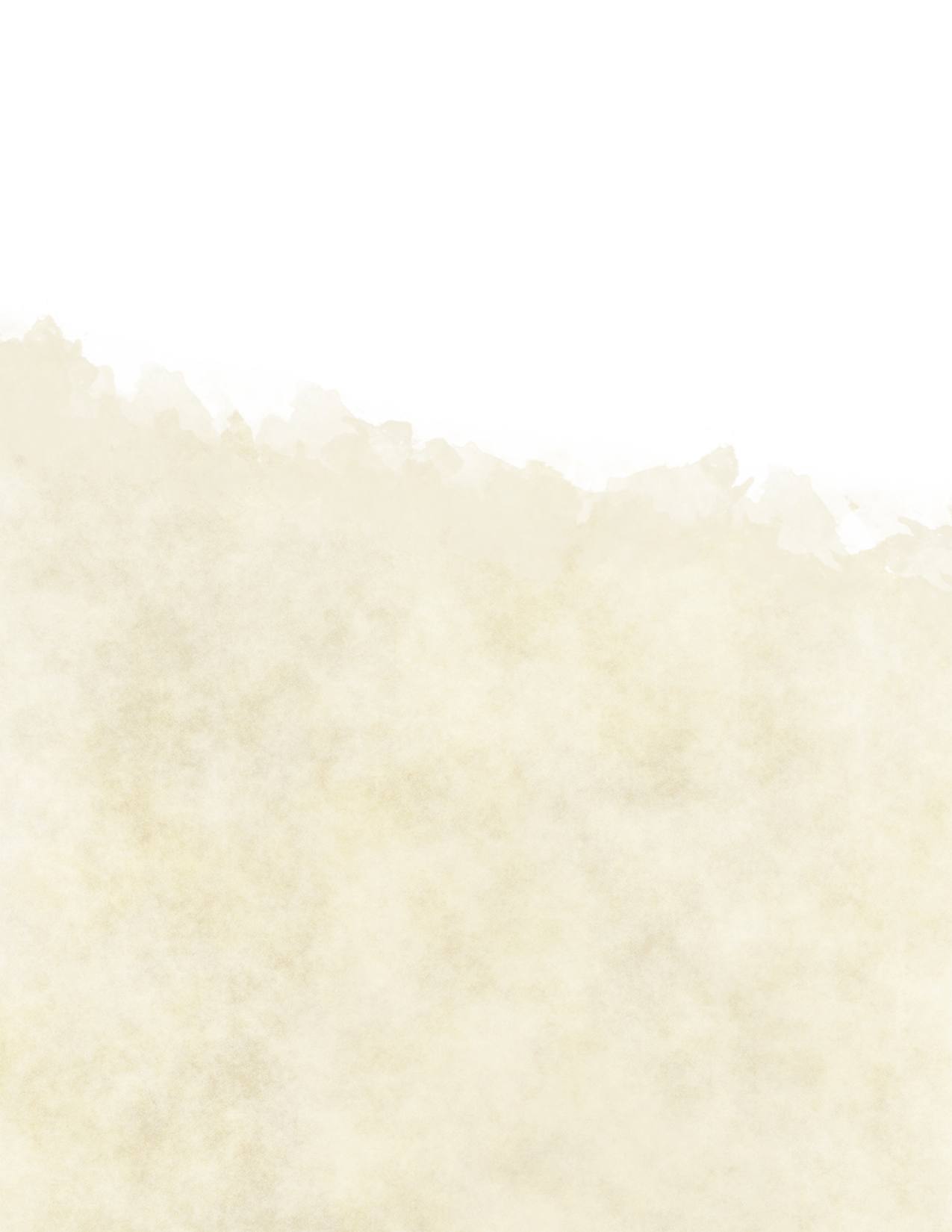
CHAPTER 1 CONT...
Ravenclaw
"Or yet in wise old Ravenclaw, If you've a ready mind, Where those of wit and learning, Will always find their kind."
— The Sorting Hat regarding Ravenclaws
Ravenclaws prize wit, learning, and wisdom. It's an ethos etched into founder Rowena Ravenclaw's diadem: 'wit beyond measure is man's greatest treasure.' Despite the house's reputation for eccentricity and reclusiveness, Ravenclaws tend to make their mark on the world. Ravenclaw's house colors are blue and bronze.
Incredible Minds
Ravenclaws tended to be curious about the world and paid attention to the world around them. Ravenclaws were known to be logical and rational. In addition, Ravenclaw students tended to have abilities regarding Memory. Ravenclaws do not lack intuition, but often distrust gut instinct. Although they go about it differently, a Ravenclaw can be just as morally motivated as a Gryffindor.
Immense Planners
Ravenclaw's always have a plan, they love constructing plans of action and taking the initiative to prepare for the "un-prepareable" They love discussing strategies and you will find that they make quite the formidable foe if not taken seriously. They run hypotheticals and try to plan ahead for things that might come up. They build things (of varying degrees of actual usefulness) that they can use later, whether that’s an emergency supply pack or vast knowledge in a unusual topic. They hate improvising and feel more comfortable taking the time to be prepared.
Ravenclaw Traits:
With a library in their common room, Ravenclaws will always share studious habits.
-
Ability Score Increase. Your Intelligence score increases by 2 & pick another to gain 1
-
In-Depth Knowledge. Whenever you make an Intelligence or Wisdom ability check that lets you add your proficiency bonus, you can treat a d20 roll of 5 or lower as a 6.
-
Rowena's Library. You can easily research a desired topic through enlisting your housemates' help and browsing books exclusively found in the Ravenclaw common room.
-
Feat. You gain one feat of your choice.


CHAPTER 1 CONT...
Slytherin
"Or perhaps in Slytherin, You'll make your real friends, Those cunning folk use any means, To achieve their ends."
— The Sorting Hat regarding Slytherins
Slytherin produces more than it's share of Dark wizards, but also produces leaders who are proud, ambitious, resourceful, and cunning. Merlin is one particularly famous Slytherin. What others may call cheating or manipulation, a Slytherin calls "playing the game." Slytherin's house colors are green and silver.
Inner Circle
Slytherins are fiercely loyal to the people they care for most. Slytherin is the place where "you’ll make your real friends"; they prioritize individual loyalties and find their moral core in protecting and caring for the people they are closest to. Slytherin’s reputation for ambition comes from prioritizing themselves and the select people they deem important. Ambition is something you can find in all four houses, but Slytherin’s looks most obviously selfish.
Machiavellian Maneuvers
Slytherins excel at improvising. They are the most adaptive, finding their strength in responding quickly to whatever a situation throws at them. They improvise differently than Gryffindors, trying their hand at more deceptive roles instead of "strong arming" the situation. They might have different "faces" for different situations, only truly being themselves when they're alone or feel safe.
Slytherin Traits:
You can rely on them to have certain attributes in common.
-
Ability Score Increase. Your Dexterity score increases by 2 & pick another to gain 1
-
Steadfast Loyalty. You have advantage on saving throws against any effect that would make you attack or work against a creature you would normally consider an ally.
-
Kitchen Trips. Your experience with the Hogwarts house elves has taught you how to politely address and interact with magical beings. You are regarded as a friend by the house elves at Hogwarts.
-
Feat. You gain one feat of your choice.


CHAPTER 1 CONT...
Beauxbatons Academy of Magic
"Thought to be situated somewhere in the Pyrenees, visitors speak of the breath-taking beauty of a chateau surrounded by formal gardens and lawns created out of the mountainous landscape by magic."
— Description of the landscape around Beauxbatons
(Académie de Magie Beauxbâtons) is the French Wizarding school located in the Pyrenees mountains of southern France. It was one of the three largest wizarding schools in Europe (the other two being Hogwarts School of Witchcraft and Wizardry and the Durmstrang Institute).
The school took many of its Wizarding students from France, as well as large numbers from Spain, Portugal, the Netherlands, Luxembourg, and Belgium. It is unknown if students from other countries were allowed. The school's coat of arms consisted of two golden wands crossed over one another, each shooting three stars.
Tradition and Discipline
Etiquette and respect are at the forefront of Beauxbatons customs. The students stand at attention whenever their headmaster or headmistress enters a room and continue doing so until they take a seat or order everyone to return to their tasks. There is a strong atmosphere of school pride, and the Academy's traditions are treasured by staff and students alike. While taught to be polite, that pride often shows through when students of Beauxbatons travel abroad.
A Delicate Approach to Magic
Beauxbatons Academy of Magic teaches its students to approach magic with control and finesse, instead of clumsiness or brute force. The studies revolve around proper dueling forms, taxonomies and knowledge deeply grounded in magical theory. To an untrained eye, the deliberate movements of Beauxbatons duelists might resemble a choreographed dance, but it's closer to the precision, quickness and lethality of Muggle fencing.
Beauxbatons Student Traits:
The traits of Beauxbatons students originate from their school's dueling style and from their travels abroad.
-
Ability Score Increase. Your Dexterity score increases by 2 & pick another to gain 1
-
Nimble Footing. Whenever you take the dodge action, add half your proficiency bonus (Rounded down) to your AC and your Dexterity saving throws.
-
International Student. You're familiar with the workings of the International Confederation of Wizards and other international associations.
-
Feat. You gain one feat of your choice.


CHAPTER 1 CONT...
Durmstrang Institute
"Durmstrang is a school for young witches and wizards. The school has a dubious reputation, and is known to put a lot of emphasis on teaching the Dark Arts."
— Durmstrang Introduction.
Durmstrang Institute was one of the three largest wizarding schools in Europe (the other two being Hogwarts School of Witchcraft and Wizardry and Beauxbatons Academy of Magic). Located in the far north of the continent, the school was willing to accept international students from as far afield as Bulgaria. Having existed since at least 1294, Durmstrang was one of the three schools that competed in the Triwizard Tournament, and was notorious for prominently featuring the Dark Arts in its curriculum. Durmstrang did not admit Muggle-borns, but certain students might not necessarily have shared this prejudice — in 1994, Viktor Krum attended the Yule Ball with Hermione Granger, who was Muggle-born and would not have been admitted at Durmstrang. It's location is a close kept secret with many speculating that it remains within a northern mountain fortress first created by Goblins or within the borders of Russia.
The school took many of its Wizarding students from France, as well as large numbers from Spain, Portugal, the Netherlands, Luxembourg, and Belgium. It is unknown if students from other countries were allowed. The school's coat of arms consisted of two golden wands crossed over one another, each shooting three stars.
Heretical Curriculum
Durmstrang is well-known for accepting the Dark Arts, and it is said to have educated (and then expelled) Gellert Grindelwald before his rise to become one of history's most feared Dark wizards. Durmstrang, contrary to popular belief, specializes in combative magic rather than the Dark Arts. Because Durmstrang is open-minded towards the application of Dark Arts, most of the topics studied there include Dark components that other schools would avoid.
Fortitude through Adversity
The austere surroundings reflect the severe and martial attitude that has infected the Durmstrang Institute. The character-building school experience includes harsh winters, intensive physical exercise routines, and swimming in icy lakes. Despite the fact that some parents believe the method is too harsh, everything is geared to build robust and resourceful wizards and witches who will withstand any battle.
Durmstrang Student Traits:
Durmstrang's curriculum and ideology heavily influence the characteristics of its students.
-
Ability Score Increase. Your Strength score increases by 2 & pick another to gain 1
-
Frozen Adaptability. You add the bombarda spell to your list of known spells. It does not count against your cantrips known, and cannot be forgotten to learn another cantrip.
-
Cultivating Darkness. You've got advantage on any dice rolls to fend against the consequences of corruption from the realm of dark magic
-
Feat. You gain one feat of your choice.


CHAPTER 1 CONT...
Ilvermorny School of Witchcraft and Wizardry
"By the time Webster turned eleven, the reputation of the family's little homeschool had spread. Two more magical boys from the Wampanoag tribe had been joined by a mother and two daughters from the Narragansett, all interested in learning the techniques of wand work in exchange for sharing their own magical learning."
— Ilvermorny's shift into a larger school begins.
Ilvermorny School of Witchcraft and Wizardry: The American wizarding school, Ilvermorny School of Witchcraft and Wizardry, was located on Mount Greylock in Massachusetts. Students from all throughout North America were welcomed. Students at this institution were divided into four houses, similar to those at Hogwarts in Scotland.
Ilvermorny was created in 1627, 637 years after Hogwarts, and it began as a ramshackle hut with two instructors and two pupils. Ilvermorny started off as a stone mansion built by Irish immigrant Isolt Sayre and her No-Maj husband James Steward. When their adoptive children, Chadwick and Webster Boot, aspired to return to Ireland and attend Hogwarts, it became a school. Isolt then pledged that they would build their own school at their Mount Greylock house in order to home-educate their children. As a result, the school began with only the couple as teachers and their two adopted boys, Chadwick and Webster Boot, as students. They each named one of the four Houses: Chadwick named Thunderbird, Webster named Wampus, and Isolt named Horned Serpent, and James created Pukwudgie.
Houses: Horned Serpent
Innate Academics
Scholars live in the Horned Serpent's house. The founder of Ilvermorny, Isolt Sayre, named her home after her relationship with a horned serpent and her ability to comprehend Parseltongue. Horned Serpent signifies the wizard's mind, since Isolt's desire to study has been kept in Horned Serpent.
Horned Serpent Traits:
Horned Serpents have a penchant for putting their well-rounded intelligence to the test.
-
Ability Score Increase. Your Intelligence score increases by 2 & pick another to gain 1
-
Intellectual Genius. You add half your proficiency bonus to any Intelligence or Wisdom ability check that does not already have your proficiency bonus.
-
Procedural Reasoning. You appreciate putting yourself to the test with riddles and logical problems. If you get stuck on one, you could connect a few dots instinctively.
-
Feat. You gain one feat of your choice.

CHAPTER 1 CONT...
Wampus
The house depicts the wizard's body. Wampus was picked by Webster Boot, one of Ilvermorny's first students and one of Isolt Sayre's adopted children. Wampus supports warriors, emulating Webster's career as a notable "Auror for hire" in the British colonies.
Wampus got 450 House points in 1926, the most of the four houses, and was awarded the Excellence in Potions Cup and Arithmancy Achievement Accolade.
Warriors with a Cause
Wampus is named after the wampus cat, a fearsome magical beast native to North America. The Ministry of Magic classifies the wampus cat as "known wizard killer / hard to teach or domesticate," which fits the Ilvermorny house's reputation. Wampuses seldom back down from a battle, whether it's a debate, fisticuffs, or hexes traded. They lay a premium on quick action and self-defense. A Wampus, who is fiercely loyal as well, is a terrific person to have on your side and a dreadful one to have against you.
Champion's Endurance
Wampus house educates and cultivates some of North America's most intense aurors. Each has its unique eccentricities, but like Hogwarts' Gryffindors, they aim to be bold and will always stand up for those in need.
Wampus House Traits:
The characteristics of wampuses may be especially valuable in times of strife and unrest.
-
Ability Score Increase. Your Dexterity score increases by 2 & pick another to gain 1
-
Warrior's Perseverance. You quickly restore 1 hit point if you roll a 16 or higher on a death saving throw. You won't be able to utilize this function again until you finish your long rest.
-
Infectious Bravery. Your bravery may be inspiring, and people around you are more likely to join you in battle against your adversaries.
-
Feat. You gain one feat of your choice.

CHAPTER 1 CONT...
Thunderbird
Thunderbird is thought to represent the wizard's essence and is home to adventurers. Chadwick Boot, Webster Boot's older brother, Isolt Sayre's second adopted son, and one of Ilvermorny's first students, named and built the home. The Thunderbird mansion has been linked to Chadwick's later successes as an international traveler and author of magical textbooks.
The house depicts the wizard's body. Wampus was picked by Webster Boot, one of Ilvermorny's first students and one of Isolt Sayre's adopted children. Wampus supports warriors, emulating Webster's career as a notable "Auror for hire" in the British colonies.
Exploration and Formulation
The house is named after the magnificent Thunderbird, which is native to the southwestern United States. It is the most well-known magical creature among indigenous No-Maj societies due to its capacity to cause storms and its extensive journeys over North America. Thunderbird students have a similar desire to go beyond the ordinary. Thunderbirds are just as likely to create new roads in their chosen field as they are to make new paths in the untamed wilderness, so that desire may be manifested through literal or metaphorical exploration. They'll go boldly wherever they go.
Hinterlands Versed
Thunderbirds like being outside. Their continuous exposure to the woods causes them to navigate some of the most difficult terrain. They are frequently seen chasing animals or gathering unusual regeants for potions that most wizards or witches would not dare to seek.
Thunderbirds House Traits:
Change is one thing that all Thunderbirds have in common.
-
Ability Score Increase. Your Constitution score increases by 2 & pick another to gain 1
-
Tracker's Foothold. It costs you no extra movement to go over nonmagical challenging terrain.
-
Steady Geography. You have a good sense of direction and can readily recall the overall layout of regions by using noteworthy landmarks and geography.
-
Feat. You gain one feat of your choice.

CHAPTER 1 CONT...
Pukwudgie
Pukwudgie was one of four houses in North America's Ilvermorny School of Witchcraft and Wizardry. No-Maj James Steward called it after the Pukwudgie. Based on legends he heard from his wife Isolt Sayre about William the Pukwudgie, the Pukwudgie was a fiercely independent magical creature.
Subservient and Autonomy
James picked this house because Isolt had indeed been accompanied by a pukwudgie named William. Pukwudgies, who resemble European goblins and house elves in appearance and magical skills, have generally avoided contact with humans. Later, William rescued the lives of Isolt, James, and the Boots, and as a result of James's appreciation, William and his successors became Ilvermorny's guardians and keepers. Pukwudgie house students are frequently kind and sympathetic. They can readily identify with even their adversaries and like watching others succeed. Pukwudgies, on the other hand, are just as capable of taking care of themselves and will never forget to prioritize their own happiness.
Embrace of the Healer
Many Pukwudgie house graduates pursue a variety of vocations, although the majority of them work as carers, healers, or other types of helpers. Their deep sympathy makes them ideal for the roles. They tend to work in poorer nations, volunteering to aid where they can.
Pukwudgie House Traits:
The viewpoint of Pukwudgies provides them shared characteristics.
-
Ability Score Increase. Your Wisdom score increases by 2 & pick another to gain 1
-
Benevolent Heart. When you make a Wisdom (Medicine) check to stabilize a creature, you can add half your proficiency bonus to your roll.
-
Sympathetic Awareness. If you help a hostile being in a significant way, they may reevaluate their enmity toward you, thereby defusing the situation.
-
Feat. You gain one feat of your choice.

Chapter 2: Casting Types (classes)
While each wizard is capable of performing a wide range of spells, a young wizard's approach to magic establishes his own distinct casting style. Casting techniques distinguish wizards and influence how they study and utilize magic. Willpower, Technique, and Intellect are the three casting styles accessible. A wizard can only have one casting style and cannot multiclass or level up in other casting techniques.
Class Name
| Casting Type | Description | Hit Die | Ability | Saving Throw | Skill Options |
|---|---|---|---|---|---|
| Willpower | A courageous survivor with the heart of a fighter | D10 | CHA | CON & CHA | Athletics,Deception,Intimidation, Magical Theory, Persuasion, Sleight of Hand, Survival |
| Technique | A formidable specialist with incredible spell control. | D6 | WIS | INT & WIS | Acrobatics, Herbology, Insight, Perception,Potion-Making, Sleight of Hand, Stealth |
| Intellect | A multifaceted academic with a solution to every challenge | D8 | INT | DEX & INT | Acrobatics, Herbology, Insight, Investigation,Magical Creatures, Magical Theory, Medicine, Muggle Studies and Survival |
Similarly, a witch's hobbies and history will cause her to specialize in one school of magic over another (Chapter 3). Studying at a school of magic offers specific powers and knowledge relating to that preferred discipline of magic, which is often linked to a future wizarding vocation. A witch can only have one school of magic and cannot advance in any other school. Schools of magic are the wizarding counterpart of subclasses, although they are not limited to certain casting methods.
Classes in wizarding are analogous to casting styles. A character's casting style defines his or her Hit Dice, spellcasting ability score, saving throw proficiency, and two talents. Despite the fact that all wizards and witches are based on what a Muggle would term a Sorcerer, each casting method will have somewhat different class traits, spells known, sorcery points, and metamagic advancement.
| School Of Magic | Description | Suggested Caster Type |
|---|---|---|
| Charms | A non-lethal dueling master casting a spell for every situation and enchanting artifacts | Technique or Intellect |
| Jinxes, Hexes, and Curses | A combatant going toe-to-toe with Dark wizards and nullifying ancient curses and harmful magic | Willpower |
| Transfiguration | An innovator manipulating the elements or shapeshifting into an animal form | Technique |
| Healing | A skilled professional saving lives through the treatment of magical ailments and injuries | Willpower or Intellect |
| Divination | A mystic unraveling visions of the future or probing minds for the answers they seek | Willpower or Technique |
| Magizoology | A researcher bonding with fearsome beasts and facing off with dark creatures | Intellect |
Casting styles are the wizarding equivalent of classes. Casting style determines a character's Hit Dice, spellcasting ability score, saving throw proficiencies, and two skills. Although all wizards and witches are based what a Muggle would call a Sorcerer, each casting style will have slightly different class features, number of spells known, sorcery points, and metamagic progression.
Base Sorcerer Features
Font of Magic
Sorcery Points
You can never have more sorcery points than shown on the table for your level. You regain all spent sorcery points when you finish a long rest.
Flexible Casting
You can use your sorcery points to gain additional spell slots, or sacrifice spell slots to gain additional sorcery points.
Creating Spell Slots. You can transform unexpended sorcery points into one spell slot as a bonus action on your turn. The created spell slots vanish at the end of a long rest.
| Slot Level | SP Cost | Slot Level | SP Cost | |
|---|---|---|---|---|
| 1st | 2 | 4th | 6 | |
| 2nd | 3 | 5th | 7 | |
| 3rd | 5 |
Converting a Spell Slot to Sorcery Points. As a bonus action on your turn, you can expend one spell slot and gain a number of sorcery points equal to the slot's level.
Metamagic
You can use only one Metamagic option on a spell when you cast it, unless otherwise noted.
Careful Spell
When you cast a spell that forces other creatures to make a saving throw, you can protect some of those creatures from the spell’s full force. To do so, you spend 1 sorcery point and choose a number of those creatures up to your spellcasting ability modifier (minimum of one creature). A chosen creature automatically succeeds on its saving throw.
Distant Spell
When you cast a spell that has a range of 5 feet or greater, you can spend 1 sorcery point to double the spell's range.
When you cast a spell that has a range of touch, you can spend 1 sorcery point to make the range of the spell 30 feet.
Empowered Spell
When you roll a spell's damage, you can spend 1 sorcery point to reroll a number of damage dice up to your spellcasting ability modifier (minimum one). You must use the new rolls.
You can use Empowered Spell even if you have already used a different Metamagic option during the spell's casting.
Extended Spell
When you cast a spell that has a duration of 1 minute or longer, you can spend 1 sorcery point to double its duration, to a maximum duration of 24 hours.
Heightened Spell
When you cast a spell that forces a creature to make a saving throw to resist its effects, you can spend 3 sorcery points to give one target of the spell disadvantage on its first saving throw made against the spell.
Quickened Spell
When you cast a spell that has a casting time of 1 action, you can spend 2 sorcery points to change the casting time to 1 Bonus Action for this casting.
Subtle Spell
When you cast a spell, you can spend 1 sorcery point to cast it without any somatic or verbal Components.
Twinned Spell
When you cast a spell that targets only one creature and doesn’t have a range of self, you can spend a number of sorcery points equal to the spell’s level to target a second creature in range with the same spell (1 sorcery point if the spell is a cantrip).
Spell Slots per Level
| Level | 1st | 2nd | 3rd | 4th | 5th | 6th | 7th | 8th | 9th |
|---|---|---|---|---|---|---|---|---|---|
| 1st | 2 | — | — | — | — | — | — | — | — |
| 2nd | 3 | ─ | — | — | — | — | — | — | — |
| 3rd | 4 | 2 | ─ | ─ | ─ | — | — | — | — |
| 4th | 4 | 3 | — | — | — | — | — | — | — |
| 5th | 4 | 3 | 2 | — | — | — | — | — | — |
| 6th | 4 | 3 | 3 | — | — | — | — | — | — |
| 7th | 4 | 3 | 3 | 1 | — | — | — | — | — |
| 8th | 4 | 3 | 3 | 2 | — | — | — | — | — |
| 9th | 4 | 3 | 3 | 3 | 1 | — | — | — | — |
| 10th | 4 | 3 | 3 | 3 | 2 | — | — | — | — |
| 11th | 4 | 3 | 3 | 3 | 2 | 1 | — | — | — |
| 12th | 4 | 3 | 3 | 3 | 2 | 1 | — | — | — |
| 13th | 4 | 3 | 3 | 3 | 2 | 1 | 1 | — | — |
| 14th | 4 | 3 | 3 | 3 | 2 | 1 | 1 | — | — |
| 15th | 4 | 3 | 3 | 3 | 2 | 1 | 1 | 1 | — |
| 16th | 4 | 3 | 3 | 3 | 2 | 1 | 1 | 1 | — |
| 17th | 4 | 3 | 3 | 3 | 2 | 1 | 1 | 1 | 1 |
| 18th | 4 | 3 | 3 | 3 | 3 | 1 | 1 | 1 | 1 |
| 19th | 4 | 3 | 3 | 3 | 3 | 2 | 1 | 1 | 1 |
| 20th | 4 | 3 | 3 | 3 | 3 | 2 | 2 | 1 | 1 |

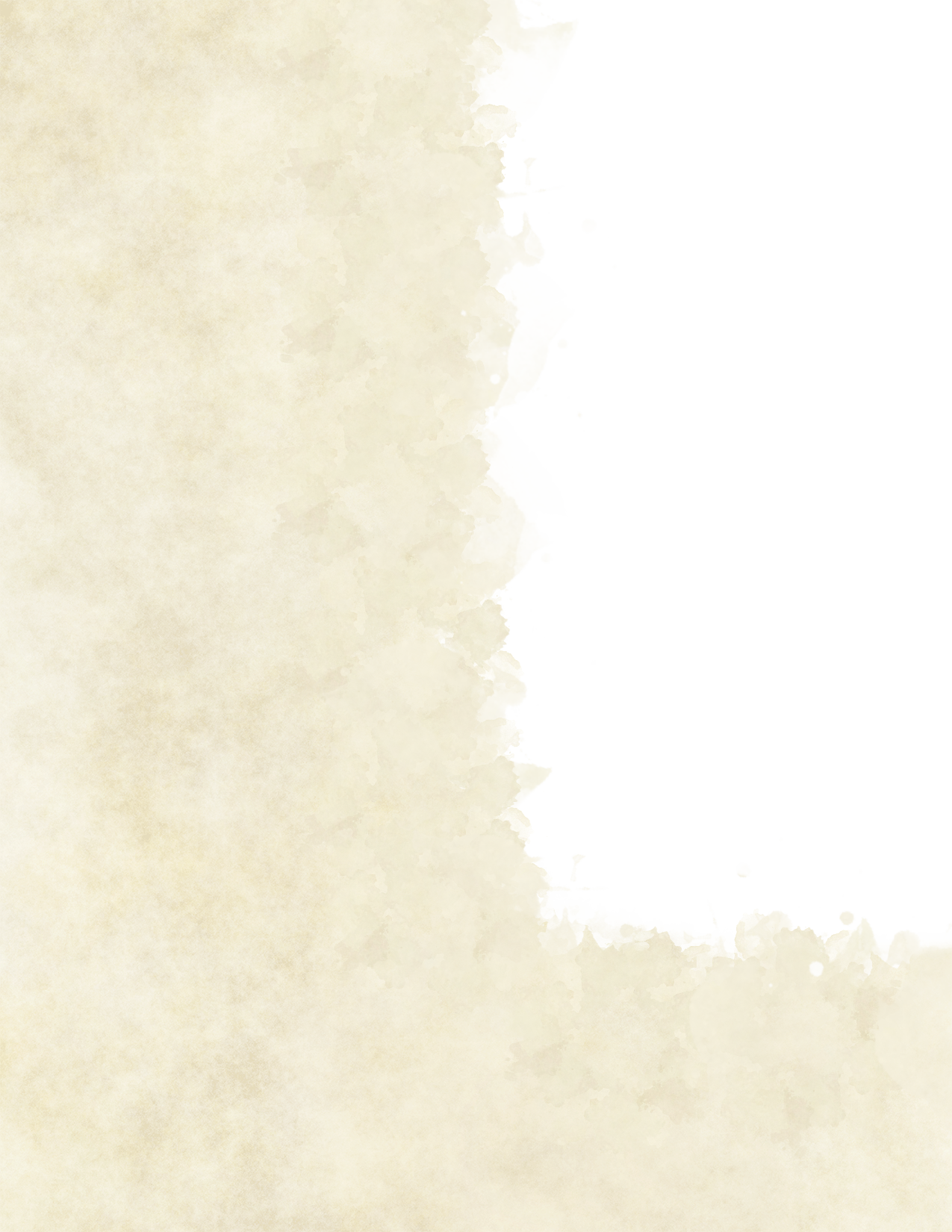

The Willpower Caster
When witches and wizards cast spells with feeling, they pour their entire being into them. Their "gut feeling" approach to magic taps on that willpower while also teaching kids how to cut corners. These wizards are usually outgoing and want to work on the front lines.
Class Features
As a Willpower caster, you gain the following class features.
Hitpoints
- Hit Dice: 1D10 per Willpower Level
- Hit Points at First Level 10 + Con Modifier
- Hit Points at Higher Levels 1D10(or 6)+ Con Modifier per Willpower Level after 1st.
Proficiencies
- Saving Throws: Constitution, Charisma
- Skills: Athletics,Deception, Intimidation, Magical Theory, Persuasion, Slight of Hand, Survival.
Spellcasting
For your spells, Charisma is your spell-casting ability. When a spell refers to your spell-casting ability, you use your Charisma. In addition, when determining the saving throw DC for a spell you cast and when making an attack roll with one, you use your Charisma modifier. For your spells, you must utilize a wand as a spell-casting focus. For complete casters, your spell slot advancement is standard. Additionally, as you earn levels in this class, you can replace two of the spells you know with two spells from your spell list, which must be of the same level as the spell slots you have.
Sorcerous Flexiblity
The accidental magic in your early childhood never stopped protecting you. Your AC equals 13 + your Dexterity modifier.
Font of Magic, Metamagic, and Ability Score Improvement
Unless otherwise noted in the Willpower class table, a Willpower caster has all of the same class features as a 5e Sorcerer, including Font of Magic, Sorcery Points, Flexible Casting, Metamagic, and Ability Score Improvement.
MetaMagic:Relentless Spell
When you reach 3rd level, you can use two sorcery points to cast a spell as if it were cast in a spell slot one level higher than its original level, or four sorcery points to cast it two levels higher. The higher level of the spell cannot surpass the highest level of spell slots you have available. This does not deduct from your total number of Metamagic choices.
MetaMagic: Defiance Spell
You can spend 1 sorcery point per additional level at 3rd level to have spell deflection, finite incantatem, or reparifors treat a spell as though it were cast using a spell slot higher than its original level. This makes your spell impenetrable to dispelling. The higher level of the spell cannot surpass the highest level of spell slots you have available. This does not deduct from your total number of Metamagic choices.
Apparition Lessons:
When you reach 9th level, you gain the Apparition ability.
Trademark Spells:
When you reach 20th level, you gain mastery over two powerful spells and can cast them with little effort. Choose two of your known 3rd-level spells as your signature spells. You can cast each of them once at 3rd level without expending a spell slot. When you do so, you can’t do so again until you finish a short or long rest.
Willpower
| Level | ProficiencyBonus | SorceryPoints | Metamagic | Features | CantripsKnown | SpellsKnown |
|---|---|---|---|---|---|---|
| 1st | +2 | — | — | Spellcasting, Sorcerous Resilience, School of Magic | 4 | 3 |
| 2nd | +2 | 2 | — | Font of Magic | 4 | 4 |
| 3rd | +2 | 3 | 2 | Metamagic, Fierce Spell, Resistant Spell | 4 | 5 |
| 4th | +2 | 4 | 2 | Ability Score Improvement | 5 | 6 |
| 5th | +3 | 5 | 2 | ─ | 5 | 8 |
| 6th | +3 | 6 | 2 | School of Magic Feature | 5 | 8 |
| 7th | +3 | 7 | 2 | ─ | 6 | 10 |
| 8th | +3 | 8 | 2 | Ability Score Improvement | 6 | 11 |
| 9th | +4 | 9 | 2 | Apparition Lessons | 6 | 13 |
| 10th | +4 | 10 | 3 | School of Magic Feature, Metamagic | 7 | 14 |
| 11th | +4 | 11 | 3 | ─ | 7 | 15 |
| 12th | +4 | 12 | 3 | Ability Score Improvement | 7 | 15 |
| 13th | +5 | 13 | 3 | ─ | 8 | 17 |
| 14th | +5 | 14 | 3 | School of Magic Feature | 8 | 17 |
| 15th | +5 | 15 | 3 | ─ | 8 | 18 |
| 16th | +5 | 16 | 3 | Ability Score Improvement | 8 | 18 |
| 17th | +6 | 17 | 4 | Metamagic | 9 | 20 |
| 18th | +6 | 18 | 4 | School of Magic Feature | 9 | 20 |
| 19th | +6 | 19 | 4 | Ability Score Improvement | 9 | 20 |
| 20th | +6 | 20 | 4 | Signature Spells | 9 | 20 |



© Pottermore Limited


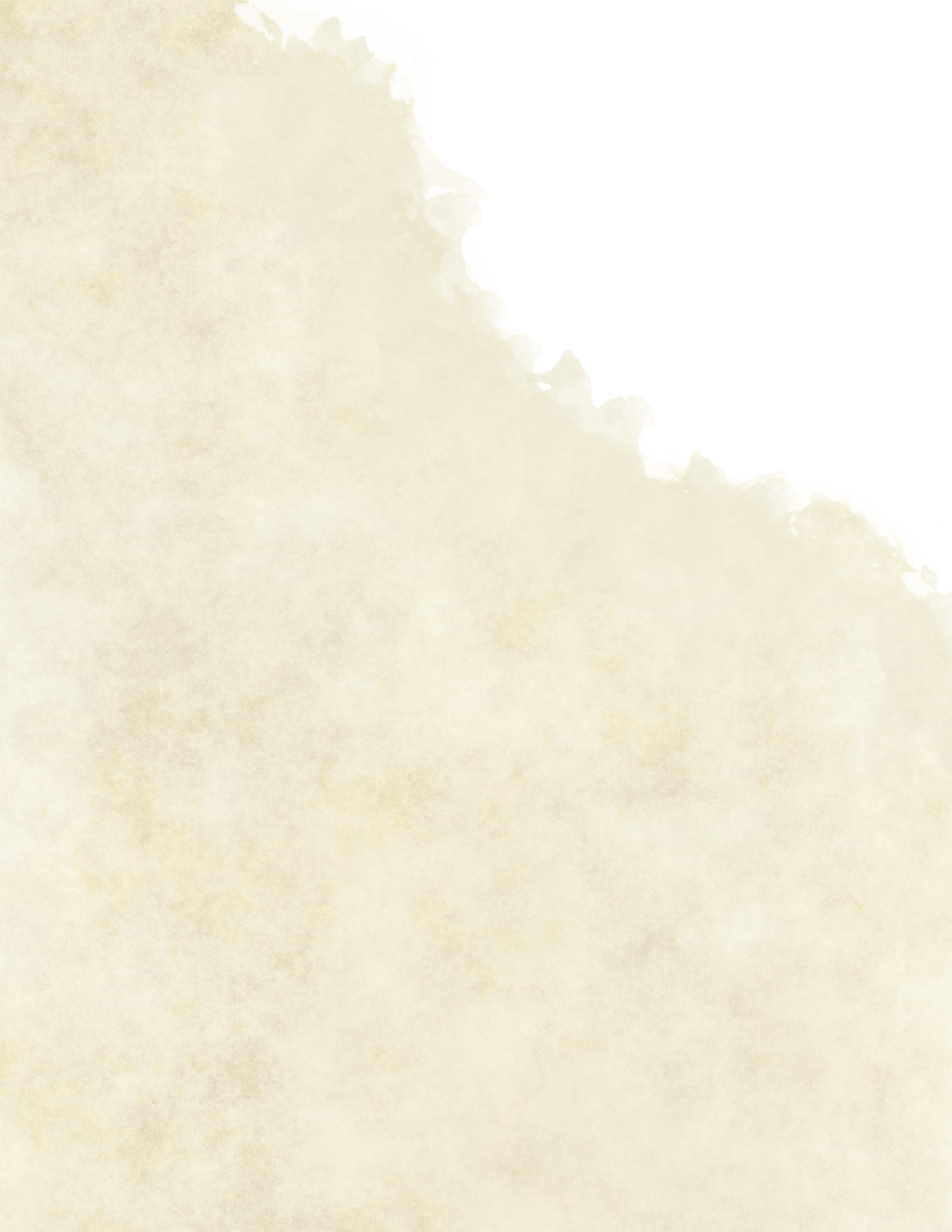
The Technique Caster
These spellcasters have put in countless hours of practice to achieve their degree of magic control. They are experts who are both powerful and quick to react. Their keen sense of detail makes them tough opponents in dueling, and they are frequently regarded as the greatest in their area.
Class Features
As a Technique caster, you gain the following class features.
Hitpoints
- Hit Dice: 1D6 per Technique Level
- Hit Dice after 1st Level: 6 + Constitution Modifier
- Hit Dice at Higher Levels: 6+ Constitution Modifier per level.
Proficiencies
- Saving Throws: Dexterity & Constitution
- Skills: Choose two from Acrobatics, Herbology, Insight, Perception, Potion-Making, Sleight of Hand and Stealth
Spellcasting:
For your spells, wisdom is your spellcasting ability. When a spell refers to your spellcasting ability, you use your Wisdom. In addition, when determining the saving throw DC for a spell you cast and when making an attack roll with one, you use your Wisdom modifier. For your spells, you must utilize a wand as a spellcasting focus. For complete casters, your spell slot advancement is standard (22 slots at level 20). Additionally, as you earn levels in this class, you can replace two of the spells you know with two spells from your spell list, which must be of the same level as the spell slots you have.
Spell Deviation:
At 3rd level, when you are the target of a spell or included in the area of a spell, you can deflect the spell as a reaction. The spell must be on your list of known spells and you spend a number of sorcery points equal to twice that spell's level. Upon deflection, you automatically succeed on your saving throw against the spell and you can direct the spell's effect to a creature within 10 feet of you, if desired. If the spell does not have a saving throw, it has no effect on you. If a creature was also targeted by the spell or included in the area of the spell, you cannot redirect the spell to that creature.
Font of Magic, Metamagic, and Ability Score Improvement
Unless differences are shown in the Technique class table, a Technique caster has all Font of Magic, Sorcery Points, Flexible Casting, Metamagic, and Ability Score Improvement class features from a 5e Sorcerer.
Apparition Lessons:
When you reach 9th level, you gain the Apparition ability.
Magician's Restoration:
When you reach 20th level, you regain 4 expended sorcery points whenever you finish a short rest.
Technique Caster
| Level | Proficiency Bonus | Sorcery Points | MetaMagic | Features | Cantrips Known | Spells Known |
|---|---|---|---|---|---|---|
| 1st | +2 | — | - | Spellcasting, School of Magic | 4 | 3 |
| 2nd | +2 | 2 | — | Font of Magic | 4 | 4 |
| 3rd | +2 | 3 | 2 | Metamagic, Spell Deviation | 4 | 5 |
| 4th | +2 | 4 | 2 | Ability Score Improvement | 5 | 6 |
| 5th | +3 | 5 | 2 | Metamagic | 5 | 8 |
| 6th | +3 | 6 | 2 | School of Magic Feature | 5 | 8 |
| 7th | +3 | 7 | 2 | Metamagic | 6 | 10 |
| 8th | +3 | 8 | 2 | Ability Score Improvement | 6 | 11 |
| 9th | +4 | 9 | 2 | Aparition Lessons,Metamagic | 6 | 13 |
| 10th | +4 | 10 | 3 | School of Magic Features | 7 | 14 |
| 11th | +4 | 11 | 3 | ─ | 7 | 15 |
| 12th | +4 | 12 | 3 | Ability Score Improvement, Metamagic | 7 | 15 |
| 13th | +5 | 13 | 3 | ─ | 8 | 17 |
| 14th | +5 | 14 | 3 | School Magic Feature | 8 | 17 |
| 15th | +5 | 15 | 3 | Metamagic | 8 | 18 |
| 16th | +5 | 16 | 3 | Ability Score Improvement | 8 | 18 |
| 17th | +6 | 17 | 4 | ─ | 9 | 20 |
| 18th | +6 | 18 | 4 | School of Magic Feature,Metamagic | 9 | 20 |
| 19th | +6 | 19 | 4 | Ability Score Improvement | 9 | 20 |
| 20th | +6 | 20 | 4 | Magician's Restoration | 9 | 20 |
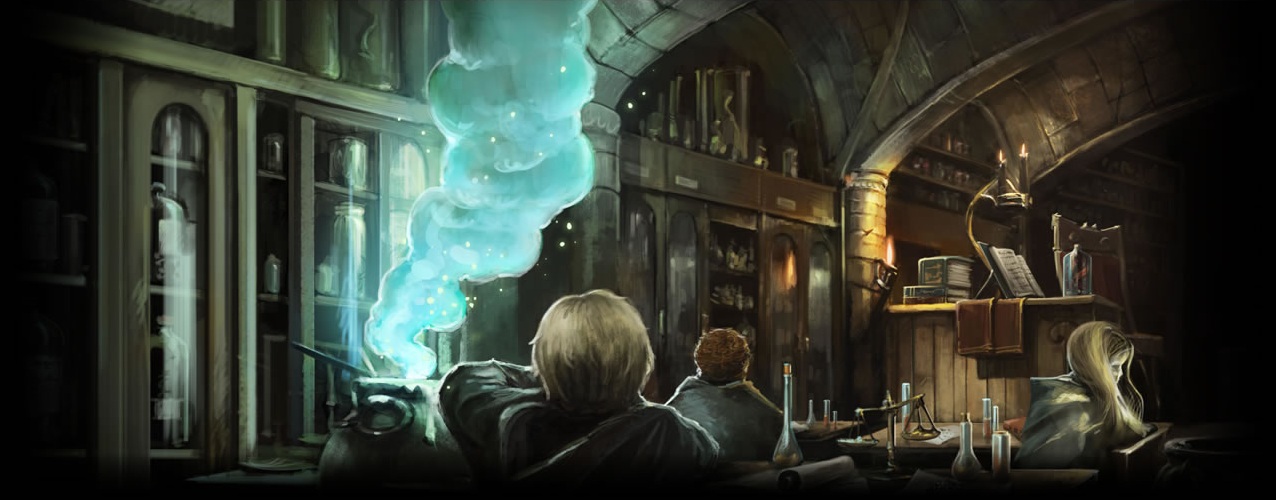

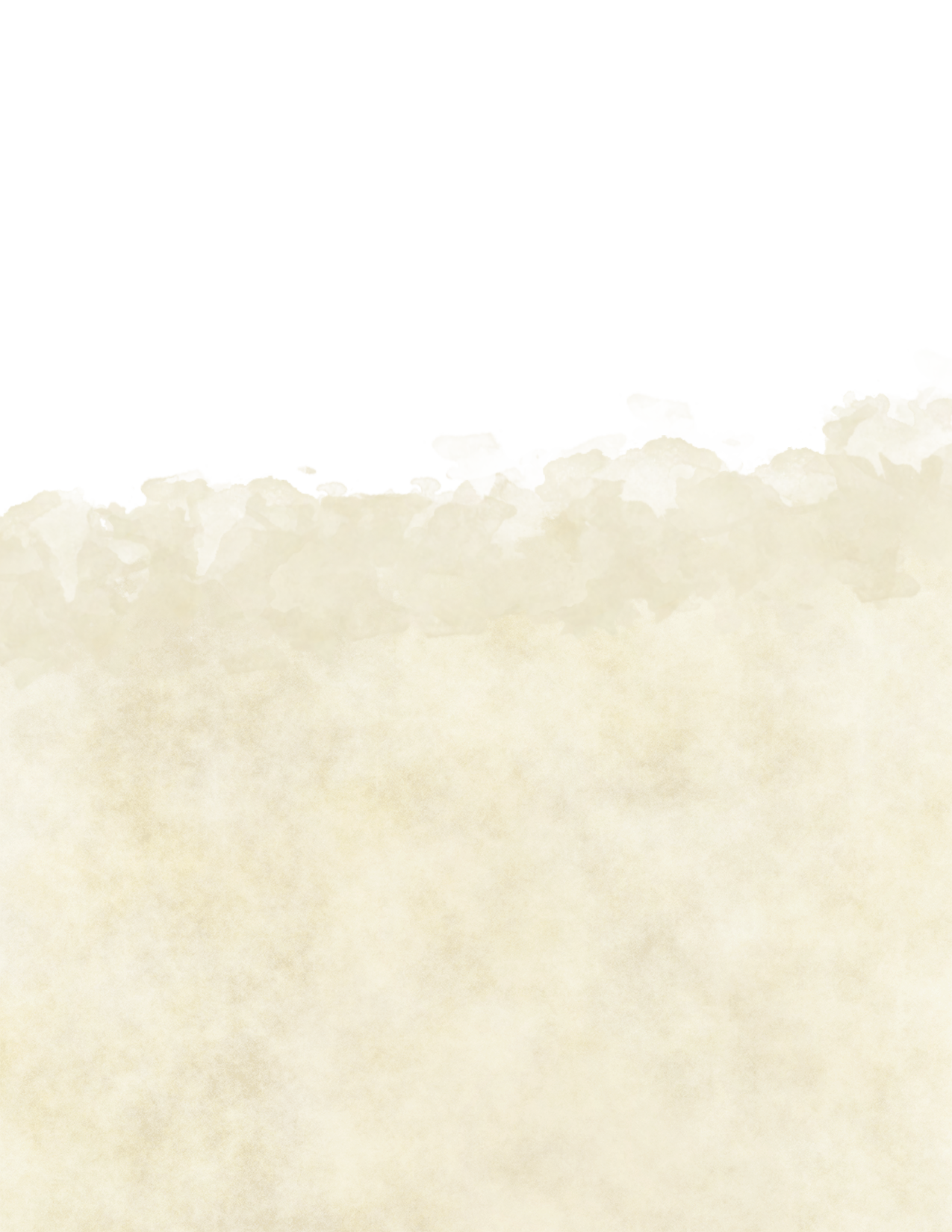

Intellect Caster
Wizards who are astute delve into the foundations of magic. These scholars are capable of learning a wide range of spells, yet they may struggle in combat. Their magical versatility and expertise make them invaluable companions throughout the wizarding world.
Class Features:
As an Intellect caster, you gain the following class features.
HitPoints
- Hit Dice: 1D8 per Intellect level.
- Hit Points at 1st level: 8 + Constitution Modifier
- Hit Points after 1st level: 1d8 (or 5) + your Constitution modifier per Intellect level after 1st
Proficincies
- Saving Throws: Wisdom, Intelligence
- Skills Choose three from Acrobatics, Herbology, Insight, Investigation, Magical Creatures, Magical Theory, Medicine, Muggle Studies and Survival
Spellcasting
Intelligence is a spellcasting ability that allows you to cast spells. When a spell refers to your spellcasting ability, you use your Intelligence. In addition, when determining the saving throw DC for a spell you cast and when making an attack roll with one, you use your Intelligence modifier. For your spells, you must utilize a wand as a spellcasting focus. For complete casters, your spell slot advancement is standard (22 slots at level 20). Additionally, as you earn levels in this class, you can replace two of the spells you know with two spells from your spell list, which must be of the same level as the spell slots you have.
Ritual Casting
You can freely cast spells thanks to your capacity to recall information, as long as you have enough time to pause and focus. If a spell includes the ritual tag and you know the spell, you can cast it as a ritual at 1st level. A ceremonial spell takes 10 minutes longer to perform than a regular spell. It also doesn't use up a spell slot, therefore the ceremonial version of a spell can't be used at higher levels.
Font of Magic, Metamagic, and Ability Score Improvements
Unless differences are shown in the Intellect Progression table, an Intellect caster has all Font of Magic, Sorcery Points, Flexible Casting, Metamagic, and Ability Score Improvement class features from a 5e Sorcerer.
Apparition Lessons
When you reach 9th level, you gain the Apparition ability.

@AdiPra -
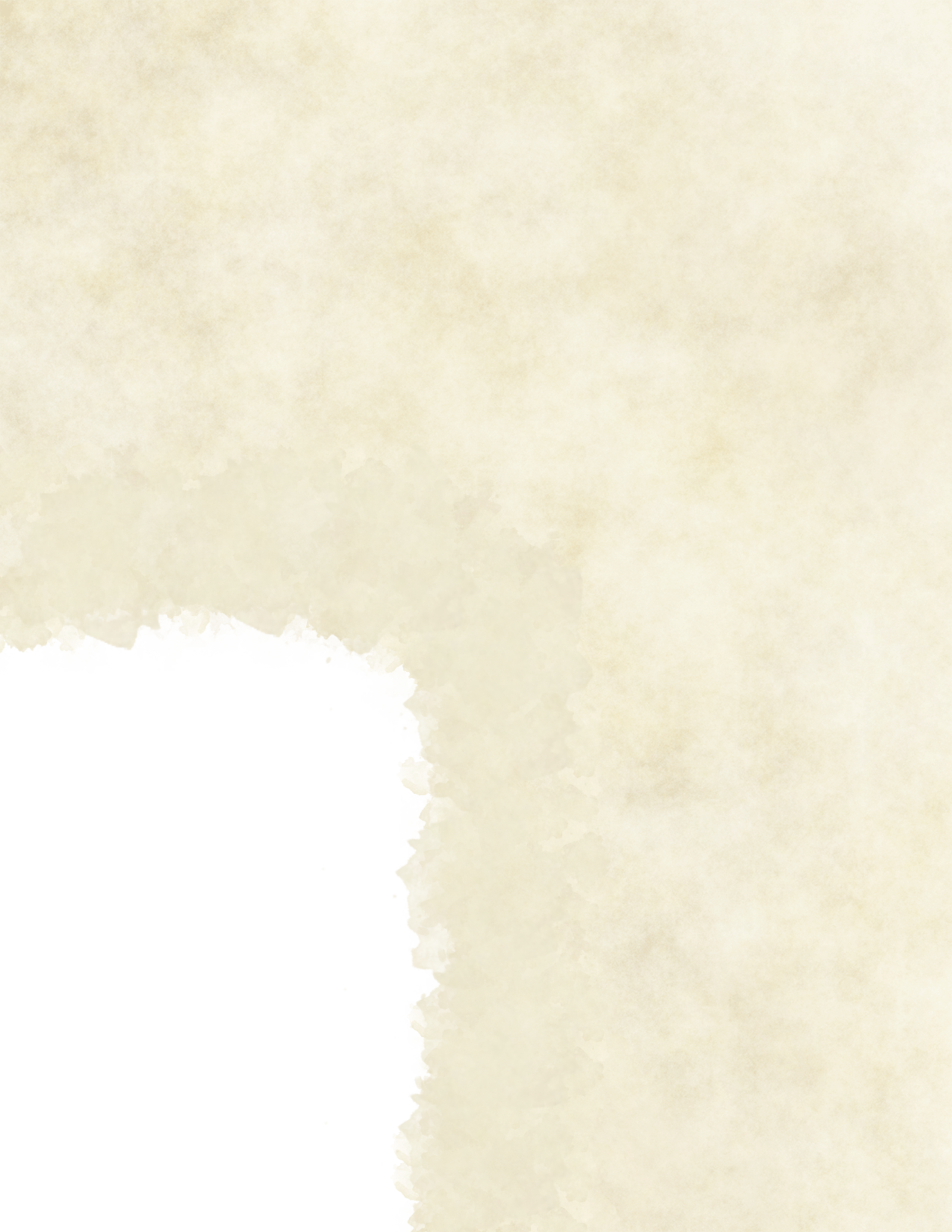

Mystic Recovery
When you reach 20th level, you have learned to regain some of your magical energy by studying in your free time. Whenever you finish a short rest, you can choose expended spell slots to recover. The spell slots can have a combined level that is equal to or less than 10, and none of the slots can be 6th level or higher.
Intellect Caster
| Level | ProficiencyBonus | SorceryPoints | Metamagic | Features | CantripsKnown | SpellsKnown |
|---|---|---|---|---|---|---|
| 1st | +2 | — | — | Spellcasting, Ritual Casting, School of Magic | 6 | 6 |
| 2nd | +2 | 1 | — | Font of Magic | 6 | 8 |
| 3rd | +2 | 2 | 1 | Metamagic | 7 | 10 |
| 4th | +2 | 3 | 1 | Ability Score Improvement | 7 | 12 |
| 5th | +3 | 3 | 1 | ─ | 8 | 16 |
| 6th | +3 | 4 | 1 | School of Magic Feature | 8 | 18 |
| 7th | +3 | 5 | 2 | Metamagic | 9 | 20 |
| 8th | +3 | 6 | 2 | Ability Score Improvement | 9 | 22 |
| 9th | +4 | 7 | 2 | Apparition Lessons | 10 | 26 |
| 10th | +4 | 7 | 2 | School of Magic Feature | 10 | 28 |
| 11th | +4 | 8 | 2 | ─ | 11 | 30 |
| 12th | +4 | 9 | 2 | Ability Score Improvement | 11 | 30 |
| 13th | +5 | 10 | 3 | Metamagic | 12 | 34 |
| 14th | +5 | 11 | 3 | School of Magic Feature | 12 | 34 |
| 15th | +5 | 11 | 3 | ─ | 13 | 36 |
| 16th | +5 | 12 | 3 | Ability Score Improvement | 13 | 36 |
| 17th | +6 | 13 | 3 | ─ | 14 | 40 |
| 18th | +6 | 14 | 3 | School of Magic Feature | 14 | 40 |
| 19th | +6 | 15 | 3 | Ability Score Improvement | 15 | 40 |
| 20th | +6 | 15 | 3 | Arcane Recovery | 15 | 40 |



© Pottermore Limited
Chapter 3: Schools of Magic (Subclasses)
Charms
Charms, a type of magic that changes a thing's qualities, are among the most potent spells available. For example, the Fidelius Charm can totally conceal a person or a location so that no one can find them unless they are told the Secret. Memories Charms can be so powerful that they can erase a person's memory or permanently destroy their mind.
Militant
Many charms have been turned into magical weapons. A wizard's duel is a ceremonial activity in wizarding culture in which two wizards or witches face off and seek to disarm, shock, wound, defeat, or kill each other at the count of three in order to force submission. A duelist is a master of this trade who competes in organized, refereed, non-lethal duels to test and perfect his or her abilities.
Enchanter
Several wizards dabble in enchantments, or the application of a near-permanent charm to an inanimate object. These enchanted items can be anything from practical (such as a self-stirring coffee mug) to intricate (such as a top-tier racing broom) to strange (like a book acting like a rabid version of its subject matter). In the hands of the appropriate wizard, an enchanted or charmed object might be extremely powerful.
School Of Magic Spells
| Spell Level | Spell |
|---|---|
| 2nd | Muffliato |
| 4th | Capacious Extremis |
| 5th | Obliviate, Piertotum Locomotor |
Subclass Feature
Alluring Studies
You gain one of the following features at 1st level. Shot is the name of the game. You've improved your aim to the point where you can strike with your dueling Charms with pinpoint accuracy. When casting a Charm, you have the option of targeting certain items or body parts, as well as limiting the charm's effects to that item or body part. Protective Enchantments are a type of enchantment that is used to keep The area of any charm spell that affects an area (cube, line, sphere, or cone) is twice.
Advanced Charmwork
At 6th level, you gain one of the following features.
Target Practice. Your steady hand and hours of practice have given you an edge. Whenever you add your spellcasting ability modifier to a spell attack roll, add half your Dexterity modifier (rounded up) as a bonus as well.
Professional Charmer. You've learned to weave your enchantments throughout objects. If you cast a single target Charm with a duration longer than Instantaneous on an individual object, the effects have a permanent duration, if desired, until dispelled by you. This feature does not remove Concentration or Dedication requirements.
Rare Talents
You receive one of the following features when you reach the 10 level.
Dueling Muggles. As a last resort, you've trained in non-magical dueling. Add your proficiency bonus to your unarmed strike damage rolls, as well as any Strength checks you make when grappling or disarming a wizard.
Obliviator. When you cast Oblivate, instead of merely wiping memories, you can choose to implant incredibly detailed fake memories. The target of the spell is immune to these memories, but others who analyze the target's memories (through Legilimency or a Penseive) may be able to determine that they are false.
Sophisticated Approach
At 14th level, you gain one of the following features.
Wand and Shield. You've uncovered an ancient dueling style, allowing both offense and defense at the same time. When you cast Protego or Protego Maxima, you can transition the spell's casting to your off-hand, freeing up your wand to cast other spells. The spell's dedication now expends a bonus action instead of an action, and you are able to cast and maintain another concentration or dedication spell with your wand. Any factor that affects maintaining concentration is applied individually to each effect (e.g. upon taking damage make a Constitution saving throw for each spell).
A Duty to Protect. When you cast piertotum locomotor, concentration is no longer required, twice as many objects can be animated, and the duration is extended to 1 hour.
Apex Casting
You gain one of the following features at 18th level.
Lightning-Fast Wand You've improved your dueling talents to the point where you can cast spells twice as rapidly as the average wizard. Quickened Spell is added to your metamagic options if you don't already have it, and it doesn't count against your metamagic count. You can cast any spell as a bonus action when you utilize the Quickened Spell metamagic, and the standard bonus action spellcasting rules do not apply.
Secret-Keeper. To your list of known spells, you add the Fidelius mysteria celare spell. It doesn't count against your total amount of spells learned, and it can't be forgotten.
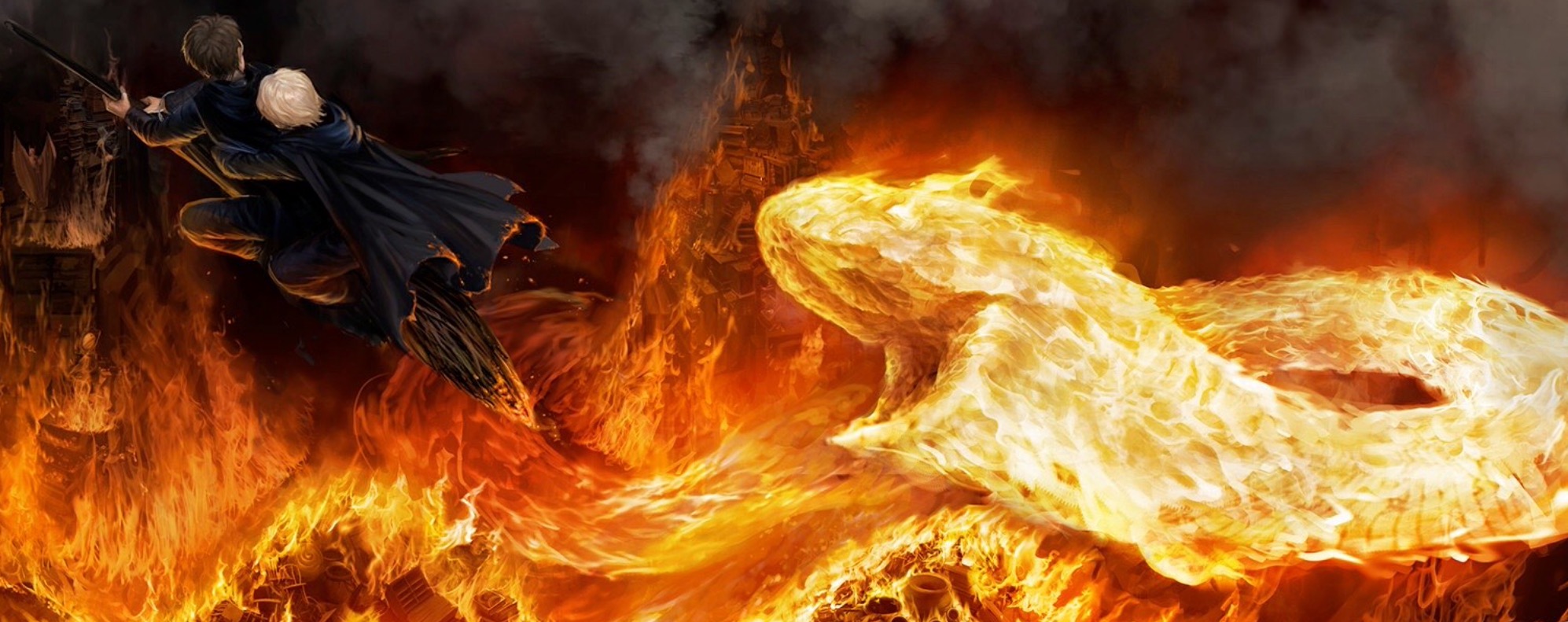


Jinxes, Curses, and Hexes
Formally referred to as Dark charms, jinxes, hexes and curses are often associated with the Dark Arts because they inflict malicious effects on the target. While jinxes are mostly irritating and hexes are a little worse or more painful, curses are the worst kind of Dark magic. All three Unforgivables are classified as curses, and the average civilian wizard could go their whole life without casting a serious curse.
Aurors
Aurors, highly-trained professional officers tasked with maintaining the law and safeguarding their magical communities from large-scale dangers, have a lot of curses in their arsenals. Curses, counter-spells, transfiguration, poisons, antidotes, concealment, disguise, and tracking are only a few of the skills required of an Auror to be successful.
Curse-Breakers
Curse-breakers, on the other hand, make a living by removing, counteracting, or breaking curses placed on objects or places. Curse-breakers can work for the Ministry of Magic, but the phrase is also applied to a group of daring bankers employed by Gringotts Wizarding Bank who are entrusted with disabling and combating curses in ancient tombs and historical locations in order to recover gold and treasure.
School Of Magic Spells
| Spell Level | Spell |
|---|---|
| 3nd | Langlock |
| 4th | Sectumsempra |
| 5th | Nullum Effugium, Omnifracto |
SubClass Features
Constructive Syllabus
Auror School: You've already begun honing the abilities needed to become an Auror. One common potion recipe is learned, and you acquire proficiency in two of the following: Investigation, potion-making, stealth, and survival are all skills that can be used in this game.
Curse-Breaking. Your curiosity in taking apart spells and enchantments has found an outlet. Gain a set of Curse-breakers' Tools and gain proficiency in Curse-breakers' Tools.
Conflict Qualified
You gain one of the following abilities at 6th level.
Forceful Magic that is powerful. Every spell you cast is as though it were a life-or-death situation. Add 1d6 to one damage roll when you cast a spell that deals damage.
Arcane Adrenaline is a magical substance. In times of need, your magic energises you. You can spend one hit die as a bonus action to regain hit points normally after a short rest, equal to hit die + Constitution modifier. You have the number of uses equal to your proficiency bonus, and after a long rest, all of your uses are restored.
Functional Skills
You receive one of the following features when you reach the 10 level.
Traces of the Dark You've mastered Dark magic's patterns and styles. Any Investigation, Insight, or Perception roll involving detecting Dark magic or a Dark wizard gives you an advantage.
Ward-Breaker. Curse-breaking is necessary. No one will be able to magically detect you successfully breaking a curse, dispelling an enchantment, or removing a ward. If someone witnesses you cursing or actively searches for the erased magic, they will notice its absence. If a spell was intended to alert the caster in some way, it is no longer effective, and the caster will not be alerted.
Master of Curses
You gain one of the following features at 14th level.
Duelist of the Dark. You've learned how to use Dark wizards' own skills against them as a result of your battles with them. Any saving throws you make against Dark spells benefit you, and any Dark spells you cast are automatically cast one level higher than the spent spell slot, up to the greatest level of spell slots you have.
Defensive Techniques. You've figured out how to counter the most harmful spells. Defensive spells are automatically cast two levels higher than the used spell slot, up to the maximum number of spell slots you have available.
Mythical
You gain one of the following features at 18th level.
Auror Warning. You have ties in the Department of Magical Law Enforcement as a notable Dark magic warrior. You can enlist the help of a two-man auror team to arrive at your place. You won't be able to use this function again until you've completed a long rest.
Unravel the Mysteries of Magic. Whenever you cast a Finite Incantatem, you will automatically succeed.
Soul Shattered. Your research into dark magic has led you to Herpo the Foul's books. You can make a Horcrux by completing the Horcrux Ritual, murdering someone, and choosing a Horcrux target. At any given time, only one Horcux can exist.
Transfiguration
Transfiguration is a kind of magic that focuses on changing an object's form or appearance by manipulating the object's molecular structure. Transfiguration is considered "extremely hard labor" and "more scientific" than any other form of magic, in that the practicing witch or wizard must get everything just right.
Animagi
An Animagus, a witch or wizard who can self-transform into an animal at command, is the most legendary practitioner of transfiguration. Wizards and witches need expertise, practice, and patience to become Animagi. The procedure is lengthy and difficult, and it has the potential to backfire and cause the transition to fail miserably. As a result, Animagi are rare, and their strength necessitates registration with the Ministry of Magic.
Alchemist
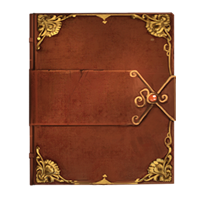
A far less known application of transfiguration is Alchemy, the branch of magic and an ancient science concerned with the study of the structure, composition, and magical properties of the four basic elements (earth, air, fire, and water), as well as the transmutation of substances. Intimately connected with potion-making, chemistry and transfiguration, there are many who hold it to be the most difficult magic.
School of Magic
| Spell Level | Spell |
|---|---|
| 2nd | Orbis, Reparifarge |
| 3rd | Ignis Laqueis |
| 4th | Lapifors |
Subclass Feature
Experimental Studies
You gain one of the following features at 1st level.
Anatomy Textbook Your understanding of a creature's inner workings aids your transfigurations. You can involve a living creature and consume a spell slot one level lower than what's required if a Transfiguration spell must be performed at a higher level to involve a living creature.
Intuitive Conversion is a term used to describe the conversion process. It's as though imagining a transformation is second nature to you. When you cast Vera Verto, it affects targets one size greater than the spell slot level specifies.
Tranfiguration Genius
You gain one of the following abilities at 6th level.
Animagus Transfiguration You can use your action to take on the shape of your Animagus form in a magical way (see Your Animagus Form below). This feature can be used twice. When you finish a short or long rest, you recoup your expended uses.
Elementalist. Your studies in alchemy have provided you with knowledge of the nature of elements. Any spell involving solely fire, water, earth, or air is automatically cast one level higher than the used spell slot, up to the greatest level of spell slots you have available.
Precise Discipline
You receive one of the following features when you reach the 10 level.
Partial Transfiguration. You've been able to compartmentalize your power thanks to your knowledge of magical theory. Any transfiguration spell can be cast as a partial transfiguration, changing only the parts of the target that are desired. Casting those spells at higher levels has the same powers and constraints.
Molding the Elements. You've figured out how to manipulate the elements to your advantage. Any spell that simply uses fire, water, earth, or air can be cast in a different shape from the original. The new shape cannot be larger than the original spell's approximate area or volume.
Magical Fortitude
You gain one of the following features at 14th level.
Enduring Constructs. You use more powerful magic to empower your creature constructs. Your transfigured or conjured living creations get an additional 1d6 damage and gain additional health points equal to your level.
Architectural Structures. You've figured out how to produce magical artifacts that are more powerful than the genuine thing. Your transfigured or conjured objects have twice the health points and can support three times the weight of their mundane counterparts before breaking.
Molecular Manipulation
At 18th level, you gain one of the following features.
Apex Predator It is necessary to transform into an Animagus. You've mastered the mystical skill of animagus transformations completely. Instead of taking an action, you can change on your turn as a bonus action. You can also choose two more creatures to be your animagus shapes, and you can keep these shapes hidden from the Ministry of Magic. You can choose any of these creatures to serve as your physical patron.
True Alchemist Your decades-long research into Flamel's and Dumbledore's texts has finally paid off. A Philosopher's Stone can be made by converting any metal into gold and extracting the Elixir of Life. You will not die of normal causes, and you will age more slowly. Your body only ages one year for every ten years that pass. At any given time, only one Philosopher's Stone can exist.
Your Animagus Form
You can stay in animagus form for a number of hours equal to half your transfiguration level (rounded down). You then revert to your normal form unless you expend another use of this feature. You can revert to your normal form earlier by using a bonus action on your turn. You automatically revert if you fall unconscious, drop to 0 hit points, or die.
While you are transformed, the following rules apply:
- The statistics of the beast replace your game statistics, but you keep your alignment, personality, intelligence, wisdom, and charisma scores. In addition to obtaining the creature's skill and saving throw abilities, you keep all of your own. Use the highest bonus if the monster has the same proficiency as you.
- You take on the beast's health points and hit dice as you transform. When you revert, your hit points are restored to what they were before you converted. If you revert after losing all of your hit points, any remaining damage is carried over to your normal form. If you suffer 10 damage in animagus form and only have 1 hit point remaining, you revert to human form and take 9 damage.
- You can't cast spells, and the actions you can conduct are limited by the physical capabilities of your beast form. Transforming does not interrupt your concentration or prevent you from doing actions that are part of an already-cast spell, but it does stop Dedication spells.
© Pottermore Limited



- Any features from your class, race, or other source are retained and can be used provided the new form is physically capable of doing so.
- Your equipment merges into your new form and has no effect until you leave the form
When you get the Animagus Transformation ability, you have to choose between two types of forms: combat and evasion. This is a one-time, permanent decision that will affect the stats and abilities of your animagus form.
Combat Form
A Combat Animagus form is a large or powerful predator that can hold its own against dangerous creatures. It is both sturdy and capable of fighting back with lethal force.
Your form must be classified into one of two categories: Land or Water. If your chosen animal breathes and lives underwater, it must be Water. Otherwise, it will be Land, an air-breathing animal that lives on land and is incapable of flight. This classification will determine certain statistics and traits of your animagus form's stat block.
Combat forms can be one of two sizes: Medium or Large. Your form's size should be determined by the creature's actual size; for instance, all dogs would be Medium, not Large. You need your HM's approval to choose a Large-sized animagus form, and transforming into a Large animal may mean you'll be unable to transform in cramped spaces.
Evasion Form
An Evasion animagus form is a little and inconspicuous mammal that does not usually draw a lot of notice. In the natural world, it is most likely prey, surviving by being quiet, mobile, and attentive. In combat, evasion forms are mostly useless, but they can hide, flee, and travel to difficult-to-reach places. Your form must fall into one of three categories: land, water, or air. Water must be your selected animal if it breathes and lives underwater. It must be Land if it is an air-breathing animal that lives on land and is unable to fly. It must be Air if it can fly for an extended period of time. The statistics and attributes of your animagus form's stat block will be determined by this classification. There are three sizes of evasion forms: tiny, small, and medium. The size of your shape should be determined by the creature's real size; for example, a cat is Tiny and a hawk is Small.
Combat Animagus
Medium or Large
- Armor Class 12 + PB
- Hit Points 15 + (15 times PB)
- Speed 30ft (Land), Swim 30ft (water)
STR DEX CON INT WIS CHA 18 (+4) 14 (+2) 17 (+3) (-) (-) (-)
- Saving Throws Constitution, Intelligence
- Skills Intimidation, Perception
- Senses darkvision 60 ft. (Land Only), blindsight 60 ft. (Water Only)
- Languages understands languages of its human form but can't speak
Bloody Frenzy. The animagus has advantage on melee attack rolls against any creature that doesn't have all its hit points.
Keen Senses (Land Only). he animagus has advantage on Wisdom (Perception) checks that rely on smell. Pack Tactics (Land Only) The animagus has advantage on an attack roll against a creature if at least one of the animagus's allies is within 5 ft. of the creature and the ally isn't incapacitated.
Water Breathing (Water Only) The animagus can breathe only underwater.
Actions
Maul Melee Weapon Attack: +[2 + PB] to hit, reach 5 ft., one target. Hit: [half PB]d10 + [2 times PB] piercing damage.
PB: Your Proficiency Bonus
Choosing an Animal
Your corporeal patronus is the same animal as your animagus form. From the creatures given in Appendix B: Patronus Rolling Tables, choose your animagus form. You should choose a patronus based on the animagus traits you prefer (Combat vs. Evasion, Land vs. Water vs. Air). You can't be a magical beast in your animagus form. You must re-roll your patronus animal if you roll a magical beast (91-00 or 0) while deciding your corporeal patronus.
Evasion Animagus
Tiny,Small or Medium
- Armor Class 10 + PB
- Hit Points [10 times PB] - 20 (Air Only),[15 times PB] - 30 (Land and Water Only)
- Speed 5 ft., fly 60 ft. (Air Only), 40 ft. (Land Only), 0 ft., swim 30 ft. (Water Only)
STR DEX CON INT WIS CHA 10 (+0) 16 (+3) 10 (0) (-) (-) (-)
- Saving Throws Wisdom, Dexterity
- Skills Investigation, Perception, Sleight of Hand, Stealth
- Senses darkvision 60 ft. (Air and Land Only), blindsight 60 ft. (Water Only)
- Languages understands languages of its human form but can't speak
Cunning Action. The animagus can take the Dash, Disengage, or Hide action as a bonus action on each of its turns.
Keen Senses (Land Only). he animagus has advantage on Wisdom (Perception) checks that rely on smell. Pack Tactics (Land Only) The animagus has advantage on an attack roll against a creature if at least one of the animagus's allies is within 5 ft. of the creature and the ally isn't incapacitated.
Water Breathing (Water Only) The animagus can breathe only underwater.
Actions
Rake *Melee Weapon Attack: +[PB - 3] to hit, reach 5 ft., one target. Hit: [1 + PB] slashing damage.
PB: Your Proficiency Bonus
Different Mobilities It's possible that varied speeds make sense for a land animal. Customize your animagus shape with your HM, such as adding an otter swim speed, a monkey climb speed, or a mole burrow speed. To compensate, the regular pace of 40 feet per second should be reduced to 30 feet per second.
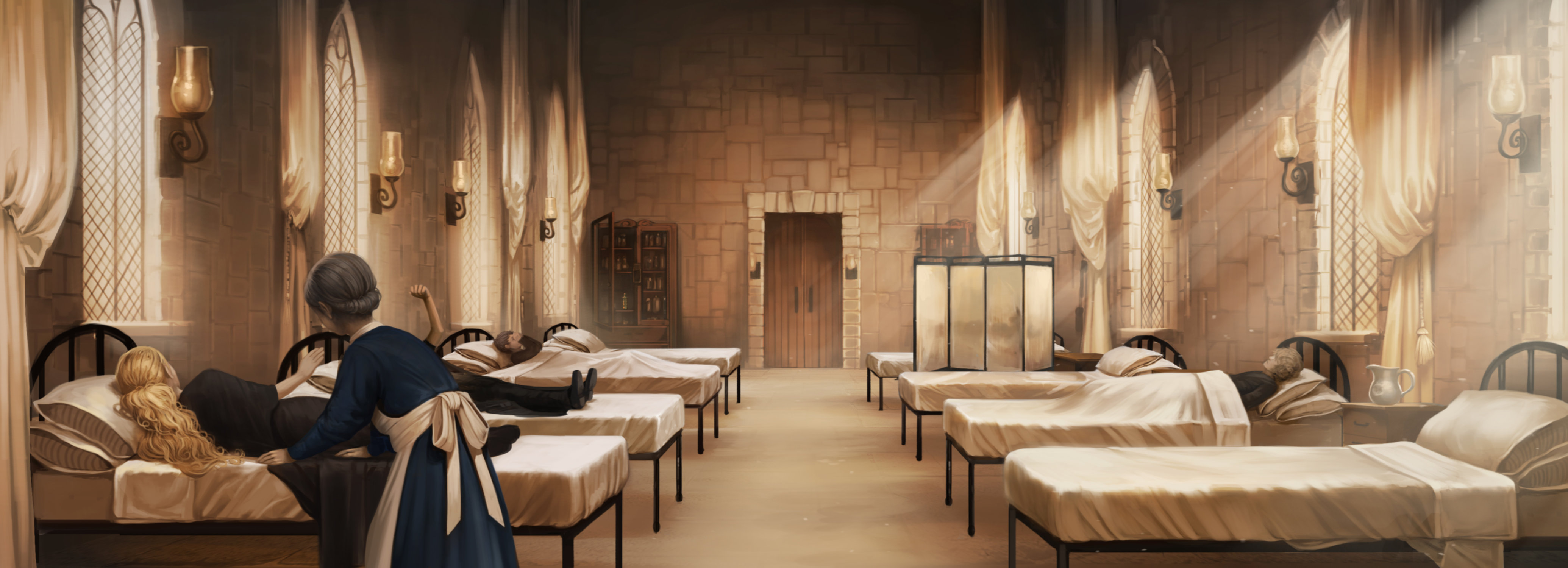
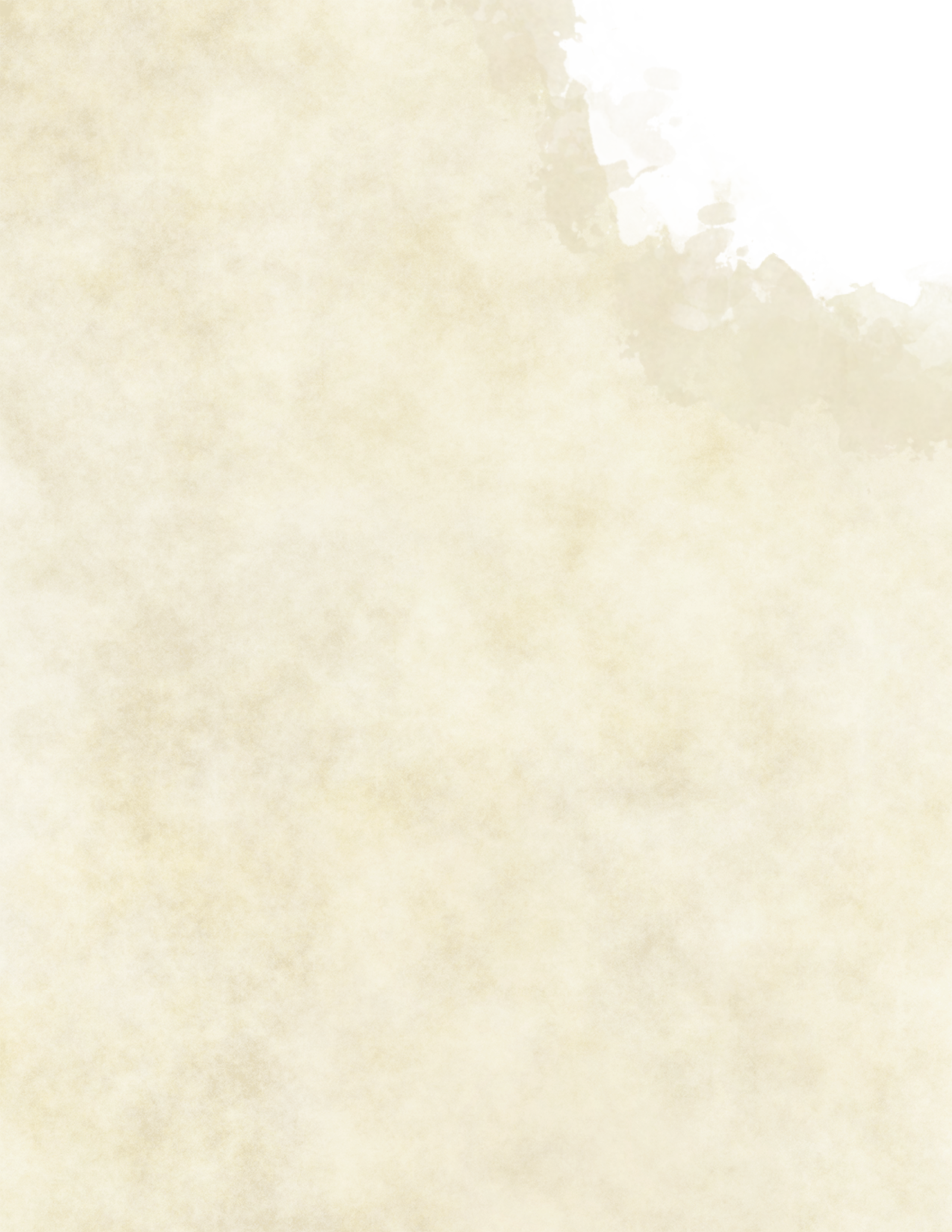
Healing
Healing magic focuses on healing one's physical and emotional health. Healing magic needs a wizard to be well-versed in magical conditions and their various cures, as there are many different spells and potions.
Healers
The wizarding world's counterpart of a Muggle doctor is a healer. They often work in St Mungo's Hospital for Magical Maladies and Injuries, England's primary wizarding hospital, tending to the ill and injured. Artifact mishaps, Dark monster bites, magical diseases, potion poisoning, and spell damage are all possibilities for healers.
Mediwizard
A first responder is a mediwizard; if a healer is a doctor, a mediwizard is a first responder. Mediwitches perform research, keep an eye on professional Quidditch players, accompany monster hunters, and fight to save lives in battle.
School of Magic
| Spell Level | Spells |
|---|---|
| Cantrip | Anapneo |
| 3rd | Intus Sunt |
| 6th | Protego Totalum, Vulnera Sanentur |
Subclass Features
Medicinal Adept
You gain one of the following features at 1st level. Natural Treatments. You've been studying potions and poultices since you're interested in healing. You master one of the following skills while learning the recipe for star grass salve: Herbology, Medicine, and Potion-Making are all terms used to describe the study of plants. Nerves that don't sway. Your research of injuries and magical ailments has given you a strong stomach and a steely determination. On saving throws against being afraid, you have an advantage.
Devoted Defender
You gain one of the following abilities at 6th level. Increased Recovery. Your healing spells have improved. When you cast a spell of 1st level or higher to restore hit points to a creature, the creature gains 2 + the spell's level in additional health points. Lasting Shielding. Your shield spells have improved. When you cast a defensive spell of 1st level or above that increases a creature's AC or awards temporary hit points, the creature gains 2 + the spell's level in temporary hit points, which remain for the duration of the spell's effect.
Noble Support
You receive one of the following features when you reach the 10 level. Song of the Phoenix You have a calm demeanor. To relieve someone's grief or help them maintain their composure, you gain proficiency in Persuasion and gain advantage on Charisma checks.
Empathic Connection. You have a strong sense of empathy for others' sorrow, which allows you to understand their suffering. Unless their hit points are entirely restored by the Healing spell or unless this effect would decrease your hit points to 0, when you perform a Healing spell on another creature, they gain additional hit points and you lose hit points equal to your proficiency bonus.
Combat Medic
You gain one of the following features at 14th level.
Professional Help. You've pushed your healing power to its limits to save lives on the front lines. The ranges of all of your Healing spells have been doubled. If a Healing spell had a touch range, it now has a range of 60 feet.
It's a People-Savings Thing. To protect others, you will put yourself in harm's way. If a spell or attack targets a creature within 10 feet of you, you can use your reaction to cast protego and jump in front of that creature, making yourself the new target of the attack. If the spell or attack affects both of you, and you step in front of that creature, the spell or attack will affect you twice.
Guardian
You gain one of the following features at 18th level.
Tears of the Phoenix The Phoenix admire your saint-like commitment to others and fortitude in the face of peril. A Phoenix will arrive in a burst of fire and shed tears into a vial for you if you spend 8 hours reaching out with your magic. All curses, diseases, and poisons that affect a creature are removed by Phoenix tears. The creature also recovers all of its hit points back. A Phoenix will only emerge and fill a vial with tears if you don't have any other tears, and if anybody other than you has the tears or tries to administer them, the phoenix tears will lose their healing abilities.
Pulse of Healing Your defensive and healing magic has merged, empowering nearby allies. Each non-hostile creature within 30 feet of you (including yourself) is healed a number of hit points equal to half its level whenever you cast a protective spell.
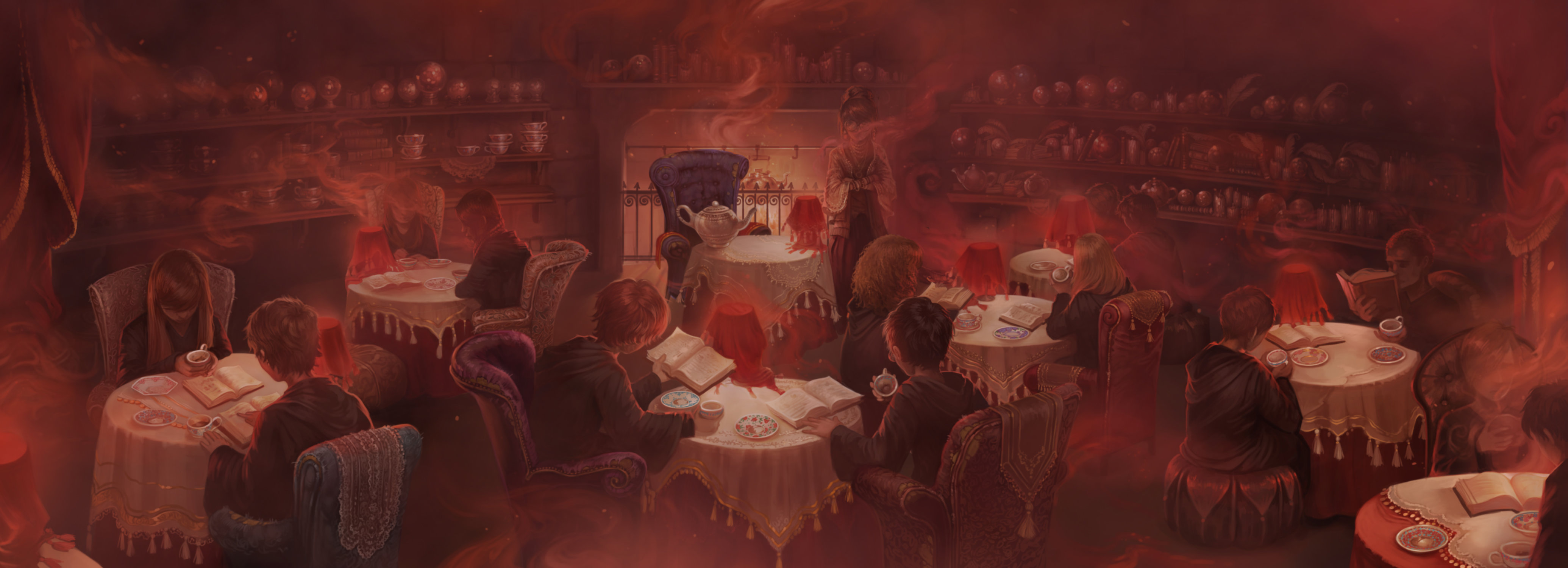
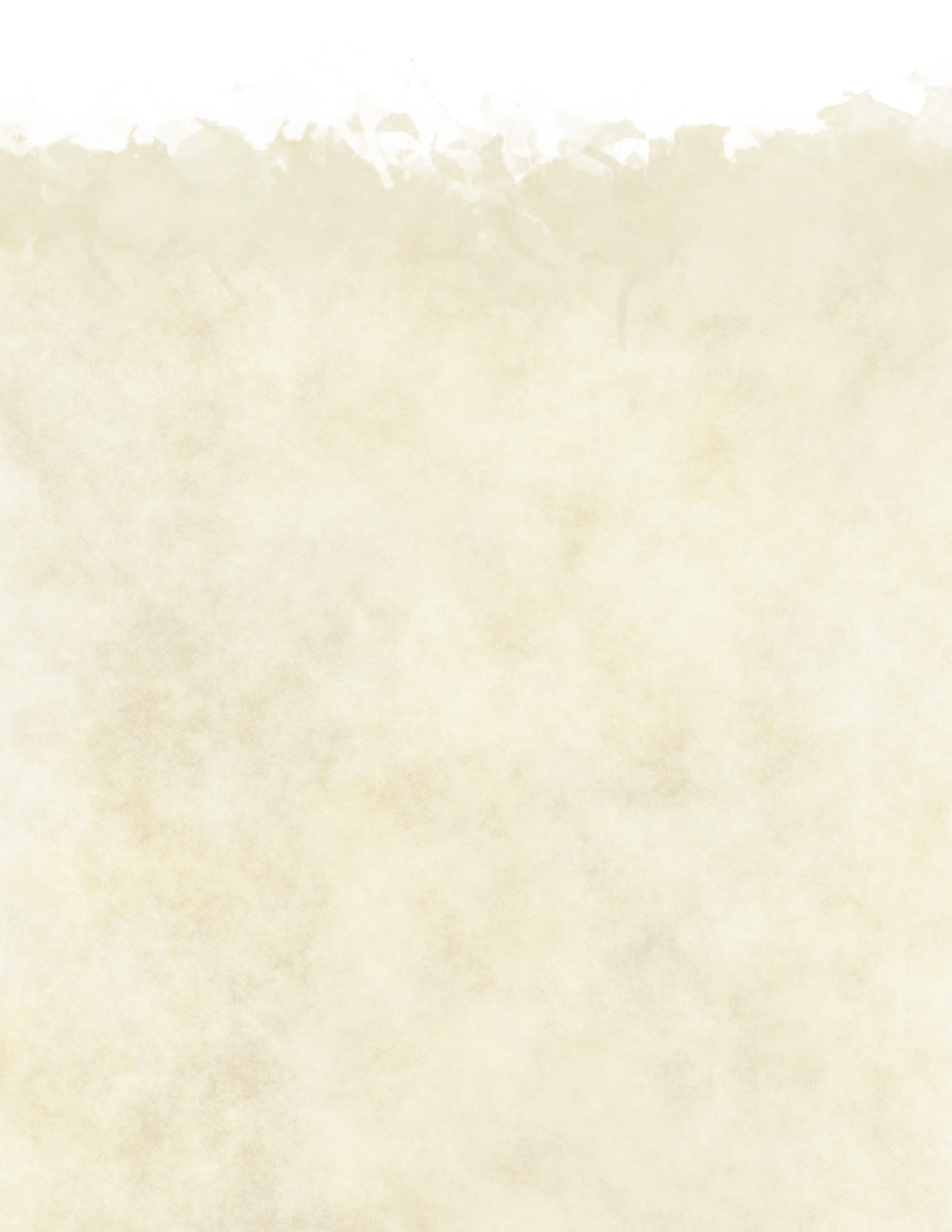
Divination
Divination is a unique branch of magic that entails gaining knowledge of past, present, and future happenings. It's an inexact science that involves reading tea leaves and interpreting omens. Some think that true divination requires meditation and a belief in the non-self in order to access the Inner Eye, whereas Centaurs have their own method of divination that involves studying the movement of planets, moons, and stars.
Phophet
A seer is a wizard or witch that has a natural aptitude for divination and can see into the future with their Inner Eye. While some seers unwittingly predict the futures of strangers, others will see their own futures. Because of the complexity of every action and its effects, Professor Trelawney is one of said seers found within the Wizarding World.
Legilimency
Legilimency is a lot more concrete skill that entails going through a person's mind's various levels and interpreting one's results. This is referred to as "mind-reading" by Muggles, although practitioners dismiss the phrase as foolish. They frequently use occlumency to protect your mind from the intrusion of other legilimens. Despite the existence of uncommon natural legilimens, it is a topic of study that necessitates a significant deal of devotion and care.
School of Magic Abilities
| Required Level | Ability |
|---|---|
| 2nd | Cleromancy |
| 3rd | Tasseomancy |
| 7th | Cartomancy |
| 9th | Crystal-gazing |
Subclass Features
Clairavoyant Studies
You gain one of the following features at 1st level.
Teller of the future. Astronomy, Tasseography, and Crystal Gazing have all piqued your interest. You obtain a Diviner's Kit as well as Diviner's Kit proficiency.
Danger Detection. You increase your Initiative by half your proficiency bonus and can't be startled while conscious.
Future Sight
You gain one of the following abilities at 6th level.
Foresight. You start to notice omens everywhere. Roll 2(D20) after a long rest and note the results as your two foresight rolls. Once per turn, you can use one of your foresight rolls to use that number when you or a creature you can see is about to make an attack roll, saving throw, or ability check. You lose and re-roll your foresight rolls after a long rest. You get another foresight roll at level 10, for a total of three.
Legilimency. To your list of known spells, you add the Legilimens spell. It doesn't count against your total amount of spells learned, and it can't be forgotten.
The Unseen
At 10th level, you gain one of the following features.
Palmistry. You've mastered reading life lines. After observing a creature for 30 seconds, as an action, you can sense its current hit points.
Skilled Occlumens. Legilimens and Veritaserum will not work on you, unless you allow it. You can choose to let Legilimens continue and reveal false information, false emotions, or false memories of your choosing.
Disclosed Intentions
You gain one of the following features at 14th level.
Aura's Sight. You may perceive colored auras around intelligent beings because of your Inner Eye connection. You can tell whether a person is aggressive, friendly, or neutral right away.
Eyes that dart around. Legitimacy is a must. You can cast Legilimens as a bonus action in combat to see what spell or action a creature is planning as long as their eyes are visible.
Arcane Knowledge
At 18th level, you gain one of the following features.
Eloquent Visions. Your Inner Eye link allows you to see vivid images of the near future. You can see a vision of your next action and its immediate effects as a bonus action, as well as roll any relevant dice and hear a description of the outcomes. If you take that action, your vision will become a reality, and you will be able to use all of the same dice. The vision is instantaneous and lasts no longer than a second. You won't be able to use this ability again until you've completed a long rest.
Master of Thoughts. Legitimacy is a must. Your ability to navigate thoughts is unrivaled. Legilimens can now be cast at will, verbally or non-verbally. Any attempt to counteract your legilimens spell will be futile.
Divination Abilities
The Diviner's Kit is required to accomplish all of the following skills. If you don't know how to use the Diviner's Kit, there's a 33% chance your ability will fail and you'll get a random reading. You will be completely unaware that your talent has failed. This is a secret roll made by the HM.
Cartomancy
A tarot card reading allows you to obtain insight into the past, present, and future of someone other than yourself. Your subject asks a single question on a specific goal, event, or activity that will take place within the next seven days. The cards will tell you a story if you pay 6 sorcery points and 10 minutes (a truthful reply from the HM). A short word, a cryptic rhyme, or an omen could be the meaning of the cards.
This ability ignores any variables that could influence the outcome, such as a different use of magic or the loss or gain of a companion.
If you do a reading two or more times before taking your next lengthy rest, you have a 25% chance of getting a random reading for each reading after the first. This is a secret roll made by the HM.
Cleromancy
As you cast rune-inscribed sticks or Grindylow bones on the ground, you focus your inner sight on them. You can expend 2 sorcery points to decipher their meaning and advise one being within 30 feet of you as an action. The target can roll a d4 and add the number rolled to the attack roll or saving throw the next time the entity performs an ability check, attack roll, or saving throw during the following 10 minutes. At any given time, this effect can only be used on one target. You lose concentration if you are concentrating on a spell while interpreting the sticks or bones.
Crystal-Gazing
You can view a certain creature by peering into the hazy depths of the crystal ball. The target must make a Wisdom saving throw, which is affected by how well you know the target and how close you are to it physically. If a target is aware that you're using this ability, it can choose to fail the saving throw if it doesn't want to be observed.
| Knowledge | Save Modifier |
|---|---|
| Secondhand (you have heard of the target) | 0 |
| Firsthand (you have met the target) | -5 |
| Familiar (you know the target well) | -10 |
-
The target is unaffected by a successful save, and you can't use this ability against it again for 24 hours.
-
This ability allows you to see as if you were there, within 10 feet of the target, if the target fails it's save. Your view follows the target for the duration, staying within 10 feet of it.
-
Instead of targeting a creature, you can choose a location you have seen before as the target of this ability. When you do, your view shows that location and doesn't move.
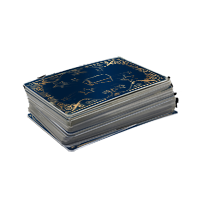
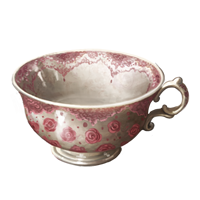
Tasseomancy
The future is revealed through a complicated interpretation of symbols and patterns found in the leftover tea leaves of a cup recently drank by someone other than yourself. After ten minutes of preparation, you can use three sorcery points to decipher the cup's omens and forecast the outcome of a specific course of action that your subject intends to conduct in the next 30 minutes. The HM choose one of the following omens:
- Weal, for good results
- Woe, for bad results
- Weal and woe, for both good and bad results
- Nothing, for results that aren't especially good or bad This ability ignores any variables that could influence the outcome, such as a different use of magic or the loss or gain of a companion.
If you cast the spell two or more times before taking your next long rest, you have a 25% chance of getting a random reading for each casting following the first. This is a secret roll made by the HM.
Magizoology
Magizoologists study magical creatures. As they work with many different creatures, the Department for the Regulation and Control of Magical Creatures at the Ministry of Magic created a classification of every known beast, being and spirit, ranging from X to XXXXX. Whether harmless or an untameable wizard-killer, magizoologists record the unique traits of beasts for wizardkind’s safety.
Dragon Caretaker
The dragon reserve is home to Dragon Caretakers, who look after the most famous XXXXX classified beast among wizards and Muggles alike. Spending day after day with them teaches dragon keepers to see through their ward's eyes and empathize with the predicament of many magical monsters. They are working to better comprehend dragons for the benefit of all.
Monster Hunters
Some, on the other hand, prefer an aggressive approach to protection. When a wizarding town is troubled by a rising settlement of trolls or suspects a vampire is to blame for their dead cattle, they resort to a monster hunter. Dark creatures spill into the magical being category, thus a monster hunter must contend with clever demi-humans as well as a wayward beast. It is up to the monster hunter whether to attack a problem with a flaming wand or seek a peaceful conclusion.
Subclass Features
Biological Studies
At 1st level, you gain one of the following features.
Keeper. You've learned about the injuries and physiologies of magical beings through your research. On monsters, you can use any known Healing spell.
Folio Bruti. You keep a personal beast journal in which you record your discoveries. When you contribute Magical Creatures proficiency to an Ability check, you can also add your Intelligence modifier as a bonus.
Wilderness Adept
At 6th level, you gain one of the following features.
Wizard's Companion. Your care and compassion towards creatures earns you their trust and respect. You can have a beast companion (see Your Beast Companion below).
Prepared Ambush. You've learned how to set a magical trap ready to be released while learning to confront dangerous adversaries. When you use a spell slot of 1st level or above to cast a spell that targets a single creature or location, you can weave that spell into your surroundings, having no immediate effect. The spell is cast when it is triggered by something you choose when you create the trap, such as entering an area, approaching a specific distance, or manipulating an object. You can also provide restrictions for creatures who do not activate the spell, such as specified persons or those who recite a specific password.
When you use this ability, you waste a spell slot that is two levels higher than the intended spell. To establish a 1st level spell as a magical trap, for example, you must expend a 3rd level spell slot.
If the spell requires a target, it can only target one triggering creature, or if the spell impacts an area, the area of effect is focused on the triggering creature. If the spell summons hostile creatures, they appear as close to the triggering creature as feasible and assault. If the spell necessitates focus, it lasts the entire period. A trap can be discovered by making a successful Intelligence (Investigation) check against your spell save DC or by casting Specialis Revelio.
Outdoorswizard
At 10th level, you gain one of the following features.
Survivalist. You are particularly adept at traveling through and surviving in natural environments.
You gain proficiency in either Herbology or Survival. Between Herbology and Survival, choose one that you're proficient in; your proficiency bonus is doubled when you make any check using that chosen skill. Also, you and your group gain the following benefits:
- Difficult terrain doesn’t slow your group’s travel.
- Your group can't be surprised while resting, as long as you are keeping watch.
- If a hit die roll is lower than their proficiency bonus, your group can reroll it once and take the higher result.
Monster Hunting. You have extensive expertise observing, tracking, and hunting wildlife, which enables you to rapidly adjust to dangers. If you spend ten minutes examining the traces of a beast or dark thing, you will instantly discover what the creature is, its size, and its speed. If you select this option, the creature becomes and remains Hunted until you use it again.
You have advantage on Wisdom checks to track a Hunted creature and on Intelligence checks to recall information about them. While you're within 30 feet of a Hunted creature that you're actively tracking, you can sense its direction relative to you and distance in feet away from you.
Beast Tamer
At 14th level, you gain one of the following features.
Beast Whisperer. You've learned the body language and social rituals of many beasts. As an action, you can use a Wisdom (Magical Creatures) check to attempt to soothe and calm a hostile beast. On success, the beast believes you mean it no harm and is neutral to the party. The effect is canceled if you or a party member inflicts any damage or condition on that beast or any identical beasts. You cannot use this feature again until you complete a short or long rest.
Exploited Vulnerabilities. You know exactly how to hit where it hurts. As a bonus action, you can call out an enemy's weaknesses to your allies. The target takes an additional 2d8 damage from your allies' damaging spells until the start of your next turn. You have a number of uses equal to your Intelligence modifier, and uses are restored after a long rest.
Sixth Sense
At 18th level, you gain one of the following features.
Draconic Empathy. Wizard's Best Friend required. Your dedication as a dragon-keeper allows you to deeply understand dragons. If you've ever raised a dragon from an egg, it will view you as an ally and can serve as your beast companion. Tamed dragons have their own hit points, hit dice, and ability scores, and use natural attack actions.
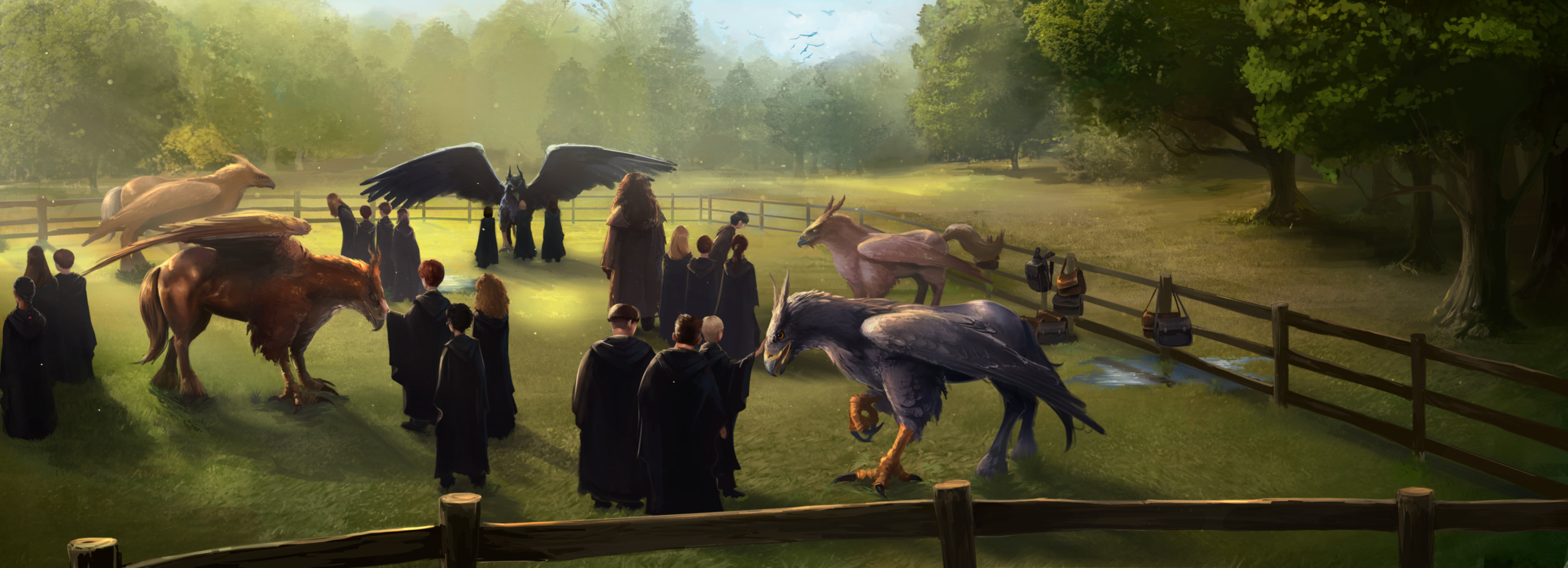


Hunter's Reflexes. You've polished your combat reflexes to a fine point. You can cast a spell with a casting time of one action, extra action, or reaction as a response to a creature you observe casting a spell or attacking. Before the target completes their action, conditions and damage are imposed. The target's attack roll suffers as a result of the damage delivered to it. You will not be able to utilize this function again until you have completed a short or long rest.
Your Beast Companion
Bonding with Your Beast
You can summon a non-hostile beast to serve as your beloved friend after 8 hours of unbroken dialogue and bonding. When you get this feature, you can choose any Small or larger solitary beast with a challenge rating of 1/4 or below as your companion. At any one moment, you can only have one beast friend.
Your beast companion does its best to heed your directions. During your turn, the beast moves and behaves, but you control its actions, decisions, attitudes, and so on. You and your friend are free to move and act in whatever sequence you choose. If you are incapacitated or unavailable, your companion will act on its own.
Your partner will battle beside you. While it is bound to you by this feature, the following rules apply:
- It cannot perform its normal attack actions, although it can make unarmed strikes. Its damage die for unarmed attacks is changed to a d4.
- In addition to its usual abilities, it is adept in two saving throws and two talents of your choice. It applies your proficiency bonus to attacks, saving throws, and abilities in which it is competent.
- It gains your proficiency bonus in addition to its armor class.
For each of your levels above 6th, your companion gains a hit die and its maximum hit points increase by an amount equal to its Constitution modifier plus your Wisdom modifier (minimum of 0). Whenever you gain an Ability Score Improvement, you can also allocate two points among your companion's ability scores. If your beast companion is ever slain or dismissed, a bond may be formed with another beast and that beast will progress according to your current level.
Commanding Your Beast
You train your companion to follow certain commands. You have a number of Command Dice equal to half your level (rounded down) + your Wisdom modifier. A command die is a d6, and it is used to issue specifically trained commands to beasts, including your beast companion.
You can issue one command at a time to a beast within 120 feet of you that can hear you; the beast must be able to hear you to follow the command, and the command is wasted if the beast doesn't fulfill it before the end of its next turn. When a command die is rolled, its use is expended. Your command die becomes a d8 when you reach 14th level.
You regain all command dice when you finish a long rest.
Beast Commands
Your companion knows two beast commands of your choice. It learns an additional command when you reach 14th level. You can also teach any friendly beast other than your companion only one beast command by spending at least 1 hour per day for 7 days training the creature.
Attack. You can use your bonus action and roll a command die to issue this command. Your companion can use its action to take one of its natural attack actions. However, it can't use its Multiattack action, if it has one. If the attack hits, add the result of the command die to the damage roll.
Down. You can use your bonus action and roll a command die to issue this command. Your companion uses its reaction to fall prone and attempt to Hide, adding the result of the command die to its Dexterity (Stealth) check. The first attack it makes while hidden in this way also adds the result of the command die to its attack roll.
Find. You can use your bonus action and roll a command die to issue this command. Your companion uses its reaction to attempt to Search for hidden creatures or objects, adding the result of the command die to the Search's skill check.
Grab. When your companion makes an opportunity attack, you can use your reaction and roll a command die to issue this command. If the attack hits, your companion can attempt to grapple the target as part of the attack, adding the result of the command die to the skill check it makes for the attempt.
Rush. You can use your bonus action and roll a command die to issue this command. Your companion uses its reaction to take the Help action, aiding the next attack against a creature within its reach that it can see. If this attack hits, add the result of the command die to the attack's damage.


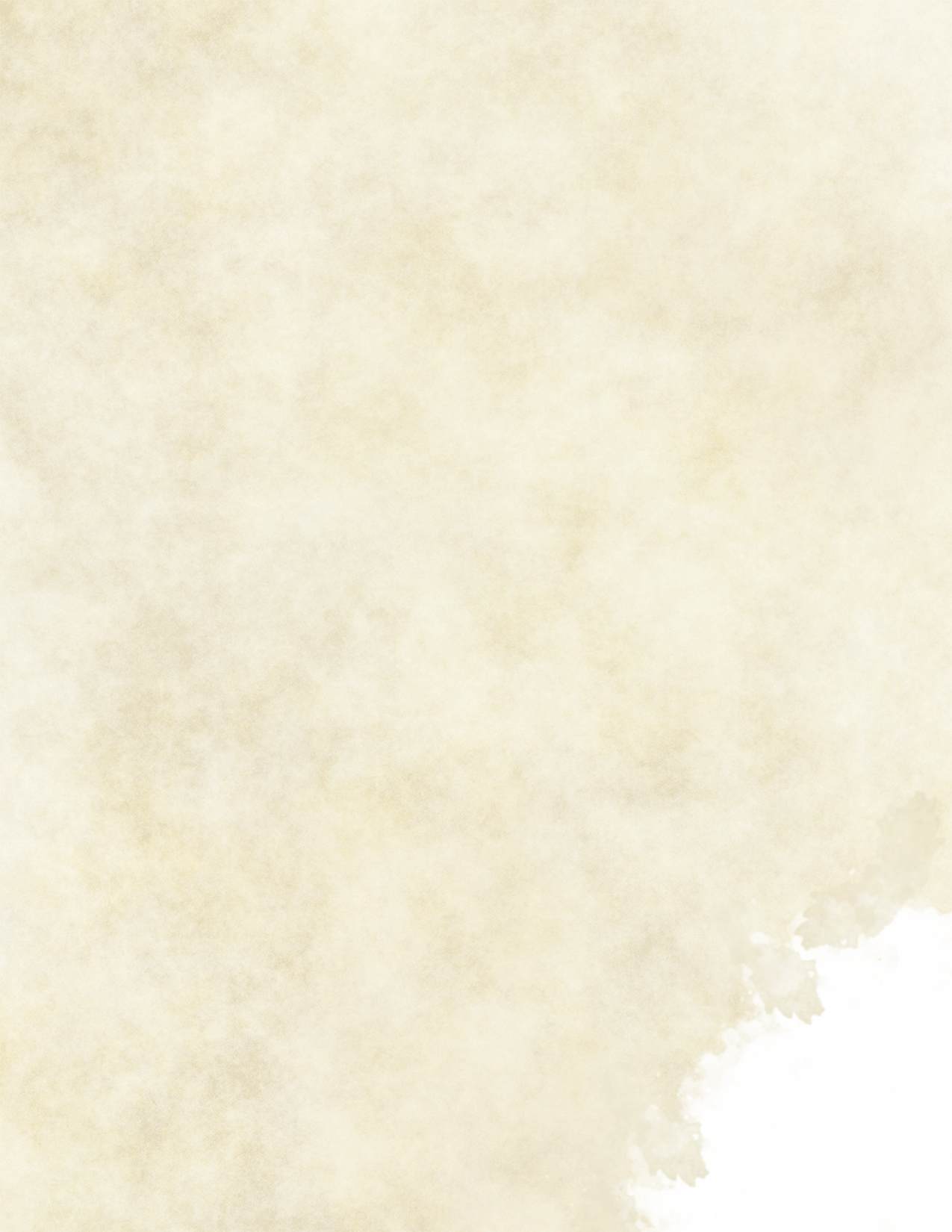
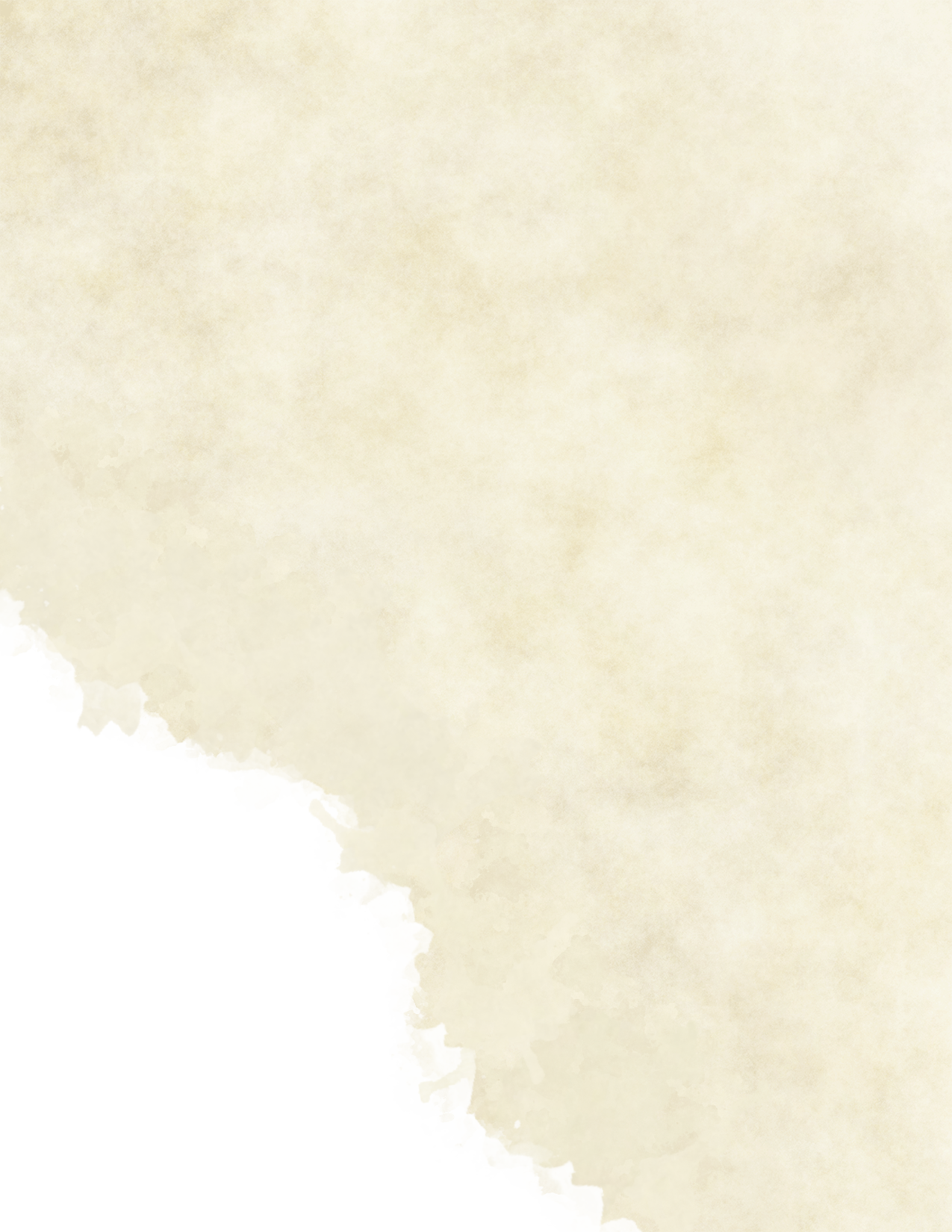
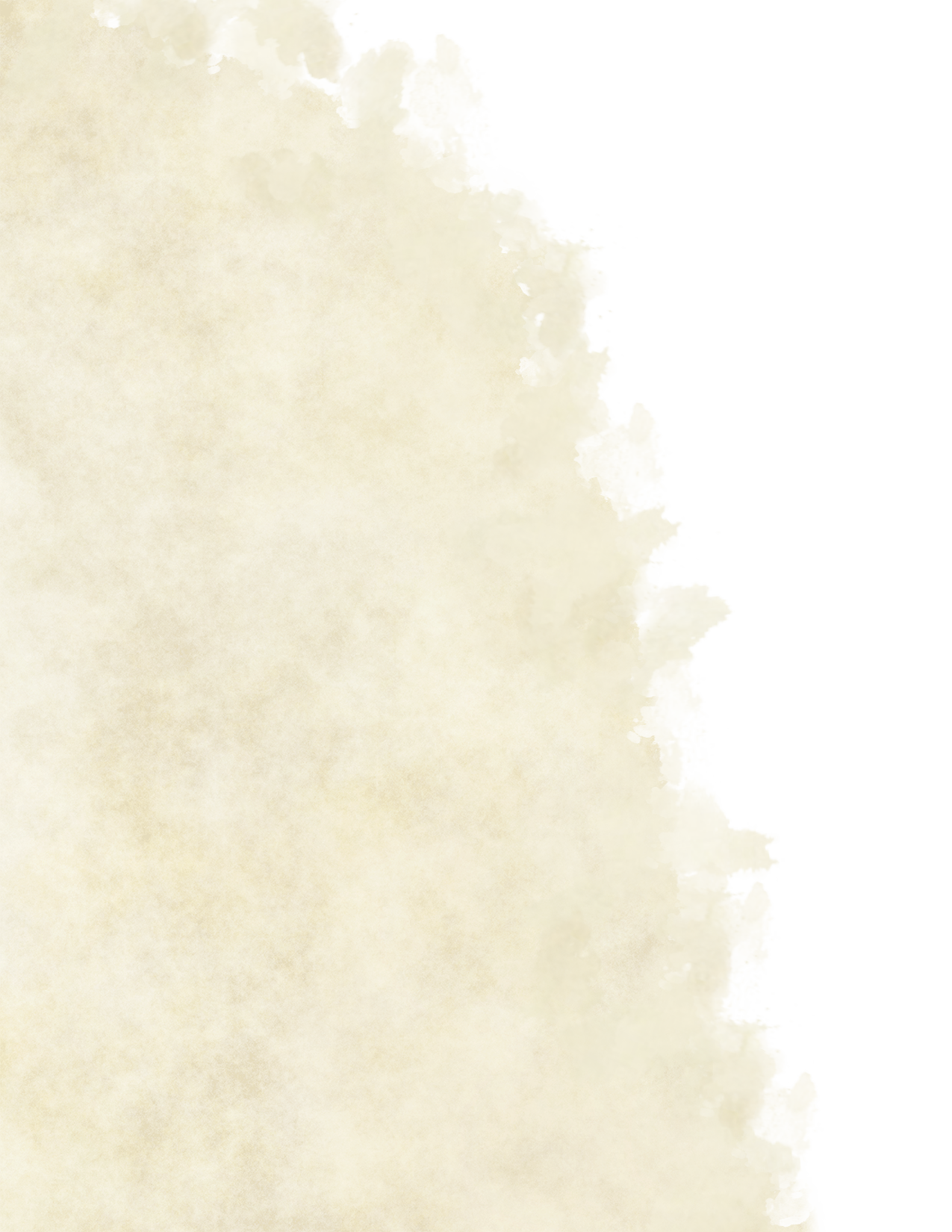


Chapter 4: Wands (Backgrounds)
Every witch and wizard purchases a wand before their first year at Hogwarts, and spends their entire life using that wand, unless they break it or win another wand in combat. The conduit through which their magic flows, a wand is a deeply personal and valuable possession to wizards. Those knowledgable in wandlore will often describe a wand as if it can think and feel. Every single wand is unique and its character will depend on the particular tree and magical creature from which it derives its materials. Moreover, each wand, from the moment it finds its ideal owner, will begin to learn from and teach its human partner.
@Renato Prezioso
Wand Components
Wood
Only a minority of trees produce wand quality wood (just as a minority of humans can produce magic), so it takes years of experience to tell which trees have the gift. A wand’s wood determines the core personality of the wand. As Garrick Ollivander said, the wand chooses the wizard, and so the wood of a wand tells you about the wizard who wields it.
Cores
Unicorn Hair
Unicorn hair generally produces the most consistent magic, and is least subject to fluctuations and blockages. Wands with unicorn cores are generally the most difficult to turn to the Dark Arts.
They are the most faithful of all wands, and usually remain strongly attached to their first owner, irrespective of whether he or she was an accomplished witch or wizard. Minor disadvantages of unicorn hair are that they do not make the most powerful wands (although the wand wood may compensate) and that they are prone to melancholy if seriously mishandled, meaning that the hair may ‘die’ and need replacing.
Phoenix Feather
Phoenix feather is the rarest core type. Phoenix feathers are capable of the greatest range of magic, though they may take longer than either unicorn or dragon cores to reveal this. They show the most initiative, sometimes acting of their own accord, a quality that many witches and wizards dislike.
Phoenix feather wands are always the pickiest when it comes to potential owners, for the creature from which they are taken is one of the most independent and detached in the world. These wands are the hardest to tame and to personalize, and their allegiance is usually hard won.
Uncommon Wand Cores
Garrick Ollivander creates just three types of wand cores, however there are many different wand cores available. Wands with cores of Kelpie hair, Dittany stalk, Kneazle whisker, Veela hair, coral, or even troll whisker may be found all over the world and in the stores of other wand manufacturers. These unique cores have a bad reputation for being unreliable, but every now and again, a rare core generates a wand that's a great match for a one-of-a-kind wizard.
Length
Many wandmakers just match the wand length to the size of the witch or wizard who will wield it, but this is an imprecise measurement that ignores many other essential factors. Longer wands may suit taller wizards, but they are drawn to larger personalities and those who use a more expansive and theatrical style of magic. More graceful and sophisticated spell-casting is favored by smaller wands. However, each component of wand construction should be regarded in isolation of the others, and the type of wood, core, and flexibility may either counteract or improve the features of the wand's length.
Most wands will be between nine and fourteen inches long. Extremely small wands (eight inches or less) and extremely long wands (over fifteen inches) are extremely unusual. In the latter example, the increased wand length was required due to a physical condition. Those with unusually short wands, on the other hand, are typically chosen because they have a flaw in their character, rather than because they are physically small.
Flexibility
Wand flexibility or rigidity denotes the degree of adaptability and willingness to change possessed by the wand-and-owner pair. Although, again, this factor ought not to be considered separately from the wand wood, core and length, nor of the owner’s life experience and style of magic, all of which will combine to make the wand in question unique.
Backgrounds
Wand woodlands are classified as backgrounds based on their basic characteristics, which help define your character and determine your background skill proficiencies and background feature. After you've chosen your background, pick a wood. Then choose your wand's remaining components: core, length, and flexibility. You can make any combination of Ideals, Bonds, and Flaws to suit your witch or wizard's personality. Make sure you read everything carefully and pick wisely, because "the wand chooses the Wizard/Witch."
Mix-and-Match Wandmaking
Like 5e, character backgrounds are entirely customizable. Even wand woods are mere suggestions, and any wood can be paired with any background. Feel free to work with your HM to modify an existing background or create a brand new one to bring your character concept to life.
If you want the experience of the wand choosing the wizard, all wand attributes have rolling tables for random selection.
| d100 | Wand Wood |
|---|---|
| 1-2 | Acacia |
| 3-6 | Alder |
| 7-9 | Ash |
| 10-11 | Apple |
| 12-13 | Aspen |
| 14-16 | Beech |
| 17 | Blackthorn |
| 18-19 | Black Walnut |
| 20-22 | Cedar |
| 23 | Cherry |
| 24-25 | Chestnut |
| 26-28 | Cypress |
| 29-32 | Dogwood |
| 33-34 | Ebony |
| 35 | Elder |
| 36-37 | Elm |
| 38-40 | English Oak |
| 41-44 | Fir |
| 45-47 | Hawthorn |
| 48-50 | Hazel |
| 51 | Holly |
| 52-54 | Hornbeam |
| 55-57 | Larch |
| 58-60 | Laurel |
| 61-63 | Mahogany |
| 64-66 | Maple |
| 67-69 | Pear |
| 70-72 | Pine |
| 73-75 | Poplar |
| 76-77 | Red Oak |
| 78-79 | Redwood |
| 80-83 | Rowan |
| 84-85 | Silver Lime |
| 86-88 | Spruce |
| 89-91 | Sycamore |
| 92-93 | Vine |
| 94-97 | Walnut |
| 98-99 | Willow |
| 00 | Yew |
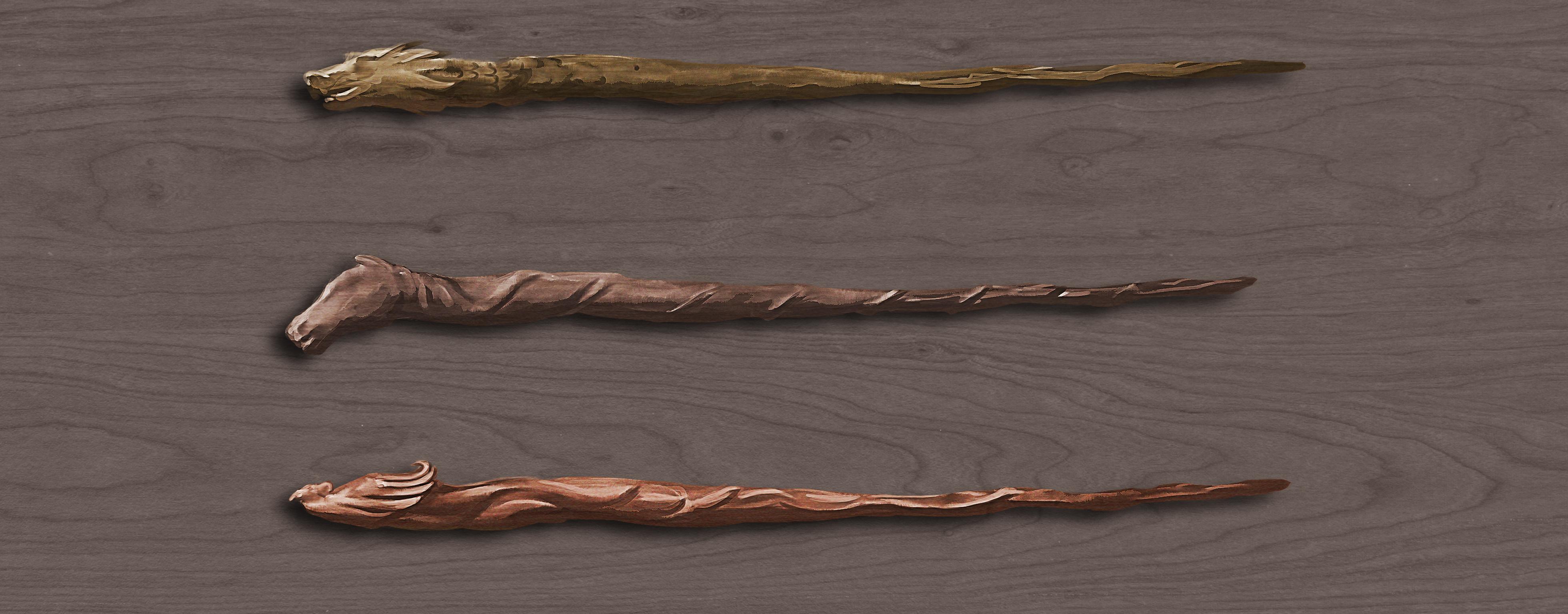



Artisan
You see yourself as an observer of the world around you, recording little glimpses of it. You express yourself through such flashes, satisfying your drive to establish and communicate your own distinct point of view. Your selected media may be magically created moving images, a painted portrait with personality, a mystical sculpture, or even enchanted maps.
Skill Proficiencies: Insight, Performance
Tool Proficiencies: Enchanted Paintbrush, Quill, or Instrument.
Background Feature: Apprentice
Although you aren't yet ready to create creative works, you have enough knowledge and fundamental abilities to start an apprenticeship with a mentor, if you can find one willing to teach you. You've also gotten better at hand-eye coordination and precision work.
| d6 | Wood (Personality Traits) |
|---|---|
| 1-2 | Pine |
| 3-4 | Red Oak |
| 5-6 | Sycamore |
Pine
Pine wands always select an autonomous, individual master who is viewed as a loner, interesting, and sometimes secretive. Pine wands like being used creatively and, unlike some others, will adapt to new ways and spells without complaint. Many wandmakers believe that pine wands can detect and work best for owners who are destined to live a long life. The pine wand is one of the nonverbal magic sensitive wands.
Red Oak
The uneducated frequently assert that red oak is an unmistakable indicator of its owner's fierce temper. In truth, the actual match for a red oak wand has extraordinarily quick responses, making it an ideal duelling wand. Less frequent than English oak, its ideal master is quick-witted, versatile, and often the developer of distinctive, signature spells, as well as a competent fighter.
Sycamore
The sycamore is a questing wand, yearning for adventure and losing its brightness in ordinary tasks. If allowed to get 'bored,' these can combust, and many old witches and wizards are alarmed to see their wand bursting into flame as they ask it to retrieve their slippers one more time. The ideal owner for the sycamore is curious, lively, and adventurous, and with such an owner, it exhibits a highly valued ability to learn and adapt.
| d6 | Core (Ideal) |
|---|---|
| 1-2 | Unicorn Hair: Beauty. When I innovate, I make the world a better place than it was before. |
| 3-4 | Dragon Heartstring: People. I want my art to have an influence on everyone who sees it. |
| 5-6 | Phoenix Feather: Honesty. Art should be a reflection of the soul; it should emerge from inside and express who we truly are. |
| d6 | Length (Bond) |
|---|---|
| 1-2 | 10": I owe a great deal to my mentors for developing me into the person I am today. |
| 3-4 | 11.5": I have a family, but I don't know where they are. I want to see them again one day. |
| 5-6 | 13": My most prized item is my camera/easel/instrument, which reminds me of someone I like. |
| d6 | Flexibility (Flaw) |
|---|---|
| 1-2 | Reasonably Firm: In fact, the entire universe revolves around me. |
| 3-4 | Slightly Swishy: In a life lived to the utmost, there is no space for prudence. |
| 5-6 | Quite Yielding: I'll go to any length to get glory and notoriety. |
Variant Artisan: Thespian
You feel obliged to convey yourself, your experiences, and your feelings even more than visual artists. While you are not immune to periods of doubt and performance anxiety, you appear to be rather extraverted in general. You've discovered your calling in at least one of the performing arts, such as singing, dancing, playing an instrument, or performing in a magical theater.
Variant Feature: Dramatic Entrance
Because you have a flare for the theatrical, you can always accomplish things in the most eye-catching way imaginable. This frequently serves as a fantastic distraction or begins to gather a crowd.
Bookworm
You've always had your nose in a book, whether it's to worry over your homework or to escape reality into the realm of fantasy. In a library, you feel at ease and frequently solve difficulties via research and study. You've learned things, visited places, felt emotions, and seen sights much beyond your own experiences because you absorb so much from others.
Skill Proficiencies: Magical Theory, Investigation
Background Feature: Professor's Pet
Professors and people in positions of power are more likely to view your actions and intentions favorably since you are a bright individual. Because of your academic reputation, you may be in a better position to solicit their assistance or have plausible deniability.
| d4 | Wood (Personality Traits) |
|---|---|
| 1 | Beech |
| 2 | Hornbeam |
| 3 | Vine |
| 4 | Walnut |
Beech
A true match for a beech wand will be smart beyond his or her years if young, and rich in insight and experience if fully grown. For the narrow-minded and intolerant, beech wands do very poorly. When correctly matched, the beech wand is capable of a level of finesse and craftsmanship seldom seen in any other wood, which accounts for its illustrious reputation.
Hornbeam
Hornbeam, a fine-tuned and sentient wand, chooses a brilliant witch or wizard for its life partner with a single, pure devotion. Hornbeam wands adapt faster to its owner's magic style and become so individualized, so rapidly, that others will find them incredibly difficult to use. They, too, acquire their owner's code of honor and will refuse to undertake deeds, good or bad, that contradict their master's ideals.
Vine
Vine wands are among the rarer sorts, and their ideal owners are almost usually witches or wizards who seek a bigger purpose, have a vision beyond the ordinary, and regularly astonish people who think they know them best. Vine wands appear to be particularly drawn to people with hidden depths, and they frequently find a match instantaneously.
Walnut
Walnut wands are frequently seen in the hands of extremely intelligent magical thinkers and inventors; this is a beautiful wood with extraordinary plasticity and adaptability. Once subdued, walnut wands will do any duty desired by their owner, assuming the user is of sufficient brilliance. In the hands of a witch or wizard with no conscience, this makes for a genuinely devastating weapon, since the wand and the wizard may feed on one other in an unhealthy way.
| d6 | Core (Ideal) |
|---|---|
| 1-2 | Unicorn Hair: Creativity. The world desperately needs new ideas and aggressive action. |
| 3-4 | Dragon Heartstring: Knowledge. Knowledge is the way to power and self-improvement. |
| 5-6 | Phoenix Feather: Self-improvement. The purpose of a scholarly life is to better oneself. |
| d6 | Length (Bond) |
|---|---|
| 1-2 | 10": My life's work should consist of magical textbooks pertaining to a certain area. |
| 3-4 | 12.5": I've spent my entire life looking for an answer to a certain question. |
| 5-6 | 13": My family possesses an old tome with horrible secrets that must not fall into the hands of the wrong people. |
| d6 | Flexibility (Flaw) |
|---|---|
| 1-2 | Unyielding: Discovering information is worth any cost, including a piece of my humanity. |
| 3-4 | Reasonably Supple: I allowed my desire to win conflicts take precedence over friendships and peace. |
| 5-6 | Pliant: I prefer difficult solutions over obvious ones. |
Variant Bookworm: Wunderkind
You've always had unusual command of your magical powers. Things come easy to you while others struggle. The ease with which you acquire information or abilities might lead to conceit or naiveté. You've also been saddled with higher expectations, and whether you started wizarding school early or skipped a year, you're used to being younger than your contemporaries.
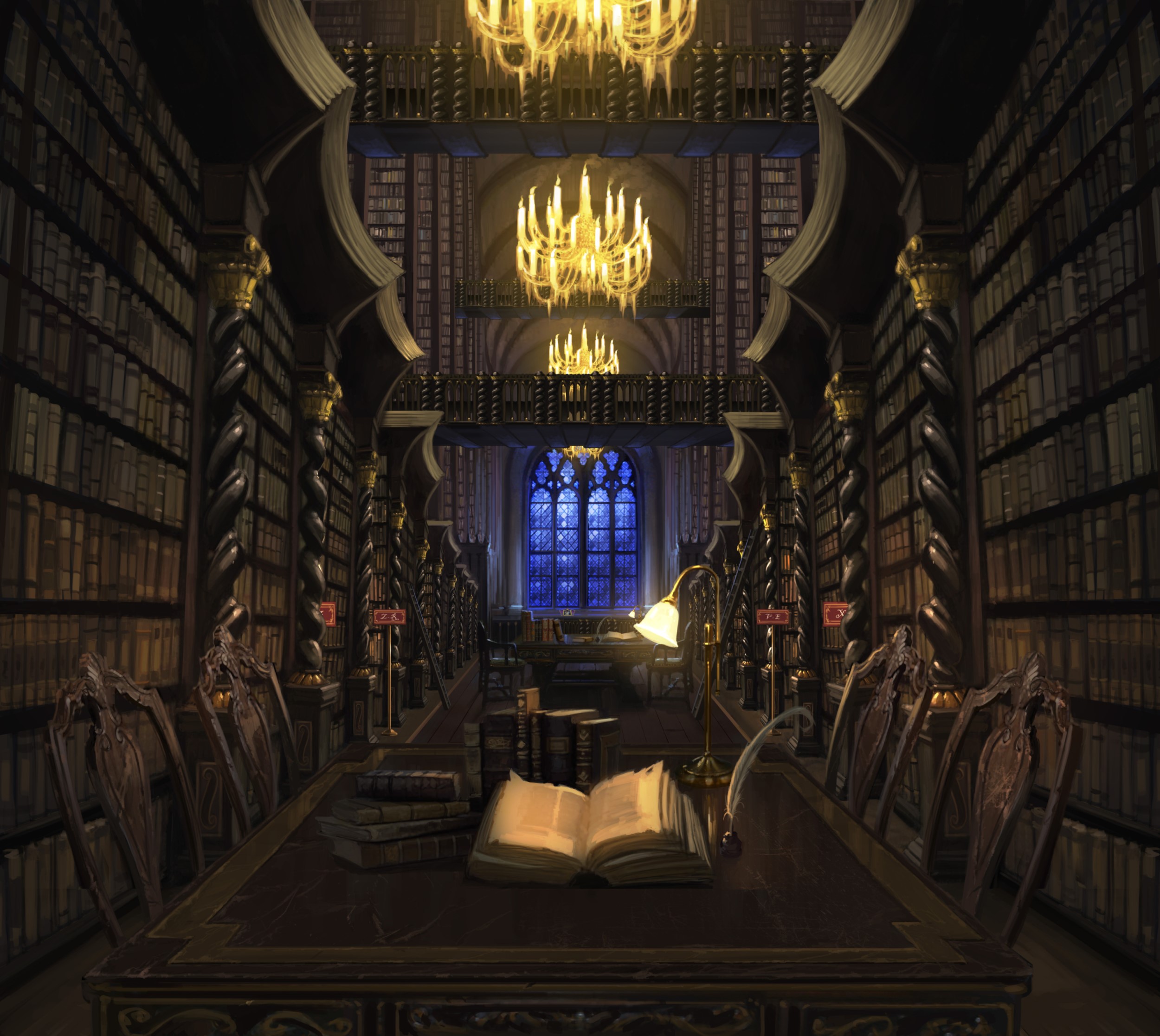


Fantasizer
Your dreams consume your mind, distracting you from all of life's possibilities. Introspection comes naturally to you, and you honestly don't understand how someone can live without seeking purpose, delving deeply into society's principles, or being filled with awe. You may even feel out of place in a society where everyone is concerned with monetary achievement and simply getting through the day.
Skill Proficiencies: Insight, Muggle Studies
Tool Proficiencies: Astronomer's Tools
Background Feature: Astronomer
Many of your nights are spent looking up at the stars, pondering your existence. You're a natural astronomer, and you agree with the Centaurs on the value of the skies. Because of your affinity for the ethereal, ghosts are more trusting of you and more generous with information.
| d10 | Wood (Personality Traits) |
|---|---|
| 1-2 | Black Walnut |
| 3-4 | Cedar |
| 5-6 | Hazel |
| 7-8 | Redwood |
| 9-10 | Silver Lime |
Black Walnut
Black walnut wands, which are less prevalent than normal walnut wands, desire a master with good intuition and keen understanding. Black walnut is a beautiful wood, but it is not the simplest to work with. When partnered with a true, self-aware owner, the wand transforms into one of the most faithful and remarkable wands of all time, with a special flare for all types of charm work.
Cedar
Never suited to the easily duped, the cedar wand thrives where there is foresight and awareness. Some wandmakers would go even farther, stating that one should never cross the owner of a cedar wand, particularly if damage is done to their allies or relatives. The witch or wizard who is well-matched with cedar has the potential to be a terrifying enemy, which frequently surprises those who have foolishly challenged them.
Hazel
Hazel is a sensitive wand that frequently reflects its owner's emotional condition. It works best for a master who knows and can regulate their own emotions. Others should use caution when touching a hazel wand if its owner has been furious or disappointed, as the wand will collect and expel such energy in an unpredictable manner. It is capable of exceptional magic in the hands of the skilled, and it is so dedicated to its owner that it frequently 'wilts' towards the end of their master's life.
Redwood
Because of its reputation for bringing good fortune, wand-quality redwood is in scarce supply. As is customary in wandlore, the crowd gets it backwards: redwood wands are not inherently fortunate, but are highly attracted to witches and wizards who already have the excellent ability to land on their feet, make the correct choice, and profit from disaster. When such a witch or wizard carries a redwood wand, one may expect to hear about amazing escapades.
Silver Lime
This rare and very desirable wand wood was very popular in the nineteenth century, and demand continually outstripped supply. The reasons for the desire of these wands resided not only in their extraordinarily lovely look, but also in their reputation for functioning well for Seers and those proficient in Legilimency, both secret skills, which gave the holder of a silver lime wand tremendous prominence.
| d6 | Core (Ideal) |
|---|---|
| 1-2 | Unicorn Hair: Honesty. Lies, hypocrisy, and inauthenticity are the most spiritually destructive to a person's soul. |
| 3-4 | Dragon Heartstring: Change. Everything, whether good and evil, must come to an end. The nature of existence is change. |
| 5-6 | Phoenix Feather: Independence. My spirit is liberated; I do what I want, when I want. Nobody else has power over my life. |
| d6 | Length (Bond) |
|---|---|
| 1-2 | 9.5": I'm looking for enlightenment, yet it constantly seems to evade me. |
| 3-4 | 11.5": I see what others are blind to, I perceive the dangers others don't and I need to open their eyes. |
| 5-6 | 14": I have reoccurring nightmares about a dreadful tragedy in the future and will go to any length to avoid it. |
| d6 | Flexibility (Flaw) |
|---|---|
| 1-2 | Rigid: I can't keep a secret for the life of me or anybody else. |
| 3-4 | Slightly Yielding: In my beliefs and philosophy, I have strong principles or morals. |
| 5-6 | Surprisingly Swishy: I am easily sidetracked, and if I have a plan, I will abandon it. I'll disregard it if I don't forget about it. |
Nemophilist
Your youth was spent outside, climbing trees or catching insects. You've always had a strong connection to all kinds of life around you, which pushes you to be respectful of other beings. Going without fresh air might make you feel confined, yet a little greenery and a glimmer of sunshine can lift your spirits.
Skill Proficiencies: Survival, Magical Creatures
Tool Proficiencies: Herbologist's Tools
Background Feature: Value All Life
Your sympathetic disposition has won you a reputation. Magical creatures and clever beasts are more likely to treat you well or give you a platform. If they have any biases towards wizards, you will have the opportunity to disprove those prejudices.
| d4 | Wood (Personality Traits) |
|---|---|
| 1 | Chestnut |
| 2 | English Oak |
| 3 | Maple |
| 4 | Poplar |
Chestnut
This is an unusual, multi-faceted wood that absorbs a lot of color from the individual who owns it. The chestnut wand is drawn to witches and wizards who are expert tamers of magical monsters and natural flyers. However, three previous Wizengamot chiefs have wielded chestnut and unicorn wands, indicating a preference for persons interested with various forms of justice.
www.logartis.info
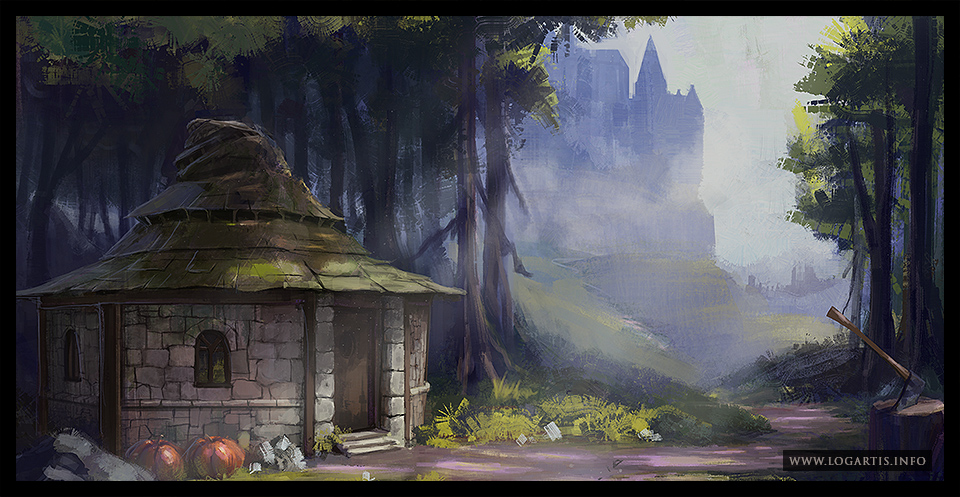
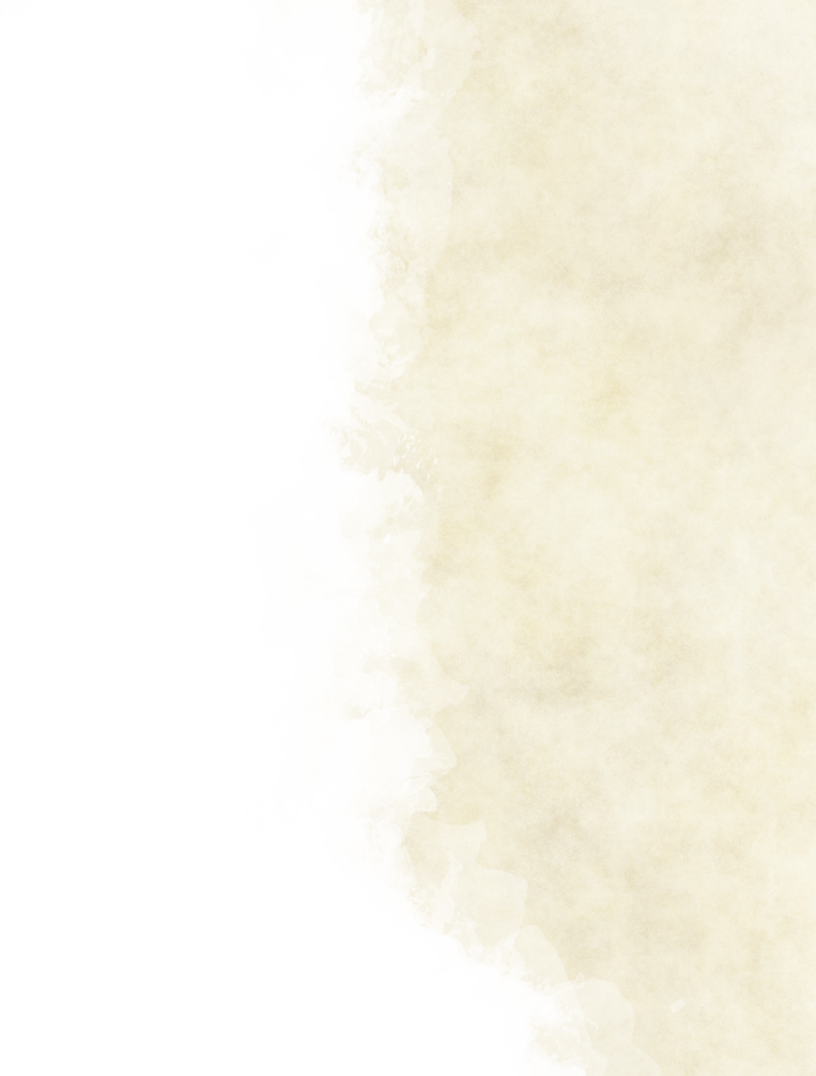


English Oak
A wand for good and difficult times, this is a buddy as devoted as the magician who deserves it. English oak wands want companions who are strong, courageous, and devoted. Less well-known is the proclivity of owners of English oak wands to have strong intuition and, in many cases, a connection with the natural world's magic, with the creatures and plants required by wizards.
Maple
Witches and wizards picked by maple wands, a lovely and attractive wood, are nature adventurers and explorers, according to Garrick Ollivander. They are not stay-at-home wands, and they prefer their user to be ambitious, or else their power would get stale. Fresh challenges and frequent changes of setting lead this wand to truly shine, burnishing itself as it rises in ability and prestige alongside its companion, earning its reputation as the wand of outstanding achievers.
Poplar
Poplar wands may be counted on to be consistent, strong, and powerful. Some wizards remark that a popular wand has never selected a politician since it is always happiest when working with a witch or wizard with a strong moral worldview. Eldritch Diggory and Evangeline Orpington, two of the Ministry's most competent Ministers for Magic, were both owners of excellent, Ollivander-made poplar wands.
| d6 | Core (Ideal) |
|---|---|
| 1-2 | Unicorn Hair: Redemption. Everyone possesses a spark of goodness, and one should always endeavor to perceive it. |
| 3-4 | Dragon Heartstring: Community. Everyone must look out for one another since no one else will. Have faith that your community will always be there for you. |
| 5-6 | Phoenix Feather: Nature. The natural world is more valuable than all of human civilisation combined. |
| d6 | Length (Bond) |
|---|---|
| 1-2 | 10.5": An affront to pristine wilderness is an affront to me. |
| 3-4 | 11": My life is thanks to the wizard who took me in after my parents perished. |
| 5-6 | 13.5": It is my responsibility to protect and nurture endangered species. |
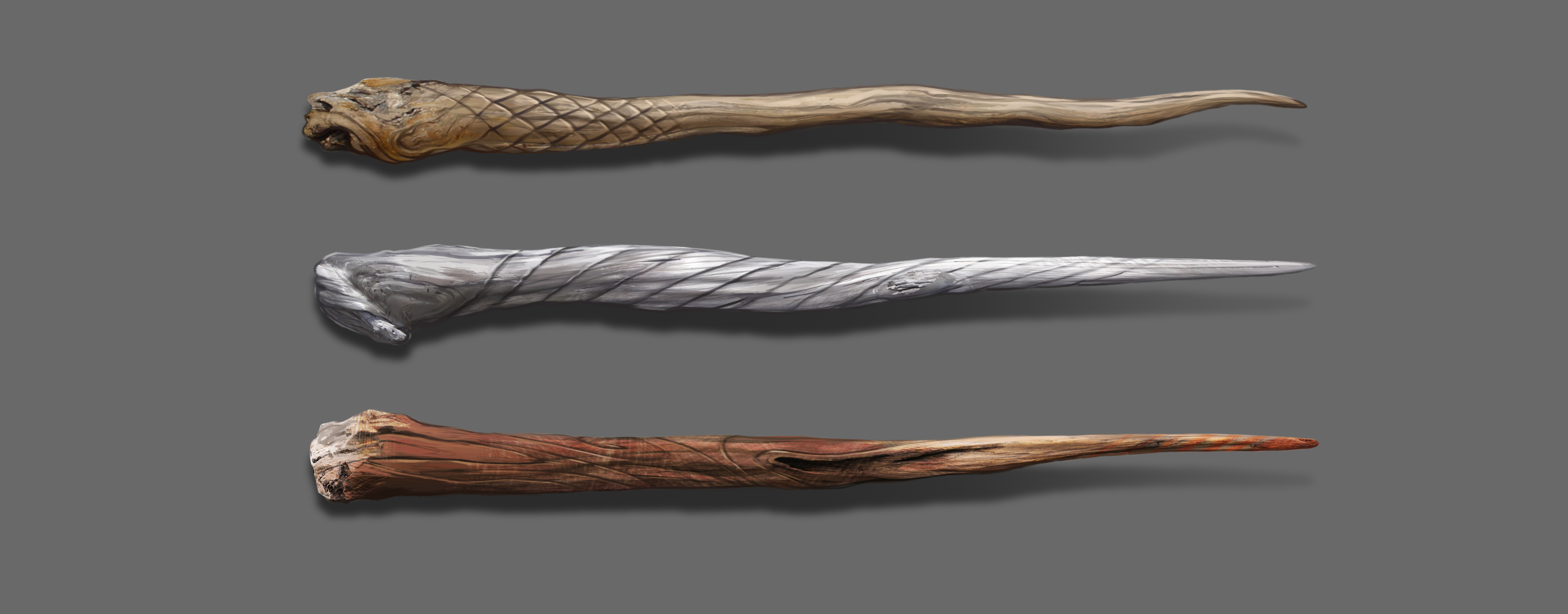



| d6 | Flexibility (Flaw) |
|---|---|
| 1-2 | Brittle: Strangers pique my interest, and I think the worst of them. |
| 3-4 | Slightly Springy: I speak fairly carelessly, without really thinking about what I'm saying. |
| 5-6 | Quite Bendy: Don't expect me to save people who are unable to save themselves. Nature's means of ensuring that the strong prosper and the weak perish. |
Dullard
Maybe you're just a clumsy person, or maybe you inherited a particularly minor curse. Whatever the reason, you are always caught up in mistakes and errors. You are hypervigilant and careful of your surroundings since being accident-prone is a highly hazardous thing to be in the wizarding world.
Skill Proficiencies: Medicine, Perception
Background Feature: Walking Disaster
You've seen so many situations go terribly astray that you've developed the ability to forecast all the possible outcomes. There will be no shortage of options if you want to obstruct anything or cause a risky mishap.
| d6 | Wood (Personality Traits) |
|---|---|
| 1-2 | Ash |
| 3-4 | Cypress |
| 5-6 | Willow |
Ash
Because the ash wand clings to its one true master, it should not be passed on or gifted from the original owner, as it will lose power and expertise. Witches and wizards who are most suited for ash wands are not easily diverted from their ideas or goals. A bold or overconfident witch or wizard, on the other hand, will be disappointed by its results. The perfect owner may be obstinate and bold, but he or she will never be brash or arrogant.
Cypress
Historically, cypress wands have been connected with nobility and dying a hero's death. Fortunately, owners of cypress wands are rarely called upon to lay down their life, but many of them would undoubtedly do so if called upon. Cypress wands find their soulmates among the courageous, daring, and self-sacrificing: people who are unafraid to confront the darkness in their own and others' natures.
Willow
Willow is a rare wand wood with healing power, and their ideal possessor frequently has some (usually unfounded) insecurity, no matter how hard they try to disguise it. The willow wands, with their attractive look and well-founded reputation for enabling advanced, nonverbal magic, have constantly chosen individuals with the most potential, rather than those who believe they have little to learn.
| d6 | Core (Ideal) |
|---|---|
| 1-2 | Unicorn Hair: Greater Good. The most noble cause is to lay down our lives to defend others. |
| 3-4 | Dragon Heartstring: Respect. All people, rich or poor, powerful or weak, magical or muggle, deserve respect. |
| 5-6 | Phoenix Feather: Sincerity. There's no good pretending to be something I'm not. |
| d6 | Length (Bond) |
|---|---|
| 1-2 | 9": Someone is depending on me, and I'll never forgive myself if I let them down. |
| 3-4 | 12.5": I have to prove to that I'm not a disappointment to my family, mentors or peers. |
| 5-6 | 14": I will be fiercely loyal to anyone who doesn't see me for my faults, but for who I am. |
| d6 | Flexibility (Flaw) |
|---|---|
| 1-2 | Inflexible: I am slow to trust that others' words are sincere, because of some bad experiences. |
| 3-4 | Slightly Pliant: I follow the rules, even if they aren't what's best. |
| 5-6 | Very Supple: I'm always putting my foot in my mouth, invariably insulting or embarrassing others. |
Variant Feature: Punching Bag
You may lack coordination, but at least you know how to take a punch. You are resistant to harm caused by falls, traps, or inanimate objects. You also suffer disadvantage on saving throws to avoid or resist traps, any rolls to detect traps, and Dexterity (Acrobatics) checks.
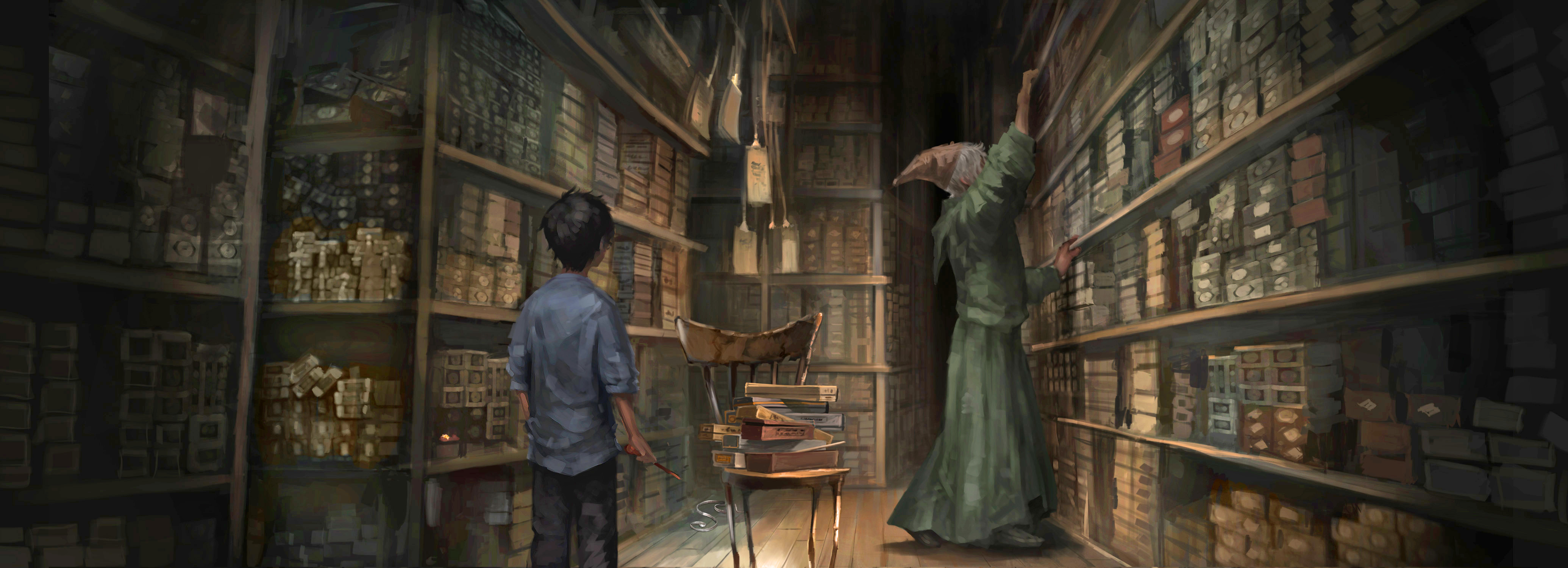

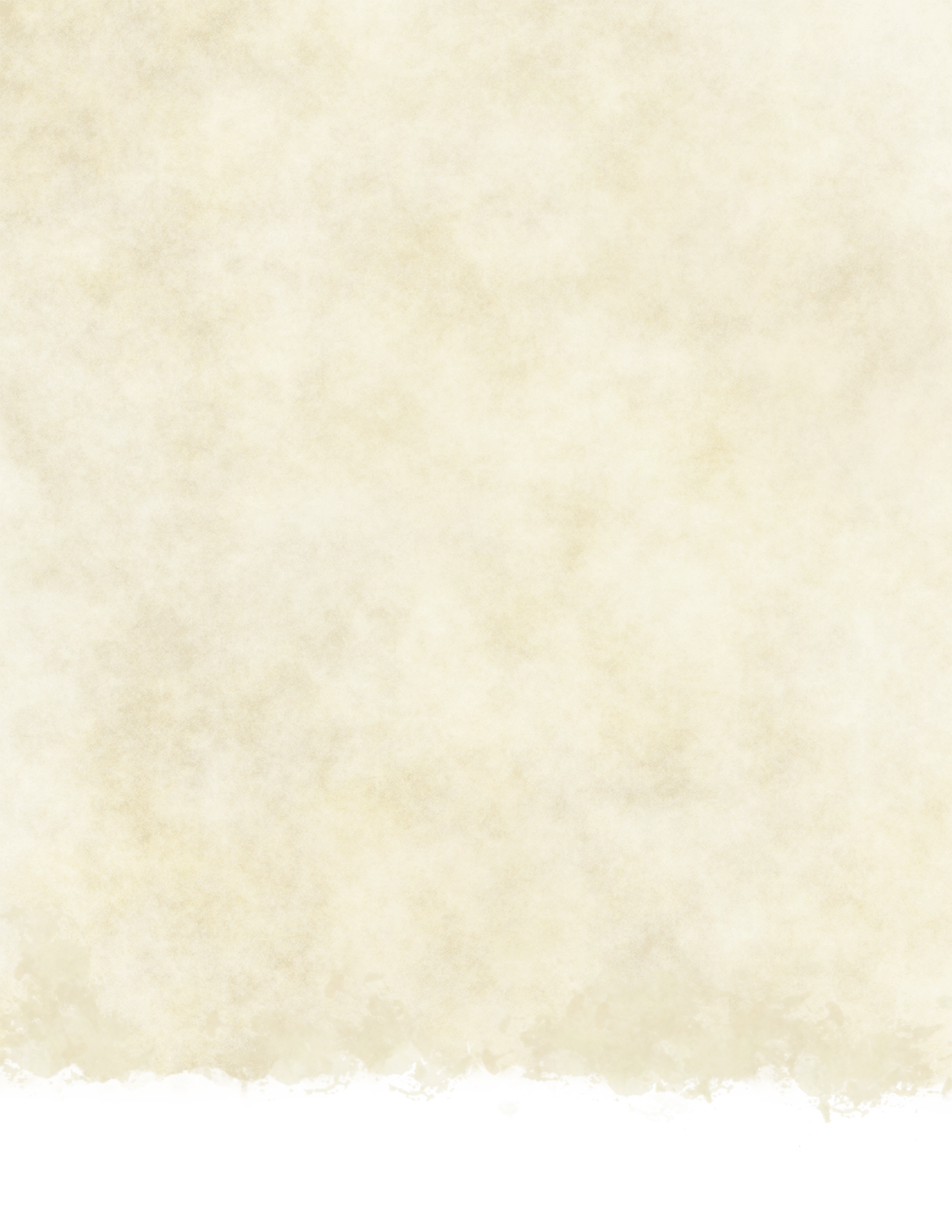
Potioneer
You've been accused of perfectionism several times, yet your attention to detail helps you to thrive when others fail. When you concentrate on crafting potions, this characteristic shows through. You tackle circumstances with zeal and intensity, and you live your life with a firm belief in your ideals and principles.
Skill Proficiencies: Herbology, Potion-making
Tool Proficiencies: Potioneer's Kit
Background Feature: Regular Patron
You're a recognizable face to any major wizarding pharmacy, and as a frequent client, you have access to new and unique goods that potion supply stores may not wish to release to the public. You've also obtained one common and one uncommon potion recipe of your choosing.
| d4 | Wood (Personality Traits) |
|---|---|
| 1 | Acacia |
| 2 | Elm |
| 3 | Larch |
| 4 | Laurel |
Acacia
This uncommon wand wood produces problematic wands that frequently refuse to generate magic for anybody other than its owner, as well as withholds their finest powers from all but the most skilled. Because acacia is not suitable to what is widely described as 'bangs-and-smells' magic, wandmakers sometimes preserve only a small stock for those witches or wizards with appropriate subtlety. When properly matched, an acacia wand can rival any in terms of potency, however it is frequently underappreciated owing to its temperamental quirks.
Elm
Elm wands like owners who have presence, magical skill, and a sense of indigenous dignity. Although some wizards have created stories that the magic of elm wands needs blood purity, flawless pairings of elm wands with Muggle-borns have occurred. Elm creates the fewest accidents, the fewest stupid blunders, and the most graceful charms and spells of any wand wood; they are complex wands capable of very advanced magic in the appropriate hands.
Larch
Larch wands are said to create confidence and courage in their users. Garrick Ollivander, the famed wandmaker, discovered that larch always made wands with hidden skills and surprising powers, which also defines the master who earns it. It is common for the witch or wizard who owns the larch wand to be unaware of the full amount of their remarkable skills until partnered with it, but they will then form an amazing match.
Laurel
Although, in the owner's drive for fame, laurel wands can conduct strong and often fatal magic, it is stated that a laurel wand cannot accomplish a dishonourable deed. The laurel wand appears to be unable to tolerate idleness in a possessor, and in that case, may be readily won away from their owner. Otherwise, it will happily adhere to its first match and respond with a spontaneous zap if another tries to grab it.
| d6 | Core (Ideal) |
|---|---|
| 1-2 | Unicorn Hair: Tradition. The methods of the past must never be forgotten since they shape who we are now. |
| 3-4 | Dragon Heartstring: Aspiration. I strive hard to be acknowledged as the finest in my field. |
| 5-6 | Phoenix Feather: Allow people to live their lives. Interfering in the business of others only leads to problems. |
| d6 | Length (Bond) |
|---|---|
| 1-2 | 9": I will confront any difficulty in order to get my family's favor. |
| 3-4 | 10.5": I adore famous magicians and compare my actions to theirs. |
| 5-6 | 12": I am the sole heir of my surname, and it is up to me to ensure that it is remembered in history. |
| d6 | Flexibility (Flaw) |
|---|---|
| 1-2 | Hard: I'm persuaded of the importance of my job, yet I'm oblivious to my flaws and the chance of failure. |
| 3-4 | Barely Yielding: Once I've decided on a goal, I get obsessed with it to the exclusion of everything else in my life. |
| 5-6 | Quite Flexible: I'm envious of anyone who outperforms my work. Everywhere I walk, I am surrounded with competitors. |
Defender
You have a strong sense of justice and do everything you can to help victims, most likely due to an instinctual empathy or your own experience of victimization. It makes you ill to see a narcissist take advantage of someone else. You've ensured that you're physically capable of protecting those you care about from harm, so you're a good friend to the oppressed. Skill Proficiencies: Athletics, Intimidation
Background Feature: People's Champion
The way you carry yourself makes people feel at ease and certain that you will help them if they are mistreated or intimidated. As long as you live up to your reputation, your heroic actions can make you a shoo-in for prefect, team captain, or other smaller positions of leadership.
| d10 | Wood (Personality Traits) |
|---|---|
| 1-2 | Blackthorn |
| 3-4 | Hawthorn |
| 5-6 | Mahogany |
| 7-8 | Rowan |
| 9-10 | Yew |
Blackthorn
Your demeanor makes others feel at ease and certain that you will assist them if they are mistreated or frightened. Your heroic efforts can make you a shoo-in for prefect, team captain, or other lesser positions of leadership as long as you live up to your reputation.
Hawthorn
Hawthorn wands are particularly well-suited to healing magic, but they are also effective at cursing, and it has been widely noticed that the hawthorn wand appears to be most at home with a conflicted personality or a period of upheaval. Hawthorn wands, on the other hand, are difficult to master and should only be used by a witch or wizard of proven aptitude. Hawthorn wands have an interesting quirk: their spells might backfire if handled incorrectly.
Mahogany
The mahogany tree represents strength, safety, protectiveness, and practicality, and these qualities are reflected in a mahogany wand's appropriate match. Owners with mahogany wands are frequently trustworthy and act as pillars for their local wizard community, since they have a lot of power and a propensity for transfiguration.
Rowan
Rowan wood has long been popular for wands because it is said to be the most protective of all woods, making all sorts of defensive charms exceptionally strong and difficult to break. It is also widely believed that no black witch or wizard ever possessed a rowan wand. Rowan is most gladly associated with the clear-headed and pure-hearted, but don't be fooled by this reputation for purity – these wands routinely exceed others in duels.
Yew
Yew wands are among the rarest types, and their perfect pairings are also uncommon, if not infamous. The yew wand is said to have the power of life and death, and it has a terrifying reputation in the realms of duelling and curses. A witch or wizard, on the other hand, may be a formidable guardian. When wizards are buried with yew wands, the wand usually grows into a tree that guards the owner's grave. A yew wand will never select a mediocre or a timid owner.
| d6 | Core (Ideal) |
|---|---|
| 1-2 | Unicorn Hair: Charity. I constantly make an effort to assist those in need, regardless of the personal cost. |
| 3-4 | Dragon Heartstring: Fairness. No one should be given special treatment, and no one should be above the law. |
| 5-6 | Phoenix Feather: Might. The conquerors write history, and the strong will always triumph. |
| d6 | Length (Bond) |
|---|---|
| 1-2 | 9.5": I owe someone who once protected me a debt I will never be able to repay. |
| 3-4 | 10.5": Nothing is more important to me than keeping a promise I make. |
| 5-6 | 13.5": I safeguard those who are unable to protect themselves. |
| d6 | Flexibility (Flaw) |
|---|---|
| 1-2 | Very Solid: I have little regard for someone who is unwilling to fight for what is right. |
| 3-4 | Mildly Flexible: Secretly, I feel that if I were a dictator who ruled over everyone else, things would be better. |
| 5-6 | Whippy: Too frequently, aggression is my default response to virtually any scenario. |



Variant Protector: Bully
When you feel helpless, you injure individuals who are weaker than you in order to recover some control. It might be a required coping tool, an aggressive manner, or a cruel inclination. You may even be very picky about your victims, or you may only strike out in relatively harmless ways. Whatever the case may be, you're a bully who thrives on feeling superior.
Variant Feature: Common Thug
Everyone who knows you knows about your transgressions, and they will know to come to you when they need someone to do their dirty work. The weak of heart will be terrified of you and will want to avoid your wrath by allowing you to boss them about.
Quidditch Fan
You love quidditch, whether your best childhood memories were at your local team's matches or you just found it after arriving at Hogwarts. Given your competitive nature and penchant for roughhousing, it makes perfect sense. To get by, you rely on your common sense and ability to take initiative.
Skill Proficiencies: Acrobatics, Athletics
Tool Proficiencies: Vehicle (Broomstick)
Background Feature: Teammate
It appears that all you can think about are broomsticks and quaffles. You're always up to date on recent matches, brooms, and quidditch strategies. You may also quickly strike up a chat and establish rapport with a fellow aficionado.
| d6 | Wood (Personality Traits) |
|---|---|
| 1-2 | Cherry |
| 3-4 | Fir |
| 5-6 | Spruce |
Cherry
This extremely uncommon wand wood produces a wand of peculiar power, which is greatly sought by the wizarding pupils of Japan's Mahoutokoro school, where those who hold cherry wands enjoy unique distinction. The Western wand buyer should discard any concept that the pink flower of the live tree makes for a frivolous or just cosmetic wand, because cherry wood frequently produces a wand with genuinely devastating power, whatever the core.
Fir
One wandmaker dubbed fir wood wands "the survivor's wand" after selling them to three wizards who escaped grave peril uninjured. There is little question that this wood, derived from the most durable of trees, yields wands that require perseverance and strength of purpose from its genuine owners. Fir wands are especially well-suited to Transfiguration, and they favor owners who are concentrated, strong-willed, and, on sometimes, threatening.
Spruce
Spruce wands are unsuitable for those who are cautious or timid, and they can be harmful in the hands of inexperienced users. They necessitate a hard hand because they appear to have their own views about what magic should generate. However, when a spruce wand finds its equal in the form of a daring spellcaster with a good sense of humour, it transforms into an invaluable ally. The wands are extremely faithful to their owners and are capable of delivering exceptionally extravagant and spectacular effects.
| d6 | Core (Ideal) |
|---|---|
| 1-2 | Unicorn Hair: Friends. Anyone else may go soak their head because I'm devoted to my buddies. |
| 3-4 | Dragon Heartstring: Retribution. Wrongdoers should bear the consequences of their actions. |
| 5-6 | Phoenix Feather: Competition. Greatness is driven by the battle to win and survive. |
| d6 | Length (Bond) |
|---|---|
| 1-2 | 9.5": I shall be the finest that ever lived in my chosen fields. |
| 3-4 | 11": I'll never forget a humiliating defeat or the opponent who delivered it to me. |
| 5-6 | 14": Those that fight beside me are worth dying for. |
| d6 | Flexibility (Flaw) |
|---|---|
| 1-2 | Unbending: My animosity for my adversaries is blind and irrational. |
| 3-4 | Fairly Supple: Despite my best attempts, I am untrustworthy in the eyes of my pals. |
| 5-6 | Very Pliant: I'm easily irritated when I hear disguised insults and threats in innocent phrases. |
Patrician
You always manage to make new acquaintances wherever you go. People are drawn to you for a variety of reasons, including your commanding attitude and the delectable gossip. You like being the center of attention and are energized by large groups, yet you may get obsessed with impressing your admirers.
Skill Proficiencies: Deception, Persuasion
Background Feature: Rumor-Monger
Your ability to make connections has won you access to individuals in the know. When you're looking for a juicy secret or a harmful rumor, your sources may be able to assist you or send you in the proper path.
| d4 | Wood (Personality Traits) |
|---|---|
| 1 | Alder |
| 2 | Apple |
| 3 | Aspen |
| 4 | Pear |
Alder
While the wood is hard, the ideal possessor of an alder wand is not obstinate or stubborn, but rather helpful, caring, and extremely liked. When an alder wand is happily placed, it transforms into a lovely, devoted helpmate. Alder wands are the most suited to nonverbal spell work of any wand kind, which is why they are only acceptable for the most accomplished witches and wizards.
Apple
Applewood wands are not mass-produced. They are strong and best suited to a person with lofty goals and values, as this wood does not combine well with Dark magic. It is thought that the owner of an apple wand will be well-liked and long-lived, and wizards with a lot of personality typically find their perfect mate in an applewood wand.
Aspen
Wand-quality aspen wood is appreciated for its elegant resemblance to ivory and typically excellent charmwork. The right possessor of the aspen wand is frequently a skilled duellist, as the aspen wand lends itself well to martial magic. The Silver Spears, an iconic and clandestine eighteenth-century dueling society, exclusively accepted owners of aspen wands. Owners are often resolute and strong-willed, and are prone to be drawn to missions; this is a wand for revolutionaries.
Pear
Pear's golden-toned wood yields magnificent magical wands. Possessors of pear wands are normally well-liked and respected, and no one has ever heard of a pear wand being in the custody of a Dark witch or wizard. Pear wands are among the most durable, and they can retain a wonderful newness appearance even after many years of heavy usage.
-

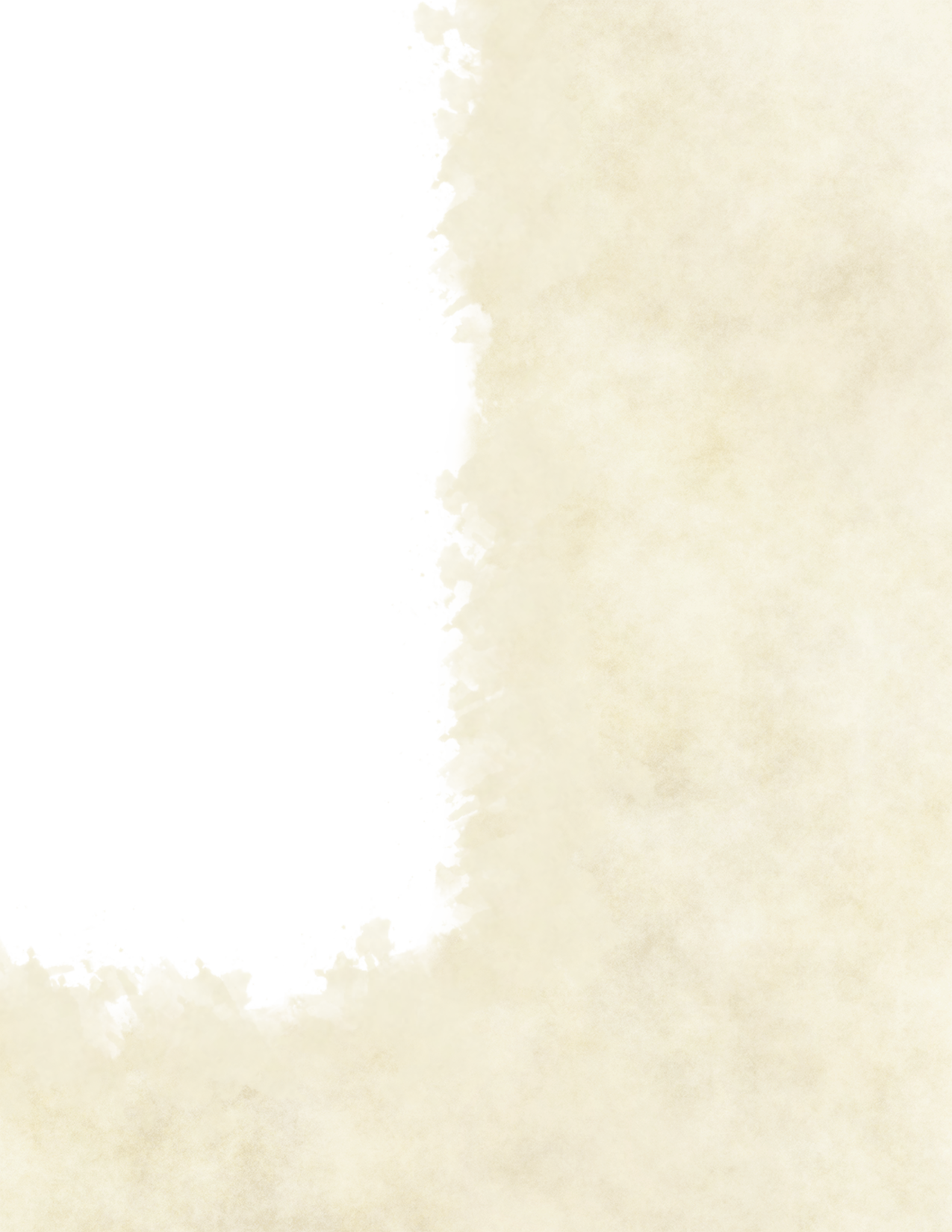

| d6 | Core (Ideal) |
|---|---|
| 1-2 | Unicorn Hair: People. I like seeing smiles on people’s faces. That’s all that matters. |
| 3-4 | Dragon Heartstring: Might. The strong are meant to lead and the weak will follow. |
| 5-6 | Phoenix Feather: Destiny. Nothing and no one can steer me away from my higher calling. |
| d6 | Length (Bond) |
|---|---|
| 1-2 | 10": I want to be famous, whatever it takes. |
| 3-4 | 12": Family and institutions are most important--friends and sycophants come and go. |
| 5-6 | 13": It is my duty to lead and inspire others. |
| d6 | Flexibility (Flaw) |
|---|---|
| 1-2 | Solid: I'm never satisfied with what I have--I always want more. |
| 3-4 | Reasonably Springy: I secretly believe that everyone is beneath me. |
| 5-6 | Swishy: I'm a (misguided) romantic and a sucker for a pretty face. |
Chapter 5: Wizarding Equipment
Every witch and wizard recalls their first trip to Diagon Alley, a busy street packed with vendors selling their astonishing items. Summer school shopping is when the colorful energy is at its best. Everything from broomsticks to boomslang skin to Bertie Bott's Every Flavour Beans may be found at those amazing shops. Whether you're buying school supplies for your first year at Hogwarts or stocking up for cursebreaking an old tomb, being properly equipped is crucial in the wizarding world.
Wealth
Optional Currency
Muggles frequently find wizard money odd and perplexing. However, when converted to Muggle currency, it's not too difficult to keep track of the prices of Gringott's copper, silver, and gold coins (US Dollars are used in the following examples). The smallest denomination is the copper Knut. One silver Sickle costs 29 Knuts. One Galleon, the huge gold currency, is made up of 17 Sickles (or 493 Knuts). A Knut is about worth one nickel ($0.05), which implies a Sickle is $1.45 and a Galleon is $24.65. A Gringott's Standard ruby is valued at 20 galleons (about $493).
Exchange Rates
| Name | Conversion | USD | GBP | D&D |
|---|---|---|---|---|
| Knut | -- | $0.05 | £0.04 | 1/5 cp |
| Sickle | 29 Knuts | $1.50 | £1.20 | 6 cp |
| Galleon | 17 Sickles | $25.00 | £20.00 | 1 gp |
| Ruby | 20 Galleons | $500.00 | £400.00 | 2 pp |
Cloaks (Armor)
Ordinary armor is worthless against spells in the wizarding realm. Avoiding getting struck is the greatest strategy to surviving a battle.
Winter Cloak. This hefty winter cloak, one of the compulsory equipment for most schools, keeps its user extremely warm in harsh, snowy winters. The weight and size of a winter cloak might be an impediment to a duelist's desired movements from their opponents.
Silk Cloak. A silk cloak is the favored travel attire of skilled duelists since it provides all of the concealing features of a cloak without the ungainly weight. The material's smoothness and lightness allow for a wide range of movement and nimbleness.
Shield Cloak. A shield cloak is a normal silk cloak that has been charmed with the Protego charm. It is popular during times of conflict and is always in great demand among Aurors. While not as powerful as the Shield Charm itself, the enchantment gives some spell resistance that can be the difference between life and death.
Demiguise Cloak. A demiguise cloak is a rough cloak made of thick silvery-white fabric. The outer layer is constructed of the hair of a Demiguise, a rare and elusive magical creature from Asia with the capacity to transform into an invisible monster at command. The cloak provides excellent camouflage from every viewpoint, but when the user moves, there is a noticeable delay until the cloak matches its new surroundings. This typically offers the person a noticeable yet fuzzy look in combat.
Disillusionment Cloak. The disillusionment cloak, made by weaving Pellucidi Pellis and a few additional enchantments into a silk cloak, has no delay and functions as an efficient invisibility cloak. An spectator may be able to perceive a somewhat distorted outline of the cloak's form under certain lighting conditions. It's quite efficient in combat, but like with any invisibility cloak, the user becomes partially visible when they open it to cast a spell.
Armor
| Cloak | Cost | Armor Class (AC) | Stealth | Weight |
|---|---|---|---|---|
| Winter Cloak | 9 g | 11 + Dex modifier (max 2) | Disadvantage | 20 lb. |
| Silk Cloak | 25 g | 11 + Dex modifier | — | 12 lb. |
| Shield Cloak | 75 g | 12 + Dex modifier | ─ | 12 lb. |
| Demiguise Cloak | 400 g | 13 + Dex modifier (max 2) | Advantage | 18 lb. |
| Disillusionment Cloak | 750 g | 14 + Dex Modifier | Advantage | 10 lb. |



Wizarding Gear
Wiseacre's Wizarding Equipment is a business on Diagon Alley's North Side that offered a broad range of magical devices including as telescopes, hourglasses, and maps.
Wizard Items
- Armillary Spheres: 2G An armillary sphere is basically a skeletal celestial sphere with a model of the Earth or, later, of the Sun placed in the center.
- Omnioculars: 5G Are the wizarding equivalent of Muggle binoculars, but with the additional features of being able to magically slow down and replay action.
- Brass Scales: 2G tools used by Wizardkind to weigh quantities of potion ingredients. They were essential for Potions class, and are mandatory for all first year Hogwarts students.
- Brass Telescope: 5G a device used for seeing faraway objects. Those used in the wizarding world were presumably magical to some extent, as they could be used to see objects that would be impossible to see with a Muggle telescope. |
- Compasses: 3G
- Crystal balls: 10G A crystal ball (or, as Seers preferred to call it, the Orb) was a magical crystal sphere which Seers gazed into for the purpose of Divination
- Crystal Phials: 7G Containers which usually held liquids or gases. Most potions and potion ingredients were bottled in phials and were consequently sold in those amounts. These are crystaline.
- Magnifying Glasses: 2G Object designed to produce the illusion of a smaller object being larger due to being viewed through a convex lens.
- Moon Chart: 5G A written astronomical instrument. It was used to represent the position, movement and phases of the Moon, not unlike a star chart.
- Silver Scales: 7G tools used by Wizardkind to precisely weigh quantities of potion ingredients. Unlike brass scales, which were required equipment for first year Hogwarts students, silver scales were more precise and are considered a luxury item.
- Glass Phials: 5G Containers which usually held liquids or gases. Most potions and potion ingredients were bottled in phials and were consequently sold in those amounts. These are glass. |
- Star Chart: 6G A written document. It was used to represent the positions and movements of the stars, pretty much like an ordinary map. Astronomers usually use these for research or study. An O.W.L.-level wizard or witch should be able of fill in a blank star chart based on some hours of sky gazing in Astronomy.
- Globe of the Moon: 13G A spherical scale model of the moon, the Earth's natural satellite. It was used in Astronomy, to study lunar movements and activity.
- Mappa Mundi: 6G a global map made by Wiseacre's Wizarding Equipment
Potions
Potions fulfill a variety of purposes that spells alone cannot accomplish, and the more adventuresome wizards know that having the right potions at hand can be the difference between life and death. Almost every potion must be drunk to receive its effects, but if not, it will be clearly stated.
The below tables connect new potion names to equivalent 5e potion or spell names. Players shouldn't assume that just because there's an equivalent 5e potion or spell, the Harry Potter potion will operate in exactly the same way or have the exact same description.
Potion Conversions
| New Potion | Equivalent 5e Potion/Spell |
|---|---|
| Antidote of Common Poisons | Antitoxin |
| Baruffio's Brain Elixir | Enhance Ability |
| Confusing Concoction | Confusion |
| Draught of Peace | Calm Emotions |
| Essence of Dittany | Potion of Supreme Healing, Regenerate |
| Felix Felicis | Foresight |
| Fire Protection Potion | Potion of Fire Resistance |
| Fungiface Potion | Vicious Mockery |
| Gillyweed | Alter Self |
| Girding Potion | False Life |
| Invigoration Draught | Potion of Superior Healing |
| Murtlap Essence | Potion of Greater Healing |
| Shrinking Solution | Potion of Diminution |
| Sleeping Draught | Sleep |
| Star Grass Salve | Potion of Healing |
| Strengthening Solution | Potion of Hill Giant Strength |
| Swelling Solution | Potion of Growth |
| Veritaserum | Zone of Truth |
| Vitamix Potion | Enhance Ability |
| Volubilis Potion | Actor (Feat) |
| Wideye Potion | Potion of Vitality |
| Wound-cleaning Potion | Healer's Kit |
Antidotes
If a potion is listed as an antidote to another potion or spell, the effects of that potion or spell immediately end. If the antidote has a duration, you are immune to the effects of the countered potions or spells for the duration.
Poison Conversions
| New Potion | Equivalent 5e Potion/Spell |
|---|---|
| Bloodroot Poison | Pale Tincture |
| Death-Cap Draught | Purple Worm Poison |
| Draught of Living Death | Imprisonment |
| Essence of Insanity | Eyebite |
| Garrotting Gas | Drow Poison |
| Herbicide Potion | Blight |
| Moonseed Poison | Serpent's Venom |
| Noxious Potion | Burnt Othur Fumes |
| Weedosoros | Wyvern Poison |
Looking at Love Potions
The morality of love potions is questionable at best. While love potions are often handled humorously in the original series, we must recognize the importance of consent. Love potions do not allow for consent and should not be used to cross any character's boundaries. If you are going to play W&W with love potions, please have a conversation with your table to ensure everyone is comfortable and will behave respectfully. Otherwise, do not include them in your game.
Love Potion Conversions
| New Potion | Equivalent 5e Potion/Spell |
|---|---|
| Amortentia | Dominate Person |
| Beguiling Bubbles | Philter of Love |
| Gregory's Unctuous Unction | Charm Person |
| Heartbreak Teardrops | Suggestion |
| Kissing Concoction | Compulsion |
| Twilight Moonbeams | Enthrall |
Potion List
Common Potions
- Antidote of Common Poisons
- Babbling Beverage
- Baneberry Poison
- Blemish Blitzer
- Confusing Concoction
- Cupid Crystals
- Doxycide
- Dr. Ubbly's Oblivious Unction
- Dreamless Sleep Potion
- Elixir to Induce Euphoria
- Forgetfulness Potion
- Fungiface Potion
- Garrotting Gas
- Heartbreak Teardrops
- Herbicide Potion
- Hiccoughing Solution
- Moonseed Poison
- Oculus Potion
- Pepperup Potion
- Pet Tonic
- Regerminating Potion
- Shrinking Solution
- Star Grass Salve
- Swelling Solution
- Wound-Cleaning Potion
Uncommon Potions
- Aging Potion
- Antidote of Uncommon Poisons
- Baruffio's Brain Elixir
- Beautification Potion
- Befuddlement Draught
- Beguiling Bubbles
- Blood-Replenishing Potion
- Bloodroot Poison
- Draught of Peace
- Exstimulo Potion
- Fatiguing Fusion
- Fire Protection Potion
- Gillyweed
- Girding Potion
- Gregory's Unctuous Unction
- Memory Potion
- Murtlap Essence
- Noxious Potion
- Sleeping Draught
- Strengthening Solution
- Twilight Moonbeams
- Vitamix Potion
- Volubilis Potion
- Wideye Potion
- Wiggenweld Potion
Rare Potions
- Erumpent Potion
- Essence of Insanity
- Hate Potion
- Invigoration Draught
- Invisibility Potion
- Kissing Concoction
- Mandrake Restorative Draught
- Skele-Gro
- Weedosoros
- Wit-Sharpening Potion
Very Rare Potions
- Amortentia
- Death-Cap Draught
- Draught of Living Death
- Essence of Dittany
- Polyjuice Potion
- Wolfsbane Potion
Legendary Potions
- Drink of Despair
- Felix Felicis
- Veritaserum
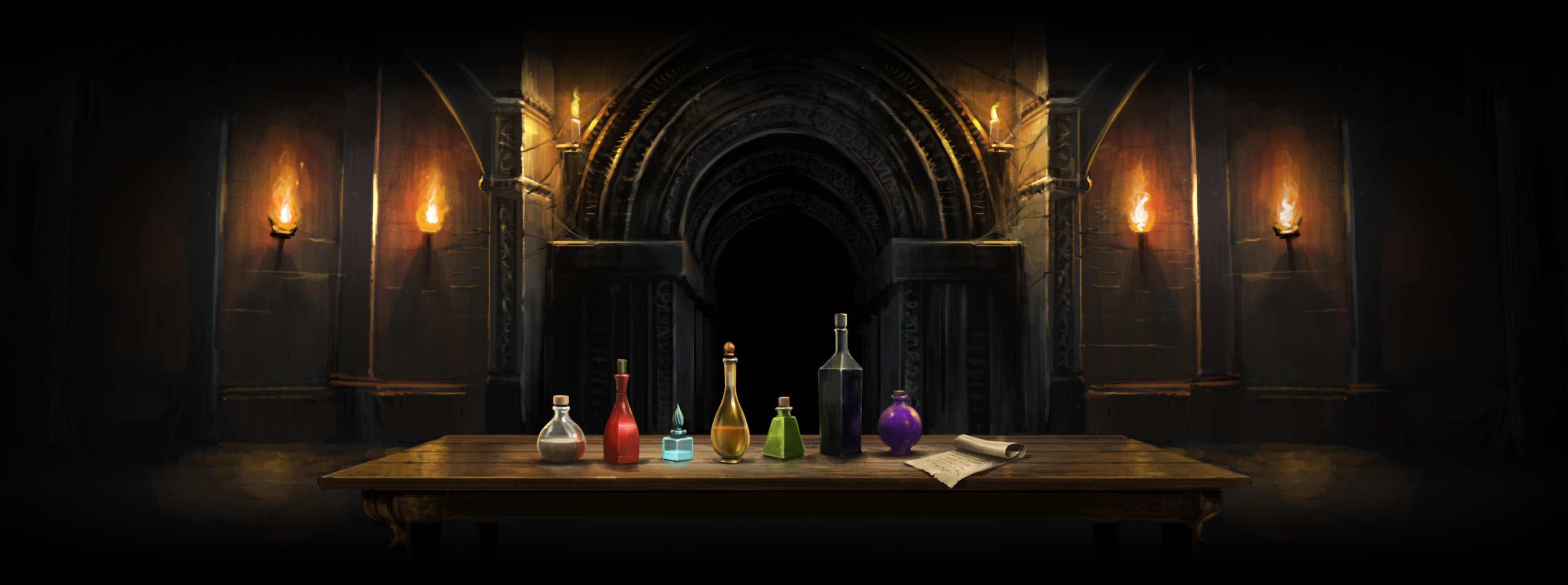



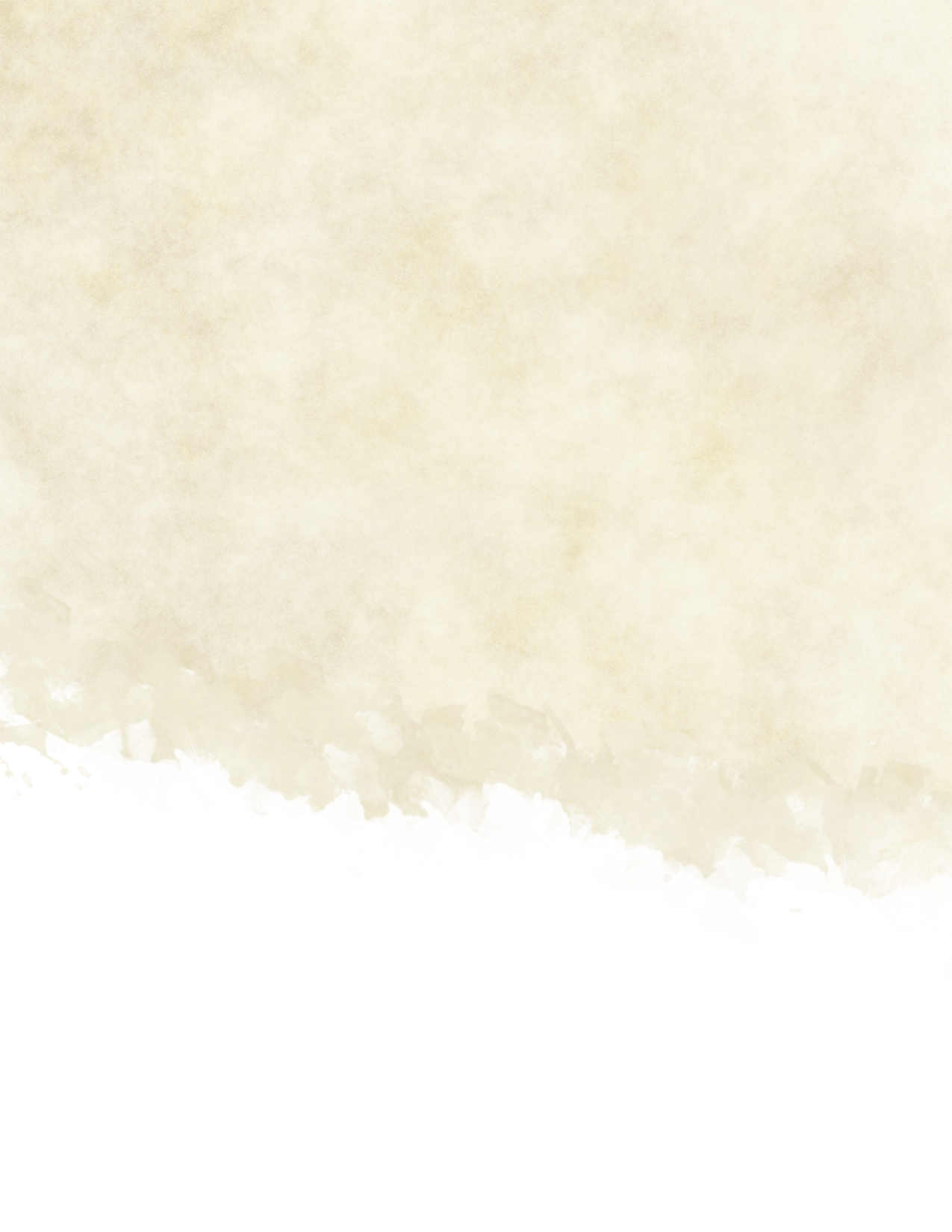
Aging Potion
Potion, uncommon
When you drink this potion, your age is increased by 4d10 years for 1 hour. This effect authentically changes your age, but doesn't reduce your lifespan or introduce maladies due to aging. One quarter, one half, or three quarters of this potion may be drunk, modifying the effect to 1d10, 2d10, or 3d10.
Amortentia
Love potion, very rare
When a being drinks this potion, they are overwhelmingly charmed by the brewer of this potion for 1 week. The charmed subject believes the brewer to be their one true love and will perform any request the brewer asks, to the best of their ability. All thoughts will be colored by a powerful obsession with the brewer, but their personality will otherwise be unchanged. This charmed effect can only be removed by an antidote to this potion.
Antidote of Common Poisons
Potion, common
When you drink this potion, simple poisons in your system are neutralized and you gain advantage on saving throws against poison for 1 hour. If you took poison damage in the previous minute, you regain half of your hit points lost to poison damage, up to a maximum of 15 hit points.
Antidote to: Baneberry Poison, Doxycide, Garrotting Gas, Moonseed Poison
Antidote of Uncommon Poisons
Potion, uncommon
When you drink this potion, this more potent antidote counteracts poisons and you gain advantage on saving throws against poison for 1 hour. If you took poison damage in the previous minute, you regain all of your hit points lost to poison damage, up to a maximum of 30 hit points.
Antidote to: Baneberry Poison, Bloodroot Poison, Doxycide, Garrotting Gas, Moonseed Poison, Noxious Potion
Babbling Beverage
Potion, common
When you drink this potion, every word you try to say comes out as gibberish or complete nonsense for the next 1 minute.
Baneberry Poison
Poison, common
While this poison doesn't actually cause any harm in the body, its toxins interfere with blood clotting and produce an overall sickly feeling. A creature that ingests this poison must succeed on a DC 13 Constitution saving throw or become poisoned. The poisoned creature must repeat the saving throw every 24 hours.
Until this poison ends, the creature can’t be healed by any means. After seven successful saving throws, the effect ends and the creature can heal normally.
Baruffio's Brain Elixir
Potion, uncommon
When you drink this potion, you have advantage on Intelligence checks for 1 hour. Your thoughts become louder and faster, making it easy to focus.
Antidote to: Befuddlement Draught, confundo, Confusing Concoction, infirma cerebra
Beautification Potion
Potion, common
When you drink this potion, your appearance is transformed to be more attractive for 10 minutes. For the duration, when you make a Charisma (Deception), Charisma (Performance) or Charisma (Persuasion) check, you roll a d4 and add the number rolled to the check.
Befuddlement Draught
Potion, uncommon
When you drink this potion, you become belligerent and reckless for 1 hour. For the duration, you have disadvantage on Intelligence checks and Wisdom checks, and you have advantage on saving throws against being frightened from any source other than a Dementor.
Beguiling Bubbles
Love potion, uncommon
When a being drinks this potion, they become charmed by a chosen being for 1 hour. The chosen being is selected by the brewer speaking their name into the potion during brewing. If the chosen being is someone the charmed subject would normally be attracted to, they regard that being as their true love while they are charmed.
Blemish Blitzer
Potion, common
This specially formulated potion will magically remove any acne or blemishes from your face when applied.
Antidote to: Fungiface Potion, furnunculus
Blood-Replenishing Potion
Potion, uncommon
Typically administered in an emergency, this healing potion helps replenish blood lost from injuries. If the next rest you take is a short rest, the amount of hit points gained from rolling hit dice is doubled during that short rest. If the next rest you take is a long rest, you regain all spent hit dice.
Antidote to: Baneberry Poison, Bloodroot Poison
Bloodroot Poison
Poison, uncommon
The Bloodroot Poison gets into the bloodstream and causes a very gradual internal necrosis. A creature that ingests this poison must succeed on a DC 16 Constitution saving throw or take 7 (2d6) poison damage and become poisoned. The poisoned creature must repeat the saving throw every 24 hours, taking 7 (2d6) poison damage on a failed save.
Until this poison ends, the damage the poison deals can’t be healed by any means. After seven successful saving throws, the effect ends and the creature can heal normally.
Confusing Concoction
Potion, common
When you drink this potion, you become utterly discombobulated for 6 seconds. You can’t take actions or reactions and you roll a d10. If you roll 1-8, you must use all of your movement to move in a random direction. To determine the direction, assign a direction to each number 1-8. If you roll a 9-10, you don't move.
Cupid Crystals
Love potion, common
When a being drinks this potion, they will become infatuated with the next being they see within 10 minutes. They become charmed by that being for 1 hour.
Death-Cap Draught
Poison, very rare
Death cap mushrooms are the key ingredient to one of the most deadly poisons. A creature that ingests this poison must make a DC 19 Constitution saving throw, taking 84 (24d6) poison damage and becoming poisoned for 1 day on a failed save, or half as much damage and poisoned for 1 minute on a successful one.
Doxycide
Poison, common
Delivered as a mist via a spray bottle, this mild poison is a household staple to deal with pests. A creature that inhales this poison must succeed on a DC 13 Constitution saving throw, taking 2 (1d4) poison damage on a failed save, or half as much damage on a successful one.
If the victim of this poison is a tiny Beast, it is paralyzed for 1 hour on a failed save.
Dr. Ubbly's Oblivious Unction
Potion, common
When you drink this potion, your brain's perception is softened for 1 hour to protect it from harmful thoughts. For the duration, you have disadvantage on Wisdom checks.
If you are targeted by legilimens, you can make a Wisdom saving throw to resist its initial effects, and if you are targeted by imperio, you have advantage on the first Charisma saving throw.
Draught of Living Death
Poison, very rare
The drinker of this infamous and challenging poison falls into a deep sleep and can't be awoken by any means, aside from administering an antidote. The creature will breathe normally, but cannot be suffocated in this state. It also doesn't need to eat or drink. The creature will age normally, and it can die of old age while under the effects of this poison.
Draught of Peace
Potion, common
When you drink this potion, all strong emotions are suppressed for 1 hour, putting you into a neutral and relaxed disposition. Any charmed or frightened condition is removed and you have advantage on saving throws against being charmed or frightened. Unfortunately, the feeling of this potion wearing off has been described as experiencing all of the suppressed emotions at once, and some suppressed conditions may resume.
Additionally, if you are hostile, you will become indifferent to the targets of your hostility. This indifference ends if you are attacked or harmed by a spell or if you witnesses any of your friends being harmed.
Antidote to: Beguiling Bubbles, Cupid Crystals, Elixir to Induce Euphoria, exhilaro, Gregory's Unctuous Unction, Heartbreak Teardrops, Twilight Moonbeams
Dreamless Sleep Potion
Potion, common
When you drink this potion, you immediately fall asleep and gain the benefits of a long rest after 4 hours of uninterrupted sleep. However, your sleep is far deeper than usual, and someone using their action to shake you or taking damage is the only way for you to wake before 4 hours have passed.
Drink of Despair
Poison, legendary
When a creature drinks this fabled poison, it hallucinates all of its worst fears and memories, vividly reexperiencing its deepest regrets and darkest traumas. It is incapacitated for 30 seconds, it is reduced to 1 hit point and its gains 4 levels of exhaustion.
Elixir to Induce Euphoria
Potion, common
When you drink this potion, your emotions are overpowered by a sudden inexplicable happiness, with the side effects of spontaneous singing and nose-tweaking. You gain resistance to psychic damage for 1 hour. For the duration, you have disadvantage on Dexterity (Stealth), Charisma (Intimidation), and Charisma (Deception) checks.
Erumpent Potion
Potion, rare
As an action, you can throw a bottle of Erumpent Potion at a point up to 60 feet away, releasing a violent explosion and shockwave. Each creature within 10 feet of that point must make a DC 14 Dexterity saving throw, taking 10d6 bludgeoning damage on a failed save, or half as much damage on a successful one. Each creature within 30 feet of that point takes 4d8 thunder damage. This potion is highly volatile and will explode if it is poured out of its container.
Essence of Dittany
Potion, very rare
This highly concentrated liquid rapidly heals and regenerates open wounds, helping you regain 10d4 + 20 hit points when applied. If the target has lost body members (fingers, legs, and so on) and the severed part is held to its place, applying this potion causes the limb to heal back on immediately.
Essence of Insanity
Poison, rare
Instead of attacking the body, this oil attacks the mind. A creature that makes contact with this poison is overwhelmed with paranoia and becomes poisoned for 1 hour. It is frightened of the nearest creature for the duration. On its next turn, the victim must take the dash action and move away from that creature by the safest and shortest available route, unless there is nowhere to move.
Exstimulo Potion
Potion, uncommon
When you drink this potion, the next spell you cast within the next 8 hours will be as if it were cast using a spell slot one level higher than its original level.
Fatiguing Fusion
Poison, uncommon
A creature that ingests or inhales this tiresome poison must succeed on a DC 13 Constitution saving throw or gain 3 levels of exhaustion. This poison cannot cause you to reach more than 5 levels of exhaustion.
Felix Felicis
Potion, legendary
Also known as "liquid luck," this potion makes you exceptionally lucky for 1d4 hours, to the point of succeeding at everything you attempt. For the duration, your Charisma score is raised to 21, you can’t be surprised and have advantage on attack rolls, ability checks, and saving throws. Additionally, other creatures have disadvantage on attack rolls against you for the duration.
This potion has been stated to greatly resemble molten gold. It is meant to be used sparingly, however, as it causes giddiness, recklessness, and dangerous overconfidence if taken in excess. Felix Felicis is highly toxic in large quantities.
Fire Protection Potion
Potion, uncommon
When you drink this potion, you gain resistance to fire damage for 1 hour.
Forgetfulness Potion
Potion, common
When you drink this potion, you forget everything you perceived in the last minute and you won't be able to remember anything you perceive in the next 10 minutes.
Fungiface Potion
Potion, common
When you drink this potion, you gain the effects of the furnunculus spell, sprouting dense and itchy mushrooms on your face instead of pimples. This effect lasts 1 hour.
Garrotting Gas
Poison, common
This gas produces a choking or suffocating sensation, which, given the fact it's colorless, can be quite dangerous. A creature that inhales this poison must succeed on a DC 13 Constitution saving throw or be poisoned for 1 hour. If the saving throw fails by 5 or more, the creature is unconscious while poisoned in this way. The creature wakes up if it takes damage or a creature shakes it awake as an action.
As an action, you can throw a bottle of Garrotting Gas at a point up to 60 feet away, releasing the gas and exposing creatures within 5 feet of that point.
Gillyweed
Potion, uncommon
When you eat this plant, your body adapts to an aquatic environment, sprouting gills and growing webbing between your fingers for 1 hour. You can breathe underwater and gain a swimming speed equal to your walking speed. However, you lose the ability to breathe air, following the rules for suffocating if you emerge from water.
Girding Potion
Potion, uncommon
When you drink this potion, you gain 6d4 + 6 temporary hit points for 1 hour. This feels like an abnormal amount of physical stamina and pain tolerance.
Gregory's Unctuous Unction
Love potion, uncommon
When you drink this potion, you are charmed by the giver of the potion for 1 hour. The charmed subject believes the giver is their very best friend.
Hate Potion
Love potion, rare
When a being drinks this potion, they view a chosen being as their most hated enemy for 10 minutes. If the brewer does not select a chosen being by speaking their name into the potion during brewing, the drinker will be hostile towards the next being they see within the potion's duration. If this potion is used as an antidote, it has no effect beyond acting as an antidote for the same duration.
Antidote to: Amortentia, Beguiling Bubbles, Cupid Crystals, Gregory's Unctuous Unction, Heartbreak Teardrops, Kissing Concoction, Twilight Moonbeams
Heartbreak Teardrops
Love potion, common
When a being drinks this potion, they are overcome with the fear of being rejected by the object of their desire for 1 hour. If no relationship or attraction exists, a new one will be magically created. The being is susceptible to the next suggested course of action to try to avoid rejection. The suggestion does not need to logically prevent rejection, but it must be reasonable and not be obviously harmful. It pursues the course of action you described to the best of its ability, until the course of action is complete or until the potion's effect wears off.
Herbicide Potion
Poison, common
When this poison is poured directly on a magical plant, the plant immediately withers and dies. There is only enough poison to affect a plant that fits within a 5 foot cube. If the magical plant is larger than a 5 foot cube, the affected area will wither, but the plant will not die until the entire plant is withered.
Hiccoughing Solution
Potion, common
When you drink this potion, you come down with a bad case of the hiccups for 1 hour. For the duration, you have disadvantage on Charisma checks. If you try to cast a spell verbally, roll a d10. On a 1, the casting fails and the spell is wasted.
Invigoration Draught
Potion, rare
You regain 8d4 + 8 hit points when you drink this shimmering orange potion.
Invisibility Potion
Potion, rare
When you drink this silvery potion, you gain the effects of pellucidi pellis for 10 minutes (no concentration required). The potion's effect ends if you attack or cast a spell. This potion can also be poured over an object for a similar effect.
Kissing Concoction
Love potion, rare
When a being drinks this potion, they become charmed by a chosen being and powerfully compelled to kiss them for 1 hour. The chosen being is selected by the brewer speaking their name into the potion during brewing. If the charmed subject sees the chosen being, they must use as much of their movement as possible to move to the chosen being and kiss them, ending the potion's effect.
If the brewer uses a bonus action to tell the charmed subject where the chosen being might be, the charmed subject must use as much of their movement as possible to move in that direction on their next turn. They can take their action before they move. They won't be compelled to move into an obviously deadly hazard, but they will provoke opportunity attacks.
Mandrake Restorative Draught
Potion, rare
When this healing potion is administered, it ends one of the following effects on the target:
- One effect that charmed, paralyzed or petrified the target.
- One Transfiguration spell that's changed the target's form.
Memory Potion
Potion, uncommon
When you drink this potion, lost memories are restored to you and you're able to recall more details than usual. You have advantage on Intelligence (Herbology), Intelligence (Magical Theory) and Intelligence (Muggle Studies) checks for 10 minutes.
Antidote to: Forgetfulness Potion, obliviate
Moonseed Poison
Poison, common
The moonseed vine, its leaves and its berries give their toxicity to this basic poison. A creature that ingests this poison must succeed on a DC 11 Constitution saving throw, taking 21 (6d6) poison damage on a failed save, or half as much damage on a successful one.
Murtlap Essence
Potion, uncommon
This solution of strained and pickled tentacles of Murtlaps soothes painful cuts and abrasions, helping you regain 4d4 + 4 hit points when applied.
Noxious Potion
Poison, uncommon
The liquid and fumes of this potion are equally dangerous, allowing for creatively nefarious uses. A creature that ingests or inhales this poison must succeed on a DC 13 Constitution saving throw or take 21 (6d6) poison damage, and must repeat the saving throw at the start of each of its turns. On each successive failed save, the character takes 7 (2d6) poison damage. After three successful saves, the poison ends.
As an action, you can throw a bottle of Noxious Potion at a point up to 60 feet away, releasing the gas and exposing creatures within 5 feet of that point.
Oculus Potion
Potion, common
Drinking this deep orange potion removes the blind condition, restoring your eyesight to its normal state.
Antidote to: conjunctivia
Pepperup Potion
Potion, common
When you drink this deep red potion, jets of steam shoot out of your ears, you're cured of the common cold and you feel quite warm throughout your body, rendering you immune to gaining exhaustion from cold environments for 1 hour. One level of exhaustion is removed for the duration, but it is regained at the end of the potion's effects.
Pet Tonic
Potion, common
When this potion is given to a magical pet, all of its hit points are restored, any diseases and conditions are removed and it gains 1d4 temporary hit points for 1 hour.
Polyjuice Potion
Potion, very rare
After adding the hair, nail clipping, or other part of a human, drinking this potion perfectly transforms you into that human for 1 hour, changing your height, weight, facial features, sound of your voice, hair length and coloration. None of your statistics change, but your size may change to match the targeted human.
The potion works for part-humans, but not half-humans. The consistency of the potion is always like a thick mud, but the color and flavor change based on the targeted human, typically tasting very unpleasant.
Regerminating Potion
Potion, common
When this potion is poured on the roots of a dying plant, it is revitalized. It also accelerates the growth of healthy seedlings.
Antidote to: Herbicide Potion
Shrinking Solution
Potion, common
When you drink this potion, you gain the effects of the diminuendo spell for 1d4 hours (no concentration required). This potion can also be poured over an object for the effects of reducio.
Antidote to: engorgio, Swelling Solution
Skele-Gro
Potion, rare
Used to rapidly regrow and repair bones, this healing potion is a staple in a mediwizard's potion case. If the next rest you take is a short rest, you regain hit points equal to half your hit point maximum. If the next rest you take is a long rest, you regain all spent hit dice and gain temporary hit points equal to twice your caster level.
Sleeping Draught
Potion, uncommon
When you drink this potion, you fall unconscious into a deep sleep. You can't be awoken by any means for 1 hour, aside from administering an antidote. After that, the sleep is natural, so you would sleep only as long as you normally would or until woken by taking damage or someone shaking or slapping you awake.
Star Grass Salve
Potion, common
You regain 2d4 + 2 hit points when you apply this medicinal balm to your injuries.
Strengthening Solution
Potion, uncommon
When you drink this potion, your Strength score is raised to 21 for 1 hour. The potion has no effect on you if your Strength is equal to or greater than that score.
Swelling Solution
Potion, common
When you drink this potion, you gain the effects of the engorgio spell for 1d4 hours (no concentration required). This potion can also be poured over an object for a similar effect.
Antidote to: diminuendo, reducio, Shrinking Solution
Twilight Moonbeams
Love potion, uncommon
When a being drinks this potion, they become charmed by a chosen being for 1 hour. The chosen being is selected by the brewer speaking their name into the potion during brewing. The charmed subject's mind is clouded with daydreams and has disadvantage on Wisdom (Perception) checks to notice anything other than the chosen being.
Veritaserum
Potion, legendary
A creature subjected to this potion must succeed on a DC 21 Charisma saving throw. On a failed save, the creature is compelled to tell the whole truth to any questions asked of it within the next 10 minutes. You know whether the creature succeeds or fails on its saving throw, based on the dull and dazed look in its eyes.
On a successful save, the creature is aware of the potion's effect for the next 10 minutes, and can avoid answering questions to which it would normally respond with a lie. Such creatures can be evasive in their answers as long as they remain within the boundaries of the truth.
Vitamix Potion
Potion, uncommon
When you drink this potion, you have advantage on Dexterity checks for 1 hour. Drinking it feels like 'a burst of energy', greatly sharpening one's reflexes.
Antidote to: digitus wibbly, locomotor wibbly
Volubilis Potion
Potion, uncommon
When you drink this potion, you have an advantage on Charisma (Deception) and Charisma (Performance) checks when trying to pass yourself off as a different person for 10 minutes. It magically alters your voice to sound like someone else's, or if your voice is lost, it will restore it.
Antidote to: silencio
Weedosoros
Poison, rare
Named after the mysterious magical plant, weed of sorrows, this poison is reputed to fill the victim with deep regret in their final moments. A creature that ingests this poison must make a DC 15 Constitution saving throw, taking 49 (14d6) poison damage and being poisoned for 1 day on a failed save, or half as much damage and poisoned for 1 minute on a successful one.
Wideye Potion
Potion, uncommon
Also known as the Awakening Potion, drinking this potion removes up to two levels of exhaustion. Other uses are awakening someone from non-magical drugging or concussion, and side effects include restlessness and insomnia.
Wiggenweld Potion
Potion, uncommon
This healing potion is the antidote for magically induced sleep, immediately waking the victim.
Antidote to: Draught of Living Death, Sleeping Draught, stupefy
Wit-Sharpening Potion
Potion, rare
When you drink this potion, your brain's neurological functioning is maximized, raising your Intelligence and Wisdom scores to 20 for 1 hour. The potion has no effect if your ability scores are equal to or greater than that score.
Antidote to: Befuddlement Draught, Common and Uncommon Love Potions, confundo, Confusing Concoction, infirma cerebra
Wolfsbane Potion
Potion, very rare
When a lycanthrope drinks this potion once a day for the entire week before the full moon, their alignment does not change and they are not placed under HM control during their transformation. If the drinker misses a single dose in the preceding week, the potion has no effect.
Wound-Cleaning Potion
Potion, common
When you apply this potion to open wounds, it stings, smokes and perfectly sterilizes the area. A bottle contains ten doses, and one dose stabilizes a creature that has 0 Hit Points, without needing to make a Wisdom (Medicine) check.




Familiars
From owls and rats to toads and cats, Hogwarts students have been helped and hindered by various creature companions. Animals of all shapes and sizes have long been associated with magic. Muggles often called them familiars, and thought them to have supernatural abilities assisting with the practice of magic. The animals owned by Hogwarts students aren’t familiars in this sense; they are largely pets, rather than supernatural creatures.
When you choose a magical pet, it develops a particular bond with you and understands one of the languages you speak. Your magical pet operates on its own, but it always obeys your vocal directions to the best of its abilities. It rolls its own initiative and acts on its own turn in battle. A magical pet can attack and do other typical acts. Each student is only allowed one magical pet at Hogwarts.
Owls
The traditional British myth that seeing owls flying during the day is unfortunate is easily explained: when wizards leave cover to transmit messages during the day, something significant must be going on in the magical realm. Muggles automatically associate the owl with evil since it is a (mainly) nocturnal bird of prey, however they are loyal servants and the most popular mode of magical communication utilized by wizardkind worldwide.
The benefits of owls as messengers are the same characteristics that make them suspicious to Muggles: they work in the dark, have unusually well-developed night vision, and are agile and secretive. Owls learn rapidly and thrive on locating the witch or wizard for whom their letters are intended, whether because they have a natural magic or because their predecessors have been schooled for it.
Trained owls are expensive, therefore it is common for a wizarding family to share a single owl or to solely utilize Postal owls. When a witch or wizard has their own personal owl, they may mail anyone a letter or parcel for free.
| d8 | Owl Breeds |
|---|---|
| 1 | Tawny Owl |
| 2 | Screech Owl |
| 3 | Snowy Owl |
| 4 | Barn Owl |
| 5 | Great Grey Owl |
| 6 | Scops Owl |
| 7 | Eagle Owl |
| 8 | Barred Owl |
Pet Owl
Tiny beast, unaligned
- Armor Class 11
- Hit Points 1 (1d4-1)
- Speed 5 ft., fly 60 ft.
STR DEX CON INT WIS CHA 3 (-4) 13 (+1) 8 (-1) 4 (-3) 12 (+1) 7 (-2)
- Skills Perception +3, Stealth +3
- Senses Darkvision 120 Ft., passive Perception 13
Flyby. The owl doesn't provoke opportunity attacks when it flies out of an enemy's reach.
Keen Hearing and Sight. The owl has advantage on Wisdom (Perception) checks that rely on hearing or sight.
Magical Post. When given a note, letter, or package, the owl will magically know the location of the recipient and fly to deliver the letter.
Cats
Cats are the most frequently connected with magic. We've all seen depictions of a witch riding a broomstick with her black cat. It's a centuries-old relationship. Tituba, one of the first accused of witchcraft in the Salem Witch Trials in 1692, was supposed to have both a black and a red cat. The best-known anti-witchcraft treatise, Malleus Maleficarum, emphasizes cats and their untrustworthy disposition. Cats are intelligent and independent creatures, so it's hardly unexpected that they've been associated with witches and reviled by uneducated Muggles.
Cats are said to be the most clever pets for witches and wizards, and can frequently be trained to execute intricate tasks, depending on the breed (and degree of Kneazle lineage), as long as the owner has won their allegiance.
Pet Cat
Tiny beast, unaligned
- Armor Class 12
- Hit Points 2 (1d4)
- Speed 40 ft., climb 30 ft.
STR DEX CON INT WIS CHA 3 (-4) 15 (+2) 10 (+0) 6 (-2) 12 (+1) 7 (-2)
- Skills Perception +3, Stealth +4
- Senses passive Perception 13
Hunting Instincts. The cat can follow or patrol for a specific target. When doing so, it has advantage on Dexterity (Stealth) checks.
Keen Smell. The cat has advantage on Wisdom (Perception) checks that rely on smell. .
Actions
Claws. Melee Weapon Attack: +4 to hit, reach 5 ft., one target. Hit: (1d1) slashing damage.
| d10 | Cat Breeds |
|---|---|
| 1 | Black Cat |
| 2 | Calico Cat |
| 3 | Ginger Cat |
| 4 | Manx Cat |
| 5 | Nebelung Cat |
| 6 | Ocicat |
| 7 | Tabby Cat |
| 8 | Tonkinese Cat |
| 9 | Tortoiseshell Cat |
| 10 | White Cat |
Toads
The toad is by far the least popular of the allowed creatures that students may keep as pets at Hogwarts. Toads, like owls and cats, have a long history of being associated with witchcraft, but they have becoming less and less common as Hogwarts pets.
Toads were particularly effective as components in folk treatments used throughout the Dark Ages, and as magical pets, they appear to have a special association with what were described as 'cunning folk' in 16th century Europe. These were so-called white witches and healers who used natural materials to practice folk medicine. Ursula Kemp, an English clever woman and midwife who was convicted for witchcraft in 1582, was claimed to have possessed a black toad named Pygine.
While toads are despised, their utility may be discovered in their job as magical guinea pigs. Toads will unapologetically play the subject of an experiment, easily absorbing liquids via their skin, whether performing mild charms or tinkering with the effects of tiny potions. The toad will not think less of its owner as long as the magical effect does not inflict discomfort.
Pet Toad
Tiny beast, unaligned
- Armor Class 11
- Hit Points 2 (1d4)
- Speed 20 ft., swim 20 ft.
STR DEX CON INT WIS CHA 1 (-5) 13 (+1) 10 (+0) 2 (-4) 8 (-1) 3 (-4)
- Skills Perception +1, Stealth +3
- Senses Darkvision 30 ft., passive Perception 11
Amphibious. The frog can breathe air and water
Standing Leap. The frog's long jump is up to 10 ft. and its high jump is up to 5 ft., with or without a running start.
| d8 | Toad Species |
|---|---|
| 1 | Common Toad |
| 2 | Crested Toad |
| 3 | Dragon Toad |
| 4 | Giant Purple Toad |
| 5 | Harlequin Toad |
| 6 | Horned Toad |
| 7 | Three-Toed Tree Toad |
| 8 | Western Green Toad |
Alternative Pets
Schools are no longer as stringent about pupils' pets as it once was. Students may have a variety of magical pets if they acquire permission before to the start of the school year. The Department for the Regulation and Control of Magical Creatures requires pets to fit into a regular owl cage and have a XX rating or below.
Pets in the wizarding realm are nearly always wiser than their mundane counterparts, giving them the moniker "magical pets." A magical pet, regardless of type, will create a relationship with its owner and may frequently function as an extra set of eyes, notifying their owner when they notice anything awry or locate a familiar individual.
| d10 | Alternative Pets |
|---|---|
| 1 | Fruit Bat |
| 2 | Pipistrelle Bat |
| 3 | Goliath Tarantula |
| 4 | Miniature Firecrab |
| 5 | Adder |
| 6 | Grass Snake |
| 7 | Puffskein |
| 8 | Pygmy Puff |
| 9 | Black Rat |
| 10 | Dumbo Rat |
Pet Bat
Tiny beast, unaligned
- Armor Class 13
- Hit Points 1 (1d4-1)
- Speed 10 ft., fly 60 ft.
STR DEX CON INT WIS CHA 1 (-5) 16 (+3) 9 (-1) 3 (-4) 12 (+1) 4 (-3)
- Skills Stealth +5
- Senses Blindsight 60 Ft., passive Perception 11
Echolocation. The bat can't use its blindsight while deafened.
Flyby. The bat doesn't provoke opportunity attacks when it flies out of an enemy's reach.
Keen Hearing. The bat has advantage on Wisdom (Perception) checks that rely on hearing.
Actions
Bite. Melee Weapon Attack: +5 to hit, reach 5 ft., one target. Hit: (1d1) piercing damage.
Pet Goliath Tarantula
Tiny beast, unaligned
- Armor Class 12
- Hit Points 3 (1d4+1)
- Speed 20 ft., climb 20 ft.
STR DEX CON INT WIS CHA 3 (-4) 14 (+2) 12 (+1) 2 (-4) 10 (+0) 2 (-4)
- Skills Stealth +4
- Senses Darkvision 30 ft., passive Perception 12
Spider Climb. The goliath tarantula can climb difficult surfaces, including upside down on ceilings, without needing to make an ability check.
Web Sense. While in contact with a web, the goliath tarantula knows the exact location of any other creature in contact with the same web.
Web Walker. The goliath tarantula ignores movement restrictions caused by webbing.
Actions
Bite. Melee Weapon Attack: +4 to hit, reach 5 ft., one target. Hit: (1d1) piercing damage.
Pet Miniature Firecrab
Tiny beast, unaligned
- Armor Class 14 (Natural Armor)
- Hit Points 4 (1d4+2)
- Speed 15 ft., swim 15 ft.
STR DEX CON INT WIS CHA 4 (-3) 10 (+0) 14 (+2) 3 (-4) 8 (-1) 3 (-4)
- Senses passive Perception 9
Blast-Ended. A very small burst of fire may come out of the firecrab's rear end, which ignites flammable objects that aren’t being worn or carried.
Hold Breath. The firecrab can hold its breath for 1 hour.
Actions
Claw. Melee Weapon Attack: +2 to hit, reach 5 ft., one target. Hit: (1d1) bludgeoning damage.
Pet Adder
Tiny beast, unaligned
- Armor Class 12
- Hit Points 2 (1d4)
- Speed 20 ft., swim 20 ft.
STR DEX CON INT WIS CHA 2 (-4) 14 (+2) 11 (+0) 5 (-3) 10 (+0) 3 (-4)
- Senses Blindsight 10 ft., passive Perception 10
Actions
Bite. Melee Weapon Attack: +4 to hit, reach 5 ft., one target. Hit: (1d1) piercing damage plus (1d4) poison damage. The target must succeed on a DC 10 Constitution saving throw or take the poison damage.
Pet Snake
Tiny beast, unaligned
- Armor Class 13
- Hit Points 2 (1d4)
- Speed 20 ft., swim 20 ft.
STR DEX CON INT WIS CHA 2 (-4) 16 (+3) 11 (+0) 5 (-3) 10 (+0) 3 (-4)
- Senses Blindsight 10 ft., passive Perception 10
Actions
Bite. Melee Weapon Attack: +5 to hit, reach 5 ft., one target. Hit: (1d1) piercing damage.
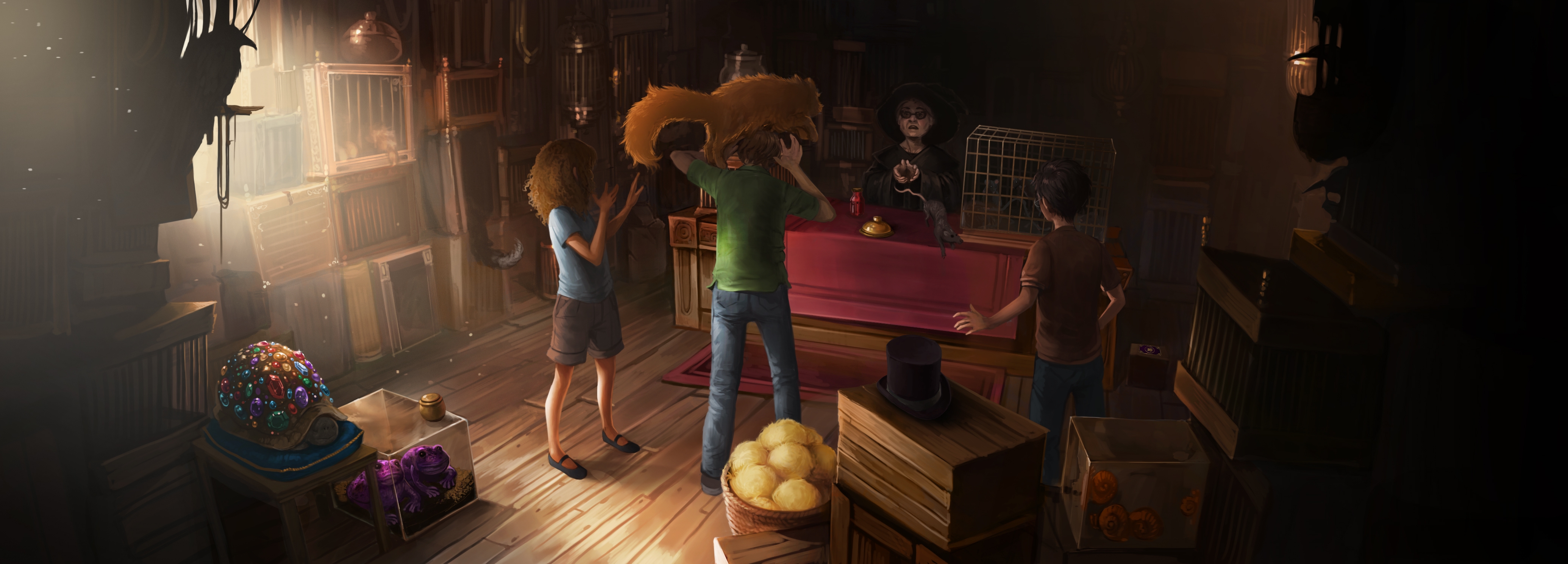


© Pottermore Limited


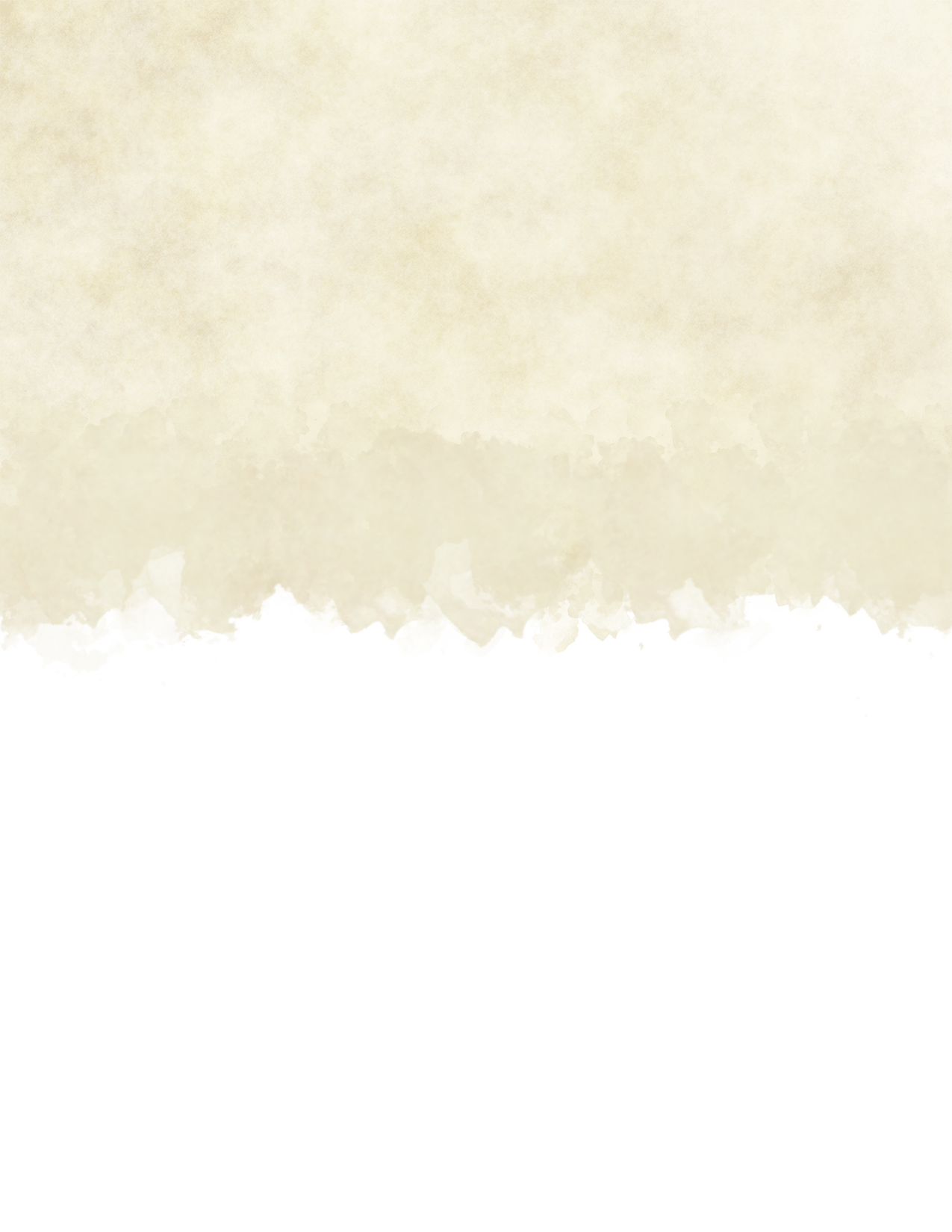
Pet Puffskein
Tiny beast, unaligned
- Armor Class 11
- Hit Points 1 (1d4-1)
- Speed 20 ft.
STR DEX CON INT WIS CHA 1 (-5) 12 (+1) 8 (-1) 5 (-3) 12 (+1) 14 (+2)
- Skills Stealth +3
- Senses passive Perception 10
Fluffy. The puffskein appears to be a living ball of fluff; its cuteness might be distracting to some, much like carrying around an adorable kitten.
Prehensile Tongue. The puffskein has a disproportionately long tongue that it can use to grab or manipulate small objects.
Pet Rat
Tiny beast, unaligned
- Armor Class 12
- Hit Points 1 (1d4-1)
- Speed 30 ft.
STR DEX CON INT WIS CHA 2 (-4) 15 (+2) 9 (-1) 5 (-3) 10 (+0) 4 (-3)
- Senses Darkvision 30 ft., passive Perception 10
Keen Smell. The rat has advantage on Wisdom (Perception) checks that rely on smell.
Actions
Bite. Melee Weapon Attack: +4 to hit, reach 5 ft., one target. Hit: (1d1) piercing damage.
Chapter 6: Wizarding Feats
Some wizards will show a natural aptitude or predilection for certain abilities. Others will dedicate their free time to self-improvement. A small percentage will have rare powers or traits inherited from their ancestors. Regardless of the reason, feats represent a witch or wizard's additional abilities, and all the standard 5e rules apply to obtaining feats.
Innate Feats
The following feats are defining traits that certain wizards have at birth. These feats must be taken at level 1, through house traits at character creation, and cannot be gained at any other time.
Giant's Blood
Even though they are few and far between, half-giants and part-giants find it difficult to conceal their ancestry; they tend to turn heads everywhere they go. Wizards of enormous blood are formidable companions, boasting a wide build, great strength, and a natural resistance to magic.
- Increase your Strength score by 2, to a maximum of 20.
- Adult part-giants are between 7 and 9 feet tall and weigh between 300 and 420 pounds. Your size is Medium.
- You are considered one size larger when determining carrying capacity and weight you can push, drag, or lift.
- When a spell or other magical effect inflicts a condition on you, you can use your reaction to resist one condition of your choice. You can’t use this ability again until you finish a long rest.
Goblin Cunning
Part-goblins are the rarest racial mix of all, with goblin ancestry found anywhere in their family tree making a considerable effect. Part-goblins may feel out of place in a wider environment due to their typical height of 4 feet. These little wizards, on the other hand, have inherited the goblins' cunning and frequently come with great hearts and big personalities.
- Adult part-goblins are between 3 and 5 feet tall and weigh around 110 pounds. Your size is Small.
- You can move through the space of any creature that is of a size larger than yours.
- You have advantage on all Intelligence and Wisdom saving throws against magic.
- You can speak, read, and write Gobbledegook.
Wizarding Heritage
Every wizard is a human, however wizards are generally recognized by the amount of magical ancestry they have. Wizards are very infrequently half-human, having inherited blood and qualities from a magical entity in their ancestors. There are still certain biases towards part-human or Muggleborn wizards, although the misconceptions about blood purity have been debunked.
A Witch's Childhood
Consider how your character's ancestry affected their early experiences, and how those events developed their personality and viewpoint.
Muggle-borns. Muggle-borns are wizards and witches born to non-magical parents. When Muggle-borns receive their letter from Hogwarts, they enter an a new world. Although they'll have to adjust to wizarding society, the lessons they've gained from the Muggle world will serve them well and allow them to see things from a new angle. Furthermore, because they live in a world without magic, they know how to do things the hard way.
Half-bloods. The great majority of human wizards are half-bloods, or wizards with a mix of magical and Muggle heritage. Half-blood was originally used to denote the offspring of a magical wizard and a non-magical Muggle, but it has since evolved into a more general phrase. While many half-bloods are raised in the wizarding world, it is very rare for a half-blood to be uninformed of their magical side of their family, having an experience comparable to Muggle-borns.
Purebloods. Purebloods are sprung from a long line of wizards and witches, with no Muggle blood in their veins. Purebloods were raised in wizarding culture, riding broomsticks, playing Quidditch in the yard, and hearing Beedle the Bard's nursery songs. They arrive at Hogwarts with a little additional assurance since they are well-versed in this world.
Muggle-born
Muggle-borns are wizards and witches born to non-magical parents. When Muggle-borns receive their letter from Hogwarts, they enter an a new world. Although they'll have to adjust to wizarding society, the lessons they've gained from the Muggle world will serve them well and allow them to see things from a new angle. Furthermore, because they live in a world without magic, they know how to do things the hard way.
- Increase your Intelligence score by 1, to a maximum of 20.
- You gain proficiency in Muggle Studies.
- Whenever you make an Intelligence (Muggle Studies) check related to blending in with Muggles or interacting with Muggle technology, add double your proficiency bonus to the check, instead of your normal bonus.
Pureblood
Purebloods are sprung from a long line of wizards and witches, with no Muggle blood in their veins. Purebloods were raised in wizarding culture, riding broomsticks, playing Quidditch in the yard, and hearing Beedle the Bard's nursery songs. They arrive at Hogwarts with a little additional assurance since they are well-versed in this world.
- Increase your Charisma score by 1, to a maximum of 20.
- You gain proficiency in Magical Theory.
- Whenever you make an Intelligence (Magical Theory) check related to wizarding culture or mythology, add double your proficiency bonus to the check, instead of your normal proficiency bonus.-->
Metamorph Magic
Once in a great many years, a metamorphmagus is born to a wizarding family with a unique talent: they can morph every element of their human look. A metamorphmagus will not have perfect control over their talent until they reach adulthood, frequently allowing their emotions or stress to get the best of them and losing control.
- At will, you can transform your appearance. As an action, you decide what you look like, including your height, weight, facial features, sound of your voice, hair length, coloration, and distinguishing characteristics, if any. None of your statistics change, you don't appear as a creature of a different size than you, and your basic shape stays the same. If you're bipedal, you can't use this spell to become quadrupedal, for instance. At any time, you can use your action to change your appearance in this way again.
- You can also adapt your body to an aquatic environment, growing webbing between your fingers. As an action, you gain a swimming speed equal to your walking speed.
Parseltongue
To speak Parseltongue is to magically comprehend and verbally converse with all snakes and snake-like monsters, such as the Runespoor and Basilisk. Because of Salazar Slytherin's position as a Parselmouth, which was handed down to the Gaunt family and Tom Riddle, this spoken language has been linked with Dark wizards. However, no such organization exists outside of Wizarding Britain.
- You can speak Parseltongue.
Veela Charm
A part-veela, like a part-giant, is extremely unusual. A veela-blooded wizard or witch will nearly always be the focus of attention, a vision of elegance and beauty. Part-veela, unlike half-veela and quarter-veela, are equally likely to be male or female.
- You gain proficiency in one Charisma skill of your choice.
- As an action, you can attempt to charm a humanoid you can see within 30 ft, who would be attracted to you. It must make a Wisdom saving throw, (if hostile, with advantage). If it fails, it is charmed by you for one hour or until you or your companions harm it. The charmed creature regards you as a friendly acquaintance and feels compelled to impress you or receive your attention. After, the creature knows it was charmed by you. You can’t use this ability again until you finish a long rest.
Standard Feats
These accomplishments may be the result of latent inherent aptitude, but they are frequently the result of hard labor and long hours of study. These abilities can be obtained at any level, not just level 1.
Aerial Combatant
While flying a broomstick, you can maintain yourself orientated and lead your objectives. You acquire the following advantages.
- You gain tool proficiency in Vehicles (Broomstick).
- You no longer suffer disadvantage on attack rolls due to flying.
Detecting Traces
You've learned to feel magic and recognize styles of spells and curses. Using concentration, you sense the presence of magic within 30 feet of you. If you sense magic in this way, you can use your action to see a faint aura around any visible creature or object in the area that bears magic, and you learn the associated spell's school of magic, if any. This ability can penetrate most barriers, but is blocked by 1 foot of stone, 1 inch of common metal, or 3 feet of wood or dirt.
Lycanthropy
You've been attacked by a transformed werewolf, infecting you with the blood curse of lycanthropy. You gain the following benefits.
- Increase your Strength and Constitution scores by 1, to a maximum of 20.
- You have advantage on Wisdom (Perception) checks that rely on smell.
You also gain the following penalties.
- From sunset to sunrise on the night of the full moon, you undergo your werewolf transformation. During the transformation, your alignment changes to Chaotic Evil and your character is placed under HM control.
- For the day of and three days after your werewolf transformation, you suffer a -3 penalty to your Constitution score, gain two levels of exhaustion that cannot be removed and have disadvantage on Constitution saving throws.
- If your condition becomes known, fellow witches and wizards might fear or discriminate against you.
Martial Artist
You've been trained in striking and grappling, whether as a child's extracurricular activity or as a complement to your magical dueling. You acquire the following advantages.
- Your unarmed strike uses a d6 for damage.
- When you hit a creature with an unarmed strike on your turn, you can try to grapple the target as a bonus action.
- You have advantage on attack rolls against creatures you are grappling.
- While a creature is grappled by you, you can use your action and make another grapple check to try one of the following maneuvers:
- Pin. If you succeed, you and the creature are both restrained until the grapple ends.
- Takedown. If you succeed, you make an unarmed strike and the creature is knocked prone.
- Disarm. If you succeed, the creature is forced to drop one item of your choice that it's holding. You can choose to take the item, ending the grapple.
Occlumency Training
You have gained the mental fortitude to withstand a mental assault. When you are targeted by legilimens, you must make a Wisdom saving throw to avoid its initial effects, and you get an edge in Intelligence battles. If you fail your first saving attempt, you are immediately aware that you are the target of the spell. If you succeed on a saving throw or contest, you can allow the spell to continue and expose false facts, feelings, or memories of your choice. Veritaserum will not work on you, unless you allow it.
Remarkable Aim
You have unerring accuracy with projectile spells. Your ranged spell attacks ignore half cover and treat three-quarters cover as if it were half cover.
Steady Caster
Even in stressful conditions, you can retain your attention. When you suffer damage, you gain an advantage on Constitution saving throws to keep your concentration on a spell.
Vampirism
You gain the following benefits:
- You can see in dim light within 120 feet of you as if it were bright light, and in darkness as if it were dim light. You can’t discern color in darkness, only shades of gray.
- You are stuck at the age and form you were at the time of your undeath. You can't die of old age, you suffer none of the drawbacks of old age, and you can't be aged magically.
- You gain proficiency in Charisma (Persuasion) If you're already proficient, you gain double proficiency.
You also gain the following penalties:
- You take 1 damage when you start your turn in direct sunlight.
- You have disadvantage on attack rolls and on Wisdom (Perception) checks that rely on sight when you, the target of your attack, or whatever you are trying to perceive is in direct sunlight.
- You can't enter a residence without an invitation from one of the occupants.
- You are repelled by the smell of garlic, and touching or eating it causes intense pain.
- Instead of food and water, you must drink animal, human or magical being blood to sustain yourself.
Wandless Magic
You may execute tiny magical feats without your wand by studying ancient tomes or channeling some of the volatile magic of your childhood. You can perform any of the following spells without a wand or a somatic component if you know them.: accio, alohomora, colovaria, illegibilus, incendio glacia, pereo, wingardium leviosa.
You cannot expend a higher level spell slot when casting in this way.
More Feats
The following 5e Feats are also available.
- Actor
- Athlete
- Dungeon Delver
- Durable
- Keen Mind
- Linguist
- Observant
- Skilled
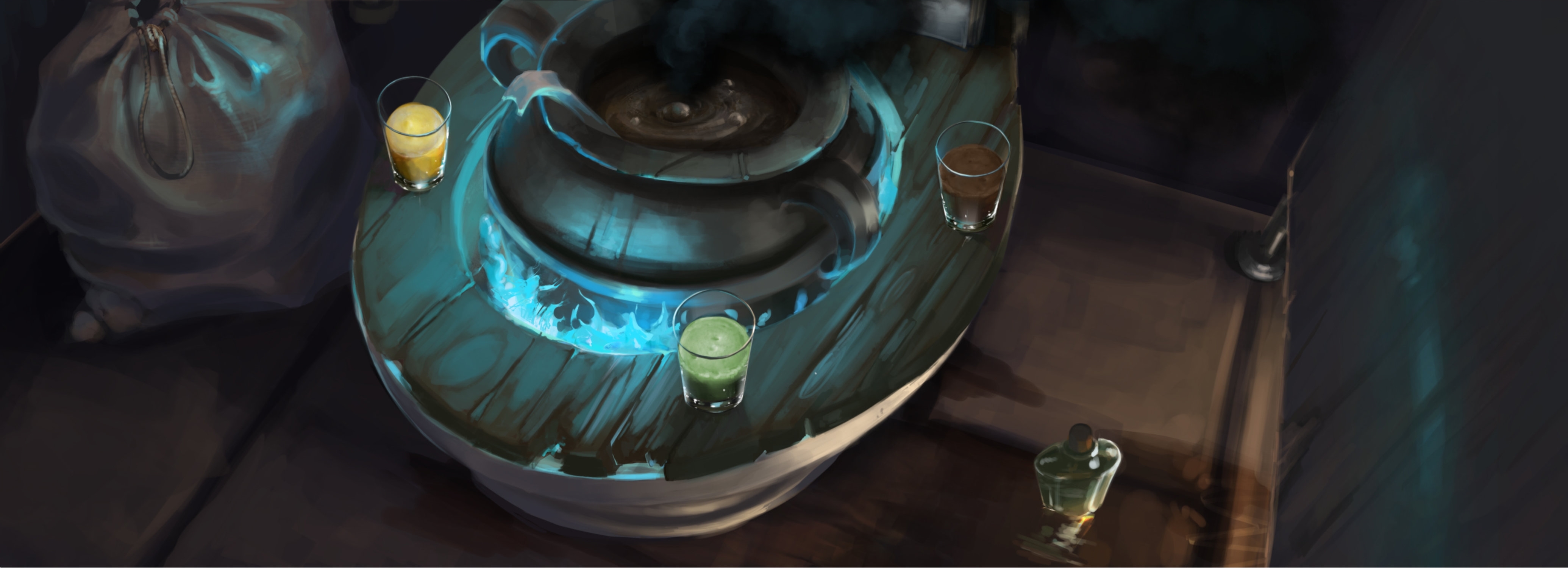


© Pottermore Limited
Chapter 7: Wizarding Skills
Because of the nature of Harry Potter's Wizarding World, specific abilities are required in a wizard's daily existence. Some classic 5e talents are not intended for usage with this supplement and are labeled as deprecated below. New wizarding talents have been introduced to replace them in order to cover the wide range of disciplines taught at Hogwarts School of Witchcraft and Wizardry. Even when a direct conversion from old to new occurs, applications differ from 5e specifications.
Skill Conversions
| Deprecated5e Skill | Equivalent NewWizarding Skill |
|---|---|
| INT (Arcana) | INT (Magical Theory) |
| INT (History) | INT (Muggle Studies) |
| INT (Nature) | INT (Herbology) |
| INT (Religion) | ─ |
| WIS (Animal Handling) | WIS (Magical Creatures) |
| ─ | WIS (Potion-Making) |
Deprecated 5e Skills
Intelligence (Arcana)
Replaced by Intelligence (Magical Theory). Redundant.
Intelligence (History)
Replaced by Intelligence (Magical Theory) / (Muggle Studies). Redundant.
Intelligence (Nature)
Replaced by Intelligence (Herbology) / (Magical Creatures) / (Muggle Studies). Redundant.
Intelligence (Religion)
Replaced by Intelligence (Muggle Studies). Not applicable.
Wisdom (Animal Handling)
Replaced by Intelligence (Magical Creatures). Redundant.
New Skills
Intelligence (Herbology)
Your Intelligence (Herbology) check measures your ability to recall lore about mundane or magical plants.
Intelligence (Magical Theory)
Your Intelligence (Magical Theory) check measures your comprehension of the workings of magic and spell invention. It also checks whether you can recall lore about the invention of spells, legendary wizards and witches, wizarding mythology, and historical events in the wizarding world.
Intelligence (Muggle Studies)
An Intelligence (Muggle Studies) check tests your familiarity with Muggle culture, history, arts and sciences, your success when trying to blend in with Muggles, and your ability to understand or interact with Muggle technology.
Wisdom (Magical Creatures)
When there is any question whether you can calm down a magical creature or intuit a non-magical animal’s intentions, that would call for a Wisdom (Magical Creatures) check. You also make a Wisdom (Magical Creatures) check to keep your head around dangerous creatures and recall their lore.
Intelligence (Potion-Making)
Your Wisdom (Potion-Making) check is used whenever trying to understand and apply alchemical ingredients' effects, stir a brewing potion in just the right way, or experiment and uncover secret potion-making techniques.
Interacting with Magic
If a character interacts with a complex piece of magic requiring theoretical knowledge, it might call for an Intelligence (Magical Theory). However, the majority of interactions with magic should use a character's spellcasting ability modifier.
Chapter 8: Wizarding Alignment
After all, the world isn't divided into good people and Death Eaters. We all have both light and darkness within us. What important is the role we choose to play. That is who we truly are." - Order of the Phoenix's Sirius Black
Good vs. Dark
Skilled wizards, like certain muggles, have attempted to kill and manipulate their way to power throughout the history of wizardkind. These notable individuals are known as Dark wizards and Dark witches because they use evil types of magic and use their power to cause misery and suffering.
There are innumerable Dark secrets discovered and documented in the wizarding realm, whether due to morbid curiosity, scholarly commitment, or personal desire. Even at Hogwarts, highly Dark magic may be found in the library's restricted section. While magic is dangerous and frequently ill-intentioned, it is only a tool. If the caster wishes to cause damage to others, almost every spell can be utilized for Dark intentions. The incantations and rituals of highly Dark magic are seen differently due to the cruel design of that magic as well as the horrors that will occur if it falls into the wrong hands.

© Pottermore Limited -



Lawful Dark, Neutral Dark, and Chaotic Dark
Alignment functions quite similarly to 5e's alignment, with one minor exception. The term evil has been substituted with the word Dark. This speaks more to the morality of your acts than the morality of your ideals. For example, the slogan "For the Greater Good" suggests noble goals, but if the means to that objective are brutal and laden with Dark magic, the proper alignment is Dark.
Assume a witch studies and employs Dark magic for the greater good. She may only cast Unforgivable Curses on Dark wizards who originally cast them, or she may use her power to defend innocents. Even if she has the best of intentions, the means by which she gains her power will ultimately inflict suffering and death, even if it is just those who have used magic to create misery and death themselves. Dark magic's essence is one of hatred and terror. This witch would be driven by vengeance, and the road ahead would be treacherous. Her alignment is most likely Chaotic Neutral.
Chapter 8: Dark Magic Corruption
Besides, the world isn’t split into good people and Death Eaters. We’ve all got both light and dark inside of us. What matters is the part we choose to act on. That’s who we really are.” - Sirius Black, Order of the Phoenix. Changes will begin to occur when a wizard dives into the filthy tomes of Dark magic. Experimenting with Dark magic almost invariably stems from an insatiable desire for power, an extreme dread, or a deep well of hatred. That inner darkness takes a toll on a Dark witch's bodily and mental well-being by employing twisted magic and doing horrible deeds.
Gaining Corruption Points
Although a wizard's journey into darkness is slow, there are generally decisive occasions when the boundary is eventually crossed. Murder, treachery, and bizarre experimentation are all regular occurrences in the history of Dark wizards and witches.
Whenever a character does an act that demonstrates their rising cruelty, the HM might request a Wisdom saving throw. The saving throw DC is determined by their corruption tier in the chart below. If the character fails the saving throw, they earn one corruption point. The following are some instances of incidents that might lead to a corruption investigation:
- Killing a being by reducing it to 0 hit points with a Dark spell, when it could've been spared
- Casting an Unforgivable Curse, whether anyone witnesses it or not
- Betraying an ally that trusted you, for your own gain
- Harming innocents in a foreseeable and preventable way
- Manipulating someone into abandoning their morals
- Acting in a way contrary to alignment
The DC of the saving throw increases as a character progresses through the corruption tiers. Furthermore, the higher tiers offer a corruption boon and a corruption effect to the character. When a character reaches a corruption tier with an effect, they must roll the appropriate die to decide which effect they will acquire from the corruption effect tables on the next page. If necessary, the HM and the character's player can agree on which corruption effect a character receives. These impacts compound with the effects of lower levels of corruption.
These effects are designed to influence a character's personality and actions in a little way. Roleplaying how the Dark magic is distorting the character is strongly encouraged, and an HM may remind players of their corrupting effects.
Corruption Tiers
| Pure-Hearted (0 points) | Pragmatic (1-4 points) | Devious (5-7 points) | Vicious (8-11 points) | Vile (12+ points) | |
|---|---|---|---|---|---|
| Save DC | 10 | 12 | 16 | 22 | - |
| Alignment Shift | - | - | Neutral | - | Dark |
| Corruption Boon | - | Empowered Darkness | - | Heightened Darkness | Inferi Ritual |
| Corruption Effect | - | - | One Mild Effect | One Severe Effect | One Severe Effect |
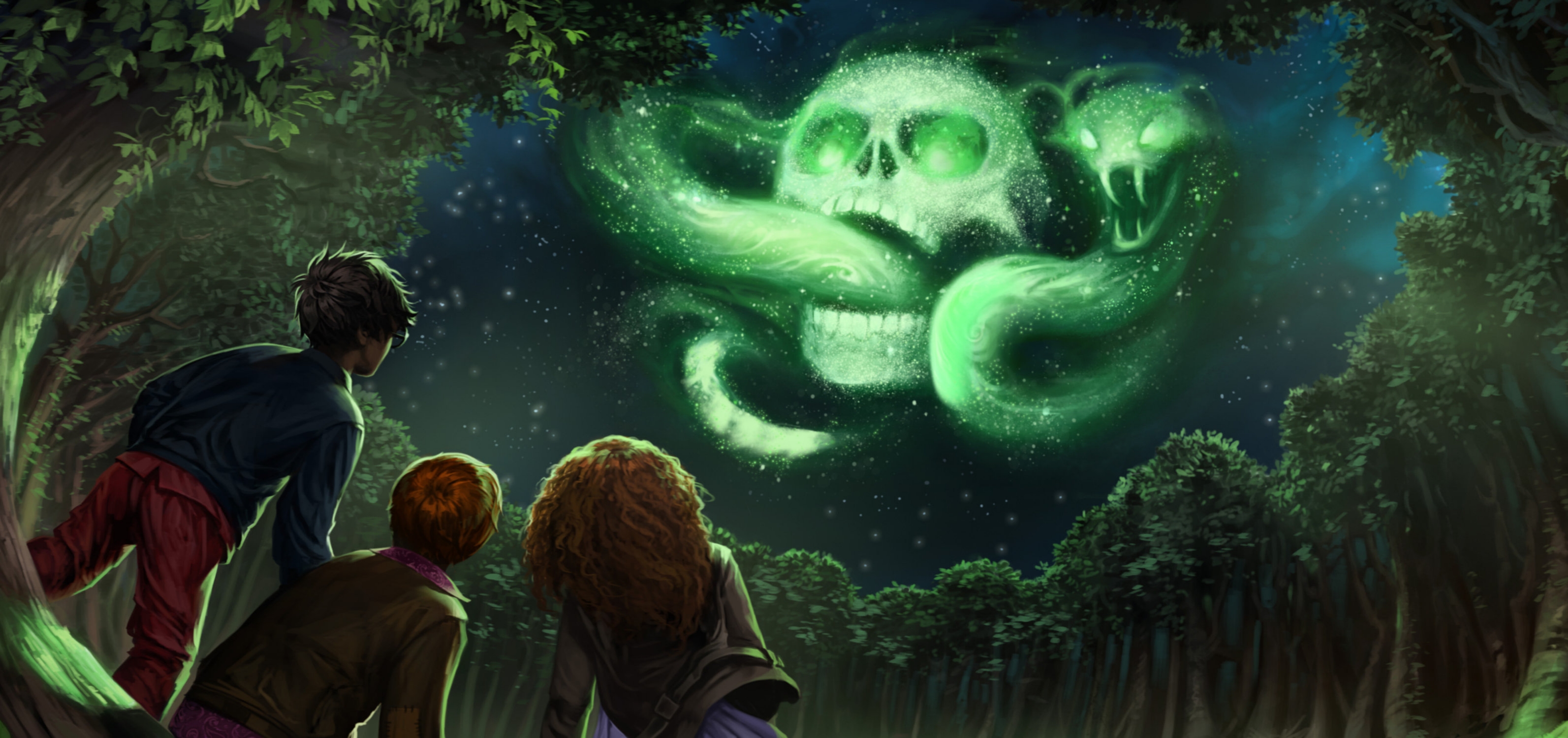
© Pottermore Limited



Removing Corruption Points
True, sincere guilt is the only way to rid the world of corruption. Normally, someone must feel remorse for the specific actions that led to the corruption in the first place, but remorse can also be more general, based on a lifetime of wrongdoing. There must be an amount of pain proportional to the pain inflicted on others.
The HM determines whether a character can erase a corruption point based on their behaviors and inner thoughts. True regret may necessitate the following factors:
- Acknowledging responsibility for the harm caused
- Feeling a deep sadness and regret over the actions
- Seeking to make amends in whatever way possible
If enough corruption points are eliminated to reach a lower tier, the preceding higher tier's boon and effect are likewise gone.
Corruption Boons
Empowered Twilight. When you have Empowered Spell as one of your metamagic options and use it on a Dark spell, it costs 0 sorcery points.
Intensive Darkness. You can use the Heightened Spell metamagic when casting a Dark spell, whether it's one of your metamagic options or not. When you use Heightened Spell on a Dark spell, it costs 1 sorcery point.
Inferi Ritual. By focusing for 10 minutes and expending a 5th level spell slot, this ritual creates an undead servant. Choose a corpse of a Medium or Small humanoid you can touch. Your spell imbues the target with a foul mimicry of life, raising it as an inferius (the HM has the creature’s stats).
You can mentally command any of your inferiors if they are within 60 feet of you as a bonus action (if you control multiple, you can command any or all with the same command). During its following turn, you can decide its action and movement, or you can offer a generic command, such as guarding a certain corridor. If you don't give it any orders, the monster will solely protect itself against enemy creatures. Once given a command, the creature will continue to carry it out until the mission is completed.
The Dark magic that binds the corpse is permanent. The inferius will only deanimate if you die or if it is destroyed.
Corruption Effects
| d6 | Mild Effects |
|---|---|
| 1 | Insomnia |
| 2 | Compulsive |
| 3 | Cough |
| 4 | Reckless |
| 5 | Headaches |
| 6 | Irritability |
| d8 | Severe Effects |
|---|---|
| 1 | Phobic |
| 2 | Jittery |
| 3 | Unnatural Pallor |
| 4 | Paranoid |
| 5 | Crimson Pupils |
| 6 | Distracted |
| 7 | Hallucinations |
| 8 | Sadistic |
Compulsive. You begin to exhibit a mild, compulsive ritual of the HM's choice, likely associated with some fear. This can manifest as quadruple-checking locks and defensive measures, inspecting behind curtains, doors, and bushes for hidden attackers, or refusing to consume anything until you can get a small animal to test it for poison, for example. You take 1.5 times as long to complete a short rest.
Cough. You develop an uncontrollable cough that creeps up every now and then. You have disadvantage on Dexterity (Stealth) checks.
Crimson Pupils. Your eyes are bloodshot and in the right lighting, even the blackest part of your pupils seem to shine red. You have disadvantage on attack rolls when you are facing the sun or a bright light.
Distracted. Your mind has grown scattered and easily clouded. You have disadvantage on Intelligence ability checks, except for Intelligence saving throws.
Hallucinations. Strange visions and sourceless whispers occasionally tug at your perception. You have disadvantage on Wisdom (Perception) checks.
Insomnia. you have trouble falling and/or staying asleep, You have advantage on charms meant to put you to sleep
Jittery. You become far too easy to spook or startle. You have disadvantage on initiative rolls.
Headaches. You have slight headaches throughout the day. You have disadvantage on concentration checks to upkeep spells.
Paranoid. You no longer trust the people you meet. You do not count as a "friendly" creature to strangers and acquaintances, and they do not count as "friendly" to you, in regards to abilities or spells. You can only target yourself and your closest allies with your beneficial spells and abilities.
Phobic. A specific creature or person invades your dreams, turning them to nightmares. When you enter combat with a creature of the chosen type, you must make a Wisdom saving throw (DC is 10 + your total corruption points). On a failure, you are frightened of them for 1 minute.
Reckless. You've become impulsive in the face of dangerous situations. The first attack made against you in any combat encounter has advantage on the attack roll.
Sadistic. Your bloodlust makes you become entranced by the pain you cause. Whenever you deal damage, the next attack made against you by anything other than the creature you damaged has advantage on the attack roll.
Scent of Decay. Your body emits a faint stench of death. You have disadvantage on Charisma (Persuasion) checks.
Unnatural Pallor. Your skin has become pale and waxy and your features oddly distorted. You have disadvantage on Charisma ability checks, except for Charisma (Intimidation) and Charisma saving throws.
Restricted Dark Spells
The following spells are just impossible to perform by the typical wizard. They need a more in-depth study of the darker aspects of magic. The Cruciatus Curse is expressly motivated by a desire to inflict suffering, but the Killing Curse necessitates full, unadulterated hatred in order to end a person's life. Neither of them will have a tenth of the impact if they are not accompanied with the appropriate emotion.
| Spell Name | Required Corruption Points |
|---|---|
| transmogrify | 2 |
| crucio | 4 |
| azreth | 7 |
| Imperio | 9 |
| avada kedavra | 11 |
Once you've accumulated the requisite number of corruption points, you can add that spell to your list of known spells via the standard methods of learning a spell. Once you've added a limited Dark spell to your spell list, you can keep it even if your corruption points drop below the requisite amount.
Chapter 9: Spells
Magic in Harry Potter's Wizarding World is extremely fluid and adaptable, limited only by a wizard's education and experience. Some spells are completely reliant on experiencing a certain emotion, while others involve mental focus and exact wand motions. Spellcasting is a very personal process, with each witch having their own unique style and repertory.
Because W.i.z.a.r.d.s is a game about spellcasters only, some particular attention has been paid to how spells operate. Because not every spell has the ability to kill, wizards and witches can participate in the non-lethal combat demanded by wizarding culture. Take special note of the Spell Tags provided in the spell descriptions.
Spellcasting
Damaging Spells
Many spells inflict some form of harm on the victim. However, because magic is so closely related to the aim of a single spell, the effect on the target might vary dramatically. Spells can be both harmful and non-fatal. Many dueling spells are non-lethal in nature, but aggressive, belligerent Dark magic will kill.
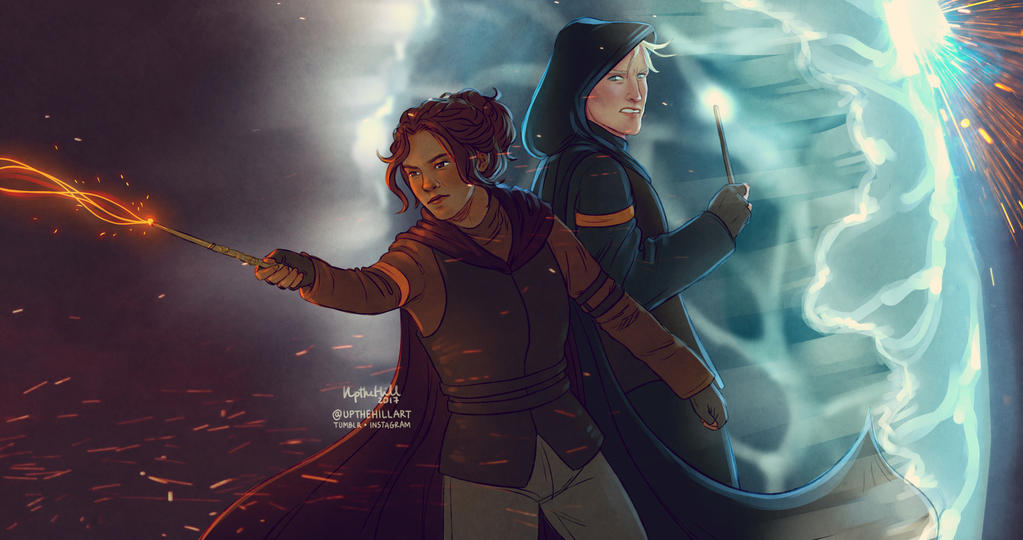



Non-Lethal Magic
Standard spells cannot kill a creature, regardless of the caster's purpose. If a creature is knocked unconscious non-lethally after being reduced to 0 hit points by a normal spell (and failing all of their death saving throws, if applicable).
Lethal Magic
Dark spells vary from conventional spells in one essential way: the damage they do has the potential to be deadly. If a creature is reduced to 0 hit points by a Dark spell (and fails all of their death saving throws, if applicable), that creature dies. It is possible to harm a creature with damaging Dark spells and then incapacitate it non-lethally with a damaging spell that isn't Dark.
Duration
W.I.Z.A.R.D.S. follows all of the regular 5e rules and standards for spell duration and concentration, but the inclusion of devotion spells necessitates more strategic usage of a few spells.
Dedication
If a spell is designated as a devotion spell in its Duration section, you must keep your focus on it and use an action at the start of each of your turns to keep your dedication. If you lose your devotion, the magic will be broken. You may discontinue devotion at any time, just like you can discontinue focus (no action).
The following factors can break dedication:
- Casting another spell. It doesn't matter if the other spell requires dedication or not. Even if you use your bonus action to cast another spell, your dedication is lost.
- Losing your line of sight to your target. This only applies if your spell affects a specific target. You cannot lose dedication by losing line of sight to area spells.
- Losing concentration. If your concentration is broken by taking damage or being incapacitated, your dedication is broken.
Object
An object is a non-living item by definition. Don't be fooled by movement, lifelike imitations, or even intelligent speech; there are enchantments and enchanted artifacts in the magical world that may turn an inanimate object into something quite alive. If you don't see a location for its brain, never trust something that thinks.
Spirit
The Spirit categorization was formed because ghosts complained to being categorized as "beings" when they were obviously "has-beens." They have frequently expressed their unhappiness with administrations that prioritize the living over the dead.
Unique Spells
Apparition
Many mature witches and wizards prefer to travel from one location to another by apparition. When one appears, they spin on the spot, "feeling [their] way into nothingness," and vanish from their present location, only to reappear a second later in a another one, accompanied by a loud cracking or popping sound.
Apparition, like muggle driving, requires the individual to take a test at the age of 17 in order to get a license. To prepare, 16-year-olds can undergo apparition lessons, which normally consist of practicing small leaps of only a few feet in the presence of an instructor. This is due to the fact that the procedure can be perilous; if the witch or wizard does not focus properly when they apparate, they may leave a portion of themselves behind.
How to Apparate
To apparate, you must have a proficiency bonus of +4 or above; the procedure requires a degree of magical competence beyond that of younger witches and wizards.
Though apparition is not technically a spell, it does tax the body in the same way that a spell does and needs you to waste a spell slot. Longer distances need more power and spell slots of higher level. A wand is also required for apparition.
| Slot Level | Apparition Range |
|---|---|
| 1st | 10 ft |
| 2nd | 50 ft |
| 3rd | 200 ft |
| 4th | 1,000 ft |
| 5th | 1 mile |
| 6th | 5 miles |
| 7th | 20 miles |
| 8th | 100 miles |
| 9th | 500 miles |
You can try to disappear as an action. Use your spellcasting ability to make an ability check. Other variables may increase or decrease your total. The end outcome decides whether or not you succeed. If you do, you will immediately apparate in an unoccupied location within the distance permitted by the spell slot you used, compensating for any animals or objects that may be in your targeted space. Because apparition isn't a spell, it can't be stopped.
Leisurely Departure. For most people, apparition is a simple procedure that allows them to get to work, perform errands, or even walk downstairs when there are no imminent hazards to distract them. Being under fire, being in the midst of a particularly dangerous beast, or suffering serious wounds are all valid grounds for not taking a leisurely exit (missing half your hit points). The HM decides on a leisurely departure, which gives you an advantage on your apparition ability check.
| Ability Check | Apparition Result |
|---|---|
| 15 or higher | You disapparate properly and arrive safely. |
| 11-14 | You disapparate but arrive off-target (d20). |
| 7-10 | The disapparition feels off and you stop yourself. Nothing happens. |
| 5-6 | You suffer a minor splinch and arrive off-target (d20). |
| 4 or lower | You suffer a major splinch and arrive off-target (d100). |
Destination, Determination, Deliberation
When attempting to apparate, you must imagine your objective. Typically, this implies that a wizard can only apparate to a location they've been previously and can recall vividly. Appariating to a new place that is close to a known location is conceivable, but it may negate the benefit of unhurried departure or even impose a disadvantage to the ability check. The HM determines how tough it is to apparate to your target location.
Off-Target. If you emerge off-target, you will appear a random distance away from the location and in a random direction. Off-target distance is calculated by a dice roll that yields a percentage of the total distance to be traveled (i.e. if you meant to travel 120 miles, and rolled a 15, you would be 15 percent of 120 miles off target, or 18 miles). The dice used may be a d20 or a d100, depending on the severity of the fault. Roll a d8 and assign a direction to each die face to establish the direction.



Wandless Apparition. Apparating without a wand is significantly more difficult and hazardous than ordinary wandless magic, which is already uncommon. To attempt to apparate without a wand, you must have the Wandless Magic feat, you cannot profit from a leisurely departure, you have a disadvantage on the ability check, and you must waste a spell slot two levels higher than you usually would.
Side-Along Apparition
You can carry a number of creatures equal to your spellcasting ability modifier with you when you apparate. Every passenger reduces your apparition roll by -2. Each creature must be clinging to you or another creature that is also clinging to you, and you must make a separate apparition ability check for each creature with the same total side-along penalty and advantage or disadvantage. This roll alone decides whether the monster gets splinched or not. The same splinching rules apply.
Forced Side-Along Apparition. If you are grappled by a creature when you disapparate, they side-along apparate with you and you have disadvantage on the roll, in addition to the side-along penalty from the additional passenger. If an enemy creature is within 5 feet of you when you disappear, they can use their reaction to grapple you before you vanish.
Splinching
When you're splinched, you've left a piece of yourself in your prior position rather than apparating your full body. Splinching is usually caused by a lack of determination during apparating. Whether you have a little or severe splinch determines how much of you is left behind.
A tiny splinch occurs when a non-threatening bodily part is lost, such as an eyelash, a portion of a finger, or a little amount of skin. Rolling a single d10 determines how much slashing damage you take. This injury cannot be mitigated or avoided in any manner.
A big splinch is significantly more serious and frequently fatal. A significant bodily part, such as a limb or arm, is severed from your body, or a portion of flesh is pulled from your body. Roll the number of d6 dice that corresponds to your level. You take that much slicing damage as well as a degree of weariness. This injury cannot be mitigated or avoided in any manner. You take slashing damage equal to half your level at the start of your subsequent turns as you bleed out, which ceases as soon as you regain hit points from a healing effect.
If you are splinched, the HM will roll on the appropriate table to determine the result. If you lose flesh, the HM can either determine the location arbitrarily, or you can agree on an appropriate spot. For example, if you were being grabbed by an enemy on your right arm, the splinch would likely have occurred there.
| d6 | Minor Splinch Result |
|---|---|
| 1 | You lose a part of a finger. |
| 2 | You lose a toe. |
| 3 | You lose a piece of one of your ears. |
| 4 | You lose a small piece of skin. |
| 5 | You lose one of your eyebrows. |
| 6 | You lose an article of clothing. |
| d6 | Major Splinch Result |
|---|---|
| 1-2 | You lose part of a leg. |
| 3 | You lose an arm. |
| 4-6 | You lose a large amount of flesh. |
Legilimency and Occlumency
Legilimency is the extremely unusual technique of utilizing magic to extract knowledge from a person's mind. While this secret skill typically passes undiscovered, there are a few persons who have trained to resist this magic, known as occlumens. A legilimens against an occlumens intellectual combat is a direct conflict of discipline. A legilimens must probe and test to uncover a vulnerability in those mental barriers, but an occlumens must maintain their mind clean in an almost meditative condition.
If a victim of the legilimens spell has the Occlumency Training feat, they can instantly oppose the incursion into their head by making a Wisdom saving attempt. Furthermore, the occlumens is skilled in the tactics used to induce insanity and has an edge in Intelligence contests between them and the legilimens. If the victim possesses the Skilled Occlumens school of magic characteristic, their mental barriers are impenetrable. The spell has no effect on a legilimens because they can't even read their surface thoughts.
Those who have received occult training have one more trick up their sleeve. If they are able to endure the effects of the legilimens spell, they have the choice of immediately terminating the spell or making something to offer to the legilimens. The legilimens has no way of knowing whether the information varies from the target's true inner thoughts. When a legilimens digs further, the occlumens may fabricate more and more intricate details, causing false memories and supplying wrong information.
Patronus Casting
The patronus charm is a unique type of magic that needs the wizard to imagine one of their most happy memories when casting the spell. The casting effort will fail if the sense of happiness is not real or powerful enough. In its most basic form, casting the spell successfully results in a non-corporeal patronus charm, which appears as a beam or ball of bluish-white light issued from the caster's wand. The corporeal patronus is a more evolved form of the charm in which the luminous essence takes the form of an animal or magical beast. A patronus' bodily shape is a reflection of the witch's soul and is frequently exceedingly personal.
The corporeal patronus of a wizard is also the animal into which they will shift during their animagus metamorphosis. Use Appendix B: Patronus Rolling Tables to determine the shape of expecto patronum the first time you cast it or finish your animagus metamorphosis. You can choose your chosen patronus instead of rolling for it at the discretion of your HM.
Spell Conversions
Although Harry Potter's spells have tremendous effects, some of them are similar to current 5e spells. The tables below relate new spell names to their 5e equivalents. Almost every spell is altered in some manner because it is based on the effects seen in the Wizarding World. Players should not believe that simply because there is a comparable 5e spell, the Harry Potter spell will function in the same way or have the same description.
More than one new spell can correlate to a single 5e spell, and vice versa if a new spell incorporates the function of many 5e spells. If a spell is not mentioned in the following tables, it is a completely new spell with no 5e equivalent.
Charms Conversions
| W&W Spell | Equivalent 5e Spell |
|---|---|
| Abscondi | Pass without Trace |
| Accio | Mage Hand |
| Alohomora, Cistem Aperio | Knock |
| Cave Inimicum | Tiny Hut |
| Colloportus | Arcane Lock |
| Colovaria | Minor Illusion |
| Confundo | Confusion, Suggestion |
| Defodio | Mold Earth |
| Depulso | Arcane Hand |
| Diminuendo, Reducio | Reduce |
| Dissonus Ululatus, Vigilatus | Alarm |
| Engorgio | Enlarge |
| Exhilaro, Rictusempra | Hideous Laughter |
| Finite Incantatem | Dispel Magic |
| Flagrate | Illusory Script |
| Glacius | Shape Water |
| Herbivicus | Plant Growth |
| Immobulus | Color Spray |
| Locomotor, Mobilicorpus | Floating Disk |
| Lumos/Nox | Light |
| Lumos Maxima | Daylight |
| Novum Spirare | Water Breathing |
| Obliviate | Modify Memory |
| Pellucidi Pellis | Invisibility |
| Pereo | Control Flames |
| Piertotum Locomotor | Animate Objects |
| Protego | Shield |
| Protego Maxima | Mage Armor |
| Protego Totalum | Globe of Invulnerability |
| Reparo | Mending |
| Repello Inimicum | Magic Circle |
| Repello Muggletum | Suggestion |
| Scourgify | Prestidigitation |
| Silencio | Silence |
| Sonorus/Quietus | Thaumaturgy |
| Tergeo | Shape Water |
| Wingardium Leviosa | Levitate |
Jinxes, Hexes and Curses Conversions
| W&W Spell | Equivalent 5e Spell |
|---|---|
| Avada Kedavra | Power Word: Kill |
| Azreth | Firestorm |
| Bombarda | Fire Bolt |
| Colloshoo | Entangle |
| Confringo | Fireball |
| Conjunctivia | Blindness/Deafness |
| Crucio | Power Word: Pain |
| Devicto | Ray of Frost |
| Expulso | Shatter, Thunderwave |
| Furnunculus, Densaugeo | Vicious Mockery |
| Impedimenta | Slow |
| Imperio | Dominate Person |
| Infirma Cerebra | Mind Sliver |
| Langlock | Counterspell |
| Oppugno | Cloud of Daggers |
| Petrificus Totalus | Hold Person |
| Relashio | Knock |
| Sectumsempra | Vitriolic Sphere |
| Ventus | Gust |
Healing Conversions
| W&W Spell | Equivalent 5e Spell |
|---|---|
| Anapneo | Spare the Dying |
| Episkey | Healing Word |
| Rennervate | Lesser Restoration |
| Reparifors | Cure Wounds, Lesser Restoration |
| Vulnera Sanentur | Regenerate |
Transfiguration Conversions
| W&W Spell | Equivalent 5e Spell |
|---|---|
| Aguamenti | Create or Destroy Water |
| Avis | Conjure Animals |
| Crinus Muto | Disguise Self |
| Draconifors | Conjure Elemental |
| Ebublio | Watery Sphere |
| Ignis Furore | Minute Meteors, Wall of Fire |
| Ignis Laqueis | Thorn Whip |
| Incendio | Create Bonfire |
| Incendio Glacia | Produce Flame |
| Lapifors | Polymorph |
| Nebulus | Fog Cloud |
| Obscuro, Melofors | Blindness/Deafness |
| Orbis | Maximilian’s Earthen Grasp |
| Orchideous | Druidcraft |
| Reparifarge | Dispel Magic |
| Serpensortia | Conjure Animal |
| Tarantallegra | Irresistable Dance |
| Transmogrify | Power Word: Pain |



Divination Conversions
| W&W Spell | Equivalent 5e Spell |
|---|---|
| Homenum Revelio | Locate Person |
| Revelio | See Invisibility |
| Specialis Revelio | Identify |
Spell List
All characters have the same spell list, but spells that can only be learned through a school of magic or feature are indicated with an asterisk.
Charms
Cantrips (0 Level)
- Accio
- Alohomora
- Capto
- Carpe Retractum
- Cistem Aperio
- Colloportus
- Colovaria
- Defodio
- Duro
- Finestra
- Flagrate
- Glisseo
- Illegibilus
- Impervius
- Lumos/Nox
- Molliare
- Pereo
- Periculum/Verdimillious
- Scourgify
- Sonorus/Quietus
- Spongify
- Tergeo
- Wingardium Leviosa
1st Level
- Arresto Momentum
- Diffindo R
- Exhilaro R
- Glacius R
- Locomotor R
- Mobilicorpus R
- Perfusorius R
- Protego
- Reducio R
- Rictusempra
- Riddikulus
- Vigilatus R
2nd Level
- Abscondi R
- Diminuendo
- Engorgio R
- Expelliarmus
- Finite Incantatem
- Fumos
- Geminio R
- Immobulus
- Muffliato*
- Partis Temporus
- Pellucidi Pellis
- Protego Maxima
- Reparo R
- Silencio R
- Stupefy
3rd Level
- Deprimo R
- Depulso
- Dissonus Ululatus
- Expecto Patronum R
- Fianto Duri
- Fortissimum
- Herbivicus
- Lumos Maxima R
- Novum Spirare R
- Repello Inimicum
4th Level
- Capacious Extremis*
- Confundo R
- Repello Muggletum R
5th Level
- Cave Inimicum
- Ne Ustio
- Obliviate*
- Piertotum Locomotor*
- Salvio Hexia
6th Level
- Protego Totalum*
9th Level
- Fidelius Mysteria Celare*
Jinxes, Hexes, and Curses
Cantrips (0 Level)
- Bombarda
- Cantis
- Devicto
- Furnunculus
- Genu Recurvatum
- Infirma Cerebra
- Locomotor Wibbly
1st Level
- Colloshoo
- Densaugeo
- Digitus Wibbly
- Flipendo
- Locomotor Mortis
- Mimblewimble
- Petrificus Totalus
2nd Level
- Arania Exumai
- Oppugno
- Relashio
- Slugulus Eructo
- Tarantallegra
- Ventus R
3rd Level
- Confringo
- Conjunctivia
- Expulso
- Impedimenta
- Langlock*
4th Level
- Levicorpus/Liberacorpus
- Muco Volatilis
- Reducto
- Sectumsempra*
5th Level
- Imperio
- Nullum Effugium*
- Omnifracto*
7th Level
- Azreth
- Crucio
8th Level
- Avada Kedavra
Transfiguration
Cantrips (0 Level)
- Aguamenti
- Crinus Muto
- Epoximise
- Incendio Glacia
- Orchideous
- Vera Verto
1st Level
- Inanimatus Conjurus R
- Incendio R
- Nebulus
- Obscuro R
- Sagittario
2nd Level
- Incarcerous R
- Orbis*
- Reparifarge*
- Serpensortia
3rd Level
- Avis
- Evanesco
- Ignis Laqueis*
- Melofors
4th Level
- Ebublio R
- Lapifors*
5th Level
- Draconifors
- Transmogrify
6th Level
- Ignis Furore
Healing
Cantrips (0 Level)
- Anapneo*
- Rennervate
1st Level
- Episkey
- Ferula
- Reparifors
3rd Level
- Intus Sunt R *
4th Level
- Brackium Emendo
6th Level
- Vulnera Sanentur*
Divination
Cantrips (0 Level)
- Point Me
- Prior Incantato
1st Level
- Specialis Revelio
3rd Level
- Legilimens*
- Revelio
4th Level
- Appare Vestigium R
- Homenum Revelio
Spell Descriptions
The spells are presented in alphabetical order.
Abscondi
The Track Obliteration Charm - 2nd-level Charm (ritual)
- Casting Time: 1 action
- Range: Self
- Duration: Concentration, up to 1 hour
A magical aura makes your impact on your surroundings unseen, masking you and your companions from detection. For the duration, each creature you choose within 30 feet of you (including you) has a +10 bonus to Dexterity (Stealth) checks and can’t be tracked except by magical means. A creature that receives this bonus leaves behind no tracks or other traces of its passage.
Accio
The Summoning Charm - Charm cantrip
- Casting Time: 1 action
- Range: 30 feet
- Duration: Instantaneous
A target object is pulled directly to the caster as if carried by an invisible hand. The object is selected by pointing at it with a wand or by naming it, Accio broom. An object heavier than 20 pounds may not be summoned.
At Higher Levels. When you cast this spell using a spell slot of 1st level or higher, you may select or stack one of the following effects for each slot level above 0.
- Increase spell range by 100 feet.
- Increase weight limit by 20 pounds.
- Increase the number of targetable objects by 5.
Aguamenti
The Water-Making Spell - Transfiguration cantrip
- Casting Time: 1 action
- Range: Self (30 foot cone)
- Duration: Dedication, up to 1 minute
A cone of clear, pure water shoots from the tip of the caster's wand with the desired force. The water doesn’t go bad and extinguishes exposed flames in the area.
Alohomora
The Unlocking Charm - Charm cantrip
- Casting Time: 1 action
- Range: 60 feet
- Duration: Instantaneous
Choose a door or window that you can see within range, that uses mundane or magical means to prevent access.
A target that is held shut by a mundane lock or that is stuck or barred becomes unlocked, unstuck, or unbarred. If the object has multiple locks, only one of them is unlocked.
If you choose a target that is held shut with Colloportus, that spell is removed.
When you cast the spell, the mechanism noisily turns and unlocks. This noise emanates from the target object and is audible from as far away as 100 feet.
Anapneo
The Airway Clearing Spell - Healing cantrip
- Casting Time: 1 action
- Range: 30 feet
- Duration: Instantaneous
- Tags: School of Magic - Healing
A being's airway is cleared and they are assisted in breathing. If used on a living being that has 0 hit points, the being becomes stable.
Appare Vestigium
The Tracking Spell - 4th-level Divination (ritual)
- Casting Time: 1 minute
- Range: Self (30-foot-radius hemisphere)
- Duration: Concentration, up to 10 minutes
With a spin and a spray of golden mist, recent magical activity is revealed and illuminated through ghostly images hanging in the air, recreating the magical beings, magical creatures, or magical events that have been in the area within the last 10 minutes. Magical footprints and track marks are also highlighted on the ground. Any of the effects can be hidden, highlighted, or expanded for the duration.
At Higher Levels. When you cast this spell using a spell slot of a higher level, the historical window extends to 1 hour (5th level), 24 hours (6th level), or a week (7th level).
Arania Exumai
The Spider Repelling Spell - 2nd-level Curse
- Casting Time: 1 action
- Range: Self (30 foot cone)
- Duration: Instantaneous
This spell blasts away spiders, Acromantulas, or arachnids with a cone of bright scorching light. Each spider-like creature in a 30-foot cone must make a Constitution saving throw. On a failed save, a creature takes 4d6 radiant damage and is knocked back 5 feet plus a number of feet equal to five times your spellcasting ability modifier. On a successful save, it takes half as much damage and isn't knocked back.
Any non-arachnid creatures within the area of the spell are unaffected.
At Higher Levels. When you cast this spell using a spell slot of 3rd level or higher, the damage increases by 1d6 and the shove distance increases by 10 feet for each slot level above 2nd.
Arresto Momentum
The Slowing Charm - 1st-level Charm
- Casting Time: 1 reaction, which you take when you or a creature within 60 feet of you falls
- Range: 60 feet
- Duration: 1 minute
Choose up to five falling creatures within range. A falling creature's rate of descent slows to 60 feet per round until the spell ends. If the creature lands before the spell ends, it takes no falling damage and can land on its feet, and the spell ends for that creature.
Avada Kedavra
The Killing Curse - 8th-level Curse
- Casting Time: 1 action
- Range: 60 feet
- Duration: Instantaneous
- Tags: Dark - Unforgivable Curse
The most dangerous of the Unforgivables, Avada Kedavra channels the caster's pure hatred into an unblockable spell that kills whatever it strikes. Make a ranged spell attack against a target within range. On a hit and if the target has 100 hit points or fewer, it dies or is destroyed. Otherwise, the spell has no effect. Defensive spells have no effect against this spell and it can only be blocked by physical objects.
At Higher Levels. When you cast this spell using a spell slot of 9th level, there is no hit point restriction.
Avis
The Bird-Conjuring Charm - 3rd-level Transfiguration
- Casting Time: 1 action
- Range: 60 feet
- Duration: Concentration, up to 1 hour
You conjure either a Swarm of Small Birds or two Swarms of Tiny Birds that are a species of your choice. The swarm disappears when it drops to 0 hit points or when the spell ends.
The conjured birds are friendly to you and your companions. Roll initiative for the summoned swarms as a group, which has its own turns. They obey any verbal commands that you issue to them (no action required by you). If you don't issue any commands to them, they defend themselves from hostile creatures, but otherwise take no actions.
The HM has the creatures' statistics.
At Higher Levels. When you cast this spell using certain higher-level spell slots, more creatures appear - twice as many with a 5th-level slot, three times as many with a 7th-level slot, and four times as many with a 9th-level slot.
Azreth
Fiendfyre - 7th-level Curse
- Casting Time: 1 action
- Range: Self (10 foot cube)
- Duration: Dedication, up to 42 seconds
- Tags: Dark
Great plumes of cursed fire pour out from the tip of your wand, rampaging into shapes of beasts and incinerating anything in their path. Upon casting, the area of the fiendfyre is one 10-foot cube, with the number of 10-foot cubes doubling at the beginning of each of your turns. As long as concentration is maintained, you can arrange any newly added cubes as you wish. Each cube must have at least one face adjacent to the face of another cube. Each creature in the area must make a Dexterity saving throw. It takes 7d10 fire damage on a failed save, or half as much damage on a successful one. A creature takes the same damage when it enters the area for the first time on a turn or ends its turn there.
Upon reaching 8 cubes, you must make a DC15 Constitution saving throw to maintain concentration at the beginning of each of your turns. If your concentration is broken after 4 cubes of fiendfyre are active, the spell doesn't end and rages out of control. The fiendfyre will continue to double at the beginning of each round, until the end of its duration. If you decide to end the spell while you still have concentration, the spell ends as normal and all fiendfyre disappears.
The fiendfyre damages objects in the area and ignites flammable objects that aren’t being worn or carried. Even magical objects and defenses are damaged or destroyed by this spell.
At Higher Levels. When you cast this spell using a spell slot of 8th level or higher, the damage increases by 2d10 and the concentration DC increases by 1 for each slot level above 7th.
Bombarda
The Exploding Charm - Curse cantrip
- Casting Time: 1 action
- Range: 60 feet
- Duration: Instantaneous
- Tags: Dark
The spell blasts whatever it hits, creating a localized concussive explosion upon impact. Make a ranged spell attack against a target within range. On a hit, the target takes 1d10 bludgeoning damage.
This spell’s damage increases by 1d10 when you reach 5th level (2d10), 11th level (3d10), and 17th level (4d10).
Brackium Emendo
The Bone Mending Spell - 4th-level Healing
- Casting Time: 1 action
- Range: Touch
- Duration: Instantaneous
This spell heals a being's broken bones immediately, although the process is quite painful. A being you tap with your wand regains a number of hit points equal to 5d10 + your spellcasting ability modifier, and gains a level of exhaustion.
At Higher Levels. When you cast this spell using a spell slot of 5th level or higher, the healing increases by 1d10 for each slot level above 4th.
Cantis
The Singing Jinx - Curse cantrip
- Casting Time: 1 action
- Range: 60 feet
- Duration: 1 round
When struck by this spell, a being can't help but belt out a couple of lines from the first song that comes to mind. Make a ranged spell attack against a being within range. On a hit, the target must cast all other spells non-verbally until the end of its next turn. If it tries to cast a spell verbally, it must first succeed on an Intelligence saving throw, or the casting fails and the spell is wasted.
Capacious Extremis
The Undetectable Extension Charm - 4th-level Charm
- Casting Time: 10 minutes
- Range: Touch
- Duration: Until dispelled
- Tags: School of Magic - Charms
Transform an ordinary small bag/pouch into a Handy Haversack's central pouch, a backpack into a Bag of Holding, or a trunk’s internal capacity into a Bag of Holding with: 3 ft. long and 2 ft. wide opening; internal size of 6 ft. long, 4 ft. wide, and 4 ft. deep; 1000 pounds and 150 cubic ft. limits.
Capto
The Gripping Charm - Charm cantrip
- Casting Time: 1 action
- Range: Touch
- Duration: 10 minutes
One target object becomes quite easily gripped by one hand, almost sticky unless the holder willfully lets go. The holder has advantage against being non-magically disarmed.
Carpe Retractum
The Seize and Pull Charm - Charm cantrip
- Casting Time: 1 action
- Range: 60 feet
- Duration: 1 round
A bond of light shoots out from the caster and attaches to anything you can see within range, and then retracts, pulling caster and target each 10 feet closer. If the caster or target doesn't move or would easily resist the force of the other being pulled, the other moves 20 feet. If the target is an unwilling creature that is able to be moved, it must make a Strength saving throw to resist being moved. The bond of light keeps the caster and target attached for the duration.
At Higher Levels. When you cast this spell using a spell slot of 1st level or higher, the range and pulling effect both increase by 5 feet for each slot level above 0.
Cave Inimicum
The Hiding Charm - 5th-level Charm
- Casting Time: 1 minute
- Range: Self (10-foot-radius hemisphere)
- Duration: 1 hour
- Tags: Defensive
A forcefield-like dome forms a perimeter around the caster that filters vision of anything or anyone designated by the caster, rendering those objects infallibly invisible. The dome is undetectable from the outside, but slightly visible from the inside, like a wavering glass barrier. Anyone can move through the field freely to see the hidden contents.
At Higher Levels. When you cast this spell using a spell slot of 6th level or higher, you may select or stack one of the following effects for each slot level above 5th.
- Increase the spell radius by 20 feet.
- Increase the duration to 8 hours.
- Add the ability to completely block sounds.
- Add the ability to completely block smells.
Cistem Aperio
The Container Opening Charm - Charm cantrip
- Casting Time: 1 action
- Range: 60 feet
- Duration: Instantaneous
Choose a box, chest, or another container that you can see within range that uses mundane or magical means to prevent access.
A target that is held shut by a mundane lock or that is stuck or chained becomes unlocked, unstuck, or unchained. If the object has multiple locks, only one of them is unlocked.
If you choose a target that is held shut with Colloportus, that spell is dispelled.
When you cast the spell, the mechanism noisily turns and unlocks. This noise emanates from the target object and is audible from as far away as 100 feet.
Colloportus
The Locking Spell - Charm cantrip
- Casting Time: 1 action
- Range: Touch
- Duration: Until dispelled
You touch a closed door, window, gate, chest, or other entryway, and it becomes locked for the duration. It is impassable until it is broken or the spell is dispelled or suppressed.
While affected by this spell, the object is more difficult to break or force open; the DC to break it or pick any locks on it increases by 10.
Colloshoo
The Stickfast Hex - 1st-level Curse
- Casting Time: 1 action
- Range: 90 feet
- Duration: Concentration, up to 1 minute
This creative hex sticks a being's shoes to the ground, rooting them in place. Choose a being wearing shoes within range to make a Dexterity saving throw. On a failed save, the target is restrained for the duration. If the saving throw fails by 5 or more, the target is knocked prone as well. The target can use its action to take off its shoes, or make a Strength check against your spell save DC. On a success, it pulls its shoes free.
Colovaria
The Color Change Charm - Charm cantrip
- Casting Time: 1 action
- Range: 30 feet
- Duration: 1 hour
You change the color of any target within range that lasts for the duration, to any desired complexity. The color may only be reverted by dispelling the charm.
Physical interaction with the object reveals that the object has retained its original texture and material, but its color has truly changed.
Confringo
The Blasting Curse - 3rd-level Curse
- Casting Time: 1 action
- Range: 90 feet
- Duration: Instantaneous
- Tags: Dark
A tiny ball of fire flashes from your wand to a point you choose within range and then explodes into a fiery blast on impact. Each creature in a 10-foot-radius sphere centered on that point must make a Dexterity saving throw. A target takes 8d6 fire damage on a failed save, or half as much damage on a successful one. The fire spreads around corners. It ignites flammable objects in the area that aren’t worn or carried.
At Higher Levels. When you cast this spell using a spell slot of 4th level or higher, the damage increases by 1d6 and the radius increases by 5 feet for each slot level above 3rd.
Confundo
The Confundus Charm - 4th-level Charm (ritual)
- Casting Time: 1 action
- Range: 90 feet
- Duration: Concentration, up to 1 minute
The Confundus Charm is a particularly powerful charm that leaves anything confused, forgetful, and impressionable, often causing people to wander off absent-mindedly. If the target is an object that operates or functions on its own, it will operate erratically, malfunction, or completely shut down. This spell has no effect on a completely inanimate objects that entirely depend on external manipulation.
If the target is a creature you choose within range, it must succeed on a Wisdom saving throw when you cast this spell or be affected by it. An affected target can’t take reactions and, if not distracted with something, you roll a d10. If you roll 1-8, the creature must use all its movement to move in a random direction. To determine the direction, assign a direction to each number 1-8. If you roll a 9-10, the creature doesn't move. Whether it moves or not, the creature doesn’t take an action this turn.
If desired, you can suggest a course of activity (limited to a sentence or two) at the time of casting and magically influence a creature you can see within range that can hear and understand you. Creatures that can’t be charmed are immune to this effect. The suggestion must be worded in such a manner as to make the course of action sound reasonable. Asking the creature to directly hurt itself or its allies will have no effect. The suggested course of action can continue for the entire duration. You can also specify conditions that will trigger a special activity during the duration. For example, you might suggest that a wizard hug the next blast-ended skrewt he sees. If the condition isn’t met before the spell expires, the activity isn’t performed.
At the end of each of its turns, an affected target can make a Wisdom saving throw. If it succeeds, the spell's effects end for that target.
At Higher Levels. When you cast this spell using a spell slot of 5th level or higher, you can target one additional target for each slot level above 4th. The targets must be within 30 feet of each other when you target them.
Conjunctivia
The Conjunctivitis Curse - 3rd-level Curse
- Casting Time: 1 action
- Range: 60 feet
- Duration: 1 minute
When struck by this curse, a creature's eyes to become irritated and painful, swelling shut. Make a ranged spell attack against a creature within range. On a hit, the target takes 4d8 necrotic damage and is blinded for the duration. At the end of each of its turns, the target can make a Constitution saving throw. On a success, the spell ends. Creatures that are normally magically resistant are vulnerable to this spell.
At Higher Levels. When you cast this spell using a spell slot of 4th level or higher, the damage increases by 1d8 for each slot level above 3rd.
Crinus Muto
The Haircut Spell - Transfiguration cantrip
- Casting Time: 1 action
- Range: Self
- Duration: 1 hour
Your hair is magically lengthened, shortened, styled, or colored. This may also be applied to eyebrows and facial hair. If your appearance is drastically changed, you may be hard to recognize. To discern that you are disguised, a creature can use its action to inspect your appearance and must succeed on an Intelligence (Investigation) check against your spell save DC.
Crucio
The Cruciatus Curse - 7th-level Curse
- Casting Time: 1 action
- Range: 30 feet
- Duration: Dedication, up to 1 minute
- Tags: Dark - Unforgivable Curse
With a single word and a heart full of hatred, waves of intense pain assail one creature you can see within range. If the target has 100 hit points or fewer, it is subject to crippling pain. Otherwise, the spell has no effect on it.
While the target is affected by crippling pain, any speed it has can be no higher than 10 feet. The target also has disadvantage on attack rolls, ability checks, and saving throws, other than Constitution saving throws. Finally, if the target tries to cast a spell, it must first succeed on a Constitution saving throw, or the casting fails and the spell is wasted.
A target suffering this pain must make a Constitution saving throw at the end of each of its turns. On a failed save, the target gains one level of exhaustion.
Defodio
The Gouging Spell - Charm cantrip
- Casting Time: 1 action
- Range: 30 feet (5 foot cube)
- Duration: Instantaneous
You choose a portion of dirt or stone that you can see within range and that fits within a 5-foot cube. You manipulate it in one of the following ways:
- If you target an area of stone or earth, you can instantaneously excavate it, move it along the ground, and deposit it up to 5 feet away. This movement doesn’t have enough force to cause damage.
- If the dirt or stone you target is on the ground, you cause it to become difficult terrain. Alternatively, you can cause the ground to become normal terrain if it is already difficult terrain. This change lasts for 1 hour. If cast multiple times, only two of this effect can be active at a time, and you can dismiss such an effect as a bonus action.
At Higher Levels. When you cast this spell using a spell slot of 1st level or higher, the cube's size and distance the earth can be moved are each increased by 5 feet and the number of active normal/difficult terrain effects increase by 1 for each slot level above 0.
Densaugeo
The Bucktooth Hex - 1st-level Curse
- Casting Time: 1 action
- Range: 60 feet
- Duration: Instantaneous
A target's front two teeth grow abnormally long, protruding downwards past its chin. Make a ranged spell attack against a creature within range. On a hit, it takes 2d8 psychic damage and has disadvantage on the next attack roll it makes before the end of its next turn.
At Higher Levels. When you cast this spell using a spell slot of 2nd level or higher, the damage is increased by 1d8 for each slot level above 1st.
Deprimo
The Crushing Charm - 3rd-level Charm (ritual)
- Casting Time: 1 action
- Range: 120 feet
- Duration: Instantaneous
You place immense downward pressure on a target. If the target is a creature, it must make a Strength saving throw. On a failed save, a creature takes 5d8 bludgeoning damage and is knocked prone. On a successful save, the creature takes half as much damage and isn’t knocked prone. If the target is a flat surface, this will either create a crater or collapse the surface.
At Higher Levels. When you cast this spell using a spell slot of 4th level or higher, the damage is increased by 1d8 for each slot level above 3rd.
Depulso
The Banishing Charm - 3rd-level Charm
- Casting Time: 1 action
- Range: 60 feet
- Duration: Instantaneous
A target is pushed directly away from the caster as if shoved by an invisible hand, being thrown 5 feet away plus a number of feet equal to five times your spellcasting ability modifier. The target is selected by pointing at it with a wand.
If targeting a creature or object that is being worn or carried, make a check with 26 Strength (+8) contested by the Strength (Athletics) check of the target creature. If the target is Medium or smaller, you have advantage on the check. If you succeed, the target is thrown the same distance.
At Higher Levels. When you cast this spell using a spell slot of 4th level or higher, the shove distance is increased by 10 feet for each slot level above 3rd.
Devicto
The Stinging Jinx - Curse cantrip
- Casting Time: 1 action
- Range: 60 feet
- Duration: Instantaneous
This weak jinx is a classic training spell between duelists, a startling sting on impact. Make a ranged spell attack against a creature within range. On a hit, it takes 1d6 force damage, and it can't take reactions until the start of its next turn.
The spell's damage increases by 1d6 when you reach 5th level (2d6), 11th level (3d6), and 17th level (4d6).
Diffindo
The Severing Charm - 1st-level Charm (ritual)
- Casting Time: 1 action
- Range: 30 feet
- Duration: Instantaneous
An object is precisely torn or cut, as if a magical blade extended from the tip of your wand. This spell was not designed to be used on creatures and only makes very shallow cuts. Choose a target that fits within a 5-foot cube. If the target is a creature, it must make a Dexterity saving throw. It takes 4d4 slashing damage on a failed save or half as much damage on a successful one. This is the counterspell to incarcerous, immediately ending that spell's effects.
At Higher Levels. When you cast this spell using a spell slot of 2nd level or higher, you can target one additional creature or the cube's size increases by 5 feet for each slot level above 1st. If targeting an additional creature, the targets must be within 10 feet of each other when you target them.
Digitus Wibbly
The Jelly-Fingers Jinx - 1st-level Curse
- Casting Time: 1 action
- Range: 60 feet
- Duration: 1 minute
This jinx makes fingers numb and relaxed. Make a ranged spell attack against a being within range. On a hit, the target has disadvantage on attack rolls for the duration. At the start of each of its turns, the target can make a Dexterity saving throw. On a success, the spell ends.
Diminuendo
The Diminishing Charm - 2nd-level Charm
- Casting Time: 1 action
- Range: 60 feet
- Duration: Concentration, up to 1 minute
Make a ranged spell attack against a creature within range. On a hit, the being or beast's size is halved in all dimensions, and its weight is reduced to one-eighth of normal. This reduction decreases its size by one category - from Medium to Small, for example.
Until the spell ends, the target also has disadvantage on Strength checks and Strength saving throws. The target's items or equipment also shrink to match its new size, but any item dropped by an affected creature returns to normal size at once. The target deals 1d4 less damage (this can't reduce the damage below 1).
Dissonus Ululatus
The Caterwauling Charm - 3rd-level Charm
- Casting Time: 10 minutes
- Range: Self (30-foot-radius hemisphere)
- Duration: 8 hours
- Tags: Defensive
You set an alarm to emit a piercing shriek when an unauthorized person enters the area. Until the spell ends, an alarm sounds whenever a Tiny or larger creature touches or enters the warded area. When you cast the spell, you can designate creatures or areas within the hemisphere that won't set off the alarm. The alarm produces an unpleasant screaming sound for as long as the intruding creature is in the area of the spell, audible from as far away as 300 feet.
Draconifors
The Dragon-Making Spell - 5th-level Transfiguration
- Casting Time: 1 action
- Range: 30 feet
- Duration: Concentration, up to 10 minutes
A particularly intimidating display of transfiguration, this spell turns a desk-sized object into a miniature version of an adult dragon. Choose either one or two inanimate, nonmagical objects that each fill a 5-foot cube within range and choose one of the following options:
- One dragon wyrmling of challenge rating 4 or lower
- Two dragon wyrmlings of challenge rating 2 or lower
The object becomes a Medium-sized dragon construct with the chosen wyrmling's statistics, which is untransfigured when it drops to 0 hit points or when the spell ends.
The dragon construct is friendly to you and your companions for the duration. Roll initiative for the dragon construct, which has its own turns. It obeys any verbal commands that you issue to it (no action required by you). If you don't issue any commands to it, it defends itself from hostile creatures, but otherwise takes no actions.
If your concentration is broken, the dragon construct doesn't disappear. Instead, you lose control of the construct, it becomes hostile toward you and your companions, and it might attack. An uncontrolled dragon construct can't be dismissed by you, and it untransfigures 10 minutes after you transfigured it.
The HM has the creature's statistics.
At Higher Levels. When you cast this spell using a spell slot of 7th level, choose one of the following options:
- Two dragon wyrmlings of challenge rating 3 or lower
- Three dragon wyrmlings of challenge rating 2 or lower
When you cast this spell using a spell slot of 9th level, choose one of the following options:
- Two dragon wyrmlings of challenge rating 4 or lower
- Four dragon wyrmlings of challenge rating 2 or lower
Duro
The Hardening Charm - Charm cantrip
- Casting Time: 1 action
- Range: 60 feet
- Duration: 1 minute
An object becomes as hard and tough as stone. It gains resistance to all damage.
Ebublio
The Bubble Spell - 4th-level Transfiguration (ritual)
- Casting Time: 1 action
- Range: 90 feet
- Duration: Concentration, up to 1 minute
You conjure up a swirling sphere of water with a 5-foot radius at a point you can see within range. The sphere can hover but no more than 10 feet off the ground. The sphere remains for the spell’s duration.
Any creature in the sphere’s space must make a Strength saving throw. On a successful save, a creature is ejected from that space to the nearest unoccupied space of the creature’s choice outside the sphere. A Huge or larger creature succeeds on the saving throw automatically, and a Large or smaller creature can choose to fail it. On a failed save, a creature is restrained by the sphere and is engulfed by the swirling bubble of water. At the end of each of its turns, a restrained target can repeat the saving throw, ending the effect on itself on a success.
The sphere can restrain as many as four Medium or smaller creatures or one Large creature. If the sphere restrains a creature that causes it to exceed this capacity, a random creature that was already restrained by the sphere falls out of it and lands prone in a space within 5 feet of it.
As an action, you can move the sphere up to 30 feet in a straight line. If it moves over a pit, a cliff, or other drop-off, it safely descends until it is hovering 10 feet above the ground. Any creature restrained by the sphere moves with it. You can ram the sphere into creatures, forcing them to make the saving throw.
When the spell ends, the sphere falls to the ground and extinguishes all normal flames within 30 feet of it. Any creature restrained by the sphere is knocked prone in the space where it falls. The water then vanishes.
Engorgio
The Engorgement Charm - 2nd-level Charm (ritual)
- Casting Time: 1 action
- Range: Touch
- Duration: 1 minute
You cause a creature or an object you can see within range to grow larger for the duration. Choose either a creature or an object that isn’t being worn or carried. If the target is unwilling, it can make a Constitution saving throw. On a success, the spell has no effect.
The target's size doubles in all dimensions, and its weight is multiplied by eight. This growth increases its size by one category - from Medium to Large, for example. If there isn't enough room for the target to double its size, the creature or object attains the maximum possible size in the space available. Until the spell ends, the target also has advantage on Strength checks and Strength saving throws. The target's items and equipment also grow to match its new size. While enlarged, the target deals 1d4 extra damage.
Episkey
The Fast-Healing Spell - 1st-level Healing
- Casting Time: 1 bonus action
- Range: 10 feet
- Duration: Instantaneous
A being of your choice that you can see within range regains hit points equal to 2d4 + your spellcasting ability modifier. This spell has no effect on undead or constructs.
At Higher Levels. When you cast this spell using a spell slot of 2nd level or higher, the healing increases by 1d4 for each slot level above 1st.
Epoximise
The Sticking Spell - Transfiguration Cantrip
- Casting Time: 1 action
- Range: 30 feet
- Duration: 1 hour
This spell transfigures the surface of an object to become extremely sticky. One object of your choice within range that fits within a 1-foot cube adheres to anything it touches for the duration. If a creature wants to overcome the sticking effect, it can use its action to make a Strength check against your spell save DC. On a success, it can pull the target object free or remove one thing from the target object's surface.
At Higher Levels. When you cast this spell using a spell slot of 1st level or higher, the cube's size increases by 1 foot for each slot level above 0.
Evanesco
The Vanishing Spell - 3rd-level Transfiguration
- Casting Time: 1 action
- Range: 30 ft
- Duration: Instantaneous
One non-magical object or magical construct of your choice within range that fits within a 1-foot cube is vanished. Vanished objects have been described as being transfigured to go "into non-being, which is to say, everything." Vanishing is often seen as the magical inverse of conjuration.
At Higher Levels. When you cast this spell using a spell slot of 4th level or higher, the cube's size increases by 1 foot for each slot level above 3rd.
Exhilaro
The Cheering Charm - 1st-level Charm (ritual)
- Casting Time: 1 action
- Range: 30 feet
- Duration: Concentration, up to 1 minute
A creature of your choice that you can see within range becomes quite cheerful. For the next 10 minutes, the target creature has advantage on any saving throw against becoming frightened.
If concentration is maintained for one whole round, the creature perceives everything as hilariously funny and falls into fits of laughter if this spell affects it. The target must succeed on a Wisdom saving throw or fall prone, becoming incapacitated and unable to stand up for the duration. A creature with an Intelligence score of 5 or less isn’t affected.
At the end of each of its turns, and each time it takes damage, the target can make another Wisdom saving throw. The target has advantage on the saving throw if it’s triggered by damage. On a success, the spell ends.
Expecto Patronum
The Patronus Charm - 3rd-level Charm (ritual)
- Casting Time: 1 action
- Range: 10 feet
- Duration: Concentration, up to 1 minute
- Tags: Defensive
A Patronus Charm is a special bit of magic that requires a wizard to envision one of their happiest memories while casting the spell. The feeling of happiness must be genuine or strong enough to produce a radiant, ethereal beast, the embodiment of that wizard's positive emotions that serves as their protector.
When you cast this spell, you can choose to conjure an incorporeal or corporeal patronus. If you attempt to cast this spell while frightened or within 60 feet of a dementor, you must make an ability check using your spellcasting ability. The DC equals 10 + the number of dementors within 60 feet of you. A roll of 19-20 on the die automatically succeeds.
On a success, you cast the spell. On a failure, you can only conjure an incorporeal patronus, but if you fail the check by 5 or more, the spell fails entirely.
At the end of your turn, if you are frightened or there are one or more dementors within 60 feet of you while concentrating on this spell, you must repeat the ability check. On a failure, your patronus vanishes and the spell ends.
Highly Advanced Magic
The Patronus Charm is regarded as a difficult spell partly because the caster must relive a truly joyful memory when casting. This spell's ability check is unusual, but represents the challenge of focusing on suitable memory in a stressful situation.
Remember that a frightened creature has disadvantage on ability checks, including this one. Your HM can allow you to spend Inspiration to automatically succeed on this check. Your character might bring forth a powerful childhood memory in their time of need.
A patronus sheds light in a radius around it. You and friendly creatures can't be frightened while in your patronus's light. A dementor that starts its turn within this light or enters the light for the first time on a turn must succeed on a Wisdom saving throw or become frightened of the patronus until the start of its next turn (this fear ignores any immunity to the frightened condition). While frightened, the dementor must take the Dash action on its turn and move away from the patronus by the safest available route until it leaves the light.
Incorporeal Patronus. Your patronus takes the form of a 5-foot burst of glowing mist in an unoccupied space adjacent to you. The patronus doesn't fill its space. It sheds bright light in its space and dim light in a 5-foot radius. On subsequent turns, you can move the patronus to another space adjacent to you as a bonus action. Additionally, you can move it as a reaction to a dementor moving within 10 feet of you.
Corporeal Patronus. Your patronus takes the form of a wispy silver animal in an unoccupied space that you can see within range. The patronus doesn't fill its space. It has no hit points and is immune to all damage, but can be targeted by another spell that affects magic, such as finite incantatem. The patronus sheds bright light in a 10-foot radius and dim light for an additional 10 feet.
More than Dementors
The Patronus Charm is most famous against dementors, but it can be a potent protector against other dark creatures in the Wizarding World.
Only dementors and lethifolds have been confirmed to be affected by a patronus. At the HM's discretion, your patronus can interact with or harm creatures like banshees, inferi, or obscuri. If your HM decides a creature can be affected by a patronus, the creature is susceptible to the patronus's fear effect, attacks and damage.
Even if a patronus is unable to harm a particular kind of creature, its soothing presence can still protect you by preventing fear.
When you cast the spell and as a bonus action on subsequent turns, you can move the patronus. The distance you can move it depends on the size of the patronus. A Medium or smaller patronus can move 60 feet, a Large patronus can move 45 feet, and a Huge patronus can move 30 feet. A patronus ignores objects and terrain. In addition, the Patronus can enter a creature's space and stop there.
At any time during the patronus's movement, you can direct the patronus to charge into a dementor within 5 feet of it. Make a melee spell attack for the patronus using your spell attack modifier. On a hit, the target takes 5d10 radiant damage and the patronus pushes the target up to 5 feet plus a number of feet equal to five times your spellcasting ability modifier. The patronus moves with the target to remain within 5 feet of it and does not use any movement to do so.
At Higher Levels. When you cast this spell using a spell slot of 4th level or higher, the damage increases by 1d10 and the radius of the dim light increases by 5 feet for each slot level above 3rd.
Expelliarmus
The Disarming Charm - 2nd-level Charm
- Casting Time: 1 action
- Range: 60 feet
- Duration: Instantaneous
Famous for being the spell that finally defeated Voldemort in the Second Wizarding War, this spell can harmlessly end duels by disarming a wizard of his wand. Make a ranged spell attack against a being within range. On a hit, you disarm the target, forcing it to drop one item of your choice that it's holding. The object lands 10 feet away from it in a random direction.
At Higher Levels. When you cast this spell using a spell slot of 3rd level or higher, you can choose the direction the object travels and the object's distance increases by 10 feet for each slot level above 2nd.
Expulso
The Concussive Curse - 3rd-level Curse
- Casting Time: 1 action
- Range: 90 feet
- Duration: Instantaneous
The spell shoots out from your wand and a wave of thunderous force sweeps out from a point of your choice within range. Each creature in a 10-foot-radius sphere centered on that point must make a Constitution saving throw. On a failed save, a creature takes 4d8 thunder damage and is pushed 10 feet away from that point. On a successful save, the creature takes half as much damage and isn’t pushed. In addition, unsecured objects that are completely within the area of effect are automatically pushed 10 feet away from that point by the spell’s effect, and the spell emits a thunderous boom audible out to 100 feet.
At Higher Levels. When you cast this spell using a spell slot of 4th level or higher, the damage increases by 1d8 for each slot level above 3rd.
Ferula
The Bandaging Charm - 1st-level Healing
- Casting Time: 1 action
- Range: 30 feet
- Duration: 10 minutes
Bandages and splints are conjured on a being with no more than half of its hit point maximum, and it gains hit points equal to two times your spellcasting ability modifier. Additionally, any Wisdom (Medicine) checks to stabilize that target within the duration are made at advantage, and if the target is successfully stabilized, it regains 1 hit point.
Fianto Duri
The Reinforcing Charm - 3rd-level Charm
- Casting Time: 1 action
- Range: 90 feet
- Duration: Instantaneous
- Tags: Defensive
Whenever you cast this spell on an active defensive spell that improves a creature’s AC or grants it temporary hit points, each creature affected by the targeted spell gains temporary hit points equal to twice your caster level + your spellcasting ability modifier. When the targeted spell ends or an affected creature is no longer affected by it, the creature loses any remaining temporary hit points from this spell.
If you are maintaining concentration or dedication on a defensive spell, this spell can uniquely be cast on that active defensive spell without ending that spell or breaking your concentration or dedication.
Fidelius Mysteria Celare
The Fidelius Charm - 9th-level Charm
- Casting Time: 1 hour
- Range: Self (150-foot-radius hemisphere)
- Duration: Until dispelled
When cast upon a single dwelling that fits within range, it becomes a secret, infallibly invisible and inaccessible by anyone else. This effect reaches to the dwelling's property lines, or if no property lines are defined, the edge of the hemisphere centered on the caster at the time of casting.
You choose yourself or one person within the area of the spell to be the Secret-Keeper. If the Secret-Keeper tells someone the secret (the location of the dwelling) verbally or in writing, that person can see the secret like the Secret-Keeper and step onto the property. It's impossible for anyone other than the Secret-Keeper to share the secret. If the Secret-Keeper dies, everyone who knows the secret becomes Secret-Keepers and can share the secret with others.
Three dimensional space is warped around the secret, as if the space occupied by the secret never existed. If a person walks directly towards the secret, they will magically appear on the other side. Nothing will remain that indicates or gives clues to the existence of the secret. If anyone knew the location of the secret before the spell is cast, they forget the exact address but remember the general area where the secret is located.
This spell is completely undetectable and the area can't be targeted by divination spells. The spell's effects will only end if you dispel it or all Secret-Keepers have died.
Finestra
The Glass-Shattering Charm - Charm cantrip
- Casting Time: 1 action
- Range: 10 feet
- Duration: Instantaneous
The glass of a window or door turns to powder, discreetly turning it into an open entryway.
Finite Incantatem
The General Counter-spell - 2nd-level Charm
- Casting Time: 1 action
- Range: 30 feet
- Duration: Instantaneous
- Tags: Defensive
Choose any creature, object, or magical effect within range. One non-Transfiguration spell of 2nd level or lower on the target ends. If you are aware of at least one spell affecting the target, you can specify that spell in your mind. If you are unaware of what spells are affecting the target, one randomly selected spell ends. For a spell of a higher level on the target, make an ability check using your spellcasting ability. The DC equals 10 + the spell's level. On a successful check, the spell ends.
At Higher Levels. When you cast this spell using a spell slot of 3rd level or higher, you automatically end the effects of a non-Transfiguration spell on the target if the spell's level is equal to or less than the level of the spell slot you used.
Flagrate
The Lettering Charm - Charm cantrip
- Casting Time: 1 action
- Range: Touch
- Duration: Until dispelled
You trace your wand in the air or over an object, leaving fiery marks in that position. You may write any letters or depict any shapes, as if you were writing with a quill. Although the glowing letters appear to be made of fire, it is just an illusion and it cannot burn anything.
Flipendo
The Knockback Jinx - 1st-level Curse
- Casting Time: 1 action
- Range: 60 feet
- Duration: Instantaneous
The spell feels like a very heavy blow, sharply throwing a creature from its standing position to the ground. Choose a being you can see within range to make a Strength saving throw. On a failed save, a creature takes 1d10 bludgeoning damage, is knocked back a number of feet equal to five times your spellcasting ability modifier, and is knocked prone. On a successful save, the creature takes half as much damage, is knocked back 5 feet, and isn’t knocked prone.
At Higher Levels. When you cast this spell using a spell slot of 2nd level or higher, the damage increases by 1d10 and the knockback on a failed save increases by 5 feet for each slot level above 1st.
Fortissimum
The Unbreakable Charm - 3rd-level Charm
- Casting Time: 1 action
- Range: Touch
- Duration: Until dispelled
One object of your choice that fits within a 1-foot cube is made completely invulnerable to physical destruction. This renders it immune to any damage, magical or mundane, but it can still be affected by spells that directly change the object, such as vera verto or evanesco.
At Higher Levels. When you cast this spell using a spell slot of 4th level or higher, the cube's size increases by 1 foot for each slot level above 3rd.
Fumos
The Smokescreen Spell - 2nd-level Charm
- Casting Time: 1 action
- Range: Self (15 foot cube)
- Duration: Concentration, up to 1 minute
A thick spray of smoke billows out from your wand, filling a 15-foot cube originating from you. This smoke spreads around corners. It lasts for the duration or until strong wind disperses the smoke, ending the spell. Its area is heavily obscured.
When a creature enters the spell's area for the first time on a turn or starts its turn there, that creature must make a Constitution saving throw. The creature takes 3d6 poison damage on a failed save, or half as much damage on a successful one. Constructs and undead are immune to this damage.
At Higher Levels. When you cast this spell using a spell slot of 3rd level or higher, the damage increases by 2d6 and the area increases by 5 feet for each slot level above 2nd.
Furnunculus
The Pimple Jinx - Curse cantrip
- Casting Time: 1 action
- Range: 60 feet
- Duration: Instantaneous
Outbreaks of this jinx is a common occurrence when students get in fights, resulting in grotesque pimples covering the victims face. Make a ranged spell attack against a being within range. On a hit, it takes 1d4 psychic damage and has disadvantage on the next attack roll it makes before the end of its next turn. Additionally, it has disadvantage on the next Charisma ability check it makes.
This spell’s damage increases by 1d4 when you reach 5th level (2d4), 11th level (3d4), and 17th level (4d4).
Geminio
The Doubling Charm - 2nd-level Charm (ritual)
- Casting Time: 1 action
- Range: Touch
- Duration: 10 days
You tap an object that fits within a 1-foot cube with your wand and a perfect duplicate of it pops out from the object. The duplicate is indistinguishable from the object by normal means, but does not share any of its magical qualities or functions. The duplicate has one quarter of the original object's hit points and vanishes at the end of the spell's duration.
To detect the duplicate's inauthenticity, a creature within 5 feet of it can use an action to make an Intelligence (Investigation) check against your spell save DC. On a success, it perceives subtle flaws and understands it to be a fake. 5 days after casting this spell, the duplicate begins to show significant signs of degradation, granting advantage on the Investigation check. If specialis revelio is cast on the duplicate, the caster is made aware that the object is a duplicate created by this spell.
At Higher Levels. When you cast this spell using a spell slot of 3rd level or higher, the cube's size increases by 1 foot for each slot level above 2nd.
Genu Recurvatum
The Knee-Reversal Hex - Curse cantrip
- Casting Time: 1 action
- Range: 60 feet
- Duration: 1 minute
This hex flips around a beast or being's knees, forcing them to take awkward, uncoordinated steps. Make a ranged spell attack against a creature within range. On a hit, the target's speed is halved for the duration of the spell.
Glacius
The Water-Freezing Charm - 1st-level Charm (ritual)
- Casting Time: 1 action
- Range: 60 feet
- Duration: 1 hour
You freeze an area of water that you can see within range and that fits within a 5-foot cube. The area becomes difficult terrain for the duration. Each Medium or smaller creature that is covered, submerged or partially submerged in the affected water has its speed halved and must make a Constitution saving throw. On a failed save, a creature takes 3d8 cold damage, or half as much damage on a successful one.
At Higher Levels. When you cast this spell using a spell slot of 2nd level or higher, the damage increases by 1d8 and the cube's size increases by 5 feet for each slot level above 1st. If a creature of any size fits within the larger cube, it can be affected by this spell.
Glisseo
The Stairs-to-Slide Charm - Charm cantrip
- Casting Time: 1 action
- Range: 30 feet
- Duration: Concentration, up to 1 minute
Famously used to protect the Hogwarts girls' dormitories from intruders, this spell changes the angle of all connected steps in a single flight of stairs. They angle downwards, turning into an abnormally slick ramp.
Herbivicus
The Gardening Charm - 3rd-level Charm
- Casting Time: 1 action or 1 minute
- Range: 90 feet
- Duration: 1 hour or Instantaneous
This spell channels vitality into plants within a specific area. There are two possible uses for the spell, granting either immediate or long-term benefits.
- If you cast this spell using 1 action, choose a point within range. All non-magical plants in a 60-foot radius centered on that point become thick and overgrown for 1 hour, turning the area into difficult terrain. These plants can't be used in potions, due to being magically manipulated.
- If you cast this spell over 1 minute, you accelerate the growth of a single young plant, magical or mundane. The plant instantly reaches maturity, but does not exceed a healthy "adult" size.
Ignis Furore
The Firestorm Spell - 6th-level Transfiguration
- Casting Time: 1 action
- Range: 60 feet
- Duration: Concentration, up to 1 minute
- Tags: Dark
You create a ringed wall of fire within range up to 20 feet in diameter, 20 feet high, and 10 feet thick choosing whether it's touching the ground or in the air. The wall is opaque and lasts for the duration.
When the wall appears, each creature within its area must make a Dexterity saving throw. On a failed save, a creature takes 4d8 fire damage, or half as much damage on a successful save. A creature takes the same damage when it enters the wall for the first time on a turn or ends its turn there.
As an action, you can send a tendril of flames lashing out at any point within 60 feet of the center of the ring. Each creature within 5 feet of that point must make a Dexterity saving throw. A creature takes 4d8 fire damage on a failed save, or half as much damage on a successful one. A creature in the area of the wall and fiery burst is affected only once.
The spell damages objects in the area and ignites flammable objects that aren’t being worn or carried.
At Higher Levels. When you cast this spell using a spell slot of 7th level or higher, the damage increases by 1d8 and the ring's radius increases by 5 feet for each slot level above 6th.
Ignis Laqueis
The Fire Whip Spell - 3rd-level Transfiguration
- Casting Time: 1 action
- Range: 60 feet
- Duration: Dedication, up to 1 minute
- Tags: School of Magic - Transfiguration
You create a long, snaking whip of fire from the tip of your wand, lashing out and coiling around a creature in range. Make a melee spell attack against the target. On a hit, the creature takes 4d10 fire damage and is grappled for the duration. As an action, the target can make a Strength or Dexterity saving throw to end the spell's effects.
On each of your following turns spent maintaining dedication, the whip tightens and you deal 4d10 fire damage to the target automatically. If the creature is Large or smaller, you can use a bonus action to pull the creature up to 10 feet closer to you.
At Higher Levels. When you cast this spell using a spell slot of 4th level or higher, the initial damage and subsequent turn damage increases by 1d10 for each slot level above 3rd.
Illegibilus
The Word-Scrambling Charm - Charm cantrip
- Casting Time: 1 action
- Range: 10 feet
- Duration: 1 hour
For the duration, no one can understand any written language that the spell is cast upon. The pieces of all the letters are separated and scrambled, rendering it impossible to try to decode.
Immobulus
The Freezing Charm - 2nd-level Charm
- Casting Time: 1 action
- Range: Self (15 foot cube)
- Duration: 1 round
You send a pulse through the area in front of you, freezing everything in space and time. Roll 7d10; the total is how many hit points of creatures this spell can affect. All creatures and objects in a 15-foot cube originating from you are affected in the order of nearest to farthest. Each creature affected by this spell is paralyzed until the spell ends. While paralyzed, the creature is fixed in the space they occupied when the spell was cast, which may leave it suspended in air.
Subtract each creature's current hit points from the total before moving on to another creature. A creature's hit points must be equal to or less than the remaining total for that creature to be affected. Any object that is wholly within the area is automatically affect by this spell for the duration and does not count against the number of hit points you can affect. If casting the spell only affects objects and does not affect any creatures, the duration is up to 8 hours.
At Higher Levels. When you cast this spell using a spell slot of 3rd level or higher, roll an additional 2d10 for each slot level above 2nd. When you cast this spell using a spell slot of 4th level or higher, the duration increases by 1 round for each two slot levels above 2nd.
Impedimenta
The Impediment Jinx - 3rd-level Curse
- Casting Time: 1 action
- Range: 60 feet
- Duration: 1 minute
A powerful dueling spell, this jinx alters time around one creature within range, severely inhibiting its ability in combat. The target must succeed on a Wisdom saving throw or be affected by this spell for the duration.
An affected target's speed is halved, it takes a -2 penalty to AC and Dexterity saving throws, and it can't use reactions. On its turn, it can use either an action or a bonus action, not both. Regardless of the creature's abilities or magic items, it can't make more than one melee or ranged attack during its turn.
If the creature attempts to cast a spell with a casting time of 1 action, roll a d20. On an 11 or higher, the spell doesn't take effect until the creature's next turn, and the creature must use its action on that turn to complete the spell. If it can't, the spell is wasted.
A creature affected by this spell makes another Wisdom saving throw at the end of its turn. On a successful save, the effect ends for it.
Imperio
The Imperius Curse - 5th-level Curse
- Casting Time: 1 action
- Range: 10 feet
- Duration: Concentration, up to 1 minute
- Tags: Dark - Unforgivable Curse
When this Unforgivable Curse is cast, an incredibly wonderful, floating feeling comes over the victim, granting them a feeling of "untraceable happiness" and peace. In this state, the person's will is completely overridden by the caster and they will follow any command. A being of your choice within range must succeed on a Charisma saving throw at disadvantage or be charmed by you for the duration.
While the target is charmed, you have a telepathic link with it. You can use this telepathic link to issue commands to the creature while you are conscious (no action required), which it does its best to obey. You can specify a simple and general course of action, such as “Attack that creature,” “Run over there,” or “Fetch that object.” If the creature completes the order and doesn’t receive further direction from you, it defends and preserves itself to the best of its ability.
You can use your action to take total and precise control of the target. Until the end of your next turn, the creature takes only the actions you choose, and doesn’t do anything that you don’t allow it to do. During this time you can also cause the creature to use a reaction, but this requires you to use your own reaction as well.
Each time the target takes damage, it makes a new Charisma saving throw at disadvantage against the spell. If the saving throw succeeds, the spell ends.
At Higher Levels. When you cast this spell using a higher level spell slot, the duration is concentration, up to 10 minutes (6th level), up to 1 hour (7th level), up to 8 hours (8th level), or until dispelled with no concentration (9th level).
Impervius
The Waterproofing Charm - Charm cantrip
- Casting Time: 1 action
- Range: Touch
- Duration: 1 hour
For the duration, a target object is waterproof and completely protected from any gas. It's as if any liquid or gas runs into a magnetic field around the object by which it is repelled, but the spell has no effect against solids impacting the target object.
Inanimatus Conjurus
Conjuration Incantation - 1st-level Transfiguration (ritual)
- Casting Time: 1 action
- Range: 10 feet
- Duration: 1 hour
You conjure up an inanimate object in your hand or in an unoccupied space within range that you can see. This object can be no larger than 2 feet on a side and weigh no more than 10 pounds, and its form must be that of a nonmagical object that you have seen.
The object disappears at the end of the spell's duration or if it takes any damage.
At Higher Levels. When you cast this spell using a spell slot of 2nd level or higher, you may select or stack one of the following effects for each slot level above 1st.
- Increase the side length by 2 feet.
- Increase the weight limit by 10 pounds.
Incarcerous
The Binding Spell - 2nd-level Transfiguration (ritual)
- Casting Time: 1 action
- Range: 30 feet
- Duration: 24 hours
Black cords and ropes are conjured and wrap themselves forcefully around a target. If the target is an unwilling creature, it must make a Strength saving throw. On a failed save, the creature is restrained for the duration. Upon casting, you can choose to anchor the ropes to the ground, preventing the target from being moved by external forces.
The restrained creature or someone else who can reach it can use an action to make a Strength check against your spell save DC. On a success, the restrained effect ends.
At Higher Levels. When you cast this spell using a spell slot of 4th level or higher, the creature is also incapacitated, rendering it unable make a Strength check to escape.
Incendio
The Fire-Making Spell - 1st-level Transfiguration (ritual)
- Casting Time: 1 action
- Range: 90 feet
- Duration: Concentration, up to 1 minute
- Tags: Dark
You create a bonfire on ground that you can see within range. Until the spell ends, the bonfire fills a 5-foot cube. Any creature in the bonfire’s space when you cast the spell must succeed on a Dexterity saving throw. It takes 3d6 fire damage on a failed save, or half as much damage on a successful one. A creature must also make the saving throw when it moves into the bonfire’s space for the first time on a turn or ends its turn there.
The bonfire ignites flammable objects in its area that aren’t being worn or carried. If there is adequate fuel for the bonfire to burn, it will continue burning after the spell ends.
At Higher Levels. When you cast this spell using a spell slot of 2nd level or higher, the damage increases by 2d6 for each slot level above 2nd.
Incendio Glacia
The Bluebell Flames Spell - Transfiguration cantrip
- Casting Time: 1 action
- Range: Touch
- Duration: 1 hour
A flickering blue flame flows out from the tip of your wand, condensing on an object, in a container, or in your hand. The flame remains there for the duration and only emanates heat directly upwards. It doesn't harm anything beneath or around it, and seems to hover slightly above whatever it's resting upon. If placed beneath a flammable object, a natural fire may be started from the heat.
The flame sheds bright light in a 10-foot radius and dim light for an additional 10 feet. The spell ends if you dismiss it as a bonus action.
Infirma Cerebra
The Jelly-Brain Jinx - Curse cantrip
- Casting Time: 1 action
- Range: 60 feet
- Duration: 1 round
This jinxes a target's mind, giving them a brief moment of disorientation. Make a ranged spell attack against a creature within range. On a hit, the target takes 1d6 psychic damage, and the first time it makes a saving throw before the end of your next turn, it must roll a d4 and subtract the number rolled from the save.
This spell’s damage increases by 1d6 when you reach certain levels: 5th level (2d6), 11th level (3d6), and 17th level (4d6).
Intus Sunt
The Entrail-Expelling Curse - 3rd-level Healing (ritual)
- Casting Time: 1 action
- Range: 30 feet
- Duration: Concentration, up to 1 minute
- Tags: School of Magic - Healing
Invented by Urquhart Rackharrow, this medieval remedy causes the recipient to purge and experience great abdominal pain. Choose one being that you can see within range to make a Constitution saving throw. If it fails, the target's exhaustion is set to 2 levels for the duration. At the end of each of its turns, the target can make a Constitution saving throw, without disadvantage from exhaustion. On a success, the spell ends. If the target has higher levels of exhaustion than the spell's effect, the spell does not change its levels of exhaustion. If the target gains any levels of exhaustion within the duration of this spell, it stacks with this spell's effect.
Additionally, if the target is suffering any condition or negative effects from something it ingested, such as drinking a poison, this spell ends those effects.
At Higher Levels. If you cast this spell using a spell slot of 6th level or higher, the target's exhaustion is set to 3 levels (6th level), 4 levels (7th level), or 5 levels (8th level).
Langlock
The Gagging Jinx - 3rd-level Curse
- Casting Time: 1 action or reaction, which you take when you see a creature within 60 feet of you casting a spell
- Range: 60 feet
- Duration: 1 round
- Tags: School of Magic - Jinxes, Hexes, and Curses
You attempt to interrupt a being you can see in the process of casting a spell. If the creature is verbally casting a spell of 3rd level or lower, its spell fails and has no effect. If it is verbally casting a spell of 4th level or higher, make an ability check using your spellcasting ability. The DC equals 10 + the spell’s level. On a success, the creature’s spell fails and has no effect.
On a success or if the being was casting the spell non-verbally, the target must cast all other spells non-verbally until the end of its next turn. If it tries to cast a spell verbally, it must first succeed on an Intelligence saving throw, or the casting fails and the spell is wasted.
At Higher Levels. When you cast this spell using a spell slot of 4th level or higher, the interrupted spell has no effect if its level is less than or equal to the level of the spell slot you used.
Lapifors
The Babbitty Rabbitty Spell - 4th-level Transfiguration
- Casting Time: 1 action
- Range: 60 feet
- Duration: Concentration, up to 1 hour
- Tags: School of Magic - Transfiguration
This spell transforms a creature with at least 1 hit point that you can see within range into the form of a rabbit. An unwilling creature must make a Wisdom saving throw to avoid the effect.
The transformation lasts for the duration, or until the target drops to 0 hit points or dies. The target's game statistics, including mental ability scores, are replaced by the statistics of a rabbit. It retains its alignment and personality. The HM has the creature's statistics.
The target assumes the hit points of its new form. When it reverts to its normal form, the creature returns to the number of hit points it had before it transformed. If it reverts as a result of dropping to 0 hit points, any excess damage carries over to its normal form. As long as the excess damage doesn't reduce the creature's normal form to 0 hit points, it isn't knocked unconscious.
The creature is limited in the actions it can perform by the nature of its new form, and it can't speak, cast spells, or take any other action that requires hands or speech.
The target's gear melds into the new form. The creature can't activate, use, wield, or otherwise benefit from any of its equipment.
Legilimens
The Legilimency Spell - 3rd-level Divination
- Casting Time: 1 action
- Range: 60 feet
- Duration: Concentration, up to 1 minute
- Tags: School of Magic - Divination
With legilimency, a being's eyes become windows to their mind, showing you a vision of their thoughts. For the duration, you can read the thoughts of the being you've targeted with the spell, as soon as eye contact can be made. After the spell effects begin, eye contact does not need to be maintained.
You initially learn the surface thoughts of the being - what is most on its mind in that moment. As an action, you can attempt to probe deeper into its mind. If you probe deeper, the target must make a Wisdom saving throw. If it fails, you gain insight into its reasoning (if any), its emotional state, and something that looms large in its mind (such as something it worries over, loves, or hates). If it succeeds, the spell ends. You can probe deeper a second time, forcefully pulling memories from the being's mind if it fails the second Wisdom saving throw.
Questions verbally directed at the target naturally shape the course of its thoughts, so this spell is particularly effective as part of an interrogation. If you cast the spell verbally and the target can hear you, it knows you are probing into its mind and the creature can use its action on its turn to make an Intelligence check contested by your Intelligence check. If it succeeds, the spell ends.
At Higher Levels. When you cast this spell using a spell slot of 4th level or higher, the DC of the Wisdom saving throws increases by 1 for each slot level above 3rd.
Levicorpus/Liberacorpus
The Dangling Jinx - 4th-level Curse
- Casting Time: 1 action
- Range: 30 feet
- Duration: 1 minute
One of the few spells that are a non-verbal spell by design, this jinx yanks a being's feet out from under it and dangles it in the air, hanging by its ankle. This spell always is cast with the effects of the Subtle Spell metamagic, at no sorcery point cost and whether you have Subtle Spell or not.
A creature you can see within range must make a Wisdom saving throw or take 3d10 psychic damage and be restrained. Additionally, if the target tries to cast a spell, it must first succeed on a Wisdom saving throw, or the casting fails and the spell is wasted.
Locomotor
The Locomotion Charm - 1st-level Charm (ritual)
- Casting Time: 1 action
- Range: 30 feet
- Duration: 1 hour
One object that isn't being worn or carried of your choice that you can see within range rises 3 feet off the ground, and remains suspended there for the duration. The spell can levitate a target that weighs up to 500 pounds. If more weight than the limit is placed on top of the object, the spell ends, and it falls to the ground.
The object is immobile while you are within 20 feet of it. If you move more than 20 feet away from it, the object follows you so that it remains within 20 feet of you. It can move across uneven terrain, up or down stairs, slopes and the like, but it can't cross an elevation change of 10 feet or more. For example, the object can't move across a 10-foot-deep pit, nor could it leave such a pit if it was created at the bottom.
If you move more than 100 feet from the object (typically because it can't move around an obstacle to follow you), the spell ends.
Locomotor Mortis
The Leg-Locker Curse - 1st-level Curse
- Casting Time: 1 action
- Range: 90 feet
- Duration: 1 minute
A common tool among bullies, this "curse" binds a creature's legs as if they were tied together with rope. A creature you can see within range must succeed on a Wisdom saving throw or have its speed halved and suffer disadvantage on Dexterity saving throws. Additionally, each time it moves within the duration, it must succeed on a Dexterity saving throw without disadvantage from this spell, or be knocked prone and take 2d4 bludgeoning damage.
Locomotor Wibbly
The Jelly-Legs Jinx - Curse cantrip
- Casting Time: 1 action
- Range: 60 feet
- Duration: Instantaneous
This will make a person's legs so unsteady and weak that they aren't able to keep their balance. Make a ranged spell attack against a being within range. On a hit, the target is knocked prone.
Lumos/Nox
The Wand-Lighting Charm - Charm cantrip
- Casting Time: 1 action
- Range: Self
- Duration: Until dispelled
Upon muttering the incantation, the tip of your wand sheds bright light in a narrow 15-foot cone and dim light for an additional 15 feet, much like a flashlight. The light is a bright white with a slight bluish tint. Completely covering the tip of your wand with something opaque blocks the light. The spell ends if you dismiss it with the nox incantation, as a bonus action.
Lumos Maxima
The Daylight Charm - 3rd-level Charm (ritual)
- Casting Time: 1 action
- Range: 90 feet
- Duration: 1 hour
A 60-foot-radius sphere of light spreads out from a small floating ball of light that hovers in place. The sphere is bright light and sheds dim light for an additional 60 feet. As a bonus action, you can direct the ball of light to a new position within range.
Melofors
The Pumpkin-Conjuring Spell - 3rd-level Transfiguration
- Casting Time: 1 action
- Range: 60 feet
- Duration: 1 minute
You conjure a pumpkin around a target's head, blinding and deafening it. Choose one creature that you can see within range to make a Wisdom saving throw. If it fails, the target is blinded and deafened for the duration. At the end of each of its turns, the target can make a Wisdom saving throw. On a success, the spell's effect ends for that target.
At Higher Levels. When you cast this spell using a spell slot of 4th level or higher, you can target one additional creature for each slot level above 3rd.
Mimblewimble
The Tongue-Tying Curse - 1st-level Curse
- Casting Time: 1 action
- Range: 90 feet
- Duration: 1 round
If you're hit with this spell, this produces the strange sensation of your tongue being rolled up into the back of your mouth. Choose one being you can see within range. If it tries to cast a spell verbally before the end of its next turn, it must first succeed on a Dexterity saving throw, or the casting fails and the spell is wasted.
Mobilicorpus
The Carrying Charm - 1st-level Charm (ritual)
- Casting Time: 1 action
- Range: 30 feet
- Duration: 1 hour
One willing being of your choice that you can see within range rises 3 feet off the ground, and remains suspended there for the duration as if it were hoisted by invisible ropes under its arms. The spell can levitate a target that weighs up to 500 pounds. If more weight than the limit is placed on top of the being, the spell ends, and it falls to the ground.
The being is immobile while you are within 20 feet of it. If you move more than 20 feet away from it, the being follows you so that it remains within 20 feet of you. It can move across uneven terrain, up or down stairs, slopes and the like, but it can't cross an elevation change of 10 feet or more. For example, the being can't move across a 10-foot-deep pit, nor could it leave such a pit if it was created at the bottom.
If you move more than 100 feet from the being (typically because it can't move around an obstacle to follow you), the spell ends.
Molliare
The Cushioning Charm - Charm Cantrip
- Casting Time: 1 action
- Range: Touch
- Duration: 1 hour
This comfortable charm is most commonly found on a broomstick. One object you touch with your wand is wrapped in an invisible cushioning effect for the duration, almost like two magnets repelling one another.
Muco Volatilis
The Bat-Bogey Hex - 4th-level Curse
- Casting Time: 1 action
- Range: 60 feet
- Duration: Concentration, up to 1 minute
This terrifying spell transforms the victim's bogies (or boogers) into nasty green bats that crawl out of their nose and attack. Make a ranged spell attack against a being within range. On a hit, the target and any hostile creatures within 5 feet of the target take 6d4 slashing damage. At the start of the target's turn and when any hostile creature starts its turn within 5 feet of the target, it takes 3d4 slashing damage. If any creature has to make a saving throw to maintain concentration because of this spell's damage, the saving throw is made at disadvantage.
At Higher Levels. When you cast this spell using a spell slot of 5th level or higher, the initial damage increases by 2d4 for each slot level above 4th.
Muffliato
The Anti-Eavesdropping Charm - 2nd-level Charm
- Casting Time: 1 action
- Range: Self
- Duration: Concentration, up to 1 hour
- Tags: School of Magic - Charms
For the duration, each creature you choose within 30 feet of you (including you) are able to converse with each other without anyone or anything else hearing. Instead of the voices, nearby creatures hear a faint buzzing, like white noise. If a creature is within 15 feet of you and sees your mouth move when you speak, it is aware that your voice is being magically masked.
Ne Ustio
The Flame-Freezing Charm - 5th-level Charm
- Casting Time: 1 action
- Range: Touch
- Duration: Concentration, up to 1 hour
- Tags: Defensive
For the duration, the creature you touch or yourself has immunity to fire damage, excluding dragon fire and the azreth spell (Fiendfyre).
At Higher Levels. When you cast this spell using a spell slot of 6th level or higher, the duration is doubled for each slot level above 5th. When you use a spell slot of 8th level or higher, concentration is no longer required and its effect applies to dragon fire.
Nebulus
The Fog Spell - 1st-level Transfiguration
- Casting Time: 1 action
- Range: 120 feet
- Duration: Concentration, up to 1 hour
You create a 20-foot-radius sphere of fog centered on a point within range. The sphere spreads around corners, and its area is heavily obscured. It lasts for the duration or until a wind of moderate or greater speed (at least 10 miles per hour) disperses it.
At Higher Levels. When you cast this spell using a spell slot of 2nd level or higher, the radius of the fog increases by 20 feet for each slot level above 1st.
Novum Spirare
The Bubble-Head Charm - 3rd-level Charm (ritual)
- Casting Time: 1 action
- Range: Touch
- Duration: 24 hours
Accurately named, the bubble-head charm forms a large bubble-like mask over a creature's mouth, nose, and ears that is magically filled with never-ending fresh air. This spell grants one willing creature you can see within range the ability to breathe underwater or in a vacuum until the spell ends. Additionally, the creature is immune to poison damage due to inhalation for the duration. The creature can dispel this effect using an action.
Nullum Effugium
The Anti-Disapparition Jinx - 5th-level Curse
- Casting Time: 10 minutes
- Range: Self (60-foot-radius sphere)
- Duration: 8 hours
- Tags: Defensive, School of Magic - Jinxes, Hexes, and Curses
Commonly used by the Department of Magical Law enforcement, this wards an area against apparition or disapparition. No one may arrive in the warded area via apparition, nor may any creatures within the warded area cast the spell. Any attempt to do so results in the typical apparition effect, except the creature stays exactly where they are.
At Higher Levels. When you cast this spell using a spell slot of 6th level or higher, the radius of the sphere increases by 60 feet for each slot level above 5th.
Obliviate
The Memory Charm - 5th-level Charm
- Casting Time: 1 action
- Range: 30 feet
- Duration: Concentration, up to 1 minute
- Tags: School of Magic - Charms
You attempt to reshape another being's memories. One being that you can see must make a Wisdom saving throw. If you are fighting the creature, it has advantage on the saving throw. On a failed save, the target becomes charmed by you for the duration. The charmed target is incapacitated and unaware of its surroundings, though it can still hear you. If it takes any damage or is targeted by another spell, this spell ends, and none of the target's memories are modified.
While this charm lasts, you can affect the target's memory of an event or detail that it experienced or perceived within the last 24 hours and that lasted no more than 10 minutes. You can permanently eliminate all memory of the event or detail, allow the target to recall the event with perfect clarity and exacting detail, change its memory of the details of the event, or create a memory of some other event.
You must mentally describe or visualize how the memories are affected. The being's mind fills in any gaps in the details of your description. If the spell ends before you have finished describing or visualizing the modified memories, the target’s memory isn’t altered. Otherwise, the modified memories take hold when the spell ends.
A modified memory doesn't necessarily affect how a being behaves, particularly if the memory contradicts the creature's natural inclinations, alignment, or beliefs. An illogical modified memory, such as implanting a memory of how much it enjoyed dousing itself in acid, is dismissed, perhaps as a bad dream. The HM might deem a modified memory too nonsensical to affect a being in a significant manner.
A vulnera sanentur or obliviate spell cast on the target restores the creature's true memory.
At Higher Levels. If you cast this spell using a spell slot of 6th level or higher, you can alter the target's memories of an event that took place up to 7 days ago (6th level), 30 days ago (7th level), 1 year ago (8th level), or any time in the creature's past (9th level). Alternatively, you can alter a detail or topic in all memories across those same time frames.
Obscuro
The Blindfold Spell - 1st-level Transfiguration (ritual)
- Casting Time: 1 action
- Range: 60 feet
- Duration: Until dispelled
You can conjure a black blindfold that magically wraps itself around a foe's head. Choose one creature that you can see within range to make a Dexterity saving throw. If it fails, the target is blinded for the duration. The creature can remove the blindfold as an action.
Omnifracto
The Shield Penetrating Spell - 5th-level Curse
- Casting Time: 1 action
- Range: 90 feet
- Duration: Instantaneous
- Tags: School of Magic - Jinxes, Hexes, and Curses
A piercing beam of light shoots out from the tip of your wand, shattering any defensive magic it passes through. Choose a target within range. Protego totalum, repello inimicum, and all defensive spells that are improving that creature’s AC or granting it temporary hit points are dispelled.
Oppugno
The Swarming Jinx - 2nd-level Curse
- Casting Time: 1 action
- Range: 30 feet
- Duration: Concentration, up to 1 minute
You cast this jinx on a group of tiny objects or a group of birds within range. The targets start swarming in the air in a 5-foot-diameter sphere in an unoccupied space of your choice. Any creature that starts its turn within 5 feet of the swarm or enters the swarm’s area for the first time on a turn must make a Dexterity saving throw. The creature takes 4d4 slashing damage on a failed save, or half as much damage on a successful one.
As a bonus action, you can move the sphere up to 30 feet. While the swarm shares the same space with a creature, that creature has disadvantage on attack rolls. The swarm's space counts as difficult terrain.
At Higher Levels. When you cast this spell using a spell slot of 3rd level or higher, the damage increases by 1d4 for each slot level above 2nd.
Orbis
The Rooting Spell - 2nd-level Transfiguration
- Casting Time: 1 action
- Range: 60 feet
- Duration: Concentration, up to 1 minute
- Tags: School of Magic - Transfiguration
You choose a space on the ground that is currently occupied by a Large or smaller creature you can see within range. The ground becomes a thick liquid and swirls out from under the creature in an orb-like shape. The material then slams back down and regains its solidity in an attempt to partially bury the creature. The target must make a Dexterity saving throw. On a failed save, the target takes 3d6 bludgeoning damage and is restrained for the spell’s duration.
As an action, you can cause the earth to crush the restrained target, who must make a Strength saving throw. It takes 3d6 bludgeoning damage on a failed save, or half as much damage on a successful one.
To break out, the restrained target can use its action to make a Strength check against your spell save DC. On a success, the target pulls its legs free and is no longer restrained.
At Higher Levels. When you cast this spell using a spell slot of 3rd level or higher, the damage increases by 1d6 for each slot level above 2nd.
Orchideous
The Flower-Conjuring Spell - Transfiguration Cantrip
- Casting Time: 1 action
- Range: 10 feet
- Duration: Instantaneous
You conjure a blooming flower, bouquet, or wreath in the desired location within range.
Partis Temporus
The Barrier-Opening Charm - 2nd-level Charm
- Casting Time: 1 action
- Range: 90 feet
- Duration: Instantaneous
- Tags: Defensive
This unique charm redirects magical effects to create an opening. On any area spell of 3rd level or lower that forms a line, wall, or perimeter, an opening appears in the spell's effect at a point of your choice that you can see within range and lasts for the duration. You choose the opening’s dimensions: up to 5 feet wide and 8 feet tall. For a spell of 4th level or higher on the target, make an ability check using your spellcasting ability. The DC equals 10 + the spell’s level. On a successful check, the opening is created. The opening can be dispelled at will.
At Higher Levels. When you cast this spell using a spell slot of 3rd level or higher, you automatically create an opening in the spell if the spell's level is one level higher than, equal to or less than the level of the spell slot you used.
Pellucidi Pellis
The Disillusionment Charm - 2nd-level Charm
- Casting Time: 1 action
- Range: Touch
- Duration: Concentration, up to 1 hour
With a tap of a wand on the top of the head and a sensation of raw egg being broken where the wand was tapped, a creature becomes invisible until the spell ends. Anything the target is wearing or carrying is invisible as long as it is on the target’s person. The spell ends for a target that attacks or casts a spell.
At Higher Levels. When you cast this spell using a spell slot of 3rd level or higher, you can target one additional creature for each slot level above 2nd. The targets must be within 5 feet of each other when you target them.
Pereo
The Extinguishing Charm - Charm Cantrip
- Casting Time: 1 action
- Range: 30 feet
- Duration: Instantaneous
You choose a flame that you can see within range and that fits within a 5-foot cube. You instantaneously extinguish the flames within the cube.
Perfusorius
The Feather-Light Charm - 1st-level Charm (ritual)
- Casting Time: 1 action
- Range: Touch
- Duration: 1 hour
This spell alters an object of up to 500 pounds, changing its weight to be just barely heavier than the atmosphere around it. The slightest force is needed to move, pick up, or carry this object for the duration. It can be easily thrown as well.
Periculum/Verdimillious
The Flare Charm - Charm cantrip
- Casting Time: 1 action
- Range: Self
- Duration: Instantaneous
This spell sends red (periculum) or green (verdimillious) sparks shooting from the casters wand for signaling purposes. It may also appear as a flare, traveling a desired distance before exploding in light and hovering in the air.
Petrificus Totalus
The Full Body-Bind Curse - 1st-level Curse
- Casting Time: 1 action
- Range: 60 feet
- Duration: Dedication, up to 1 minute
This spell makes a being's arms and legs snap together, and it will fall down, stiff as a board. Make a ranged spell attack against a being within range. On a hit, the target is knocked prone and paralyzed for the duration.
At Higher Levels. When you cast this spell using a spell slot of 3rd level or higher, you can target a beast instead of a being.
Piertotum Locomotor
The Animating Charm - 5th-level Charm
- Casting Time: 1 action
- Range: 90 feet
- Duration: Concentration, up to 1 minute
- Tags: School of Magic - Charms
Objects come to life at your command. Choose up to five nonmagical objects within range that are not being worn or carried. Medium targets count as one object, Large targets count as two objects, Huge targets count as four objects. You can't animate any object larger than Huge. Each target animates and becomes a creature under your control until the spell ends or until reduced to 0 hit points.
As a bonus action, you can mentally command any creature you made with this spell if the creature is within 500 feet of you (if you control multiple creatures, you can command any or all of them at the same time, issuing the same command to each one). You decide what action the creature will take and where it will move during its next turn, or you can issue a general command, such as to guard a particular chamber or corridor. If you issue no commands, the creature only defends itself against hostile creatures. Once given an order, the creature continues to follow it until its task is complete.
Animated Object Statistics
| Size | HP | AC | Attack | Str | Dex |
|---|---|---|---|---|---|
| Medium | 40 | 13 | +5 to hit, 2d6 + 1 damage | 10 | 12 |
| Large | 50 | 10 | +6 to hit, 2d10 + 2 damage | 14 | 10 |
| Huge | 80 | 10 | +8 to hit, 2d12 + 4 damage | 18 | 6 |
An animated object is a construct with AC, hit points, attacks, Strength, and Dexterity determine by its size. Its Constitution is 10 and its Intelligence and Wisdom are 3, and its Charisma is 1. Its speed is 30 feet, if the Objects lack legs or other appendages it can use for locomotion, it instead has a flying speed of 30 feet and can hover. If the object is securely attached to a surface or larger object, such as a chain bolted to a wall, its speed is 0. It has blindsight with a radius of 30 feet and is blind beyond that distance. When the animated object drops to 0 hit points, it is destroyed.
If you command an object to attack, it can make a single melee attack against a creature within 5 feet of it. It makes a slam attack with an attack bonus and bludgeoning damage determine by its size. The HM might rule that a specific object inflicts slashing or piercing damage based on its form.
At Higher Levels. If you cast this spell using a spell slot of 6th level or higher, you can animate one additional object for each slot level above 5th.
Point Me
The Four-Point Spell - Divination cantrip
- Casting Time: 1 action
- Range: Self
- Duration: Instantaneous
Placing your wand flat in your open palm, this spell picks up the wand and points north, much like a compass. The spell's usefulness is situational, but often grants advantage on Wisdom (Survival) checks to not get lost outdoors.
Prior Incantato
The Reverse Spell - Divination cantrip
- Casting Time: 1 action
- Range: Self
- Duration: Instantaneous
Often used as an investigative tool in wizarding crimes, this spell produces a ghostly recreation of the previous spell cast by the currently used wand. If the previously cast spell cannot be represented visually, you learn the incantation that was used, regardless of whether the incantation was spoken aloud at the time of casting. This spell can be cast a total of three consecutive times on a single wand, revealing the three most recently cast spells.
Protego
The Shield Charm - 1st-level Charm
- Casting Time: 1 action or reaction, which you take when you are hit by an attack
- Range: Self
- Duration: Dedication, up to 10 minutes
- Tags: Defensive
An invisible barrier of magical force appears in front of you and protects you. For the duration, you have a +5 bonus to AC, including against the triggering attack. If you are targeted by a spell that requires an attack roll and the spell's level is equal to or lower than half your proficiency bonus, the spell has no effect on you.
You can use a bonus action to change which direction the shield is facing. If you are attacked from either of your sides or from behind while casting this spell, you must use your reaction to redirect the shield to point towards the threat. Otherwise, this spell doesn't protect you.
Protego Maxima
The Orb Shield Charm - 2nd-level Charm
- Casting Time: 1 action or reaction, which you take when you are hit by an attack
- Range: Self
- Duration: Dedication, up to 10 minutes
- Tags: Defensive
You cast a fully encompassing protego around yourself, sacrificing durability for coverage. For the duration, you have a +3 bonus to AC, including against the triggering attack. If you are subjected to an effect that allows you to make a Strength or Dexterity saving throw to take only half damage, you instead take no damage if you succeed on the saving throw and only half damage if you fail.
Protego Totalum
The Area Shield Charm - 6th-level Charm
- Casting Time: 1 action
- Range: Self (10-foot-radius sphere)
- Duration: Concentration, up to 1 minute
- Tags: Defensive, School of Magic - Healing
An immobile, faintly shimmering barrier springs into existence in a 10-foot radius around you and remains for the duration.
Any attack or spell of 5th level or lower cast from outside the barrier can’t affect creatures or objects within it, even if the spell is cast using a higher level spell slot. Such a spell can target creatures and objects within the barrier, but the spell has no effect on them. Similarly, the area within the barrier is excluded from the areas affected by such spells.
At Higher Levels. When you cast this spell using a spell slot of 7th level or higher, the barrier blocks spells of one level higher for each slot level above 6th.
Reducio
The Shrinking Charm - 1st-level Charm (ritual)
- Casting Time: 1 action
- Range: 30 feet
- Duration: 1 hour
You cause an object that isn't being worn or carried and that you can see within range to shrink in size for the duration. The target’s size is halved in all dimensions, and its weight is reduced to one-eighth of normal. This reduction decreases its size by one category – from Medium to Small, for example.
Reducto
The Reductor Curse - 4th-level Curse
- Casting Time: 1 action
- Range: 90 feet
- Duration: Instantaneous
This spell disintegrates a Large or smaller nonmagical object or a transfigured/conjured construct. If the target is a Huge or larger object or construct, this spell disintegrates a 10-foot-cube portion of it.
Relashio
The Revulsion Jinx - 2nd-Level Curse
- Casting Time: 1 action
- Range: 60 feet
- Duration: Instantaneous
This spell forces both living and inanimate targets to release their grip. Choose an object or creature that you can see within range. The object can be a set of manacles, a padlock, chains, or another object that is wrapped around or restraining something. If the target is a creature, it must make a Wisdom saving throw. On a failed save, it must let go of whatever it is restraining. This effect ends any grappled or restrained condition that is being imposed by the target.
An object that is secured by a mundane or magical lock or that is stuck becomes unlocked, unstuck, or unbarred. When you cast the spell on an object, a loud rattling or clanking, audible from as far away as 100 feet, emanates from the target object.
A creature is not forced to drop any object that it is holding. The creature must be restraining the object in some way, like holding onto an object that has had accio cast upon it.
Rennervate
The Reviving Spell - Healing cantrip
- Casting Time: 1 action
- Range: 10 feet
- Duration: Instantaneous
The counterspell to stupefy, this incantation is invaluable in extended combat or team dueling. Magically induced unconsciousness is ended for a being of your choice you can see within range.
Reparifarge
The Untransfiguration Incantation - 2nd-level Transfiguration
- Casting Time: 1 action
- Range: 90 feet
- Duration: Instantaneous
- Tags: Defensive, School of Magic - Transfiguration
Choose any creature, object, or magical effect within range. One Transfiguration spell of 2nd level or lower on the target ends. If you are aware of at least one spell affecting the target, you can specify that spell in your mind. If you are unaware of what spells are affecting the target, one randomly selected spell ends. For a spell of a higher level on the target, make an ability check using your spellcasting ability. The DC equals 10 + the spell's level. On a successful check, the spell ends.
At Higher Levels. When you cast this spell using a spell slot of 3rd level or higher, you automatically end the effects of a Transfiguration spell on the target if the spell's level is equal to or less than the level of the spell slot you used.
Reparifors
The Curing Spell - 1st-level Healing
- Casting Time: 1 action
- Range: Touch
- Duration: Instantaneous
A being you tap with your wand regains a 1d8 hit points. You can also end either one disease or one condition afflicting it. The condition can be blinded, deafened, paralyzed, or poisoned.
At Higher Levels. When you cast this spell using a spell slot of 2nd level or higher, the healing increases by 1d8 for each slot level above 1st.
Reparo
The Mending Charm - 2nd-level Charm (ritual)
- Casting Time: 1 action
- Range: 30 feet
- Duration: Instantaneous
This spell magically reverses any damage done to any objects or structures within a 5-foot cube, collecting all the pieces or components and reassembling them. Anything previously contained by the broken target, like a spilled liquid, is not placed back inside it. Anything affected by the breaking of the target, like a person who fell through a broken platform, is not undone. There is no effect on anything within the area that's undamaged, nor on anything damaged by time or decay.
This spell can physically repair a magic item, but the spell can’t restore magic to such an object.
At Higher Levels. When you cast this spell using a spell slot of 3rd level or higher, the cube's size increases by 10 feet for each slot level above 2nd.
Repello Inimicum
The Evil Protection Charm - 3rd-level Charm
- Casting Time: 1 minute
- Range: Self (20-foot-radius hemisphere)
- Duration: 1 hour
- Tags: Defensive
You create a 20-foot-radius hemisphere of magical energy to protect you from one or more of the following: Dark wizards, other Dark beings, or Dark beasts. The circle affects creatures of the chosen type(s) in the following ways.
- The affected creatures can't willingly enter the hemisphere by nonmagical means. If the creature tries to use apparition to do so, it must first succeed on a Charisma saving throw.
- The affected creatures have disadvantage on attack rolls against targets within the hemisphere.
- Targets within the hemisphere can't be charmed or frightened by affected creatures.
At Higher Levels. When you cast this spell using a spell slot of 4th level or higher, the duration increases by 1 hour for each slot level above 3rd.
Repello Muggletum
The Muggle-Repelling Charm - 4th-level Charm (ritual)
- Casting Time: 10 minutes
- Range: Self (60-foot-radius hemisphere)
- Duration: 8 hours
- Tags: Defensive
Frequently used around wizarding areas, this charm keeps Muggles away from dangerous situations or overtly magical locations. You enchant an area to suggest a course of activity and magically influence a non-magical human. Upon entering the warded area, the subject must make a Wisdom saving throw at disadvantage. On a failed save, it pursues a course of action that takes it away from the area of the spell.
The subject's mind naturally thinks of the best reason to convince itself that it must depart, or barring an actual reason, invents an arbitrary emergency that demands its attention elsewhere. The spell's effect ends when the subject has either attended to the matter they thought of or when the subject has decided to take another course of action that does not involve entering the area of the spell.
Revelio
The Revealing Charm - 3rd-level Divination
- Casting Time: 1 action
- Range: 10 feet
- Duration: Instantaneous
With a twist of your wand, the true appearance of a creature or object is revealed. A disguised, hidden, invisible or otherwise magically concealed target is made visible, dispelling any spell producing such effects and magically removing physical alterations. Your wand must be pointing at the target for this spell to take effect.
Rictusempra
The Tickling Charm - 1st-level Charm
- Casting Time: 1 action
- Range: 60 feet
- Duration: 1 round
This low-level dueling spell gives the recipient an intense tickling sensation. Make a ranged spell attack against a being within range. On a hit, the target will double over in laughter and become incapacitated with its speed halved until the start of your next turn.
Riddikulus
The Boggart-Banishing Spell - 1st-level Charm
- Casting Time: 1 action
- Range: 30 feet
- Duration: Instantaneous
This spell has a very specific application: forcing a boggart to transform into a comedic version of its current form. Only a boggart may be targeted by this spell.
Sagittario
The Arrow-Shooting Spell - 1st-level Transfiguration
- Casting Time: 1 action
- Range: 150 feet
- Duration: Instantaneous
- Tags: Dark
A conjured arrow streaks toward a designated target. Make a ranged spell attack against a target within range. On a hit, the target takes piercing damage equal to 1d8 + your spellcasting ability modifier.
At Higher Levels. When you cast this spell using a spell slot of 2nd level or higher, you conjure one additional arrow for each slot level above 1st. You can direct the arrows at the same target or at different ones. Make a separate attack roll for each arrow.
Salvio Hexia
The Curse-Blocking Charm - 5th-level Charm
- Casting Time: 1 action
- Range: Self (10-foot-radius sphere)
- Duration: Concentration, up to 1 minute
- Tags: Defensive
Each creature within the spell's area gains temporary hit points equal to your spellcasting modifier at the beginning of its turn and advantage on all saving throws against spells.
Scourgify
The Scouring Charm - Charm cantrip
- Casting Time: 1 action
- Range: 10 feet
- Duration: Instantaneous
An object no larger than 5 cubic feet is flawlessly cleaned.
Sectumsempra
The Lacerating Curse - 4th-level Curse
- Casting Time: 1 action
- Range: 60 feet
- Duration: Instantaneous
- Tags: Dark, School of Magic - Jinxes, Hexes, and Curses
Make a ranged spell attack against a target within range. On a hit, the target must make a Constitution saving throw. On a failed save, a creature takes 10d6 slashing damage and another 5d6 slashing damage at the end of its next turn. On a successful save, a creature takes half the initial damage and half the damage at the end of its next turn.
At Higher Levels. When you cast this spell using a spell slot of 5th level or higher, the initial damage increases by 2d6 for each slot level above 4th.
Serpensortia
The Snake Summons Spell - 2nd-level Transfiguration
- Casting Time: 1 action
- Range: 30 feet
- Duration: Instantaneous
- Tags: Dark
You conjure a venomous snake from thin air. A pit viper appears in an unoccupied space that you can see within range. Roll initiative for the summoned creature, which has its own turns. Although the pit viper won't willingly attack the caster, you cannot control the actions or targets of the pit viper. It is possible for the pit viper to be turned against you through magical means.
At Higher Levels. When you cast this spell using a higher level spell slot, multiple pit vipers are conjured in unoccupied spaces that you can see within range. Choose from the following options: two pit vipers (4th level), three pit vipers (6th level), or four pit vipers (8th level). Initiative is rolled as a group.
Silencio
The Silencing Charm - 2nd-level Charm (ritual)
- Casting Time: 1 action
- Range: 90 feet
- Duration: 1 minute
This charm is extremely effective against wizards unpracticed in non-verbal magic. Choose one target that you can see within range. If it's a creature, it must make a Wisdom saving throw. If it fails or if it's an object, all sound created by the target is made completely silent. Casting a spell that includes a verbal component is impossible while under the effect of this spell.
Slugulus Eructo
The Slug-Vomiting Hex - 2nd-level Curse
- Casting Time: 1 action
- Range: 60 feet
- Duration: 1 round
This particularly nasty hex causes one to spit up slugs for the duration. Make a ranged spell attack against a creature within range. On a hit, it takes 3d8 psychic damage and gains one level of exhaustion. If it tries to cast a spell verbally before the end of its next turn, it must first succeed on a Constitution saving throw, or the casting fails and the spell is wasted.
At Higher Levels. When you cast this spell using a spell slot of 3rd level or higher, the damage increases by 1d8 for each slot level above 2nd.
Sonorus/Quietus
The Amplifying Charm - Charm cantrip
- Casting Time: 1 action
- Range: Self
- Duration: Until dispelled
When you hold the tip of your wand to your neck and cast this spell, your voice booms up to three times as loud as normal. Your voice is loud enough to fill a large stadium, but won't cause any hearing damage. Casting quietus with your wand to your throat is the counter-charm and ends the effect.
Specialis Revelio
The Spell Revealing Spell - 1st-level Divination
- Casting Time: 1 action
- Range: Touch
- Duration: Instantaneous
You tap your wand on an object or area, revealing magical influences. If it is a magic item or some other magic-imbued object, you learn its properties and how to use them, whether it requires attunement to use, and how many charges it has, if any. You learn whether any spells are affecting the item and what they are. If the item was created by a spell, you learn which spell created it.
If cast on an area, you learn what spells, if any, are currently active within a 5-foot cube in front of you. The border of each spell's effect is illuminated within that cube, much like blowing dust through laser beams.
Spongify
The Softening Charm - Charm cantrip
- Casting Time: 1 action or reaction, which you take when a collision occurs within 30 feet
- Range: 30 feet
- Duration: 1 minute
This spell makes an object become soft and bouncy, like a sponge or mattress. Any damage from falling on or colliding with this object is nullified. This spell can be cast as a reaction to a collision affecting a creature you can see within range or between two objects within range.
Stupefy
The Stunning Spell - 2nd-level Charm
- Casting Time: 1 action
- Range: 60 feet
- Duration: Concentration, or up to 1 minute
This charm is the most common dueling spell in the wizarding world, harmlessly ending a duel between two wizards. Make a ranged spell attack against a being within range. On a hit, the target falls unconscious for the duration, or until they are revived with rennervate. If cast with concentration, target must make a DC Con save against your SpellSave DC.
At Higher Levels. If you cast this spell using a spell slot of 3rd level or higher, the duration increases to 3 minutes (3rd level) or 6 minutes (4th level). Alternatively, when you cast this spell using a spell slot of 4th level or higher, you can target a beast instead of a being, for a duration of 10 minutes (4th level), 1 hour (5th level) or 8 hours (6th level).
Tarantallegra
The Dancing Feet Jinx - 2nd-level Curse
- Casting Time: 1 action
- Range: 60 feet
- Duration: Concentration, up to 1 minute
This entertaining jinx forces its victim to do a comic dance in place: shuffling, tapping its feet, and capering. Make a ranged spell attack against a target within range. On a hit, a dancing creature must use all its movement to dance without leaving its space until the end of your next turn. While the creature is affected by this spell, it has disadvantage on Dexterity saving throws and attack rolls and other creatures have advantage on attack rolls against it. As an action, a dancing creature can make a Wisdom saving throw to regain control of itself. On a successful save, the spell ends.
Tergeo
The Siphoning Charm - Charm cantrip
- Casting Time: 1 action
- Range: Touch
- Duration: Concentration, up to 1 minute
You choose an specific liquid that you can see within range and that fits within a 5-foot cube. The liquid gathers up into a blob floating at the tip of your wand, and you can direct it to form into simple shapes, animate, or flow into a container.
Transmogrify
The Transmogrifian Torture - 5th-level Transfiguration
- Casting Time: 1 action
- Range: 30 feet
- Duration: Concentration, up to 1 minute
- Tags: Dark
A dark purpose for transfiguration, this tortuous spell slowly rearranges and dissolves a creature's internal organs. A creature you can see within range must make a Constitution saving throw. On a failed save, it takes 2d12 acid damage at the start of each of its turns and is subject to crippling pain. On a successful save, the spell has no effect.
While the target is affected by crippling pain, any speed it has can be no higher than 10 feet. The target also has disadvantage on attack rolls and ability checks. Finally, if the target tries to cast a spell, it must first succeed on a Constitution saving throw, or the casting fails and the spell is wasted.
A target suffering from this spell can make a Constitution saving throw at the end of each of its turns. On a successful save, the spell ends.
At Higher Levels. When you cast this spell using a spell slot of 6th level or higher, the damage increases by 1d12 for each slot level above 5th.
Ventus
The Cyclone Jinx - 2nd-level Curse (ritual)
- Casting Time: 1 action
- Range: 60 feet
- Duration: Concentration, up to 1 minute
A strong gust of air flows out from the tip of your wand, and creates one of the following effects at a point you can see within range:
- One Medium or smaller creature that you choose must succeed on a Strength saving throw or be instantaneously pushed up to 5 feet away from you and be rendered unable to move closer to you for the duration.
- You create a small blast of air capable of moving one object that is neither held nor carried and that weighs no more than 5 pounds. The object is pushed up to 10 feet away from you per round, for the duration of the spell. It isn’t pushed with enough force to cause damage.
- You create a harmless sensory effect using air, such as causing leaves to rustle, wind to slam shutters shut, or your clothing to ripple in a breeze. If desired, the air can be hot and function like a blow dryer.
At Higher Levels. When you cast this spell using a spell slot of 3rd level or higher, you can target one additional creature for each slot level above 2nd. The creatures must be within 30 feet of each other when you target them.
Vera Verto
The General Transfiguration Incantation - Transfiguration cantrip
- Casting Time: 1 action
- Range: Touch
- Duration: Until dispelled
This universal incantation is taught to Hogwarts students in their first Transfiguration class. You transfigure one nonmagical object that fits within a 1-foot cube into another nonmagical object of similar size and mass and of equal or lesser value.
At Higher Levels. When you cast this spell using a spell slot of 1st level or higher, you may select or stack one of the following effects for each slot level above 0.
- Increase the cube size by 2 feet.
- Target a living Beast (if unwilling, it must succeed on a Wisdom saving throw to avoid the effect).
- Transfigure into a construct (Duration: Concentration, up to 1 minute).
Vigilatus
The Intruder Charm - 1st-level Charm (ritual)
- Casting Time: 1 minute
- Range: 30 feet
- Duration: 8 hours
- Tags: Defensive
You set a mental alarm against unwanted intrusion. Choose a door, a window, or an area within range that is no larger than a 20-foot cube. Until the spell ends, a ping in your mind alerts you whenever a Tiny or larger creature touches or enters the warded area, if you are within 1 mile of the warded area. This ping awakens you if you are sleeping.
When you cast the spell, you can designate creatures that won't set off the alarm.
Vulnera Sanentur
The Regenerating Spell - 6th-level Healing
- Casting Time: 1 action
- Range: Touch
- Duration: Concentration, up to 1 minute
- Tags: School of Magic - Healing
Tracing your wand over a being's wounds, you weave a complex counter-curse that undoes the damage dealt to a being. The target regains four times your spellcasting ability modifier + 4d8 hit points instantaneously, and then 4d4 hit points for every following turn for the duration of the spell.
If the target has lost body members (fingers, legs, and so on) and the severed part is held to its place throughout the entire duration of the spell, the spell causes the limb to heal back on after 1 minute of casting.
At Higher Levels. When you cast this spell using a spell slot of 7th level or higher, the instantaneous healing increases by 1d8 and the subsequent healing increases by 3d4 for each slot level above 6th.
Wingardium Leviosa
The Levitation Charm - Charm cantrip
- Casting Time: 1 action
- Range: 30 feet
- Duration: Dedication, up to 1 minute
One creature other than yourself or object of your choice that you can see within range rises vertically, up to 20 feet, and remains suspended there for the duration. The spell can levitate a target that weighs up to 100 pounds. An unwilling creature that succeeds on a Constitution saving throw is unaffected.
The target can move only by pushing or pulling against a fixed object or surface within reach (such as a wall or a ceiling), which allows it to move as if it were climbing. You can change the target’s altitude by up to 20 feet in either direction on your turn. Otherwise, you can use your action to move the target, which must remain within the spell’s range.
If the spell is ended voluntarily, the target floats gently to the ground if it is still aloft. If ended involuntarily, the target immediately drops.
At Higher Levels. When you cast this spell using a spell slot of 1st level or higher, the weight limit is increased by 150 pounds for each slot level above 0.
Appendix A: Potion Brewing
Potions play an important role in wizarding life, particularly in the halls of St. Mungo's Hospital for Magical Maladies and Injuries. Although Potions is a required course for all young witches and wizards throughout their time at Hogwarts, it is not for everyone. Brewing your own potions is not required. It's an optional extracurricular activity for wizards who choose to do it.
Brewing Requirements
Potion making does not need any dice rolls and hence does not necessitate HM monitoring. If all of the prerequisites are met, a PC can brew a potion in the background while other players are playing or while the player is gone from the table. After brewing a potion, the HM will certify the correct formula was used and evaluate the ingredient quality. Aside from a few time-limited potions, all you need to instantaneously create a potion is:
- Access to a properly equipped potions laboratory
- A potioneer's kit in your possession
- Knowledge of the potion's recipe
- The ingredients specified in the recipe
A cauldron, stirring rods, a source of heat, and a source of water are all required in a potions laboratory. The Potions classroom is open to all Hogwarts students, however extracurricular use may require permission from the Potions Master. Adult wizards may be able to equip their own private laboratory or put up a more portable arrangement for their travels, but this is the sole potions laboratory available to the typical Hogwarts student.
Every student should have a potioneer's kit, which is included in the Hogwarts shopping list. It comes with a set of brass scales, a silver knife, a chopping board, a mortar and pestle, measuring cups, an eye dropper and vials, jars and flasks, and several non-recipe essential supplies. This is sufficient for a standard student's term at Hogwarts, although the ardent amateur may demand replacements or enhancements.

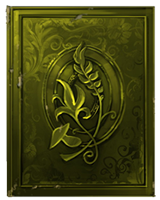
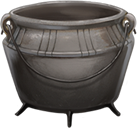
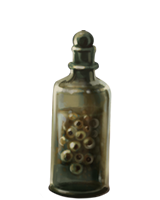
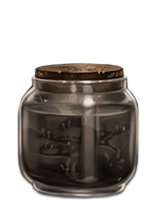
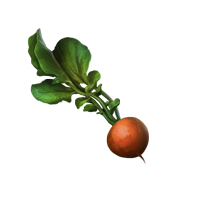
Learning Recipes
Half of all recipes are taught in the normal Hogwarts curriculum. Every school year, the new Potions textbook comes with five potion recipes. If a student wishes to learn more recipes, they must study the Hogwarts library in their spare time, seek out more skilled potioneers to educate them, and embark on adventures to show their worthiness of ancient knowledge.
Alternatively, if a brewed potion is obtained, an aspirant potioneer might attempt to dismantle it. A potion laboratory, a potioneer's kit, casting specialis revelio, and a Wisdom (Potion-Making) ability check are required. This method destroys the potion, but if the check succeeds, the potioneer learns the potion's recipe.
Obtaining Ingredients
Many magical and mundane essences that can be utilized as potion components can be found in a dim clearing of the Forbidden Forest, the private supplies of a trusted ally, or the dusty shelves of an apothecary. Potion components are particularly expensive due to the mystical uses of these potions and the danger in collecting.
Harvesting various types of ingredients will necessitate the use of various instruments. Plant-based materials, in general, will necessitate the use of herbologist's instruments, whilst elements derived from animals and magical monsters will necessitate the use of the potioneer's kit. The quality of the acquired component will be determined by your competence with these instruments. Harvesting in a haphazard manner yields poor results, whereas competent labor yields superior results.
Potion Effectiveness
The potency of a potion is determined by the brewer's technical expertise and the preparation of the components. Competence in Wisdom (Potion-Making) and proficiency with the potioneer's equipment are not required, although they will boost the potency of your potions. Skill may frequently assist a brewer in overcoming the constraints of poor components, but genuinely exceptional potions need superior ingredients.
Potion-Making + Potioneer's Kit Proficiencies and Potion Quality
| Proficiency | Poor Ingredients | Normal Ingredients | Superior Ingredients |
|---|---|---|---|
| None | Flawed | Flawed | Normal |
| One | Flawed | Normal | Normal |
| Both | Normal | Normal | Exceptional |
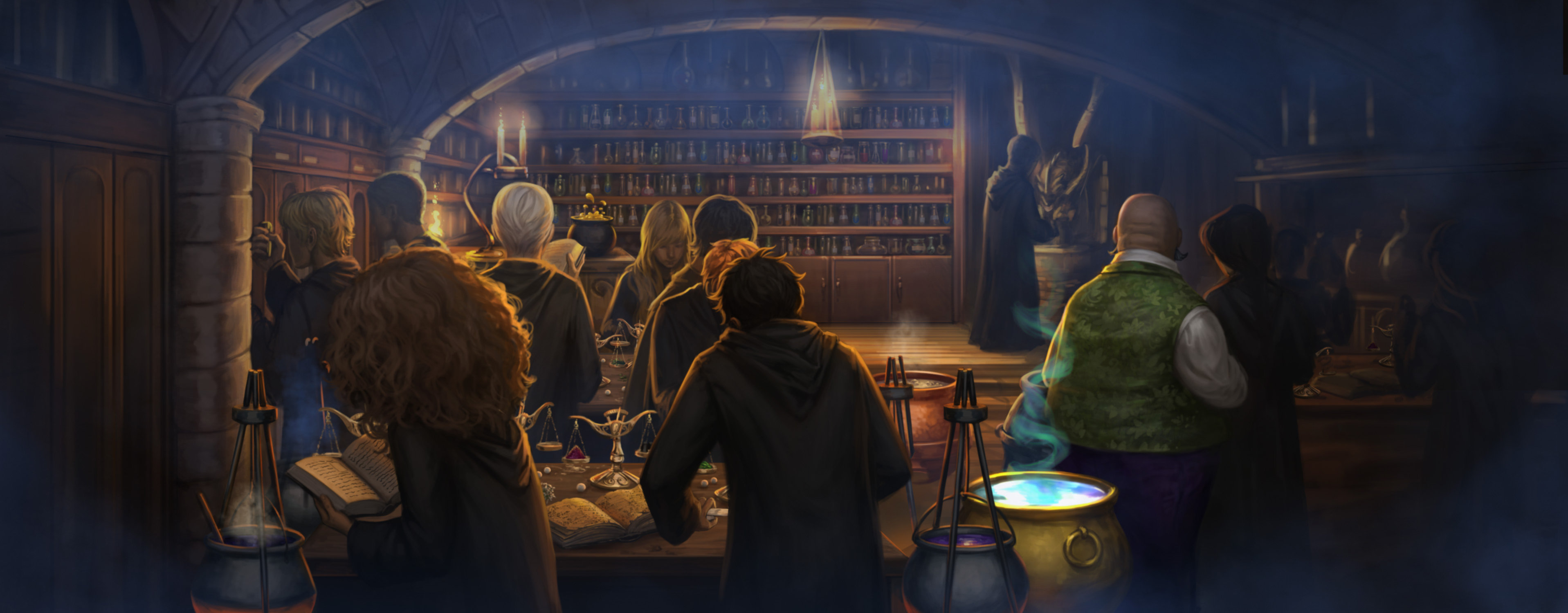



Recipe List
These are the recipes included in each Hogwarts year's Potions class curriculum. Upon starting the school year or purchasing that year's Potions textbook, a character gains access to these recipes.
First Year Potions
- Antidote of Common Poisons
- Blemish Blitzer
- Confusing Concoction
- Forgetfulness Potion
- Herbicide Potion
Second Year Potions
- Doxycide
- Dreamless Sleep Potion
- Elixir to Induce Euphoria
- Sleeping Draught
- Swelling Solution
Third Year Potions
- Antidote of Uncommon Poisons
- Baneberry Poison
- Girding Potion
- Shrinking Solution
- Wiggenweld Potion
Fourth Year Potions
- Aging Potion
- Fire Protection Potion
- Garrotting Gas
- Pepperup Potion
- Wound-Cleaning Potion
Fifth Year Potions
- Befuddlement Draught
- Draught of Peace
- Murtlap Essence
- Noxious Potion
- Strengthening Solution
Sixth Year Potions
- Draught of Living Death
- Erumpent Potion
- Memory Potion
- Polyjuice Potion
- Skele-Gro
Seventh Year Potions
- Essence of Insanity
- Invisibility Potion
- Mandrake Restorative Draught
- Weedosoros
- Wit-Sharpening Potion
Potion Recipes
First Year Potions
Antidote of Common Poisons
- 1 bundle of galanthus nivalis
- 1 cluster of mistletoe berries
- 1 flask of honeywater
- 1 vial of billywig stings
Blemish Blitzer
- 1 bundle of nettles
- 1 flask of bubotuber pus
- 1 flask of flobberworm mucus
- 1 porcupine quill
Confusing Concoction
- 1 bundle of gurdyroots
- 2 bundles of lovage
- 1 flask of ethanol
Forgetfulness Potion
- 1 bundle of lovage
- 1 cluster of mistletoe berries
- 2 flasks of Lethe River water
Herbicide Potion
- 1 Flask of flobberworm mucus
- 1 powdered lionfish spine
- 1 powdered streeler shell
- 1 vial of doxy eggs
Second Year Potions
Doxycide
- 1 bundle of cowbane
- 1 bundle of hemlock
- 1 flask of bundimun secretion
- 1 powdered streeler shell
Dreamless Sleep Potion
- 1 bundle of poppy heads
- 1 cluster of baneberries
- 1 frog brain
- 1 powdered octopus
Elixir to Induce Euphoria
- 1 bundle of peppermint
- 1 bundle of shrivelfigs
- 1 flask of wormwood infusion
- 1 porcupine quill
Sleeping Draught
- 1 bundle of angel's trumpet
- 1 bundle of scurvy grass
- 1 flask of flobberworm mucus
Swelling Solution
- 1 bat spleen
- 1 bundle of nettles
- 1 flask of pufferfish eyes
- 1 vial of exploding ginger eyelashes
Third Year Potions
Antidote of Uncommon Poisons
- 1 flask of fire seeds
- 1 vial of billywig stings
- 1 vial of chizpurfle carapaces
Baneberry Poison
- 1 bundle of cowbane
- 1 bundle of shrivelfigs
- 2 clusters of baneberries
Girding Potion
- 1 set of fairy wings
- 1 powdered flying seahorse
- 1 vial of doxy eggs
Shrinking Solution
- 1 bundle of cowbane
- 1 bundle of shrivelfigs
- 1 flask of wormwood infusion
- 1 vial of woodlice extract
Wiggenweld Potion
- 1 bundle of wiggentree bark
- 1 flask of honeywater
- 1 powdered root of asphodel
Fourth Year Potions
Aging Potion
- 1 bursting mushroom
- 1 newt spleen
- 1 vial of chizpurfle carapaces
Fire Protection Potion
- 1 bursting mushroom
- 1 powdered wartcap
- 1 vial of salamander blood
Garrotting Gas
- 1 flask of bundimun secretion
- 1 flask of ethanol
- 1 powdered wartcap
- 1 vial of exploding ginger eyelashes
Pepperup Potion
- 1 cluster of boom berries
- 1 flask of ethanol
- 1 flask of vervain infusion
- 1 powdered octopus
Wound-Cleaning Potion
- 1 bundle of star grass
- 1 flask of vervain infusion
- 1 staghorn mushroom
- 1 vial of spirit of myrrh
Fifth Year Potions
Befuddlement Draught
- 1 bundle of lovage
- 1 bundle of scurvy grass
- 1 bundle of sneezewort
Draught of Peace
- 1 porcupine quill
- 1 powdered moonstone
- 1 vial of syrup of hellebore
Murtlap Essence
- 2 murtlap tentacles
- 1 vial of spirit of myrrh
Noxious Potion
- 1 bundle of angel's trumpet
- 1 cluster of moonseed berries
- 1 vial of syrup of hellebore
Strengthening Solution
- 1 flask of re'em blood
- 1 vial of fanged geranium fangs
- 1 vial of salamander blood
Sixth Year Potions
Draught of Living Death
- 2 bundles of valerian roots
- 1 powdered root of asphodel
- 1 sloth brain
- 2 sopophorous beans
- 1 vial of African sea salt
Erumpent Potion
- 1 bundle of venomous tentacula leaves
- 1 flask of fire seeds
- 2 powdered erumpent horns
- 1 vial of exploding ginger eyelashes
Memory Potion
- 1 bundle of galanthus nivalis
- 1 bundle of sneezewort
- 1 jobberknoll feather
Polyjuice Potion
- 1 boomslang skin
- 1 bundle of full-moon fluxweed
- 2 bundles of knotgrass
- 1 flask of lacewing flies
- 1 powdered bicorn horn
- 1 sopophorous bean
Skele-Gro
- 1 chinese chomping cabbage
- 1 flask of pufferfish eyes
- 1 murtlap tentacle
- 1 powdered griffin claw
- 1 powdered scarab beetle
Seventh Year Potions
Essence of Insanity
- 1 bundle of weed-of-sorrows
- 1 clutch of runespoor eggs
- 1 giant purple toad wart
- 1 vial of belladonna essence
- 1 vial of syrup of arnica
Invisibility Potion
- 2 boomslang skins
- 1 unicorn hair
- 1 vial of African sea salt
- 1 vial of doxy eggs
Mandrake Restorative Draught
- 3 mandrake roots
- 1 vial of chizpurfle carapaces
- 1 vial of spirit of myrrh
Weedosoros
- 1 bundle of hemlock
- 1 bundle of valerian roots
- 1 bundle of weed-of-sorrows
- 1 vial of belladonna essence
- 1 vial of syrup of arnica
Wit-Sharpening Potion
- 1 clutch of runespoor eggs
- 1 newt spleen
- 1 powdered dragon claw
- 1 powdered scarab beetle
- 1 sloth brain
Appendix B: Patronus Rolling Tables
Your character's corporeal patronus can be determined several different ways. First, you can simply choose your patronus. Its form makes no significant mechanical impact on the expecto patronum spell. The second method is getting a random result by rolling on the d100 table below.
The last method provides customized rolling tables with options based on your character's personality. Find your character's Background on the subsequent pages. Then, locate your House under that Background and use that rolling table to determine your corporeal patronus. If your character is not a Hogwarts student, choose a house based on your character's personality and values.
| d100 | Corporeal Patronus |
|---|---|
| 1 | Aardvark |
| 2 | Adder |
| 3 | Badger |
| 4 | Bat |
| 5 | Beagle |
| 6 | Black and White Cat |
| 7 | Black Bear |
| 8 | Black Mamba |
| 9 | Black Mare/Stallion |
| 10 | Bloodhound |
| 11 | Borzoi |
| 12 | Brown Bear |
| 13 | Brown Owl |
| 14 | Buffalo |
| 15 | Calico Cat |
| 16 | Capuchin Monkey |
| 17 | Cheetah |
| 18 | Chestnut Mare/Stallion |
| 19 | Chow Dog |
| 20 | Dapple Grey Mare/Stallion |
| 21 | Doe |
| 22 | Dolphin |
| 23 | Dragonfly |
| 24 | Eagle |
| 25 | Eagle Owl |
| 26 | Elephant |
| 27 | Falcon |
| 28 | Field Mouse |
| 29 | Fox |
| 30 | Ginger Cat |
| 31 | Goshawk |
| 32 | Grass Snake |
| 33 | Greyhound |
| 34 | Hedgehog |
| 35 | Heron |
| 36 | Hummingbird |
| 37 | Husky |
| 38 | Hyena |
| 39 | Impala |
| 40 | Irish Wolfhound |
| 41 | King Cobra |
| 42 | Kingfisher |
| 43 | Leopard |
| 44 | Lion |
| 45 | Lynx |
| 46 | Magpie |
| 47 | Manx Cat |
| 48 | Marsh Harrier |
| 49 | Mastiff |
| 50 | Mole |
| 51 | Mountain Hare |
| 52 | Ocicat |
| 53 | Orangutan |
| 54 | Orca |
| 55 | Oryx |
| 56 | Osprey |
| 57 | Otter |
| 58 | Peacock |
| 59 | Pine Marten |
| 60 | Polar Bear |
| 61 | Polecat |
| 62 | Python |
| 63 | Ragdoll Cat |
| 64 | Rat |
| 65 | Rattlesnake |
| 66 | Raven |
| 67 | Rhinoceros |
| 68 | Robin |
| 69 | Rottweiler |
| 70 | Salmon |
| 71 | Scops Owl |
| 72 | Seal |
| 73 | Shark |
| 74 | Siberian Cat |
| 75 | Snowy Owl |
| 76 | Sphynx Cat |
| 77 | Squirrel |
| 78 | St. Bernard |
| 79 | Stag |
| 80 | Swallow |
| 81 | Swan |
| 82 | Tiger |
| 83 | Tortoiseshell Cat |
| 84 | Vole |
| 85 | Vulture |
| 86 | West Highland Terrier |
| 87 | Wild Boar |
| 88 | Wild Rabbit |
| 89 | Wildcat |
| 90 | Wolf |
| 91 | Abraxan Winged Horse |
| 92 | Dragon |
| 93 | Erumpent |
| 94 | Fire-Dwelling Salamander |
| 95 | Granian Winged Horse |
| 96 | Hippogriff |
| 97 | Occamy |
| 98 | Runespoor |
| 99 | Thestral |
| 00 | Unicorn |
Artist
Gryffindor
| d10 | Corporeal Patronus |
|---|---|
| 1-2 | Cheetah |
| 3-4 | Fox |
| 5-7 | Heron |
| 8-9 | Robin |
| 0 | Hippogriff |
Hufflepuff
| d10 | Corporeal Patronus |
|---|---|
| 1-2 | Bay Mare/Stallion |
| 3-5 | Borzoi |
| 6-7 | Wood Mouse |
| 8-9 | Swallow |
| 0 | Granian Winged Horse |
Ravenclaw
| d10 | Corporeal Patronus |
|---|---|
| 1-3 | Dolphin |
| 4-5 | Hummingbird |
| 6-7 | Little Owl |
| 8-9 | Siberian Cat |
| 0 | Fire-dwelling Salamander |
Slytherin
| d10 | Corporeal Patronus |
|---|---|
| 1-2 | Adder |
| 3-5 | Blackbird |
| 6-7 | Greyhound |
| 8-9 | Oryx |
| 0 | Abraxan Winged Horse |
Bookworm
Gryffindor
| d10 | Corporeal Patronus |
|---|---|
| 1-3 | Black and White Cat |
| 4-5 | Black Bear |
| 6-7 | Otter |
| 8-9 | Swift |
| 0 | Fire-dwelling Salamander |
Hufflepuff
| d10 | Corporeal Patronus |
|---|---|
| 1-2 | Deerhound |
| 3-4 | Orangutan |
| 5-7 | Red Squirrel |
| 8-9 | Tonkinese Cat |
| 0 | Fire-dwelling Salamander |
Ravenclaw
| d10 | Corporeal Patronus |
|---|---|
| 1-2 | Dolphin |
| 3-4 | Eagle |
| 5-7 | Field Mouse |
| 8-9 | Orangutan |
| 0 | Runespoor |
Slytherin
| d10 | Corporeal Patronus |
|---|---|
| 1-2 | Calico Cat |
| 3-5 | Crow |
| 6-7 | Hyena |
| 8-9 | Python |
| 0 | Runespoor |
Dreamer
Gryffindor
| d10 | Corporeal Patronus |
|---|---|
| 1-3 | Dapple Grey Mare/Stallion |
| 4-5 | Manx Cat |
| 6-7 | Otter |
| 8-9 | White Swan |
| 0 | Thestral |
Hufflepuff
| d10 | Corporeal Patronus |
|---|---|
| 1-3 | Doe |
| 4-5 | Elephant |
| 6-7 | Vole |
| 8-9 | Wild Rabbit |
| 0 | Occamy |
Ravenclaw
| d10 | Corporeal Patronus |
|---|---|
| 1-2 | Mountain Hare |
| 3-4 | Raven |
| 5-6 | Red Squirrel |
| 7-9 | White Swan |
| 0 | Unicorn |
Slytherin
| d10 | Corporeal Patronus |
|---|---|
| 1-2 | Bat |
| 3-4 | Black Swan |
| 5-7 | Grass Snake |
| 8-9 | Python |
| 0 | Thestral |
Groundskeeper
Gryffindor
| d10 | Corporeal Patronus |
|---|---|
| 1-3 | Brown Bear |
| 4-5 | Kingfisher |
| 6-7 | Lion |
| 8-9 | St. Bernard |
| 0 | Erumpent |
Hufflepuff
| d10 | Corporeal Patronus |
|---|---|
| 1-2 | Bassett Hound |
| 3-5 | Hedgehog |
| 6-7 | Sparrow |
| 8-9 | Stag |
| 0 | Hippogriff |
Ravenclaw
| d10 | Corporeal Patronus |
|---|---|
| 1-2 | Black Bear |
| 3-4 | Bloodhound |
| 5-7 | Marsh Harrier |
| 8-9 | Sparrow |
| 0 | Occamy |
Slytherin
| d10 | Corporeal Patronus |
|---|---|
| 1-2 | Orca |
| 3-4 | Rattlesnake |
| 5-6 | Shrew |
| 7-9 | Wildcat |
| 0 | Thestral |
Klutz
Gryffindor
| d10 | Corporeal Patronus |
|---|---|
| 1-3 | Irish Wolfhound |
| 4-5 | Pheasant |
| 6-7 | Salmon |
| 8-9 | Sparrowhawk |
| 0 | Erumpent |
Hufflepuff
| d10 | Corporeal Patronus |
|---|---|
| 1-2 | Aardvark |
| 3-5 | Buffalo |
| 6-7 | Polar Bear |
| 8-9 | Weasel |
| 0 | Erumpent |
Ravenclaw
| d10 | Corporeal Patronus |
|---|---|
| 1-2 | Capuchin Monkey |
| 3-4 | Mole |
| 5-6 | Polecat |
| 7-9 | Scops Owl |
| 0 | Thestral |
Slytherin
| d10 | Corporeal Patronus |
|---|---|
| 1-2 | Leopard |
| 3-4 | Magpie |
| 5-6 | Mongrel Dog |
| 7-9 | Stoat |
| 0 | Fire-dwelling Salamander |
Potioneer
Gryffindor
| d10 | Corporeal Patronus |
|---|---|
| 1-3 | Brown Owl |
| 4-5 | Grass Snake |
| 6-7 | Piebald Mare/Stallion |
| 8-9 | Tiger |
| 0 | Abraxan Winged Horse |
Hufflepuff
| d10 | Corporeal Patronus |
|---|---|
| 1-3 | Chow Dog |
| 4-5 | Dragonfly |
| 6-7 | Ginger Cat |
| 8-9 | Snowy Owl |
| 0 | Occamy |
Ravenclaw
| d10 | Corporeal Patronus |
|---|---|
| 1-2 | Crow |
| 3-5 | Eagle Owl |
| 6-7 | Husky |
| 8-9 | Russian Blue Cat |
| 0 | Hippogriff |
Slytherin
| d10 | Corporeal Patronus |
|---|---|
| 1-3 | Adder |
| 4-5 | Black Mare/Stallion |
| 6-7 | King Cobra |
| 8-9 | Nightjar |
| 0 | Hippogriff |
Protector
Gryffindor
| d10 | Corporeal Patronus |
|---|---|
| 1-2 | Great Grey Owl |
| 3-4 | Newfoundland |
| 5-7 | Stag |
| 8-9 | Swallow |
| 0 | Unicorn |
Hufflepuff
| d10 | Corporeal Patronus |
|---|---|
| 1-3 | Badger |
| 4-5 | Dun Mare/Stallion |
| 6-7 | Mastiff |
| 8-9 | Sphynx Cat |
| 0 | Erumpent |
Ravenclaw
| d10 | Corporeal Patronus |
|---|---|
| 1-2 | Brown Bear |
| 3-4 | King Cobra |
| 5-6 | Lynx |
| 7-9 | Husky |
| 0 | Unicorn |
Slytherin
| d10 | Corporeal Patronus |
|---|---|
| 1-2 | Goshawk |
| 3-5 | Rhinoceros |
| 6-7 | Tiger |
| 8-9 | Tortoiseshell Cat |
| 0 | Dragon |
Quidditch Fan
Gryffindor
| d10 | Corporeal Patronus |
|---|---|
| 1-2 | Fox Terrier |
| 3-5 | Lion |
| 6-7 | Rhinoceros |
| 8-9 | Rottweiler |
| 0 | Dragon |
Hufflepuff
| d10 | Corporeal Patronus |
|---|---|
| 1-2 | Beagle |
| 3-4 | Ocicat |
| 5-6 | Osprey |
| 7-9 | Wild Boar |
| 0 | Dragon |
Ravenclaw
| d10 | Corporeal Patronus |
|---|---|
| 1-2 | Black and White Cat |
| 3-5 | Falcon |
| 6-7 | Leopard |
| 8-9 | Robin |
| 0 | Granian Winged Horse |
Slytherin
| d10 | Corporeal Patronus |
|---|---|
| 1-2 | Ocicat |
| 3-4 | Polar Bear |
| 5-7 | Rattlesnake |
| 8-9 | Shark |
| 0 | Runespoor |
Appendix C: Chocolate Frog Cards
Bronze Cards
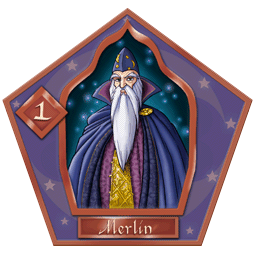
#1 - Merlin
A legendary British wizard who lived during the Middle Ages
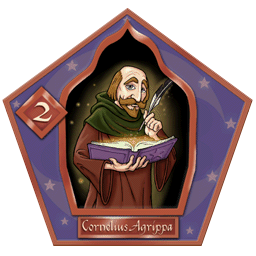
#2 - Cornelius Agrippa
A celebrated German wizard who authored many works on wizards and magic
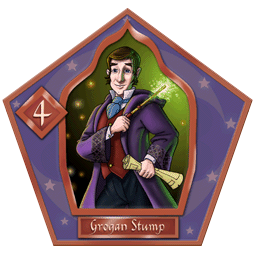
#4 - Grogan Stump
A British wizard who was Minister for Magic from 1811 to 1819 and was very popular in the job
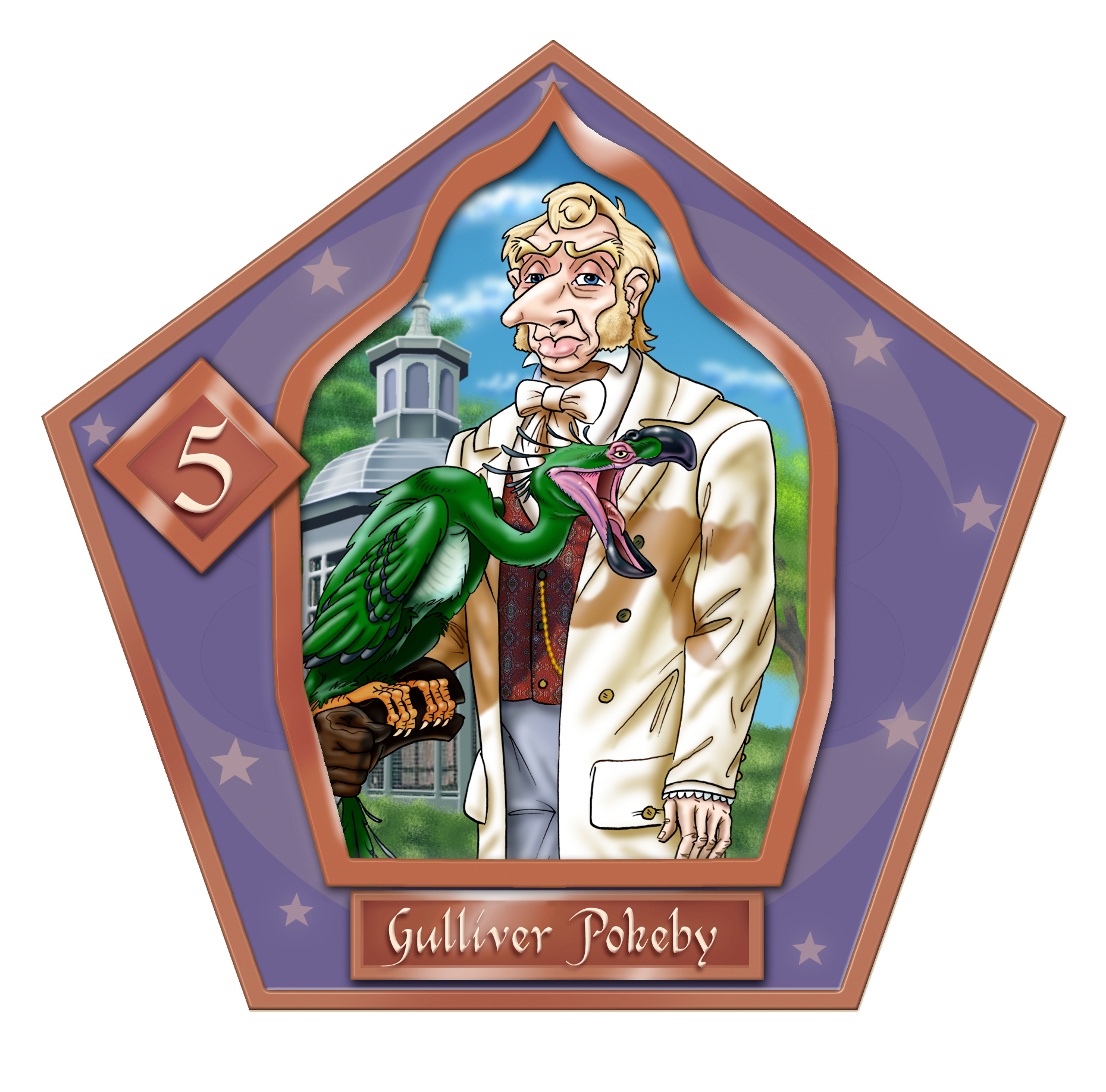
#5 - Gulliver Pokeby
A wizard, magizoologist, expert on magical birds and author of Why I Didn't Die When the Augurey Cried
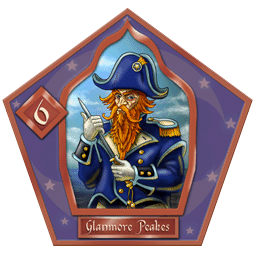
#6 - Glanmore Peakes
A Scottish wizard who was famous for having slain the Sea Serpent of Cromer
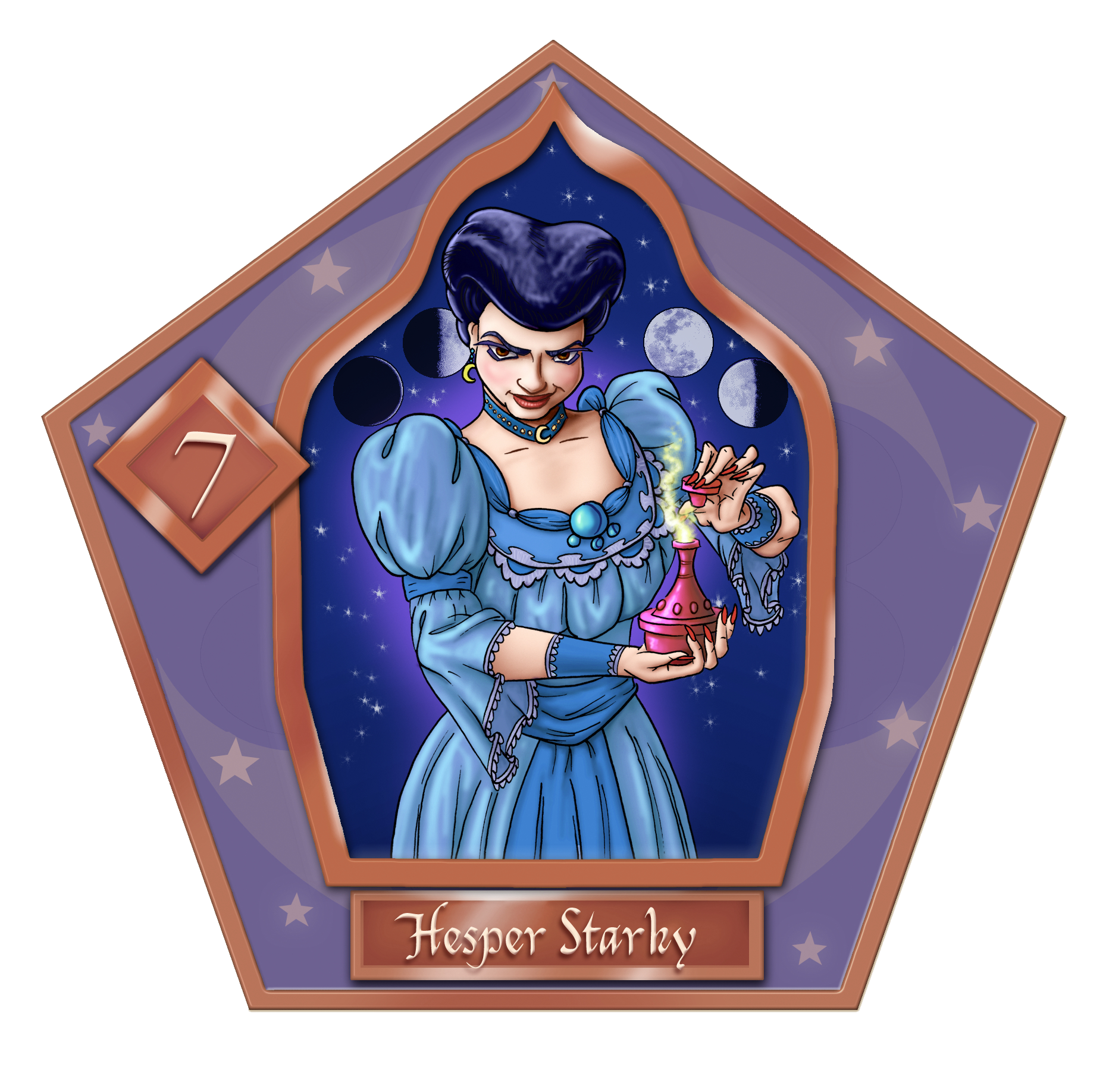
#7 - Hesper Starkey
A witch who studied how the moon's phases affected potion fabrication
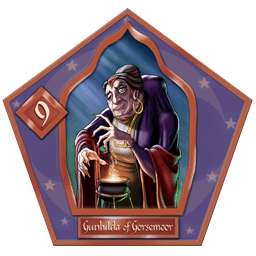
#9 - Gunhilda of Gorsemoor
A one-eyed, hump-backed British witch and healer who discovered a cure for dragon pox
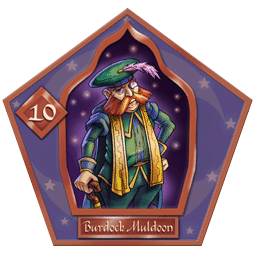
#10 - Burdock Muldoon
A British wizard and the Chief of the Wizards' Council either in the fourteenth or fifteenth century
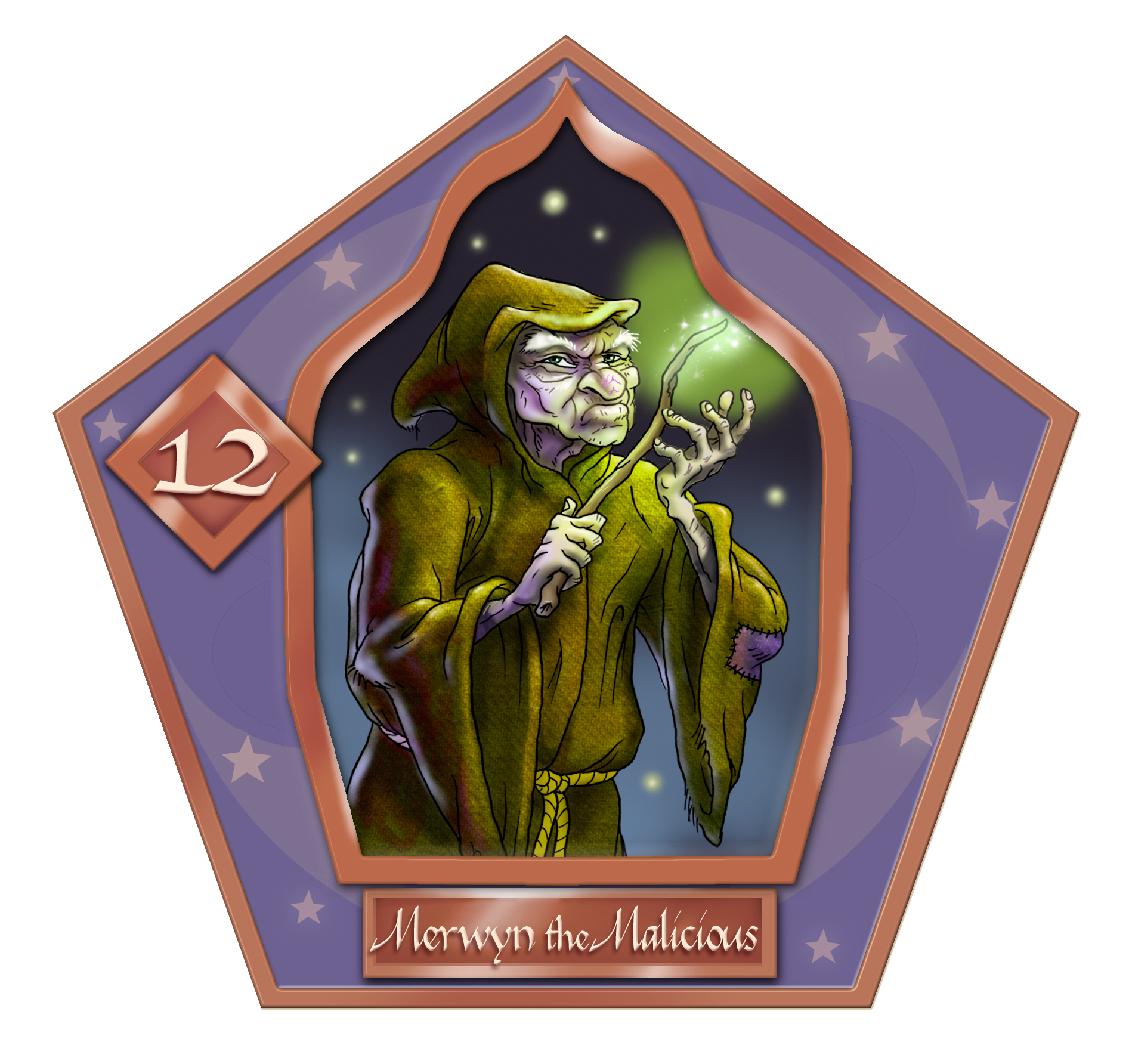
#12 - Merwyn the Malicious
A medieval Dark Wizard credited with the invention of many unpleasant jinxes and hexes
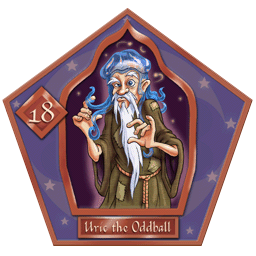
#18 - Uric the Oddball
A medieval wizard who became famous for his eccentric behavior, such as wearing a jellyfish as a hat and sleeping in a room with fifty pet augureys
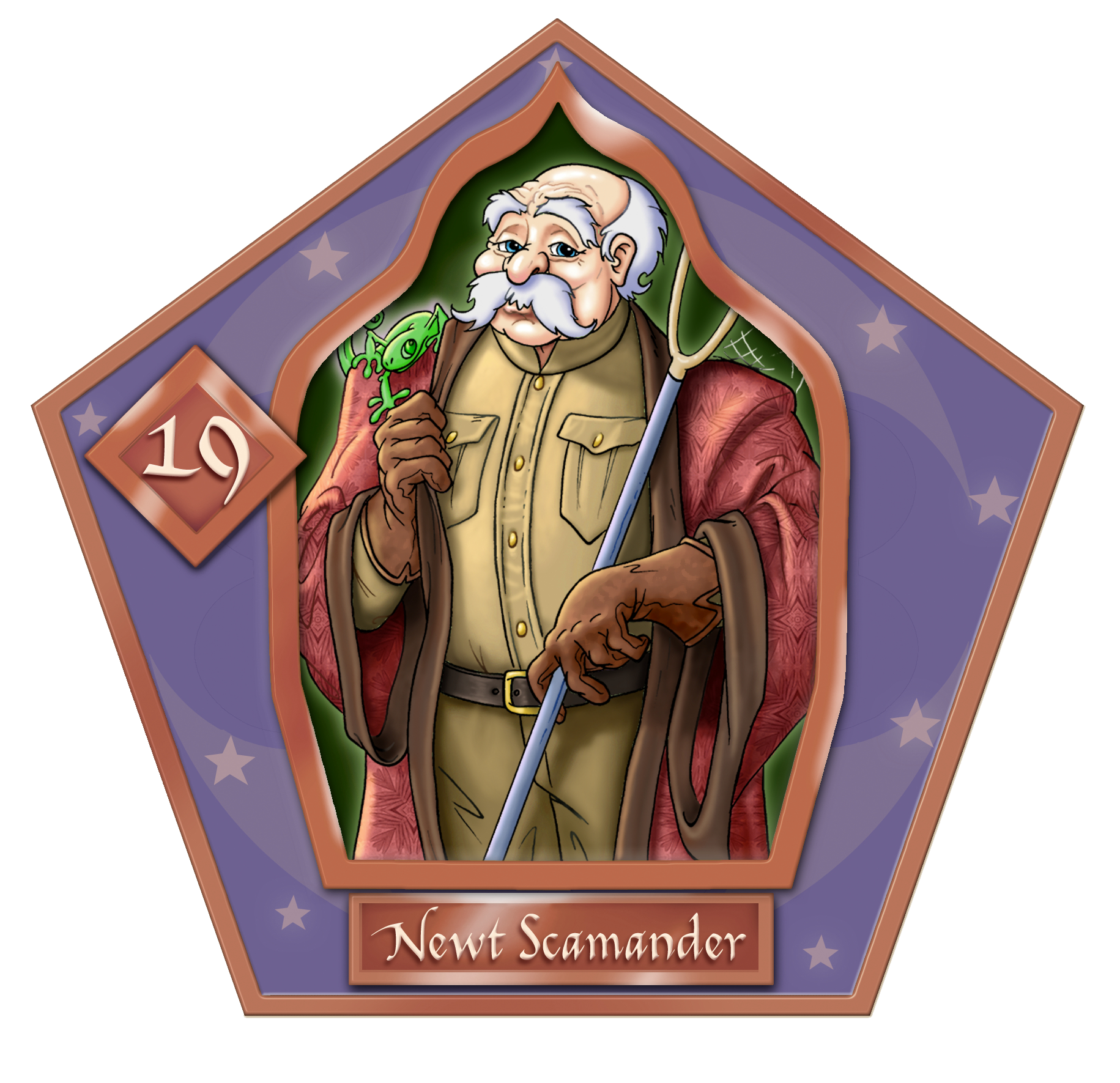
#19 - Newt Scamander
An English wizard, famed magizoologist and the author of Fantastic Beasts and Where to Find Them
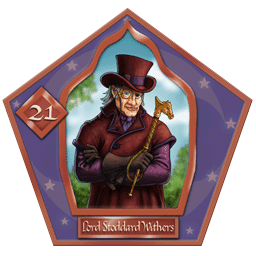
#21 - Lord Stoddard Withers
A wizard and magizoologist who bred winged horses
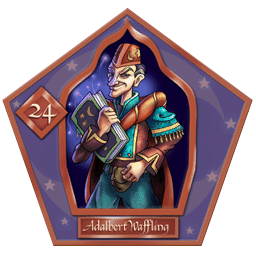
#24 - Adalbert Waffling
A British wizard was a Magical Theoretician, credited to have written "All About Magic", and is considered the "Father of Magic Theory"
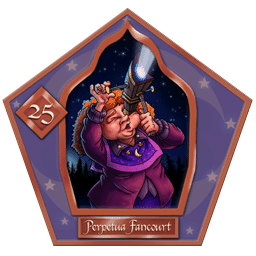
#25 - Perpetua Fancourt
A witch who is credited with the invention of the lunascope, an astronomical device used to analyze the phases of the moon
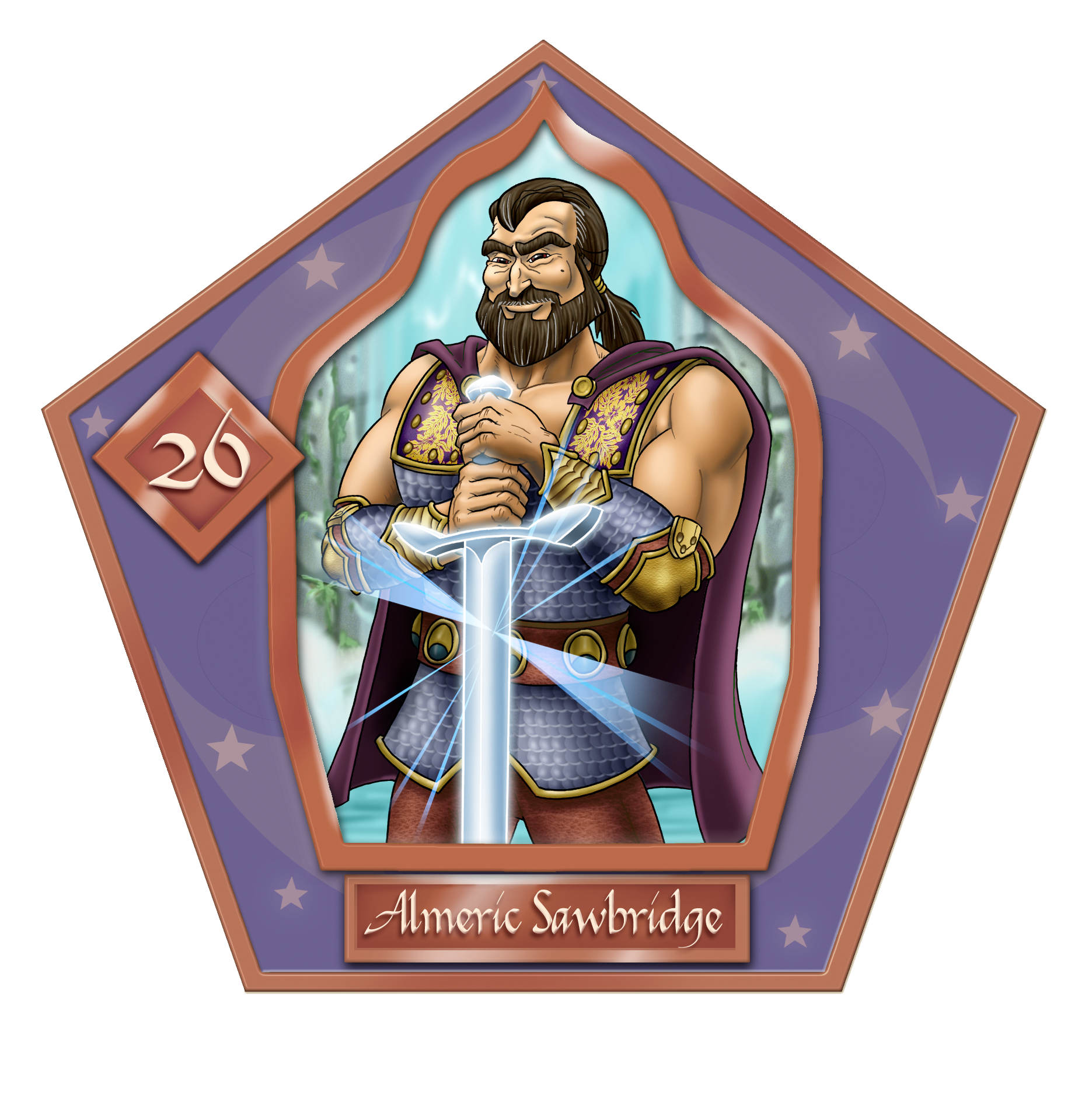
#26 - Almeric Sawbridge
A British wizard and troll hunter who defeated the largest river troll to have ever existed in Britain
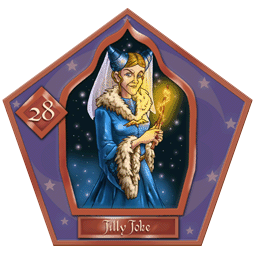
#28 - Tilly Toke
A British witch who saved the lives of several muggles during the Ilfracombe Incident in 1932
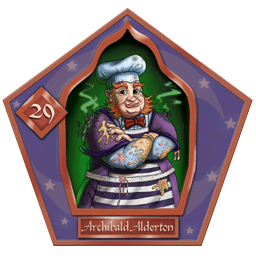
#29 - Archibald Alderton
A wizard who was known for blowing up the hamlet of Little Dropping while attempting to magically mix a birthday cake
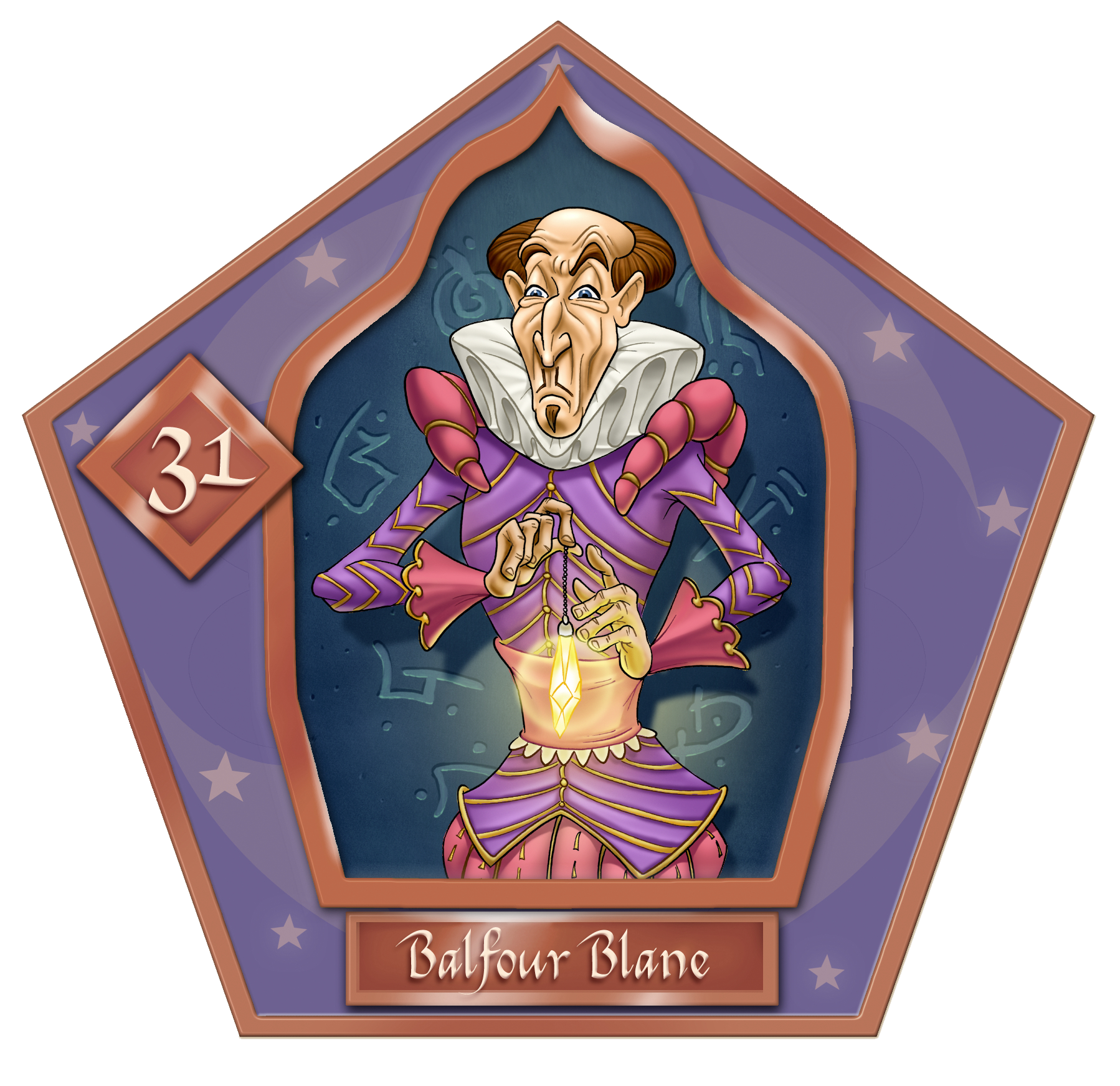
#31 - Balfour Blane
A British wizard who established the Committee on Experimental Charms
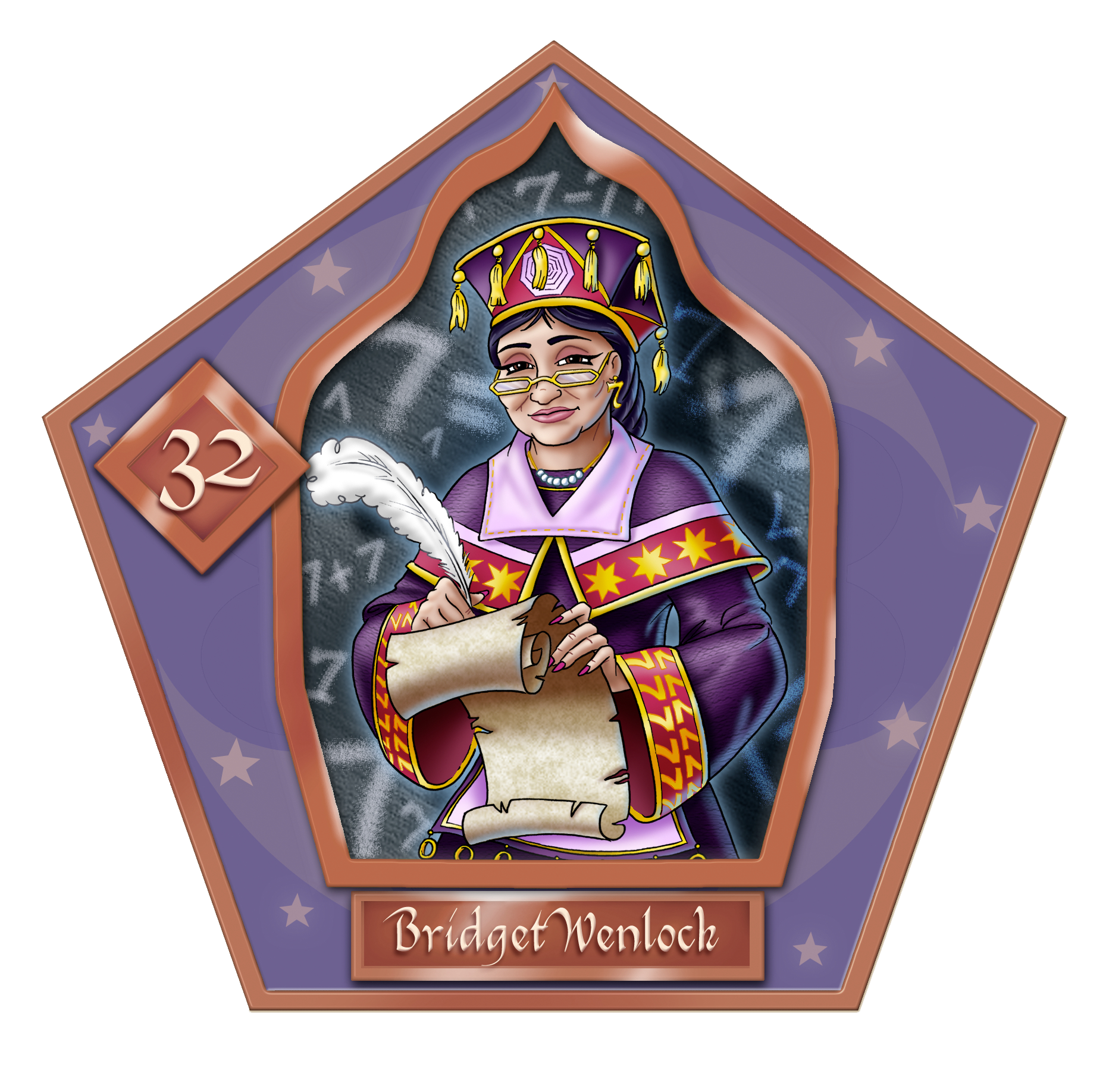
#32 - Bridget Wenlock
A famous thirteenth-century English witch and arithmancer who was the first to establish the magical properties of the number seven
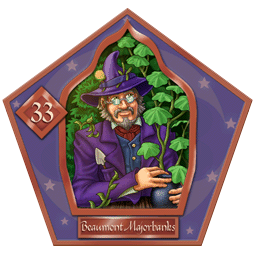
#33 - Beaumont Marjoribanks
A wizard and pioneer in the field of Herbology, having collected and classified many rare magical plants and flowers
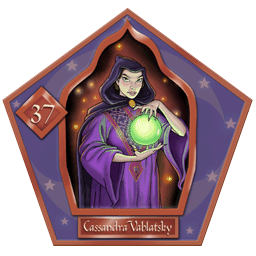
#37 - Cassandra Vablatsky
A witch, celebrated Seer and author of Unfogging the Future, a Divination textbook required at Hogwarts School of Witchcraft and Wizardry
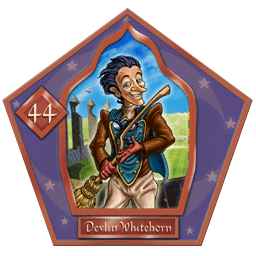
#44 - Devlin Whitehorn
A British wizard who, in 1967, founded the Nimbus Racing Broom Company, considered to be "the top of the field"
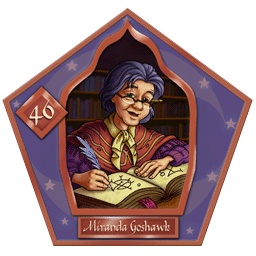
#46 - Miranda Goshawk
A witch and celebrated author who specialized in writing Charms spellbooks, such as The Standard Book of Spells
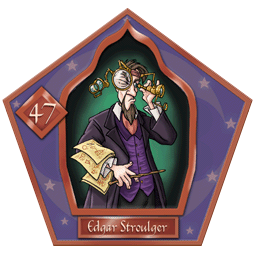
#47 - Edgar Stroulger
A wizard who invented the Sneakoscope, a dark detector that lights up, spins and whistles if someone is doing something untrustworthy nearby
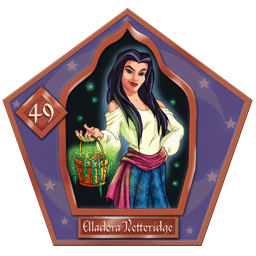
#49 - Elladora Ketteridge
The first witch to discover the magical properties of gillyweed, having done so by accident
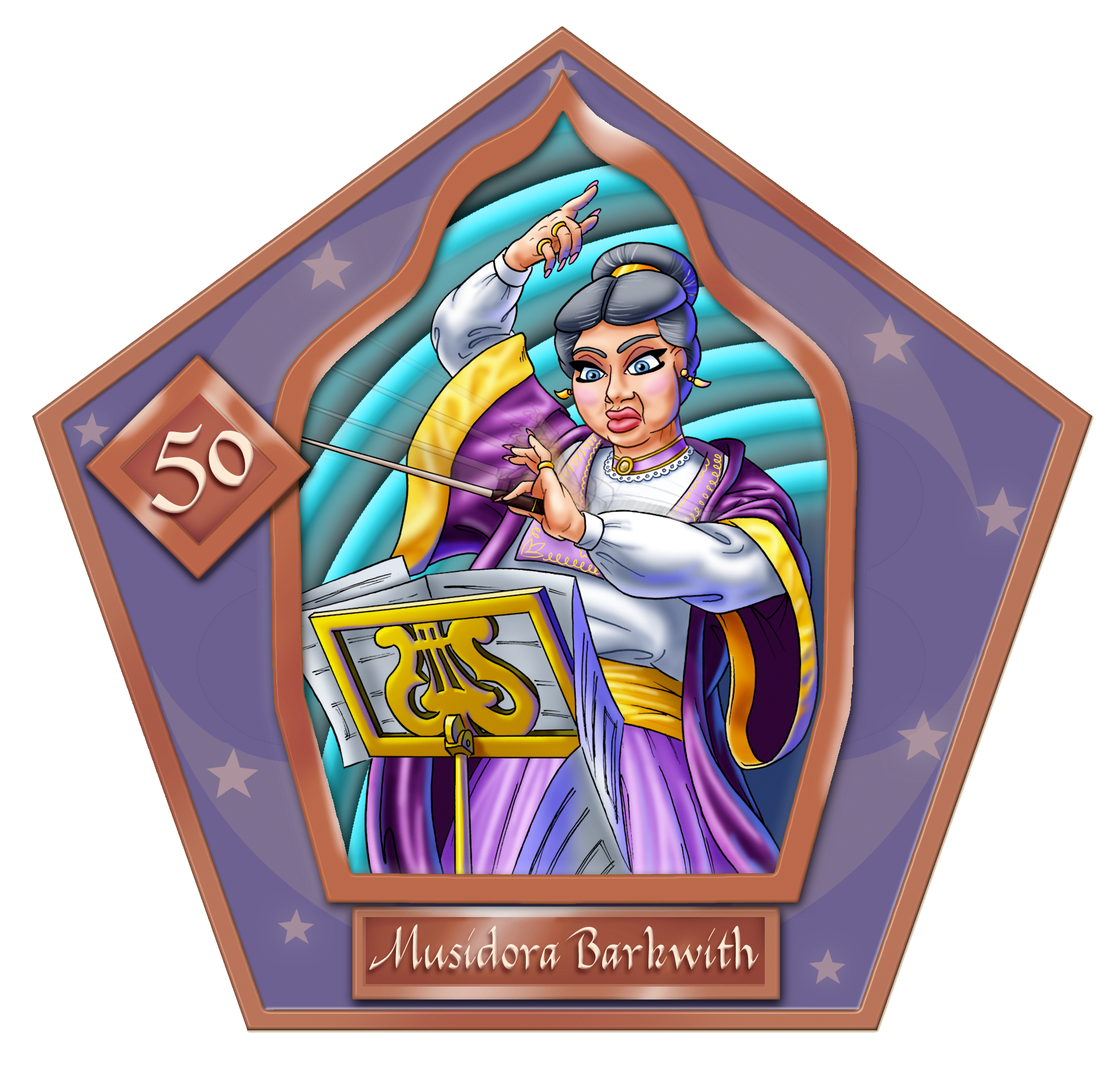
#50 - Musidora Barkwith
A witch and composer. Her unfinished work, the Wizarding Suite, featured an exploding tuba and has been banned ever since a performance in 1902 blew the roof off of the town hall of Ackerley
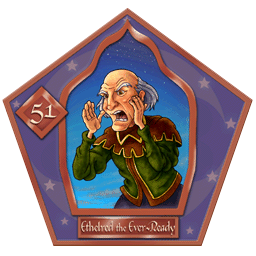
#51 - Ethelred the Ever-Ready
A medieval Dark Wizard, infamous for being offended for no reason and cursing innocent bystanders
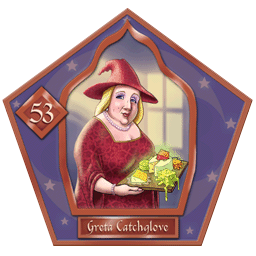
#53 - Greta Catchlove
A witch who wrote the original edition of Charm Your Own Cheese
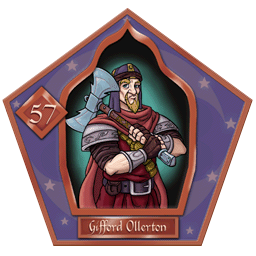
#57 - Gifford Ollerton
A British wizard famous for his reputation as a giant-slayer, having killed the giant Hengist of Upper Barnton who terrorized the small town of Upper Barnton in the fifteenth century
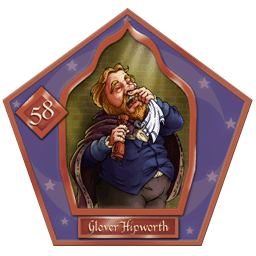
#58 - Glover Hipworth
A wizard who specialized in Potion development and became famous for the invention of the pepperup potion, the cure for the common cold
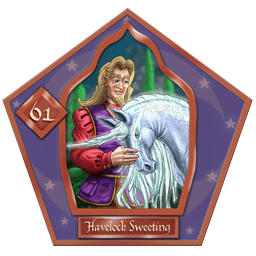
#61 - Havelock Sweeting
A British wizard and magizoologist well-known for being an expert on unicorns
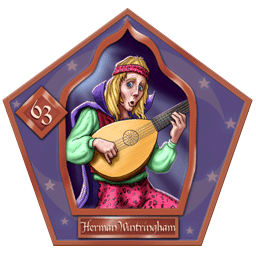
#63 - Herman Wintringham
A wizard and lutenist for the popular band The Weird Sisters
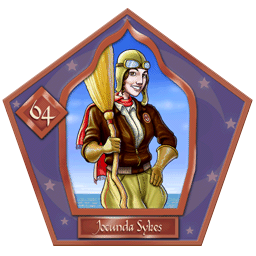
#64 - Jocunda Sykes
A witch who was famous for flying across the Atlantic Ocean
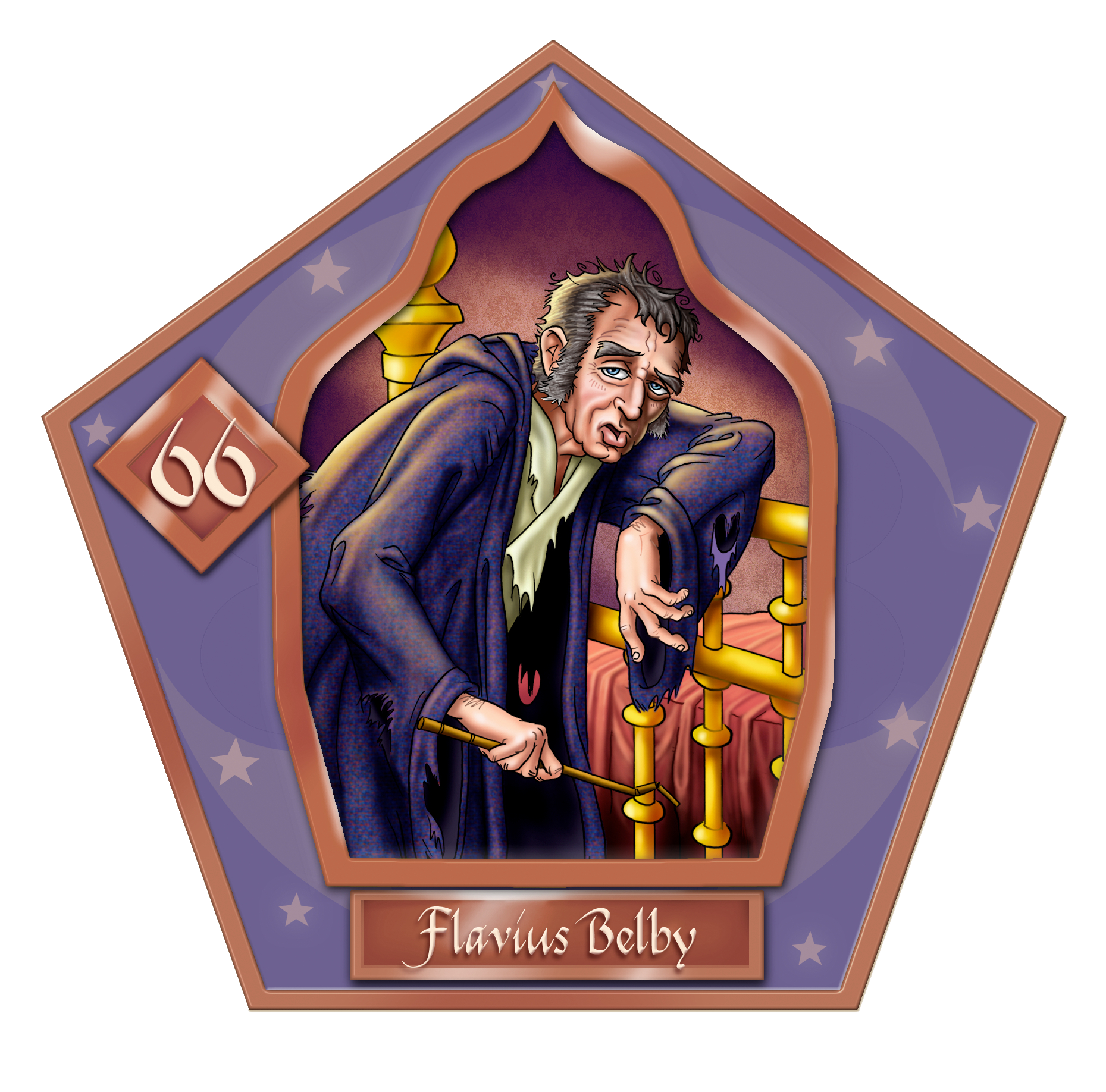
#66 - Flavius Belby
The only known wizard to survive a lethifold attack
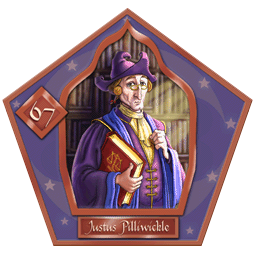
#67 - Justus Pilliwickle
A British wizard and celebrated Head of the Department of Magical Law Enforcement
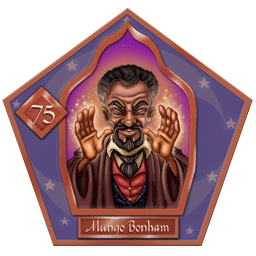
#75 - Mungo Bonham
A wizard and healer who founded St. Mungo's Hospital for Magical Maladies and Injuries in the 1600s
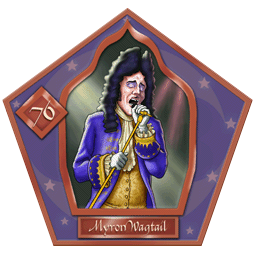
#76 - Myron Wagtail
A wizard and lead singer of the wizarding world's popular band The Weird Sisters
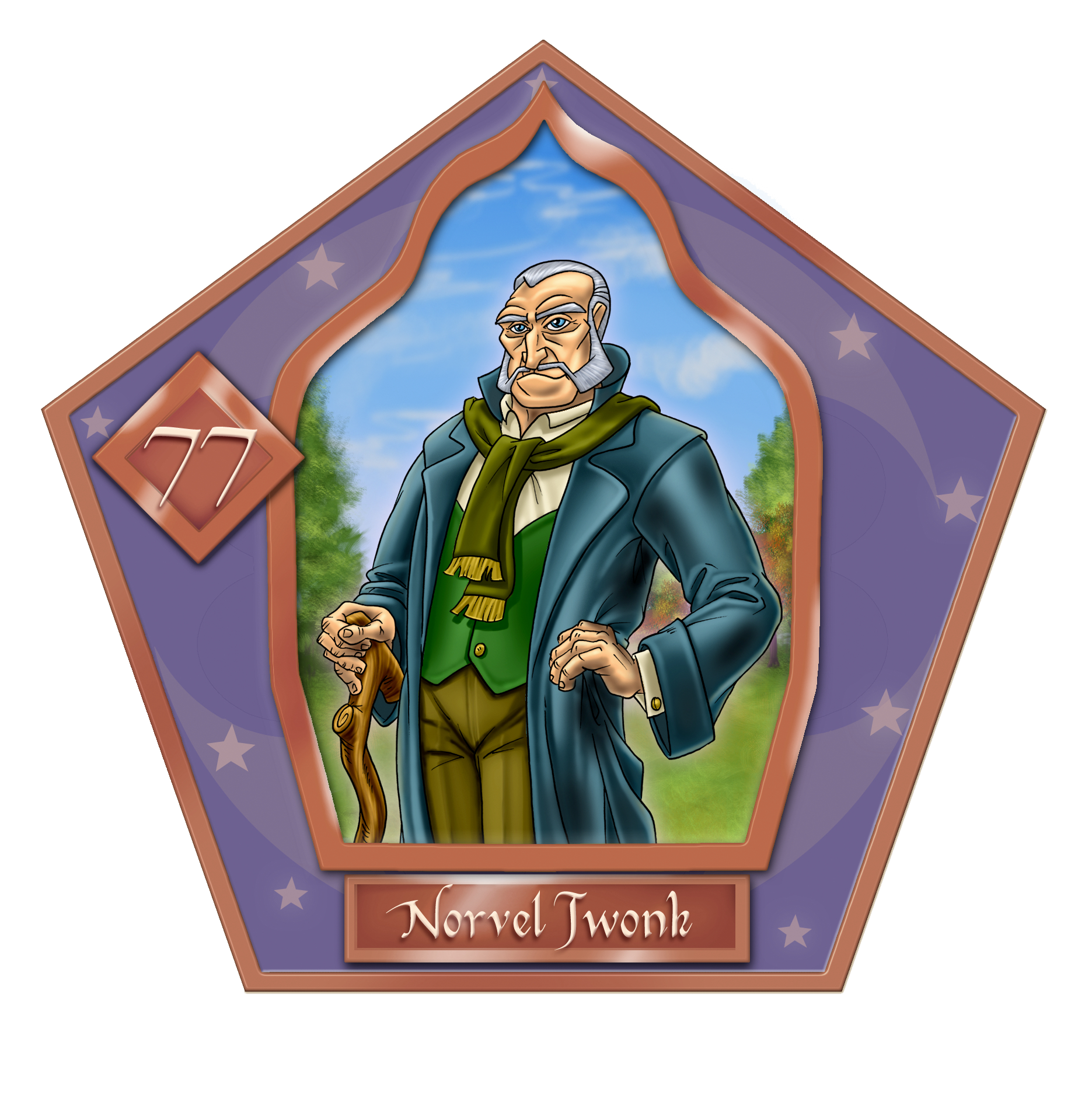
#77 - Norvel Twonk
A wizard who died saving a muggle child from a manticore
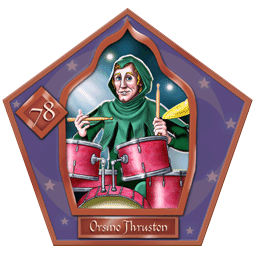
#78 - Orsino Thruston
A wizard and the drummer for the popular band The Weird Sisters
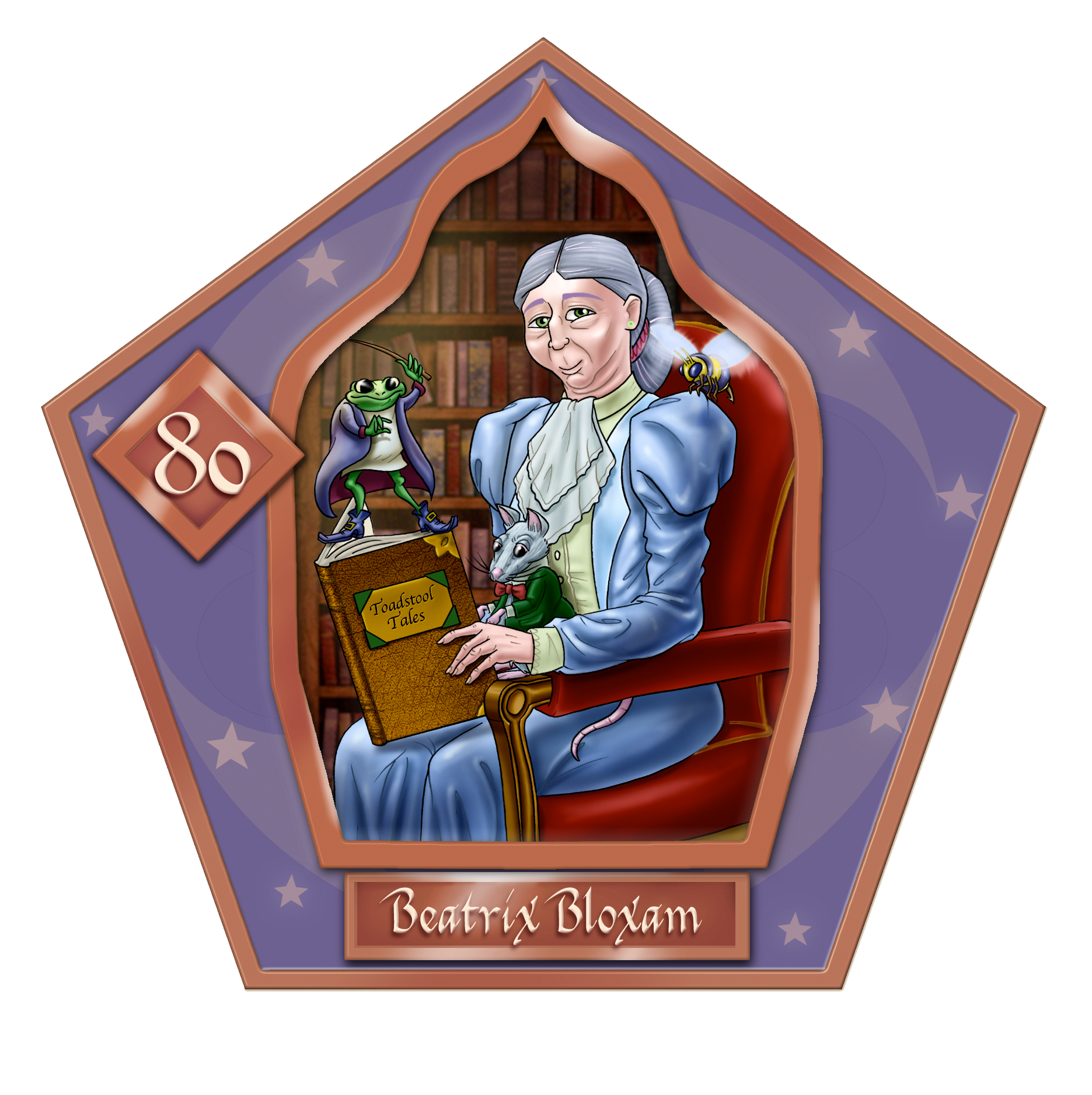
#80 - Beatrix Bloxam
A witch who wrote the infamous Toadstool Tales,a series of children's books featuring bowdlerised adaptations of stories from earlier works, including The Tales of Beedle the Bard
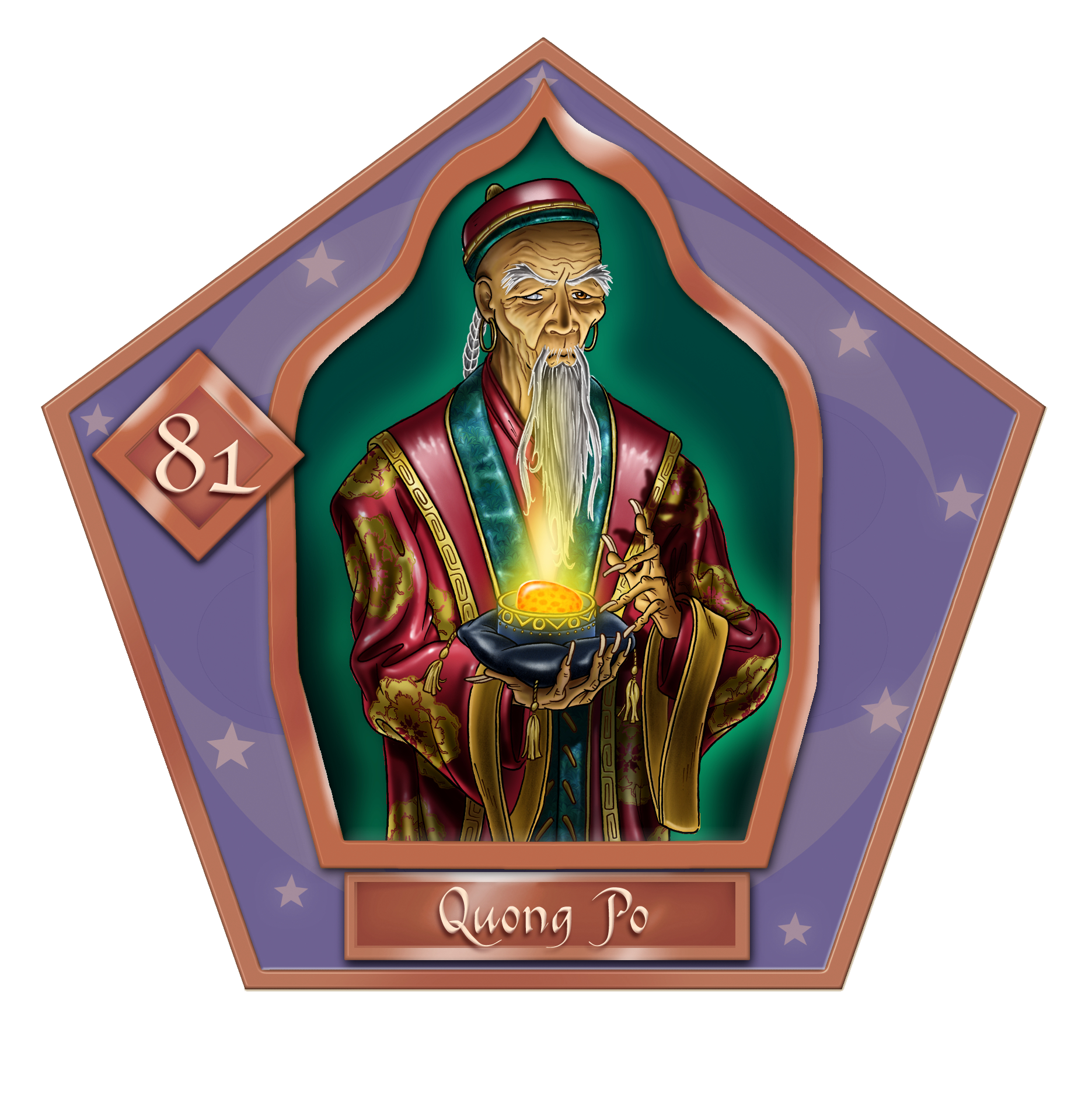
#81 - Quong Po
A Chinese wizard and dragonologist who studied the Chinese Fireball breed and discovered the magical uses of their powdered eggs
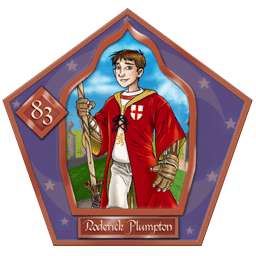
#83 - Roderick Plumpton
An English wizard who was the Seeker for the Tutshill Tornadoes quidditch team during the early 1900s
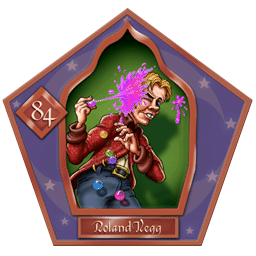
#84 - Roland Kegg
An English wizard who was President of the English Gobstones team
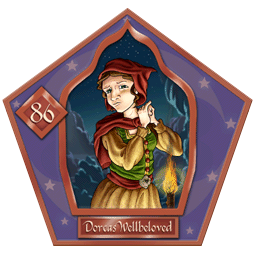
#86 - Dorcas Wellbeloved
A witch famous for founding the Society of Distressed Witches
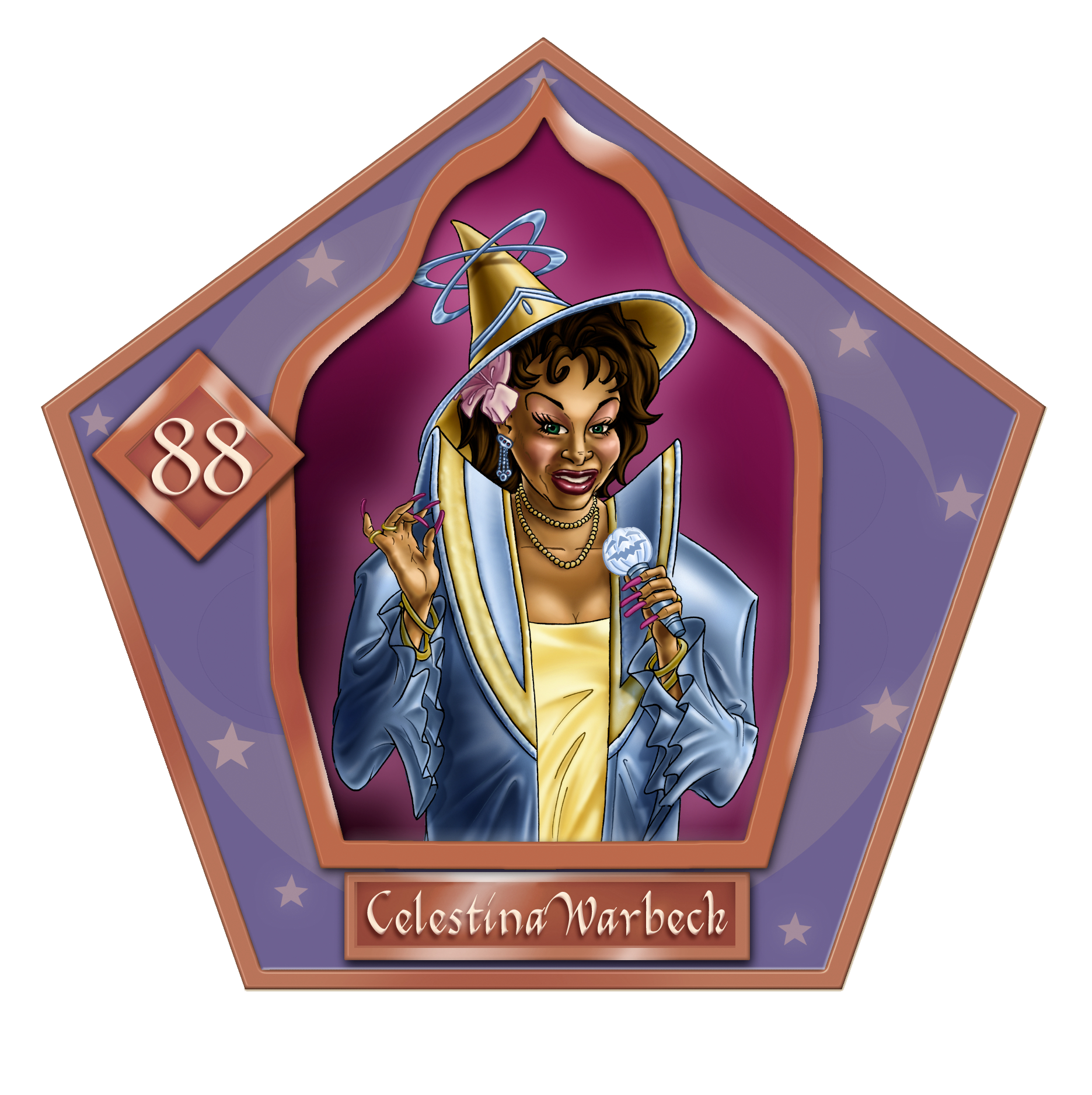
#88 - Celestina Warbeck
A Welsh witch and popular singer known as "The Singing Sorceress"
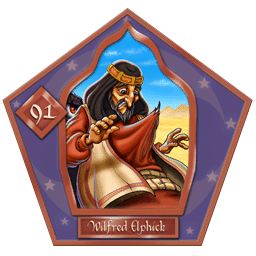
#91 - Wilfred Elphick
The first wizard to be gored by an African erumpent, which is an extremely unlikely event, given the fact that the horn of an erumpent almost always explodes on contact, due to the fluid it contains
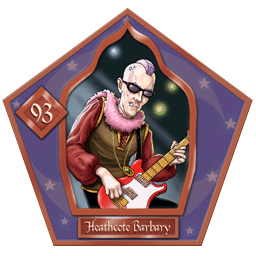
#93 - Heathcote Barbary
A wizard and the rhythm guitarist for the popular wizarding band The Weird Sisters
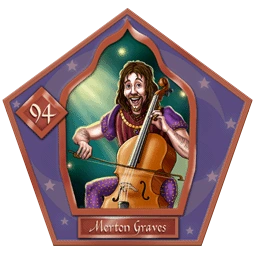
#94 - Merton Graves
A wizard and the cellist for the popular wizarding band The Weird Sisters

#95 - Yardley Platt
An infamous Dark wizard who was known for being a serial goblin killer
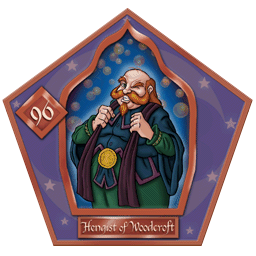
#96 - Hengist of Woodcroft
A medieval English wizard best known as the founder of the village of Hogsmeade
Silver Cards
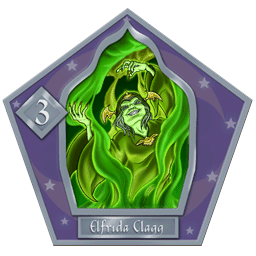
#3 - Elfrida Clagg
A British witch and the Chieftainess of the Wizards' Council either in the fourteenth or seventeenth century
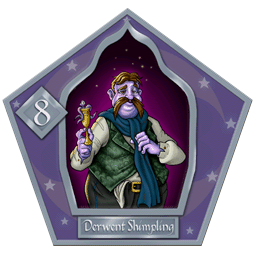
#8 - Derwent Shimpling
A wizarding comedian who once ate an entire Venomous Tentacula on a bet. Though he survived, his skin was left purple
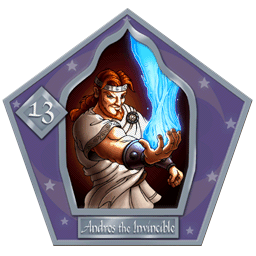
#13 - Andros the Invincible
A celebrated Ancient Greek wizard who, reportedly, was able to conjure a Patronus of giant size
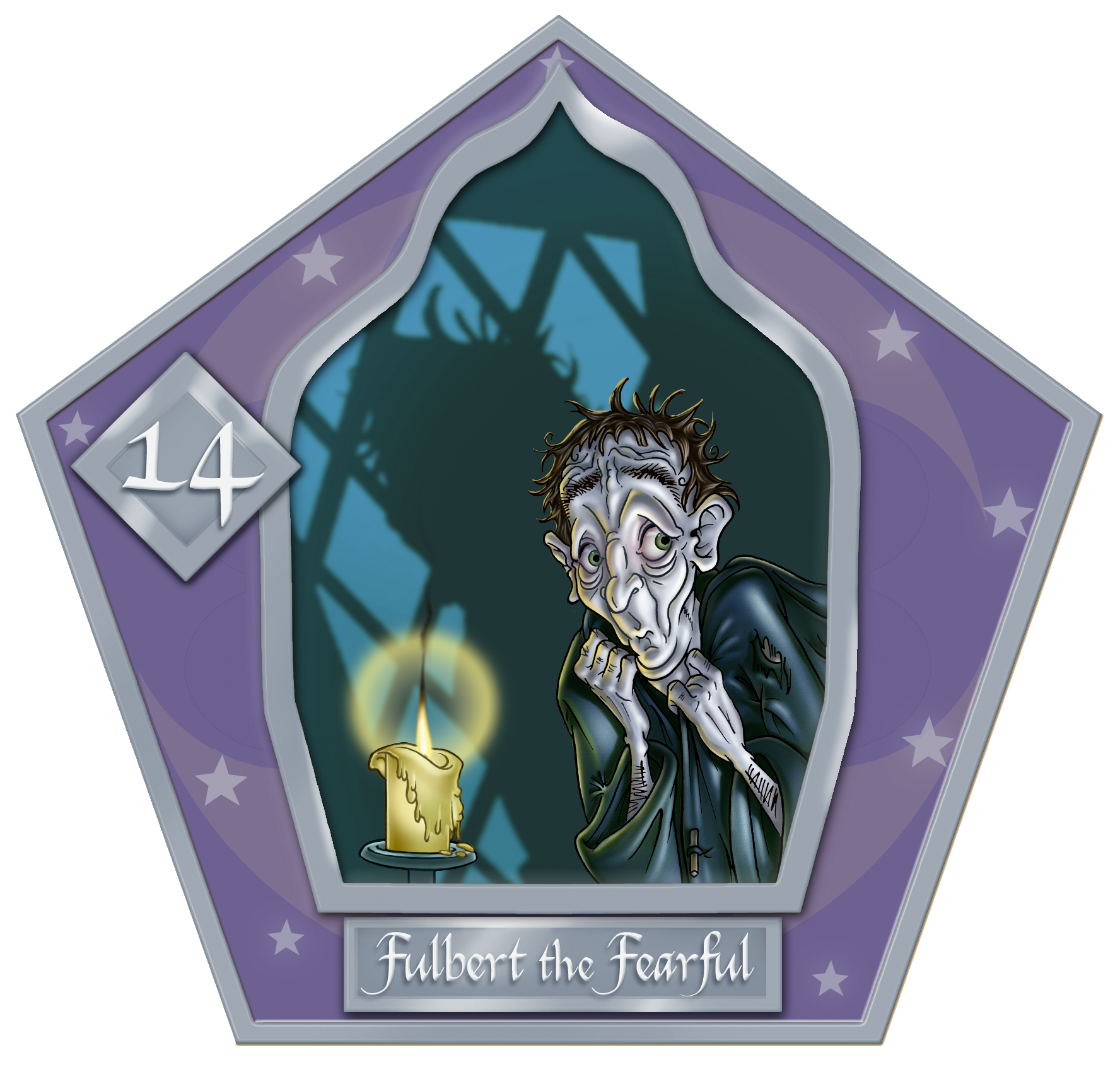
#14 - Fulbert the Fearful
A wizard who was famous for being so cowardly that he never ventured out of his house
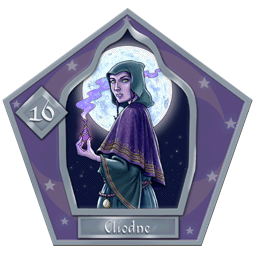
#16 - Cliodna (Cliodne)
A famous medieval Irish witch and druidess
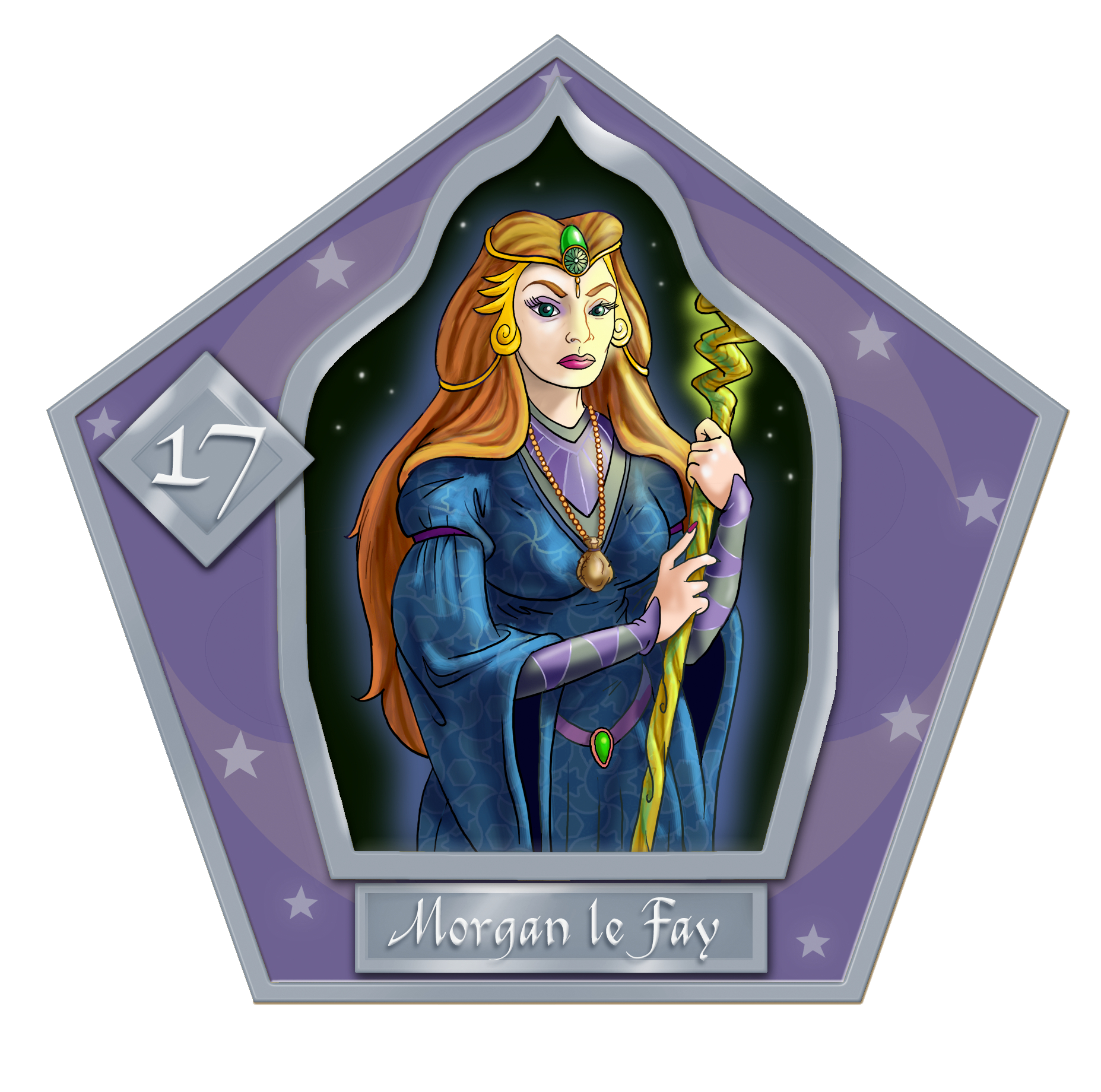
#17 - Morgan le Fay (Morgana)
A medieval dark witch, famous for being the enemy of the legendary wizard Merlin and the half-sister of King Arthur
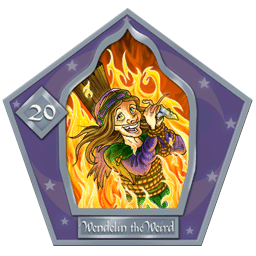
#20 - Wendelin the Weird
An eccentric British medieval witch who was famous for being burnt at the stake no less than forty-seven times in various disguises
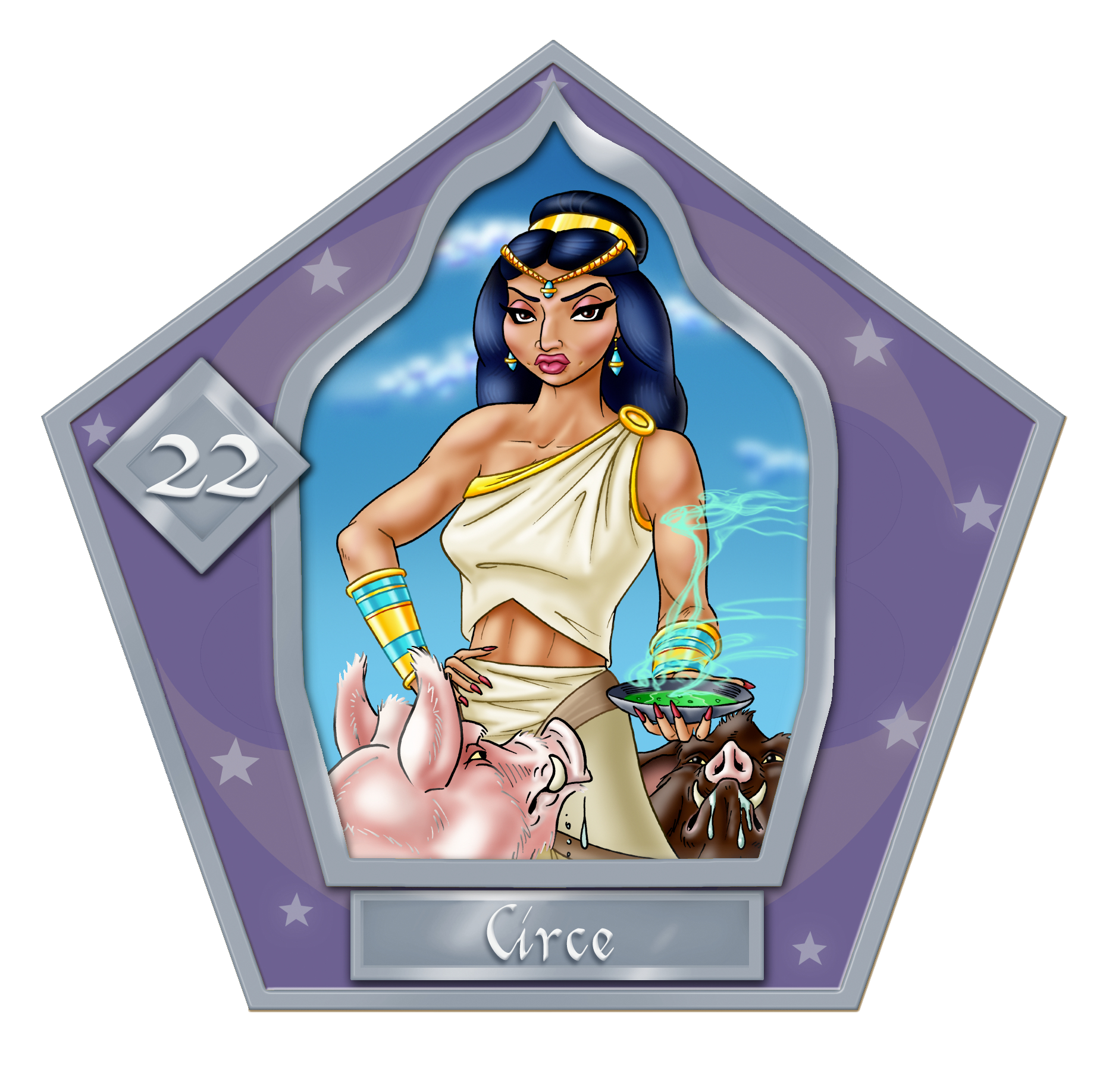
#22 - Circe
A witch who lived in ancient Greece on an island referred to as Circe's Island. She enjoyed transfiguring lost sailors into animals
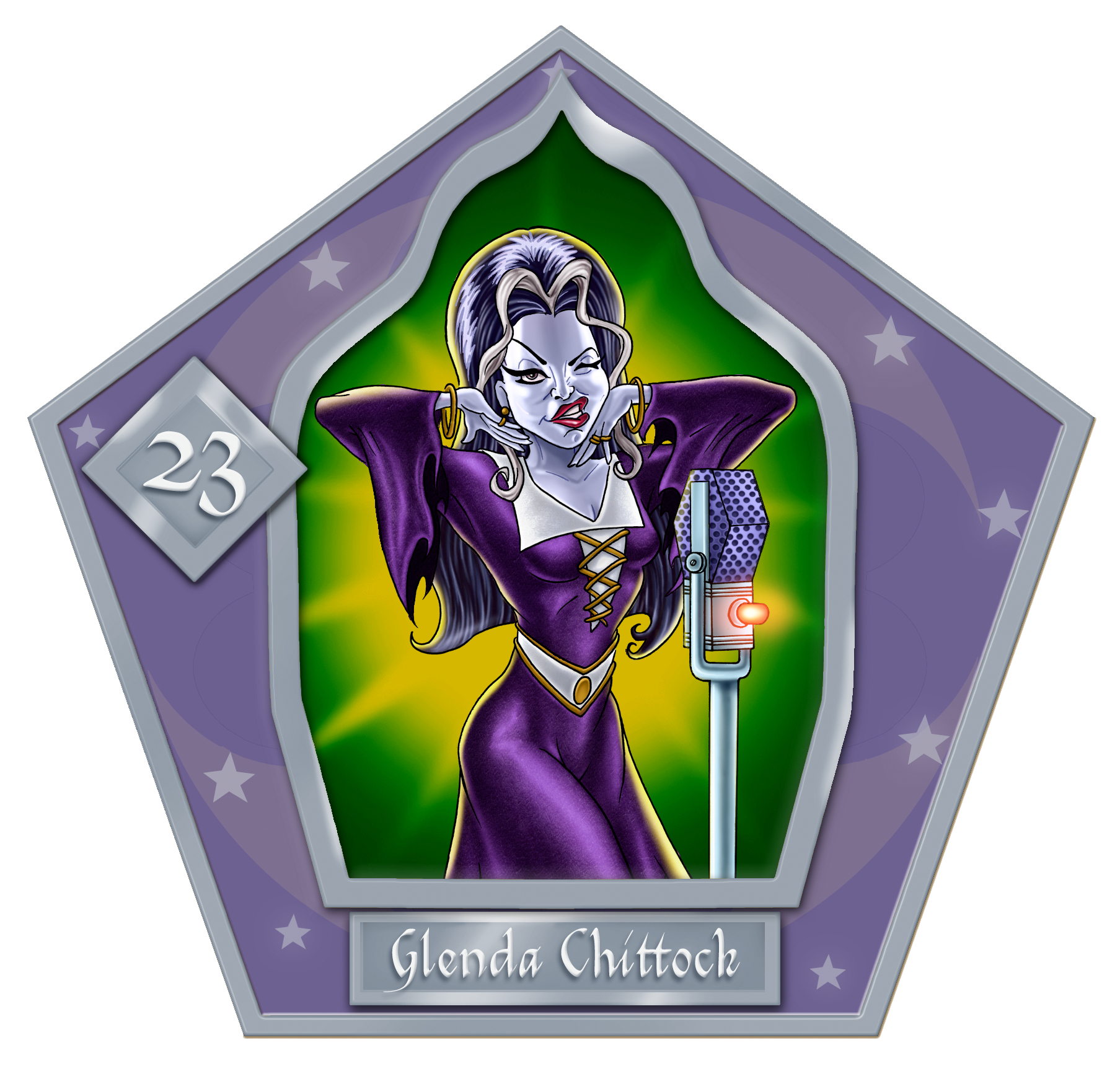
#23 - Glenda Chittock
A British witch who was host of the Wizarding Wireless Network programme, Witching Hour
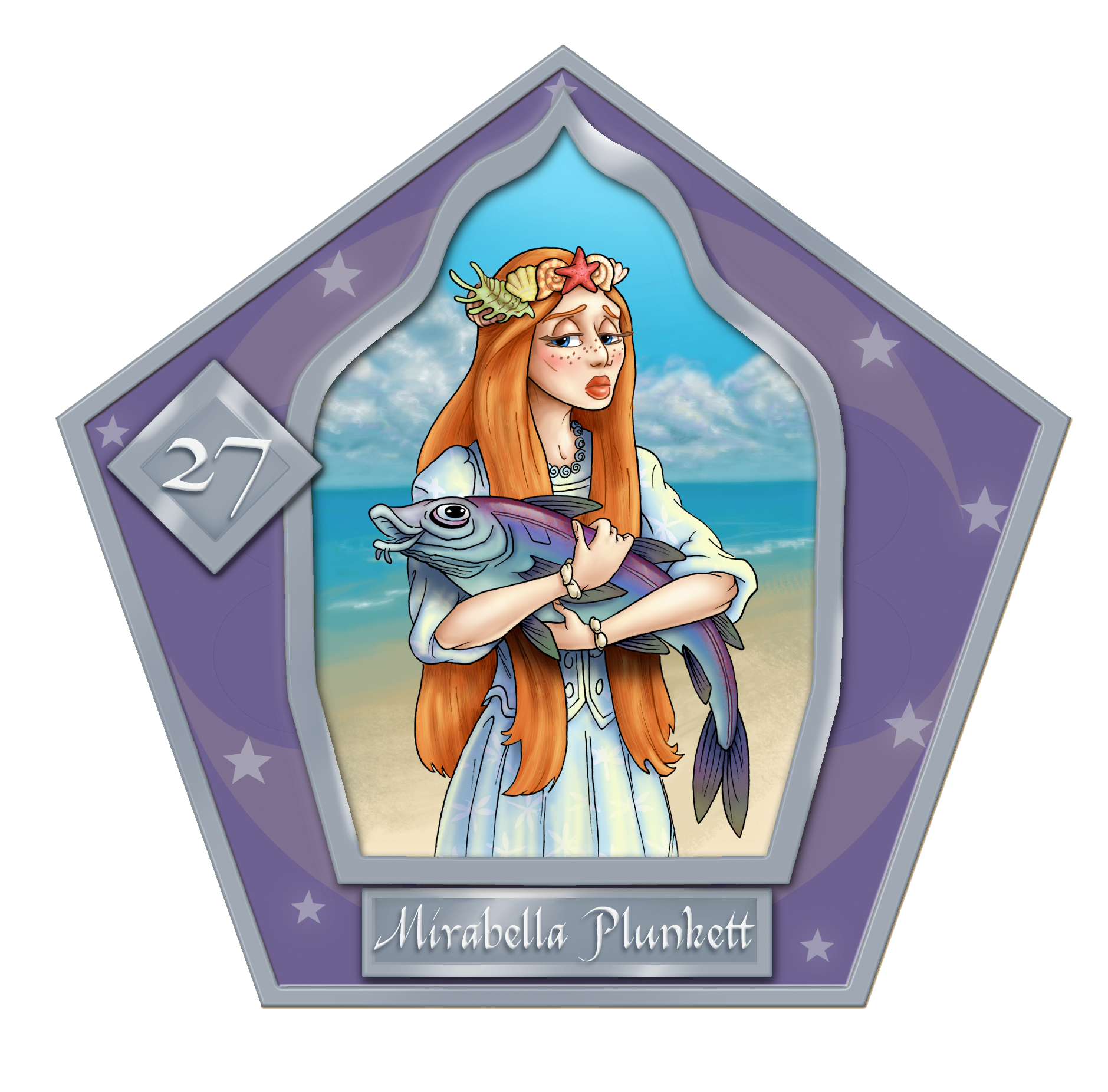
#27 - Mirabella Plunkett
A British witch famous for falling in love with a merman in Loch Lomond while on holiday. After her parents forbade her to marry him, she transfigured herself into a haddock and was never seen again
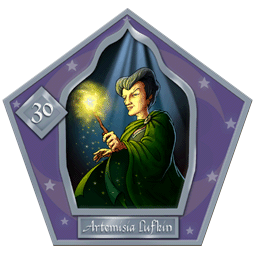
#30 - Artemisia Lufkin
The first witch to serve as Minister for Magic for Great Britain
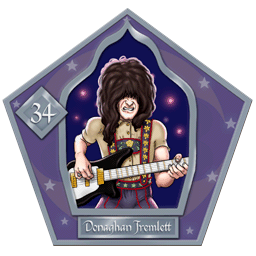
#34 - Donaghan Tremlett
A Muggle-born wizard who played bass for the popular wizarding band, The Weird Sisters
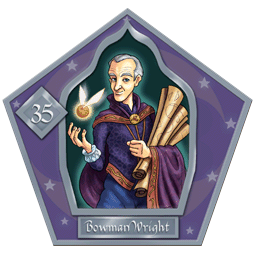
#35 - Bowman Wright
A half-blood wizard and a skilled metal charmer who lived in Godric's Hollow sometime during the Middle Ages
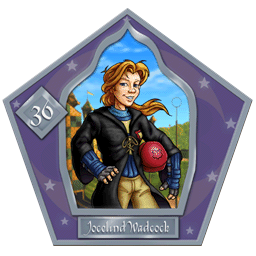
#36 - Joscelind Wadcock
A British witch who played as a Chaser for the Puddlemere United Quidditch team. The record-holder for highest number of Quidditch goals in the British League during the 20th century
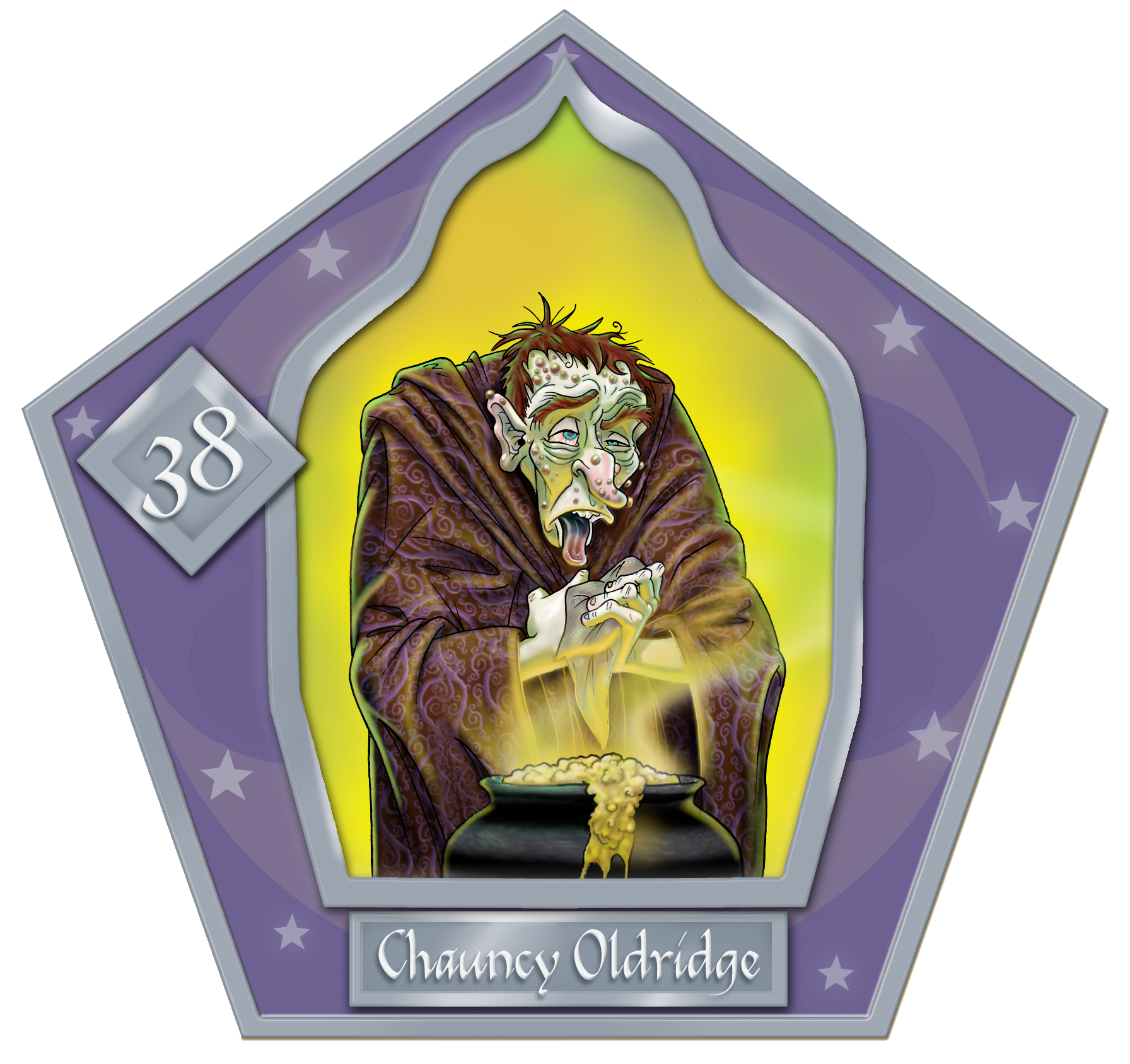
#38 - Chauncey Oldridge
The first known victim of Dragon Pox
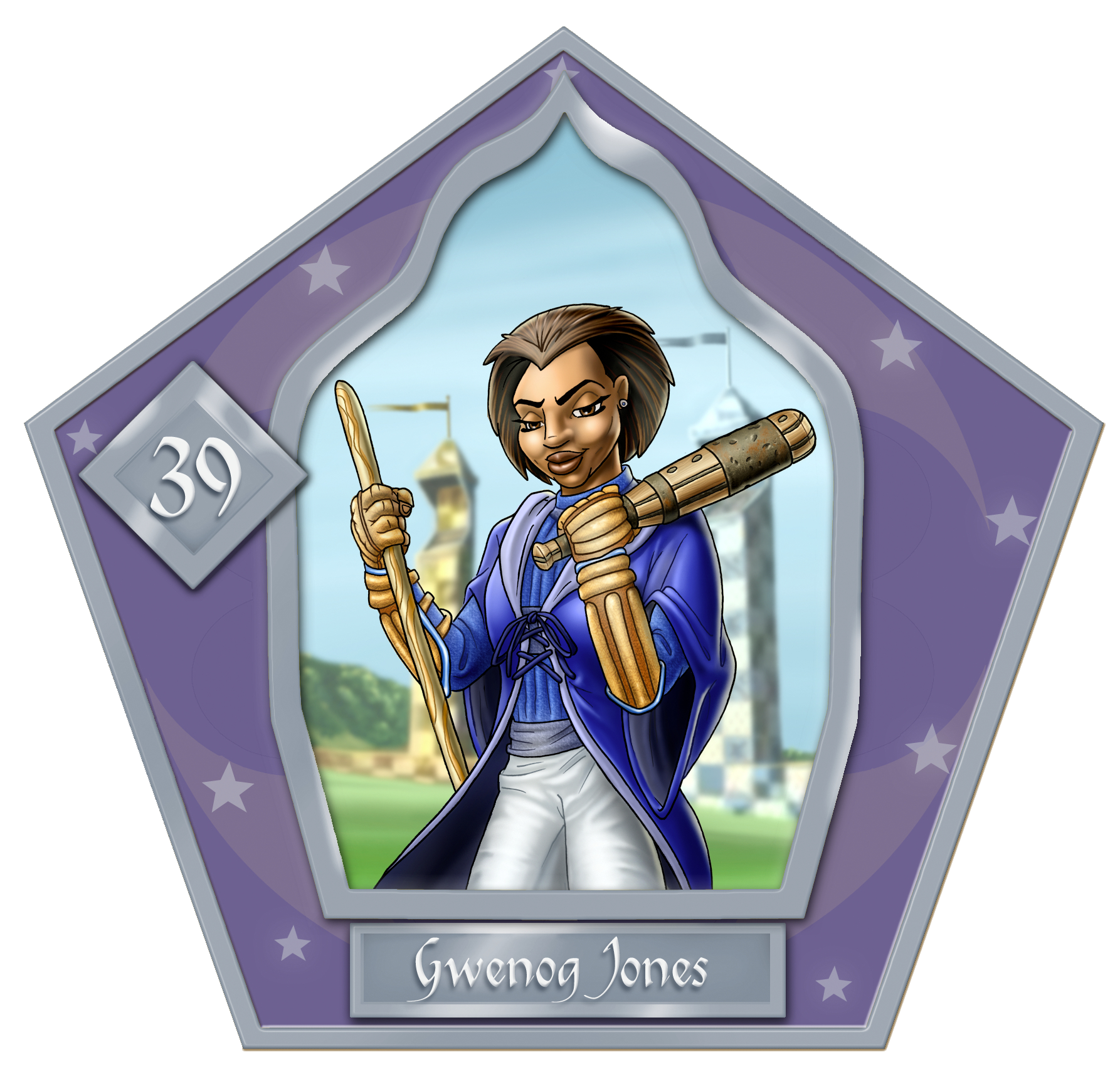
#39 - Gwenog Jones
A professional Quidditch player who later achieved fame as the captain and beater of the Welsh all-female Quidditch team, the Holyhead Harpies
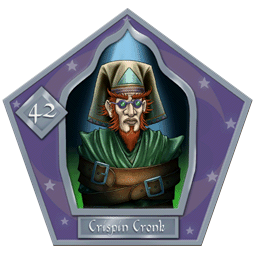
#42 - Crispin Cronk
An Egyptophile British wizard who insisted on keeping several sphinxes in his backyard
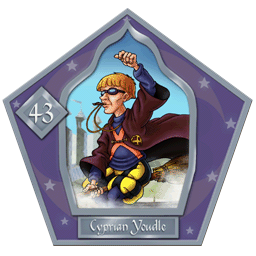
#43 - Cyprian Youdle
An English wizard and Quidditch referee from Norfolk, the only known referee to have been killed during a Quidditch match
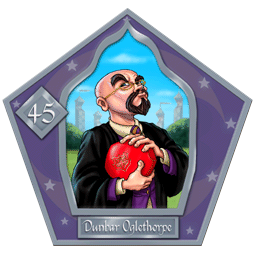
#45 - Dunbar Oglethorpe
A British wizard who served as the Chief of the Quidditch Union for the Administration and Betterment of the British League and its Endeavours
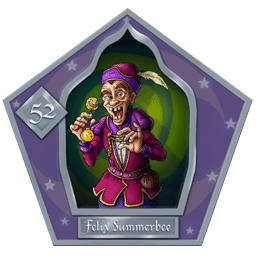
#52 - Felix Summerbee
A wizard who invented the Cheering Charm
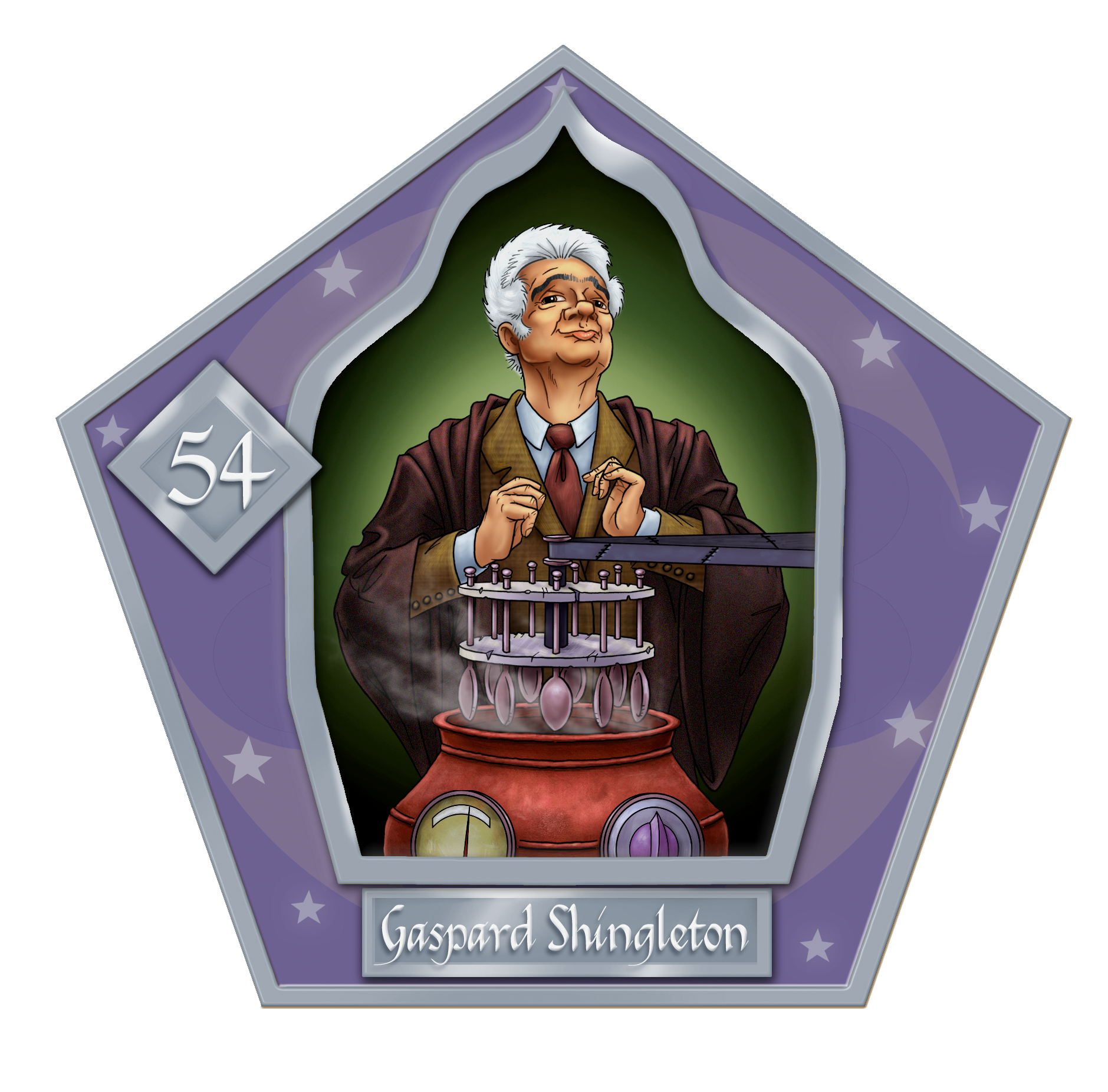
#54 - Gaspard Shingleton
A wizarding inventor who first devised the Self-Stirring Cauldron
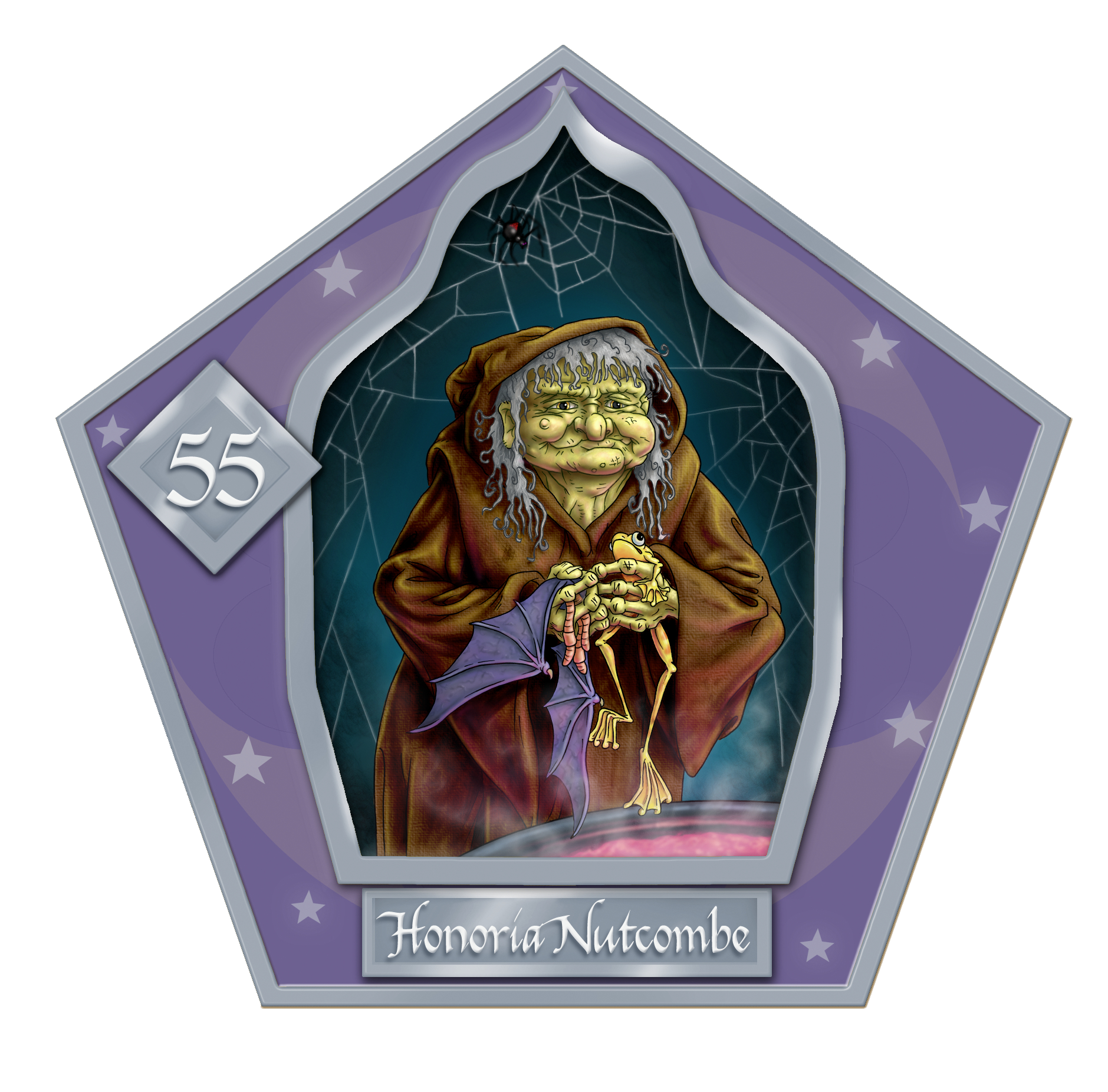
#55 - Honoria Nutcombe
A witch who founded of the Society for the Reformation of Hags
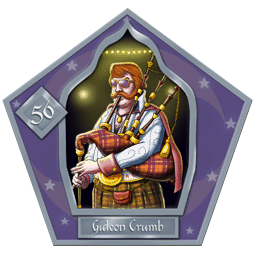
#56 - Gideon Crumb
A wizard who played bagpipes for the popular wizarding band, The Weird Sisters
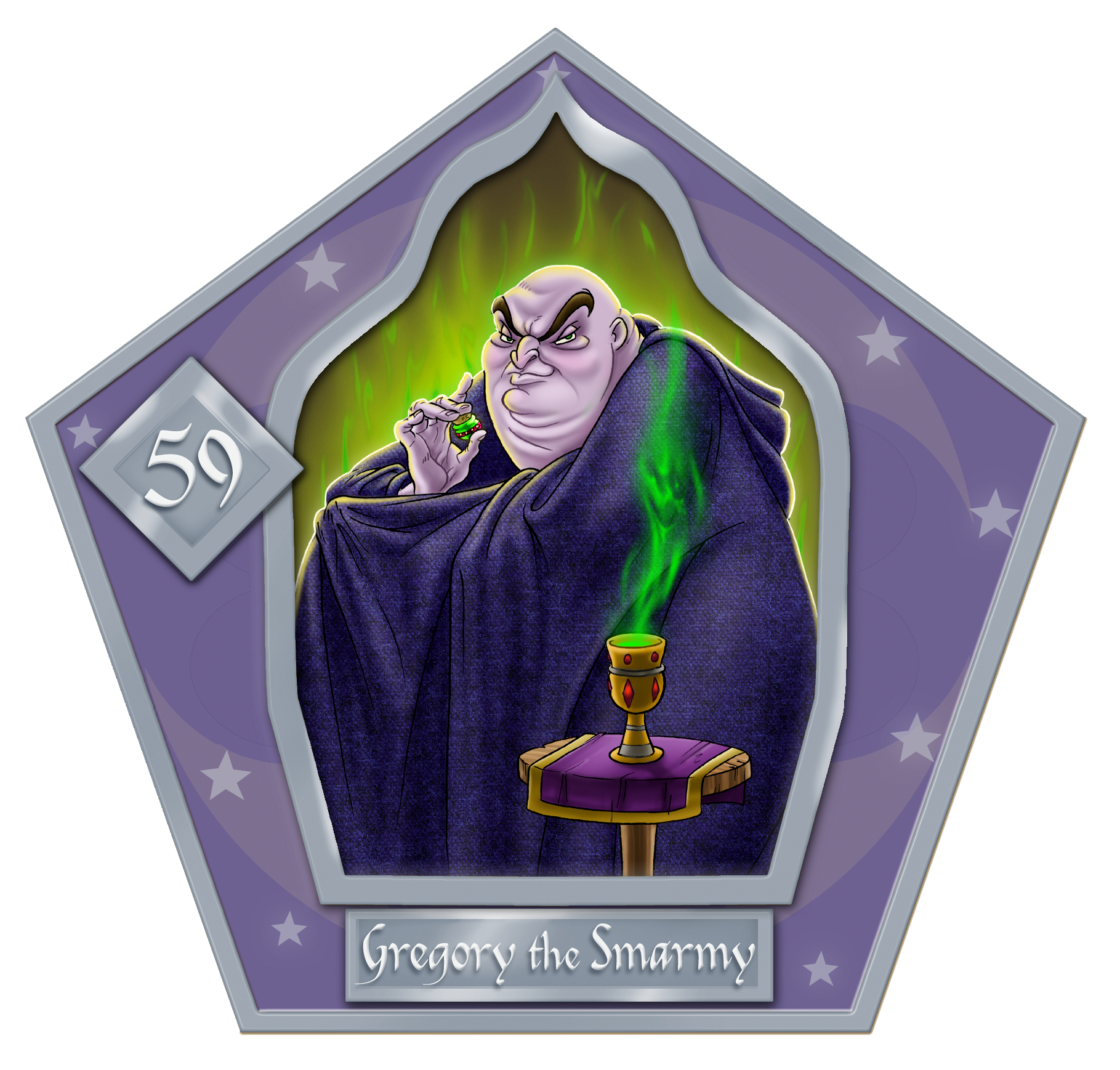
#59 - Gregory the Smarmy
A medieval British wizard and Potioneer who invented Gregory's Unctuous Unction, a potion that makes the drinker believe whomever gave the potion is his or her best friend
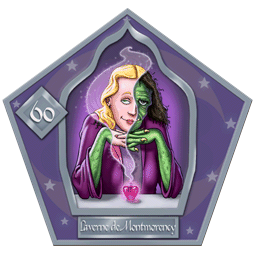
#60 - Laverne de Montmorency
A nineteenth-century potioneer who invented a number of love potions
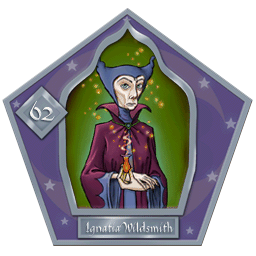
#62 - Ignatia Wildsmith
A witch and wizarding inventor who was famously the creator of Floo Powder
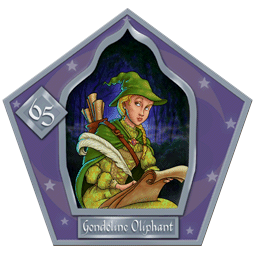
#65 - Gondoline Oliphant
A British witch made famous for studying the life and habits of trolls
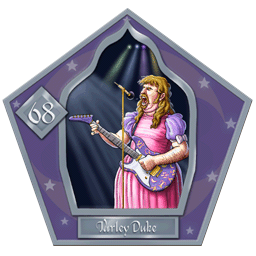
#68 - Kirley Duke
A British wizard and the lead guitarist for the popular band, The Weird Sisters, and one of its first three members
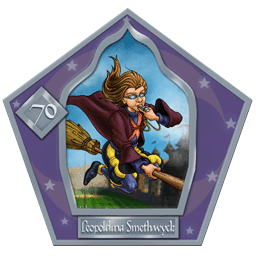
#70 - Leopoldina Smethwyck
A British witch who was well known for her career as a Quidditch referee
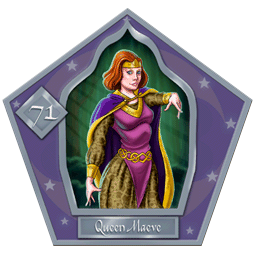
#71 - Queen Maeve
A famous Irish witch who lived during the Middle Ages
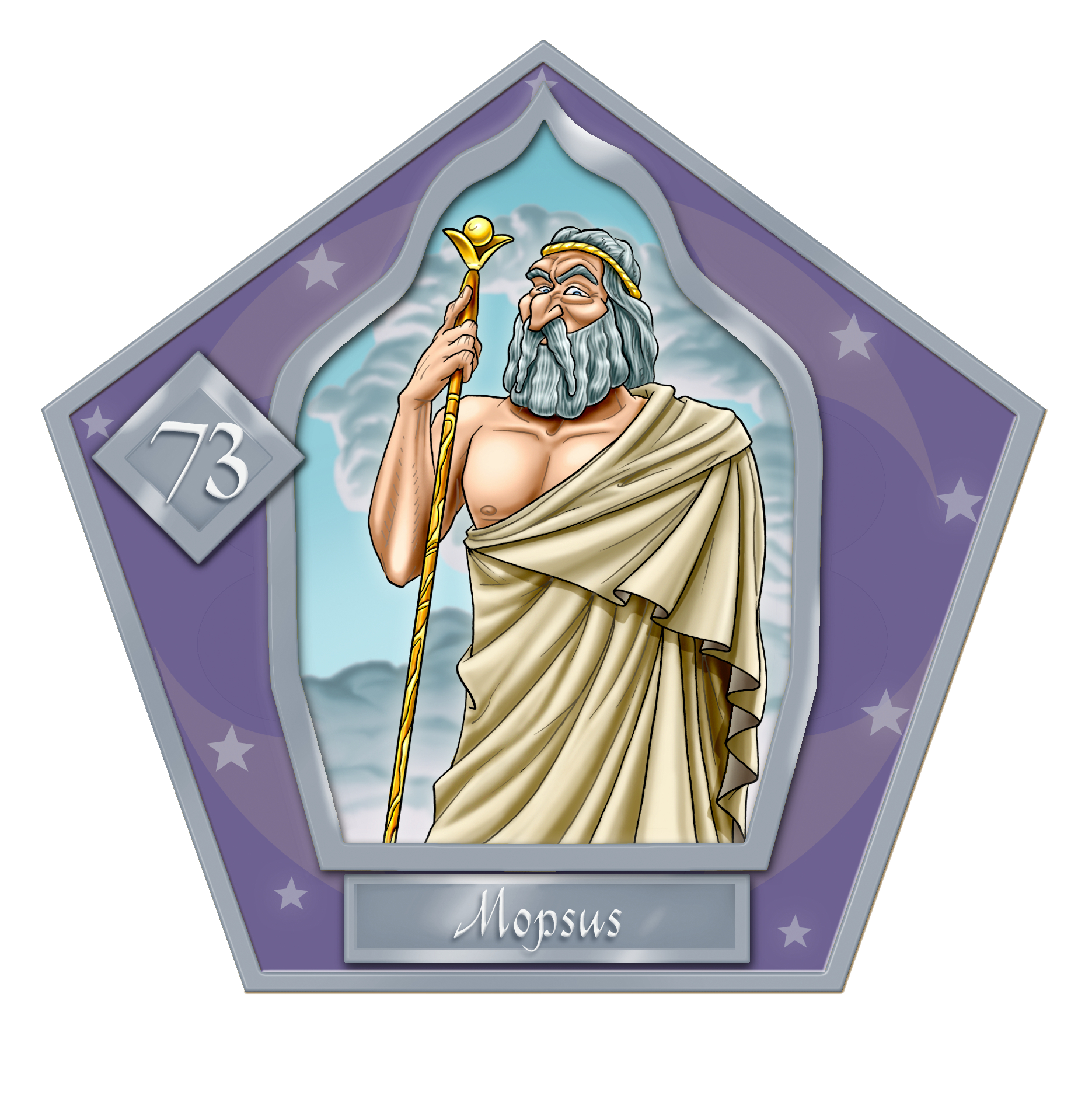
#73 - Mopsus
A blind Seer whose power was great enough for him to accurately predict future events
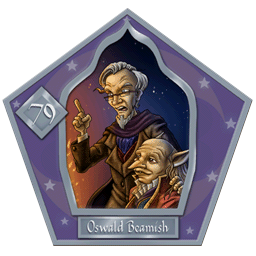
#79 - Oswald Beamish
A wizarding activist and a pioneer of goblin rights

#85 - Blenheim Stalk
A wizard and author who was a well-known expert on muggles
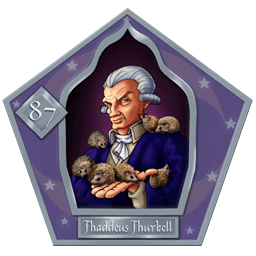
#87 - Thaddeus Thurkell
A wizard who fathered seven sons who were all squibs. He transfigured them into hedgehogs out of disgust
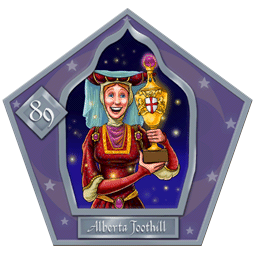
#89 - Alberta Toothill
An English medieval witch and duellist who, defying all odds, won the All-England Wizarding Duelling Competition of 1430
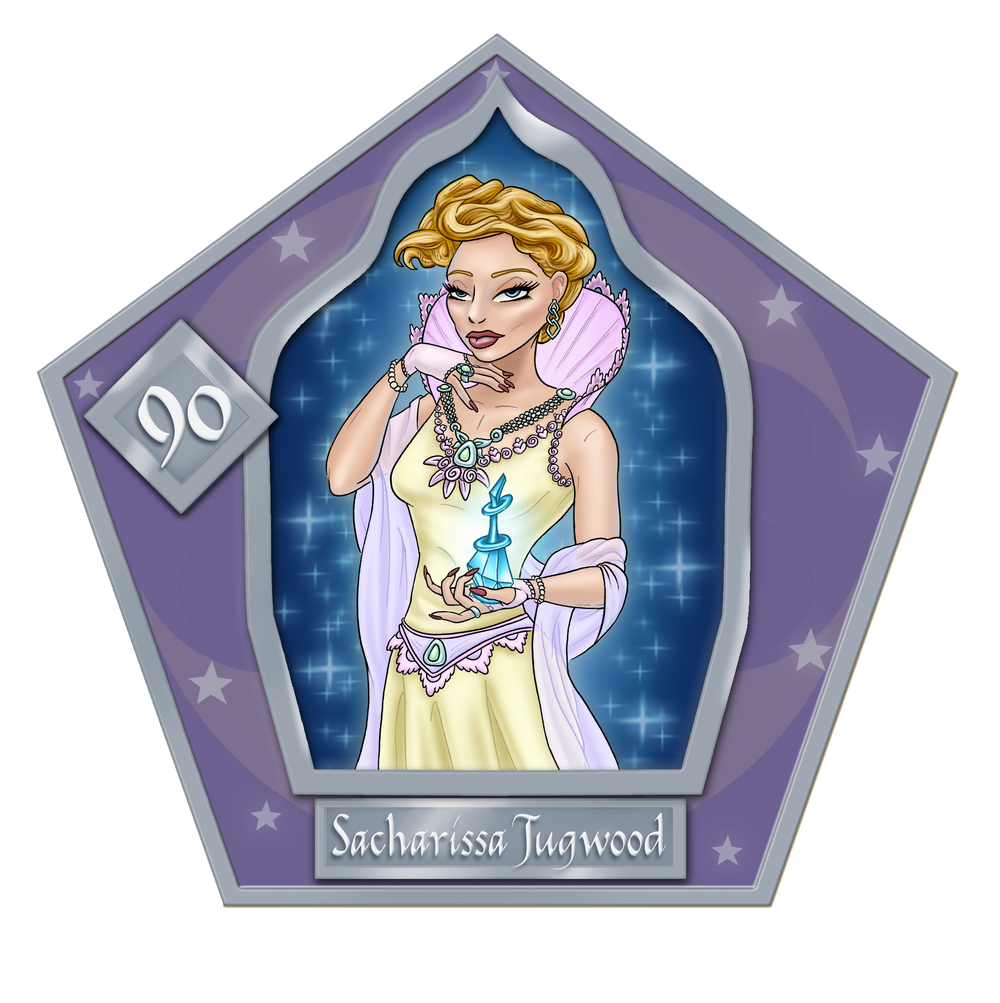
#90 - Sacharissa Tugwood
A famous Potioneer and the first witch to use beauty potions, having developed quite a few of them herself
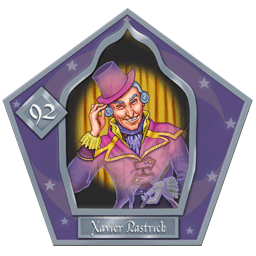
#92 - Xavier Rastrick
A lively wizard entertainer who is famous for unexpectedly vanishing during a performance in Painswick before the very eyes of his audience, never to be seen again
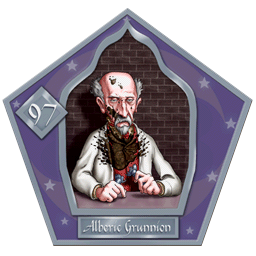
#97 - Alberic Grunnion
A nineteenth century wizard inventor who developed the dungbomb, a magical stink bomb that gives off a putrid odor
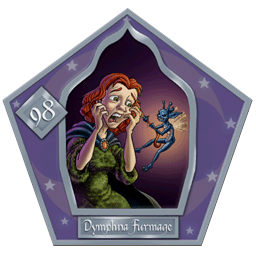
#98 - Dymphna Furmage
A British witch who famously campaigned for the destruction of pixies after being abducted by them while holidaying in Cornwall
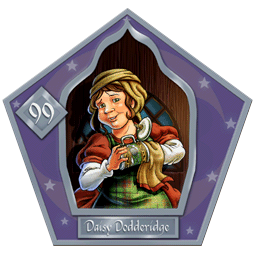
#99 - Daisy Dodderidge
The witch who built the Leaky Cauldron in a successful attempt to create a gateway between the muggle and wizarding worlds
Gold Cards
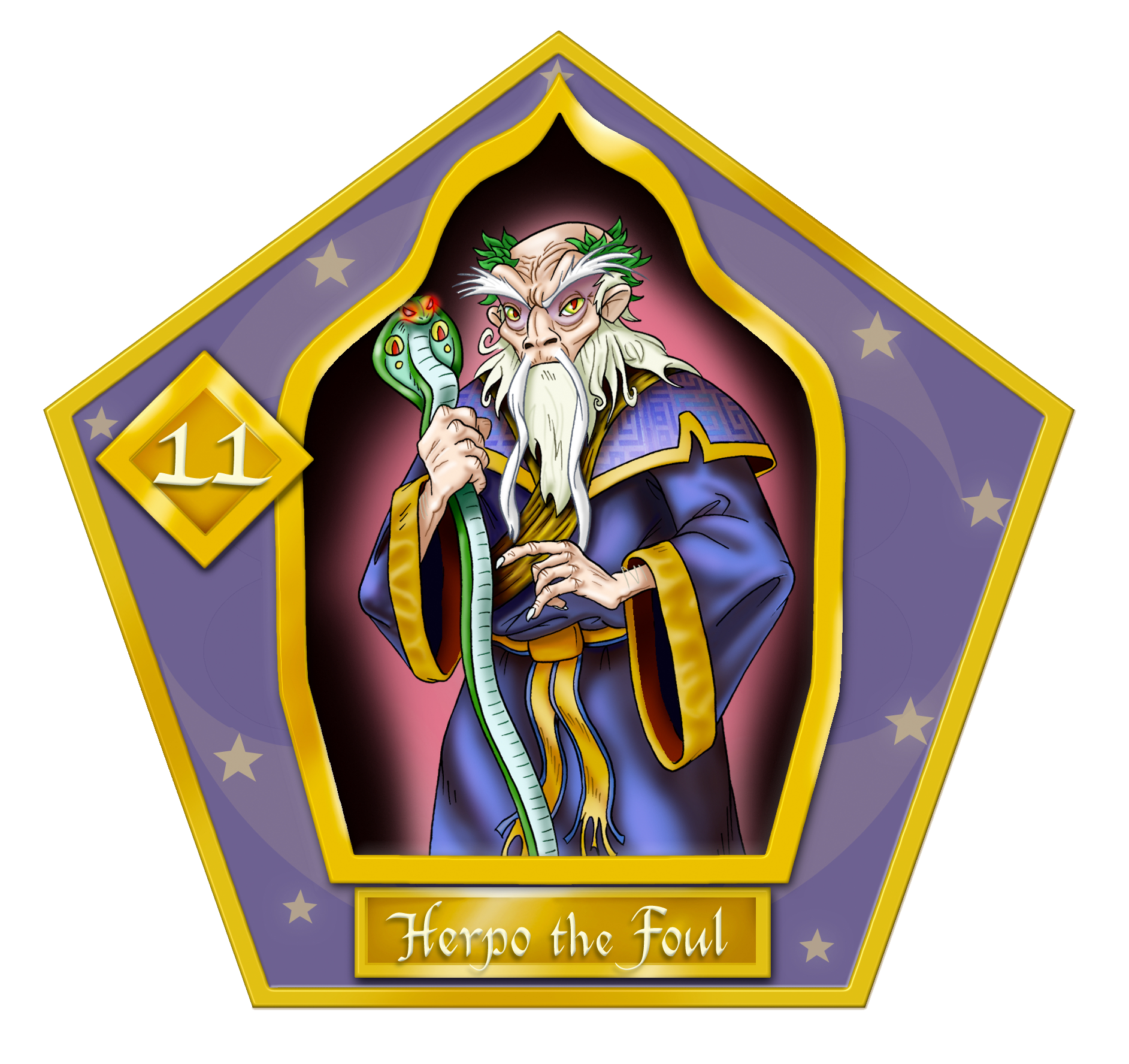
#11 - Herpo the Foul
An ancient Greek Dark wizard, infamous for being a pioneer the field of the Dark Arts, becoming the first known wizard to create the Basilisk, in addition to the first known Horcrux
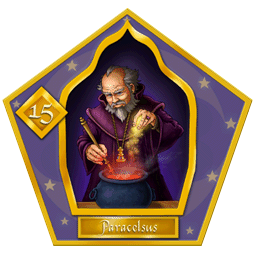
#15 - Paracelsus
A wizard and alchemist about whom very little is known, but was credited with the discovery of Parseltongue
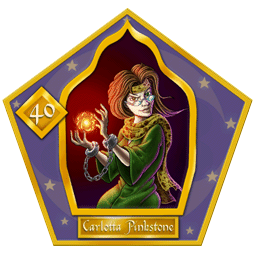
#40 - Carlotta Pinkstone
A British witch who famously advocated for the repeal of the International Statute of Wizarding Secrecy
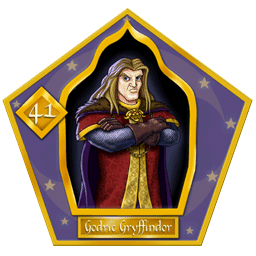
#41 - Godric Gryffindor
An English wizard and one of the four founders of Hogwarts School of Witchcraft and Wizardry
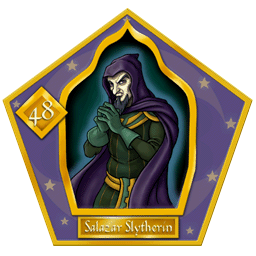
#48 - Salazar Slytherin
An English pure-blood wizard and one of the four founders of Hogwarts School of Witchcraft and Wizardry, skilled in Parseltongue
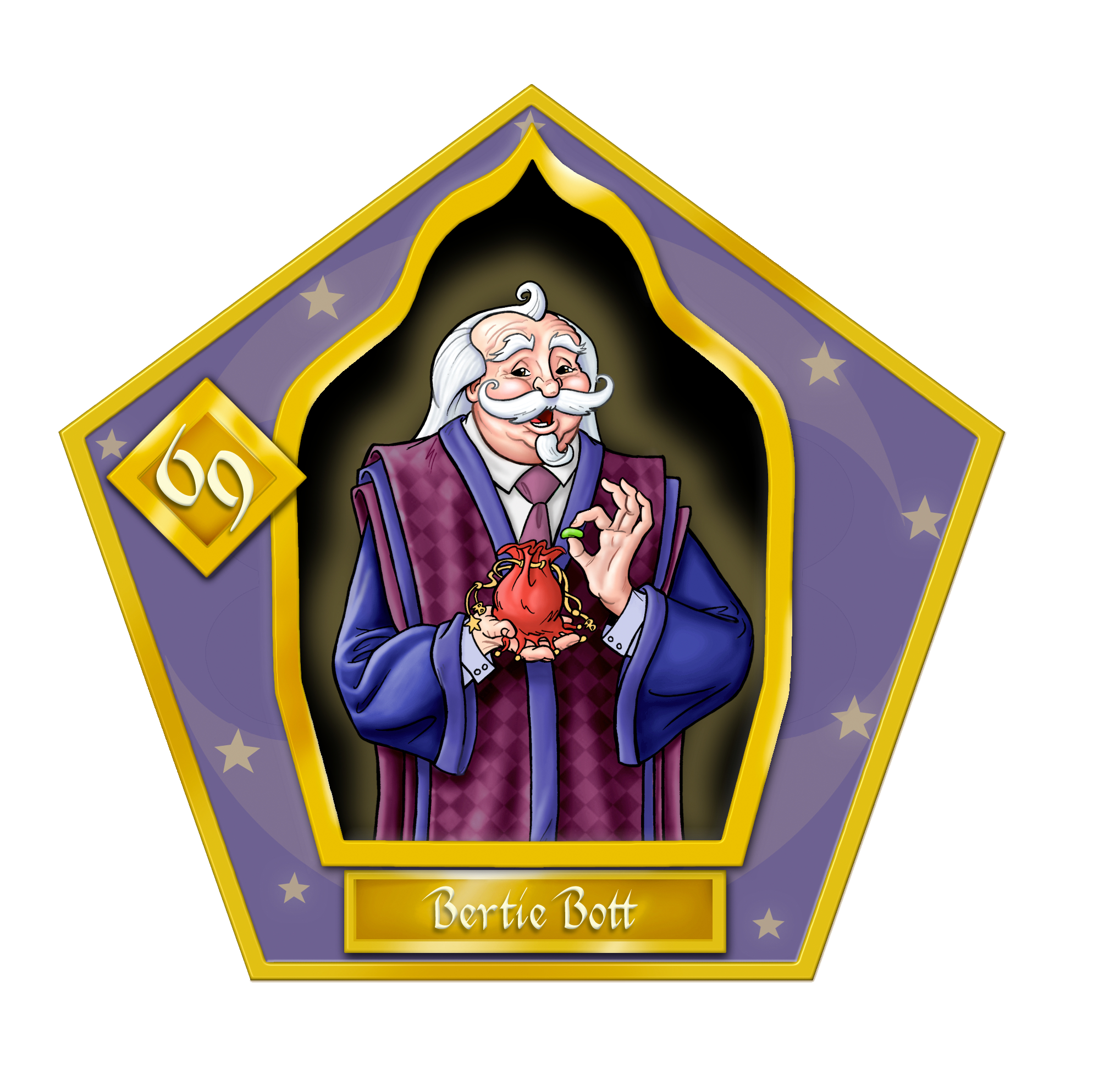
#69 - Bertie Bott
A wizarding confectioner, who accidentally created Bertie Bott's Every Flavour Beans
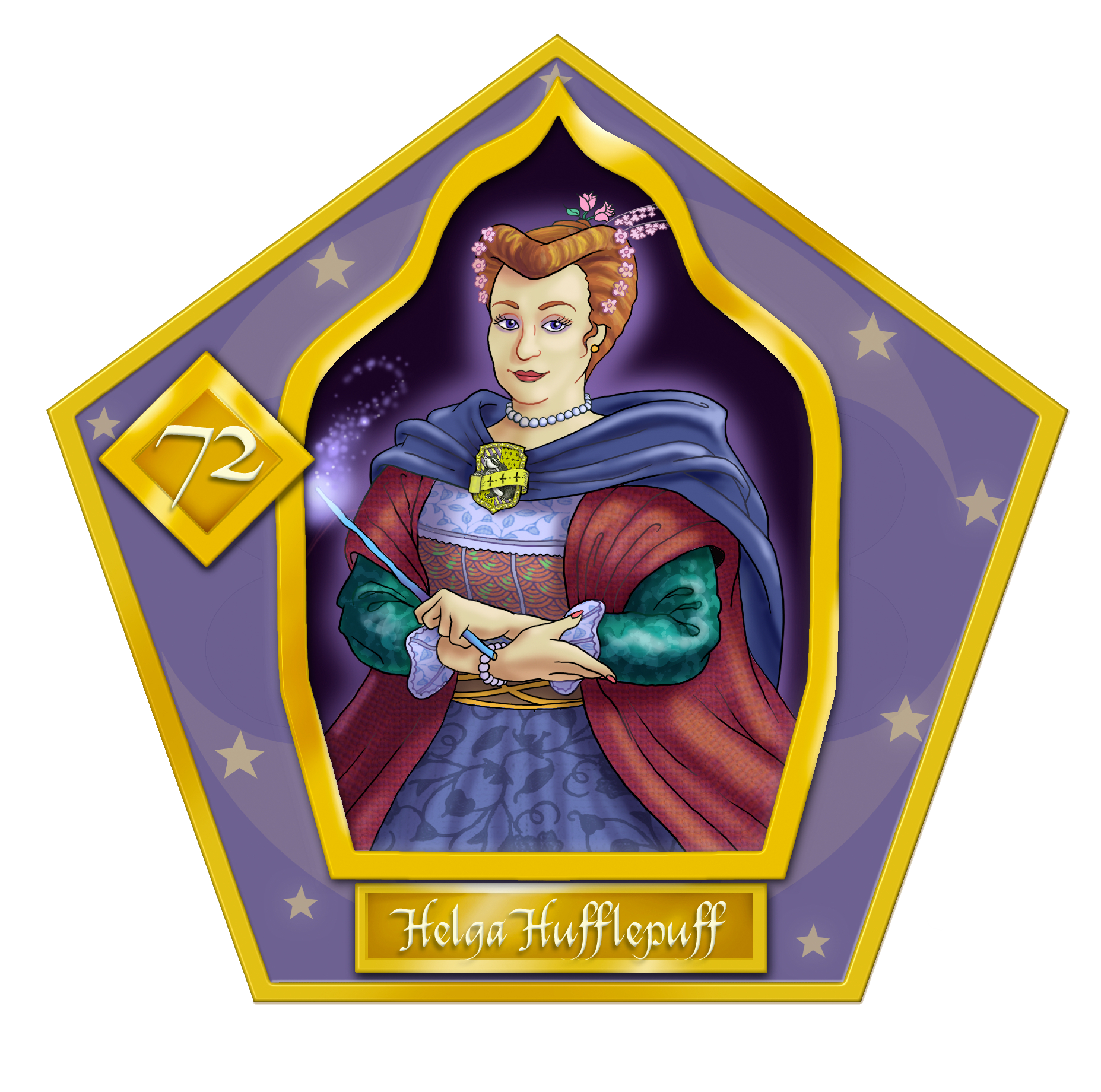
#72 - Helga Hufflepuff
A Welsh witch and was one of the four founders of Hogwarts School of Witchcraft and Wizardry
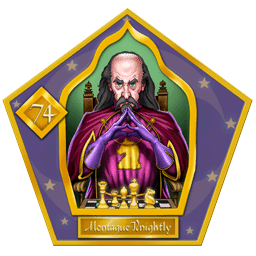
#74 - Montague Knightley
A professional Wizard's Chess player. During his career, he eventually became the Wizard's Chess Champion
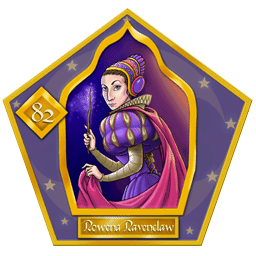
#82 - Rowena Ravenclaw
A Scottish witch and one of the four founders of Hogwarts School of Witchcraft and Wizardry
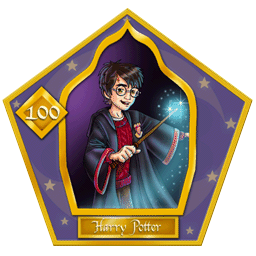
#100 - Harry Potter
An English half-blood wizard, one of the most famous wizards of modern times
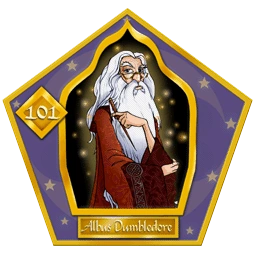
#101 - Albus Dumbledore
An English half-blood wizard, who was the Defence Against the Dark Arts professor, later the Transfiguration professor, and later Headmaster of Hogwarts School of Witchcraft and Wizardry
Glossary
A
Alchemy
A medieval forerunner of chemistry, alchemy was developed out of experiments to find a method of turning base metals into gold, and of making an elixir of life that would prolong life indefinitely. A very advanced and complex topic that requires in-depth knowledge about the nature of magic and the four basic elements: earth, air, fire, and water.
Apparate
To apparate is to magically teleport a limited distance, creating a loud crack or pop whenever used. Apparition requires a licence from the Department of Magical Transportation, which can only be issued to those seventeen and over. Disapparition is the word to describe when a person disappears, leaving by apparating.
Arithmancy
Ancient study of the magical properties of numbers. Arithmancy is often needed in the modification or creation of spells, a very dangerous practice.
Auror
Professional Dark wizard catcher and the equivalent to a Muggle detective or special agent. To become an Auror, a witch or wizard must gain at least five N.E.W.T.s with grades no lower than 'Exceeds Expectations' in subjects including: Defence Against the Dark Arts, Potions, Transfiguration, and Charms; pass stringent character and aptitude tests at the Ministry of Magic's Auror office, then do three years of Auror training.
Azkaban
Island prison fortress where wizarding criminals are sent. Guarded day and night by the terrifying Dementors, who drain peace, hope and happiness out of any human in their vicinity.
B
Basilisk
A Dark creature much like a gargantuan, heavy-bodied snake, measuring up to 50 feet in length when fully grown. Unlike a snake, a basilisk has a full row of fangs, all of which contain the most deadly venom for which there is no antidote. Its yellow eyes will kill any creature that looks directly into them, and petrify (frozen in time, as if turned to stone) anyone who catches an indirect glimpse.
Beauxbatons Academy of Magic (Académie de Magie Beauxbâtons)
A co-ed wizarding school located somewhere in France, often seen as comparable to Hogwarts in quality of education.
Broomstick
One of the most popular forms of wizarding transportation, broomsticks have been bewitched with countless enchantments to facilitate flight, such as a cushioning charm to sit upon, braking charms, and anti-jinx protections. A broomstick is controlled by the rider's grip on the handle, accelerating when squeezed.
Butterbeer
A frothy butterscotch-flavored drink served hot or cold, depending on the weather. Has diminutive alcoholic content, but that has a severe effect on house-elves.
C
Construct
Not a magically animated robot, but rather simply a "living" creature that has been transfigured or conjured into existence. If a rock was transfigured into a dog to distract a dragon, that dog is a construct, meaning it's a materialization of the wizard's concept of a dog. It behaves how the wizard expects a dog to behave. It is an imitation of life and will eventually return to being a rock.
D
The Daily Prophet
The most popular wizarding newspaper in Great Britain.
E
Elves
See house-elf.
Exploding Snap
The wizarding version of the muggle card game of snap, which uses a specifically-enchanted deck that may explode at any time.
F
Floo Powder
Glittering silver powder that allows witches and wizards to travel magically via the Floo Network by throwing the powder into a lit fireplace, stepping into the green flames, and naming their destination. A wizard may also kneel with their head in the green fire to merely communicate with whomever is near the destination fireplace. The Floo Network is managed by the Floo Network Authority under the Department of Magical Transportation, and connects wizarding fireplaces to each other.
G
Ghoul
A magical beast that resembles a slimy, buck-toothed ogre. They tend to live in the attics or barns of wizards and witches. They are relatively harmless creatures and are just seen as nuisances because of the noise they make. They are relatively dimwitted, and live off of bugs and other household pests. At most, they will groan and throw objects.
Giant
Huge humanoid beings with extremely violent and tribalistic tendencies, growing up to 25 feet tall. Although they are intelligent and capable of interacting with other beings (sometimes resulting in part-giants), they almost invariable lose patience and resort to violence.
Gnomes
Very small creatures with leathery skin and large, bald heads like knobbly potatoes. They have horny feet and razor-sharp teeth. They live in holes in gardens and aren't very bright. To de-gnome a garden, grab the gnome by the ankles, swing it in circles until it's dizzy, and throw it as far as you can.
Goblins
Small clever beings with swarthy faces and very long hands and feet, showing some traits of the dwarves of Muggle fiction. Goblins own Gringotts Bank and are responsible for minting wizarding currencies, as well as various metalworks. They have a deep distrust of wizards due to centuries of goblin-wizard conflicts and uprisings. Wizards have historically oppressed goblins and denied them use of wands.
Gobstones
The wizarding version of marbles. The pieces squirt a stinky substance into other players' faces when they lose a point.
H
Half-breed
A perjorative term used against humans with non-human ancestry or particular magical curses, like lycanthropy. Never used in civil conversation.
HM
HM stands for Headmaster or Headmistress, which typically refers to the witch or wizard in charge of Hogwarts. In the context of Wands & Wizards, the HM is the master of the table and runs the game.
House-elf
A very small creature dedicated to manual labor and indentured to a specific wizarding family. House-elves are freed by
Howler
Wizarding letter which, when opened, shrieks and howls at the reader in the deafening voice of the sender. Comes in a red envelope and is usually sent by someone who is very angry.
M
Mudblood
Highly offensive and derogatory term for a muggle-born wizard or witch. Only used by blood purists, who believe that those with ancestry of magical blood are superior.
Muggle duelling
A non-magical physical fight.
N
N.E.W.T.s
Nastily Exhausting Wizarding Tests. Higher level examinations taken at the end of the seventh year at Hogwarts.
O
O.W.L.s
Ordinary Wizarding Levels. Hogwarts standard-level examinations which are taken at the end of the fifth year.
P
Pensieve
Stone basin which enables one to view thoughts and memories, pulled out from one's mind using a wand.
Poltergeist
A humanoid spirit born entirely from mischevious energy. Unlike ghosts, a poltergeist never had a life, has color, and can turn itself invisible.
Portkey
Any object can be bewitched for use as a portkey to teleport witches and wizards away to a prearranged destination the instant they touch it or at a scheduled time. Physical contact must be made to use a portkey. Use of a portkey should be authorised by the Ministry of Magic.
R
Remembrall
Magical glass ball, the size of a large marble, filled with white smoke. The smoke turns to a deep red if there is something you have forgotten to do.
S
Sorcerer
Non-gendered term for a witch or a wizard.
Squib
Someone who, despite being born into a wizarding family, has little or no magical ability. Anti-muggle magic typically doesn't affect them, and they are able to see Dementors. Squibs are often looked down upon and find themselves as rejects trapped in the wizarding world.
U
Unicorn
Mythical white horse-like creature with a golden mane and a golden horn sprouting from the head. Innocent and beautiful creatures. The tail hair and horn can be used in magic. It is considered a monstrous crime to slay a unicorn. Drinking its blood will keep you alive, even when close to death. However, you have killed something pure, and will therefore live a half, cursed life.
Unspeakable
Employee of the Ministry of Magic's Department of Mysteries. Little is known about their workplace, and even less is known about their jobs. They are forbidden from discussing their jobs or disclosing any information about their department, hence the name "Unspeakable."
W
Warlock
A very old term that has two meanings: to describe a wizard of unusually fierce appearance or as a title denoting particular skill or achievement. It originally denoted one learned in duelling and all martial magic or was given as a title to a wizard who had performed feats of bravery (as Muggles are sometimes knighted). It is sometimes incorrectly used as interchangeable with the term "wizard."
Witch
Gender-specific term for a female human with natural magical ability, often referred to as 'magical blood.'
Wizard
Gender-specific term for a male human with natural magical ability, often referred to as 'magical blood.'
Wizarding
An adjective to describe anything that belongs to the magical world.
Wizengamot
The Wizard High Court, consisting of about fifty witches and wizards who wear plum-coloured robes with a silver 'W' worked onto the left-hand breast.
WWN
The Wizarding Wireless Network, a magical radio system that allows wizards to listen to wizarding music and news using a Muggle radio and a wand.
